Top 25 Popular Tourist Attractions in Japan
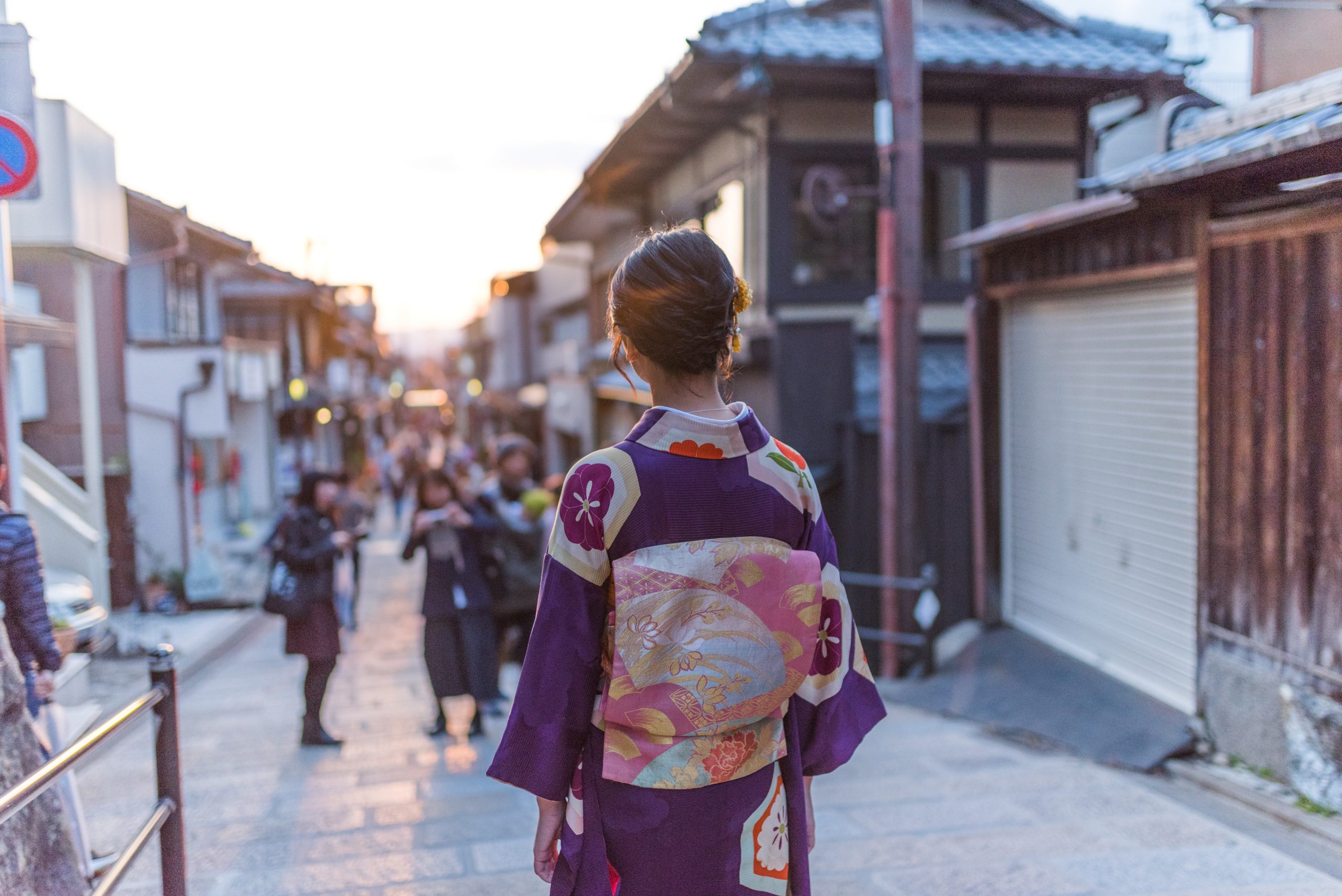
One of the most exciting parts when planning an international trip is deciding where to visit the country. We can help you complete your itinerary smoothly with a comprehensive list of the most popular tourist attractions that will never disappoint you. Here are the 25 best tourist attractions that we recommend in Japan!
Check Out The Most Popular Tour in Tokyo This Month!
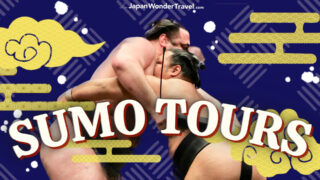

2. Shibuya Crossing
3. yokohama minatomirai, 4. nikko , 5. mt. fuji, 6. shirakawago, 7. snow monkey park, 8. osaka dotonbori, 9. kyoto (fushimi inari), 10. nara park, 11. miyajima, 12. okinawa, 13. animal islands , 14. naoshima, the art island , 15. yakushima , 16. ghibli locations , 17. gaming spots , 18. seto inland sea , 19. sanriku coast , 20. hida takayama , 21. nakasendo , 22. original castles , 23. big buddha statues , 24. unique theme parks , 25. onsen spots near tokyo , japan wonder travel tours , where to stay in japan, other articles you might like.
Sapporo is known as the largest city in Hokkaido with a population of about 2 million people. While it plays a role as a political and economic center, it also boasts a range of tourist attractions and popular spots which attract people from around the world. Sapporo Clock Tower is an iconic landmark with 130 years of history which is designated as a National Important Cultural Property. Goryokaku refers to a historical spot featuring a star-shaped fort located in a peaceful park known as a popular cherry blossom viewing spot in spring. Susukino is a lively drinking district that offers a range of entertaining experiences as well as a number of Izakaya bars. Sapporo Snow Festival is a symbolic annual festival held in February that fascinates visitors with incredible exhibitions of ice sculptures! Don’t forget to try fresh seafood and local specialties, including high-quality crabs and Sapporo Miso ramen!

To enjoy Sapporo to the fullest, take a guided tour! The guide will pick you up at your hotel and you can explore the downtown area with popular tourist spots, the central wholesale market, shrines, and parks! ▶ Book Hokkaido 1-Day Highlight Private Walking Tour

Located in the Shibuya area in Tokyo, Shibuya Crossing is widely known as the busiest crossing in the world. It consists of 5 crossroads that allow pedestrians to come and go in every direction of the crossing. At the busiest time of the day, more than 3,000 people are estimated to cross it at the same time without bumping into each other, which creates an incredible view! Shibuya Scramble Square is a giant shopping complex that features Shibuya Sky , a popular observation deck offering 360-degree views of the iconic crossing as well as the Shibuya district full of skyscrapers!
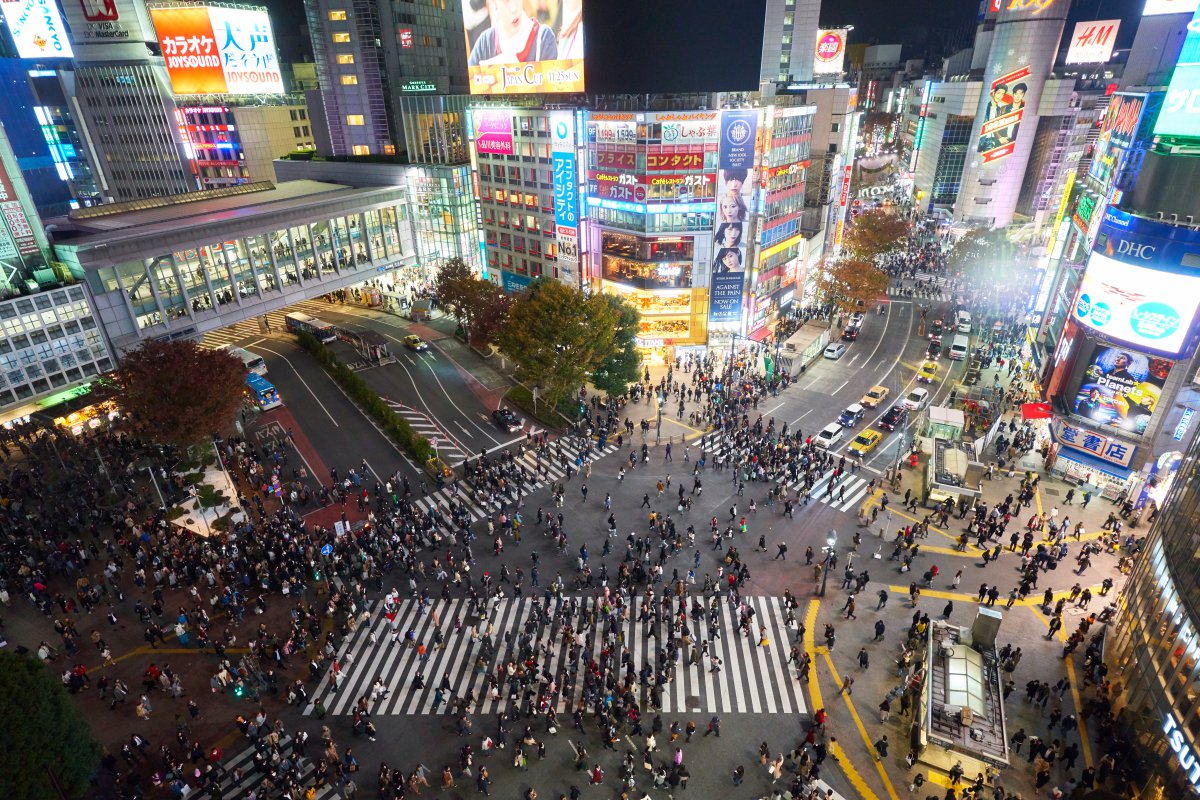
Yokohama Minatomirai refers to a popular sightseeing district in Kanagawa prefecture with a range of commercial complexes and entertaining spots. It plays a role as the economic and shopping center of Yokohama, the second-largest city in Japan by a population which is accessible in less than 30 minutes by train from Tokyo. Visit Yokohama Landmark Tower which offers a spectacular night view of Yokohama city from the observation deck at the elevation of 273 meters. Yokohama Red Brick Warehouse is home to numerous shops and restaurants selling a large variety of products and items perfect for a gift. Head to Cup Noodles Museum to learn the history of instant noodles which originated in Japan through interactive exhibitions. You can also attend noodle-making classes as well as pay extra to design your own noodle cups!
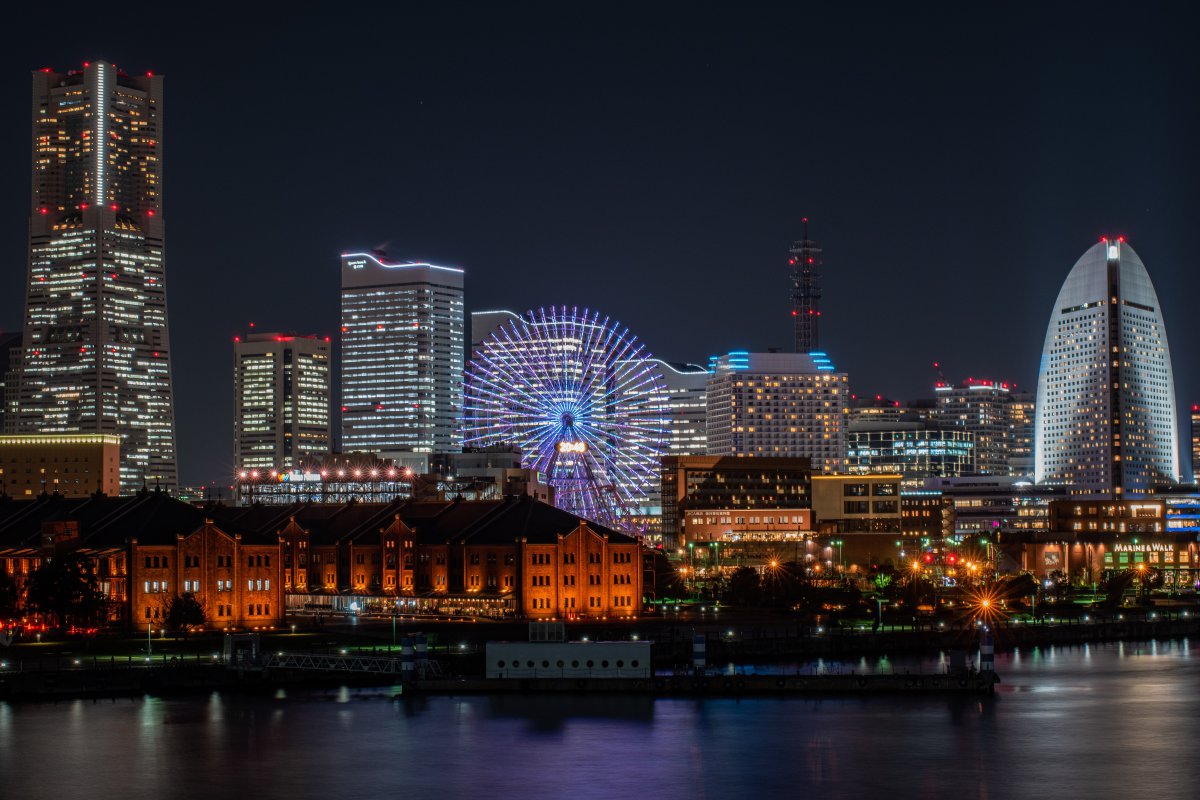
Nikko is a peaceful city nestled in the northwestern part of Tochigi prefecture. From Tokyo, it can be reached in approximately 2 hours by train, making it a perfect weekend trip destination. It is home to Nikko Toshogu , a world-famous Shinto shrine dedicated to Tokugawa Ieyasu. He was the first Shogun of Tokugawa Shogunate which once ruled the entire country for 260 years from the beginning of the 17th century. The original establishment of the shrine dates back to 1617, and it has been visited by numerous tourists as a symbolic structure listed as UNESCO World Heritage Site along with other historical sites in the Nikko area. You can explore the sacred shrine grounds full of magnificent buildings, including 8 National Treasure and 34 Important Cultural Properties. Kegon Falls is another popular spot that offers a refreshing experience in nature with impressive scenery created by the beautiful waterfall and surroundings!
In this tour, you can explore the must-visit spots in Nikko with a knowledgeable guide. Starting from Asakusa in Tokyo, the guide will take you to the World Heritage Site, Lake Chuzenji and Kegon Waterfall, and safely bring you back to Tokyo. If you are planning to make a one day trip to Nikko from Tokyo, book this tour! ▶ Book the Best Nikko Private Walking Tour here
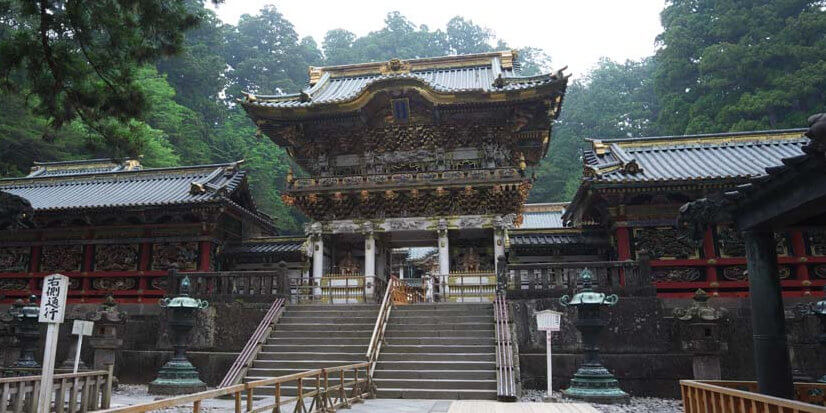
There is no doubt that Mt. Fuji is a must-visit place since it’s a symbolic mountain in Japan. Known as the highest mountain in Japan, it fascinates numerous visitors with its extraordinary beauty and presence. You can enjoy the symbolic peak from a distance, or tackle the exciting hiking trails which allow you to explore the surrounding nature. It also offers a variety of outdoor adventures such as kayaking or boat cruise at scenic lakes called Fuji Five Lakes (”Fujigoko” in Japanese) . BBQ and camping can be other options around there. Recommended: The Ultimate Guide to Japan’s Iconic Mt.Fuji
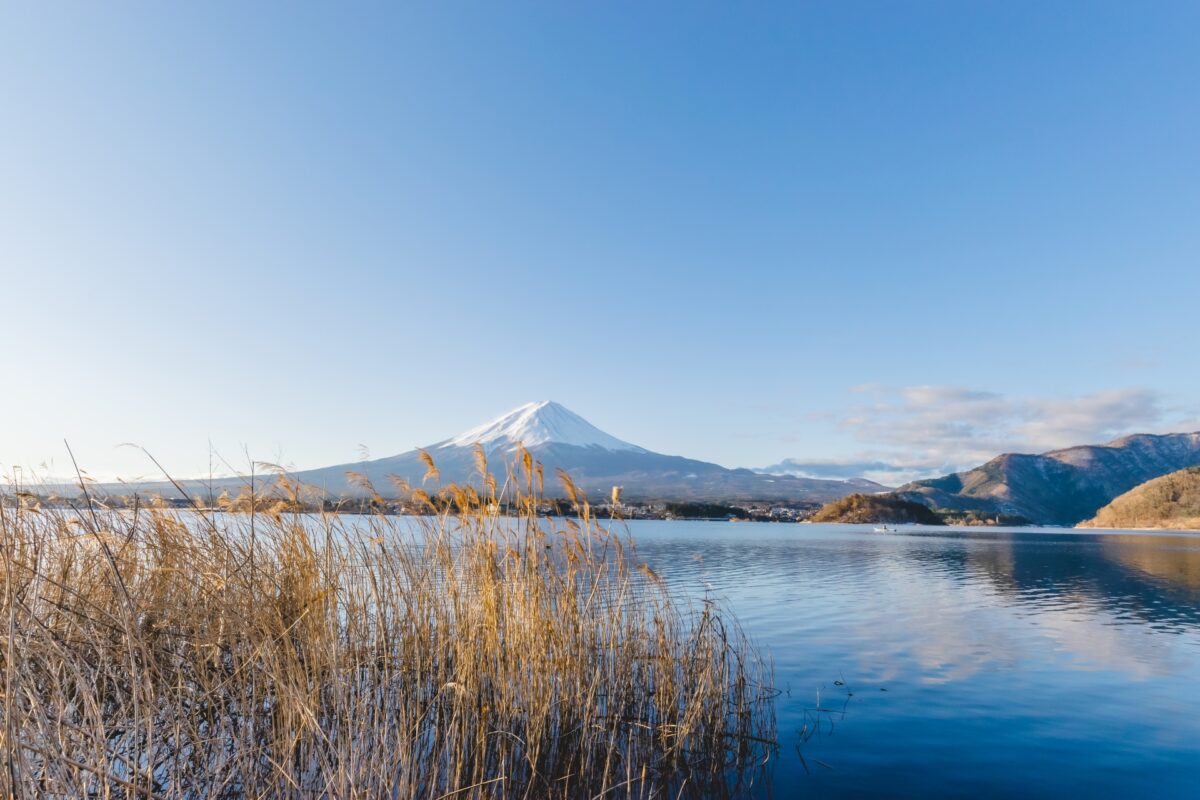
Winter is the best season to catch a glimpse of the snow-capped mountain and also it is said January and February is the best time to see Mt.Fuji with a clear view. Read 12 Recommended Places to See the Best View of Mt.Fuji for the reason and the best viewing spots.
If you are looking for a guided tour around Mt. Fuji, check out our Mt. Fuji Day Trip Bus Tour from Tokyo! Departing from Shinjuku, you can travel comfortably to the Mt. Fuji area by bus and explore the highlights including Chureito Pagoda, Aokigahara Forest, and more.
Designated as a UNESCO World Heritage Site, Shirakawago attracts people around the globe despite age or nationality. The beautiful village is nestled in a peaceful mountainous area in Gifu prefecture . What makes it a world-famous place is the stunning scenery created by traditional Japanese houses called Gassho-zukuri. It features a unique architectural style such as a steep thatched roof which protects the house from heavy snowfall in winter. Exploring the beautiful village also allows you to take a glimpse of the local community that has preserved the impressive scenery and traditional lifestyle for centuries! Winter changes the peaceful village into a white world completely covered with snow!
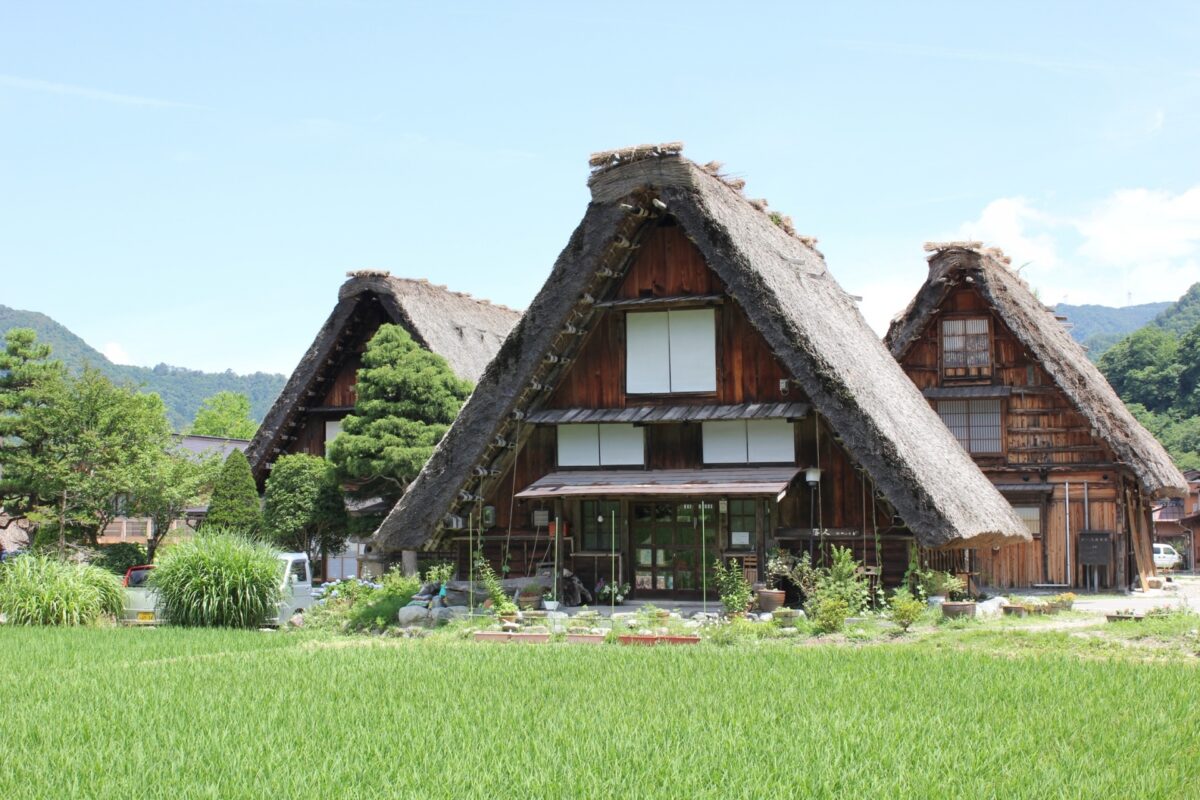
Have you ever imagined wild monkeys bathing in a hot spring? It may sound unreal, but actually does exist as a world-famous tourist attraction in Japan! Snow Monkey Park is a unique nature park which has suddenly become famous when it was featured in Life , the American magazine. Visitors can watch wild monkeys move around freely in a great natural environment. Nestled at the elevation of 850 meters, the park is covered with snow when the temperature drops during a long winter season. The severe weather encourages monkeys to soak in a natural hot spring bath to warm up their body, which attracts numerous international tourists every year.
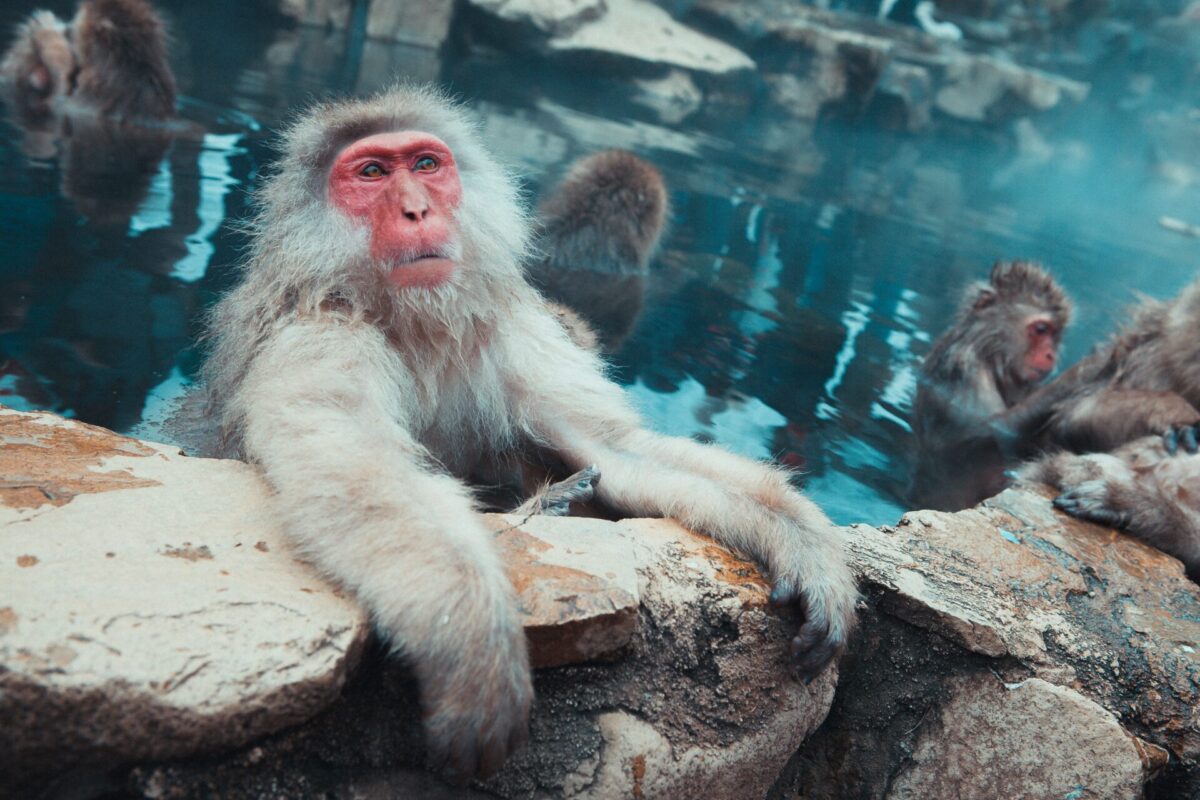
Known as the second largest city in Japan, Osaka awaits you with a lively atmosphere unique to the Kansai region which is completely different from what you can experience in Tokyo! Dotonbori refers to a vibrant downtown district with numerous shops, restaurants, Izakaya bars, entertaining spots and much more! Walking around the area will easily deprive you a couple of hours with too many things to do and see. Ebisubashi is a symbolic bridge over Dotonbori canal which is a perfect spot to take memorable photos with a giant signboard known as Guriko Sign . Try local specialties such as Takoyaki and Okonomiyaki . Enjoy a memorable nightlife at Izakaya bars offering high-quality Japanese sake and a variety of dishes! ▼Join our Osaka Highlights Private Walking Tour including Dotonbori Street, Hozenjiyokocho Backstreet, Osaka Castle, Kuromon Market, and more
Kyoto never stops fascinating visitors with the extraordinary townscape with beautiful shrines and temples. It used to be an ancient capital of Japan until Tokyo took over its place and became the largest center of economy and politics. Walking around the scenic town will take you to world-famous historic sites such as Arashiyama , a peaceful area known for the stunning bamboo grove. Kiyomizudera is a sacred Buddhist temple designated as UNESCO World Heritage Site in 1994.
Another highlight you should not miss is Fushimi Inari a Shinto shrine situated at the base of Mt. Inari. The scenic shrine is visited by numerous tourists from around the world as the most popular tourist attraction in Kyoto. It welcomes visitors with Senbon-torii (千本鳥居) , which literally refers to a thousand red Torii gates creating stunning scenery. Visiting there in the early morning will enable you to take stunning pictures of beautiful Tori gates without crowds. It is also a perfect hiking spot that allows you to explore the mysterious and sacred shrine grounds while feeling the refreshing air.
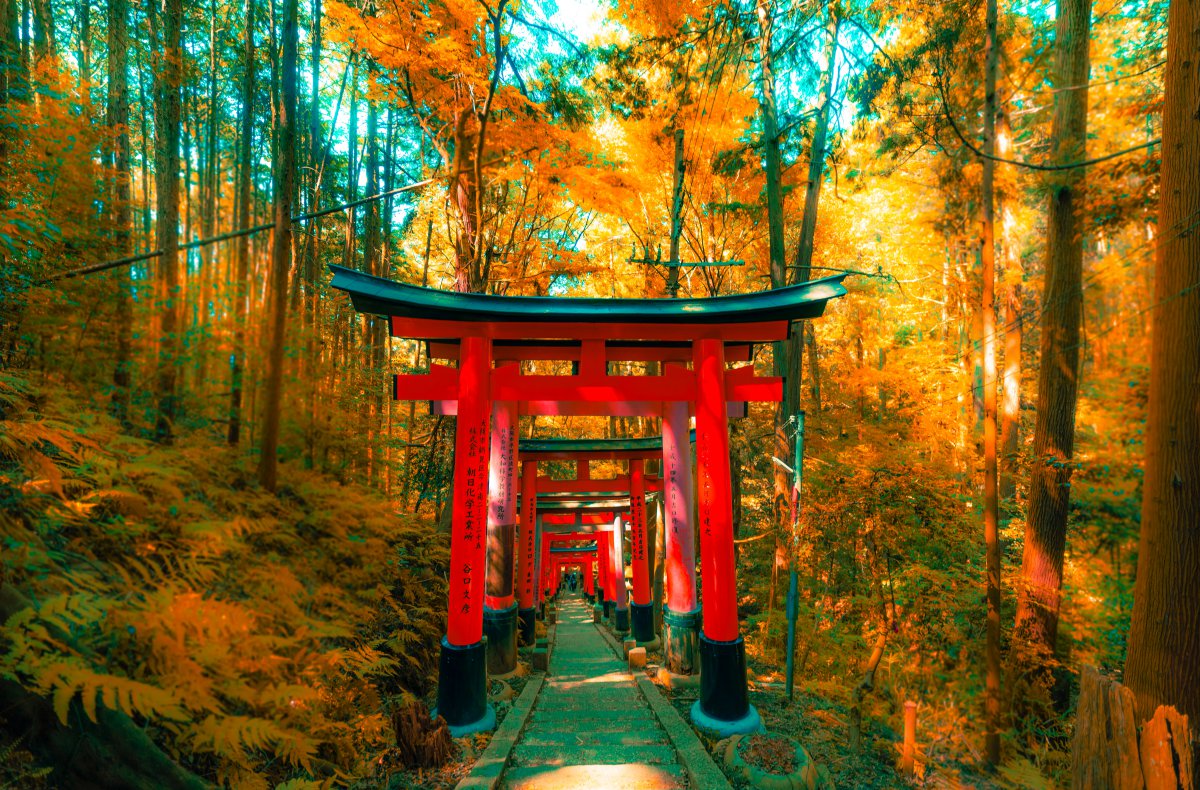
Popular tours in Kyoto to discover hidden stories and spots in the town ▼Kyoto Private Tour (Customizable)
▼Kyoto Food and Drink Tour at Nishiki Street & Gion
▼Kyoto Maiko & Geisha Performance and Cultural Walking Tour in Gion
It is about a 50 minutes train ride from Kyoto to reach Nara , which is known as another historic city. It is home to numerous historical spots such as Todaiji , a symbolic Buddhist temple established by the emperor Shomu in the early 8th century. Nara offers not only traditional temples and historical sites but more! Nara Park is a vast park which opened in 1880. It covers approximately 502ha with a number of popular historic sites such as Todaiji, Kofukuji and Nara National Museum around. Nara Park is also known as Deer Park since over 1,000 deer actually live in the park! You can buy some deer crackers to feed them and some deer even bow to you to get a cracker! But be careful, these deer are usually tame and friendly but can be aggressive sometimes. Nara Park is also known as a popular cherry blossom viewing spot which is filled with stunningly beautiful pink flowers in spring! ▼Book our Private Walking Tour in Nara

Miyajima is a scenic island which belongs to Hatsukaichi city in Hiroshima prefecture. It can be reached by regular ferry service from Miyajima-guchi pier which takes passengers to the scenic spot on the list of UNESCO World Heritage Sites. As you take the first step into the island, you will be welcomed by friendly deer living there. But unlike deer in Nara Park, it is strictly prohibited to feed them. Itsukushima Shrine is an iconic Shinto shrine which was originally established in 1168. It is also widely famous for the floating Torii gate, which refers to the symbolic giant Torii gate standing in the water. The breathtaking scenery created by the contrast of blue ocean and blight red Tori gate attracts tourists from around the world! Don’t forget to try local specialties such as Okonomiyaki and fresh oysters at restaurants! ▼Book our Hiroshima Private Tour
If you are planning a long trip in Japan, head to Okinawa to make the most of your time! You can take direct flights from domestic airports such as Narita , Kansai International Airport and Chubu Centrair to reach the southernmost prefecture consisting of numerous remote islands. The emerald-green ocean and sandy white beaches allow you to discover the beauty of untouched nature through a range of guided tours for marine activities such as sea kayaking and snorkeling. Naha is a prefectural capital which boasts popular tourist attractions such as a remain of Shurijo Castle and Kokusaidori street which is a perfect shopping hub.
Miyakojima is one of the remote islands that belong to Okinawa. Take a relaxing stroll at Maehama beach while feeling the comfortable sea breeze. You can also rent a car and drive across Irabu Ohashi Bridge which boasts a length of 3,540 meters, making it the largest free bridge in Japan!
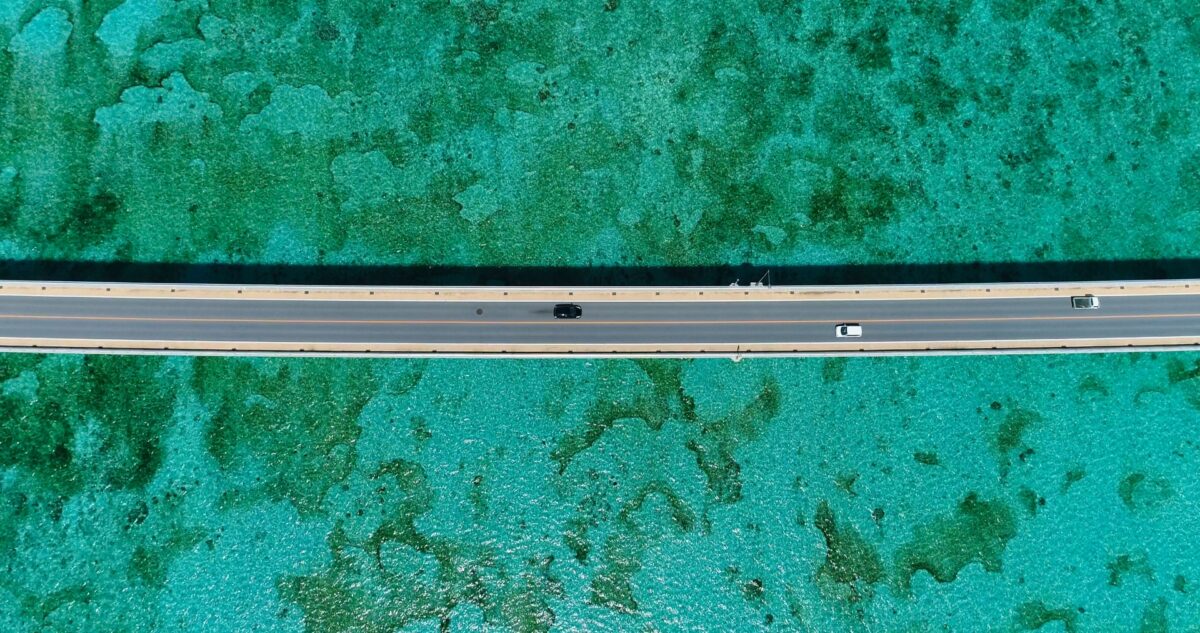
Japan features some animal islands where visitors can see wild animals inhabited among people or on uninhabited islands. Cat islands, rabbit islands, sheep islands and monkey island etc., there are a variety of animal islands in Japan. Tashiro Island in Miyagi prefecture is known as a cat island where over 100 cats live while only about 60 people live there. There is even a shrine dedicated to cats on the island! Okuno Island in the Seto Inland Sea is a so-called rabbit island where over 900 wild rabbits inhabit having its dark history. The island itself was used to develop gas weapons during the war and hid from the map. The combination of interesting history and adorable rabbits attract many tourists in and outside of Japan. To find which animal islands you can visit, read our article; 10 must-visit animal islands that will surprise you in Japan

Naoshima , located in the Seto Inland Sea which is also known as the art island, is getting popular among the tourists. With beautiful ocean views and colorful artworks displayed open-air around the island, Naoshima became the center of Japan’s showcase of contemporary arts. There are many galleries and museums that you can visit, the old and new architectures will satisfy all the art lovers. Most iconic artworks are red and yellow pumpkins by a famous Japanese artist Yayoi Kusama. Red Pumpkin is located near the Miyanoura Port, so most likely the first thing you will see on the island is this. Yellow pumpkin is only 10 minutes away by bus. Rent a bicycle or car if you want to travel around Naoshima in a day!

Yakushima is an island in Kyushu , about 90% of the island is covered by mountainous areas and forests, which makes it a very popular spot for hiking. It’s also known as the difficult hikes which takes 9 hours to complete in a round trip, but you can choose hiking courses depending on your level. The easiest one is only 30 minutes long which is suitable for children and beginners. Yakushima offers breathtaking beauty in nature which takes you away from the hustle and bustle in the city. Recommended: 3 Best Yakushima Hiking Trails for First-Timers

There are some places that are said to be the models of famous Ghibli spots in Japan. Yakushima is one of them, it is said to serve as an inspiration for Princess Mononoke. Other Ghibli locations in Japan are Dogo Onsen in Ehime prefecture where you can see the hot spring bathhouse which looks like a bathhouse from the film!
In this article with 10 Ghibli movie locations you can visit in Japan , you can find actual locations of My Neighbor Totoro, Spirited Away, Ponyo and so on comparing the actual places and movie scenes.

Gaming culture is something that Japan is proud of. With unique Otaku (geek or nerd) culture , you can enjoy some gaming related spots especially in Tokyo. Akihabara is known as the Otaku town featuring a variety of game shops and arcade game centers, as well as Nakano . If you have been enjoying Japanese games, visit real-life video game locations . You will be surprised how accurate they draw in the game!

Surprisingly, there are 727 islands in the Seto Inland Sea . These islands lie between the Japanese main islands of Honshu, Shikoku and Kyushu. Its mild climate and relaxing atmosphere often compare with Mediterranean islands. One of the best ways to enjoy the stunning islands in Seto Inland Sea is cycling on Shimanami Kaido which is a cycling trail that connects Ehime prefecture and Hiroshima prefecture.
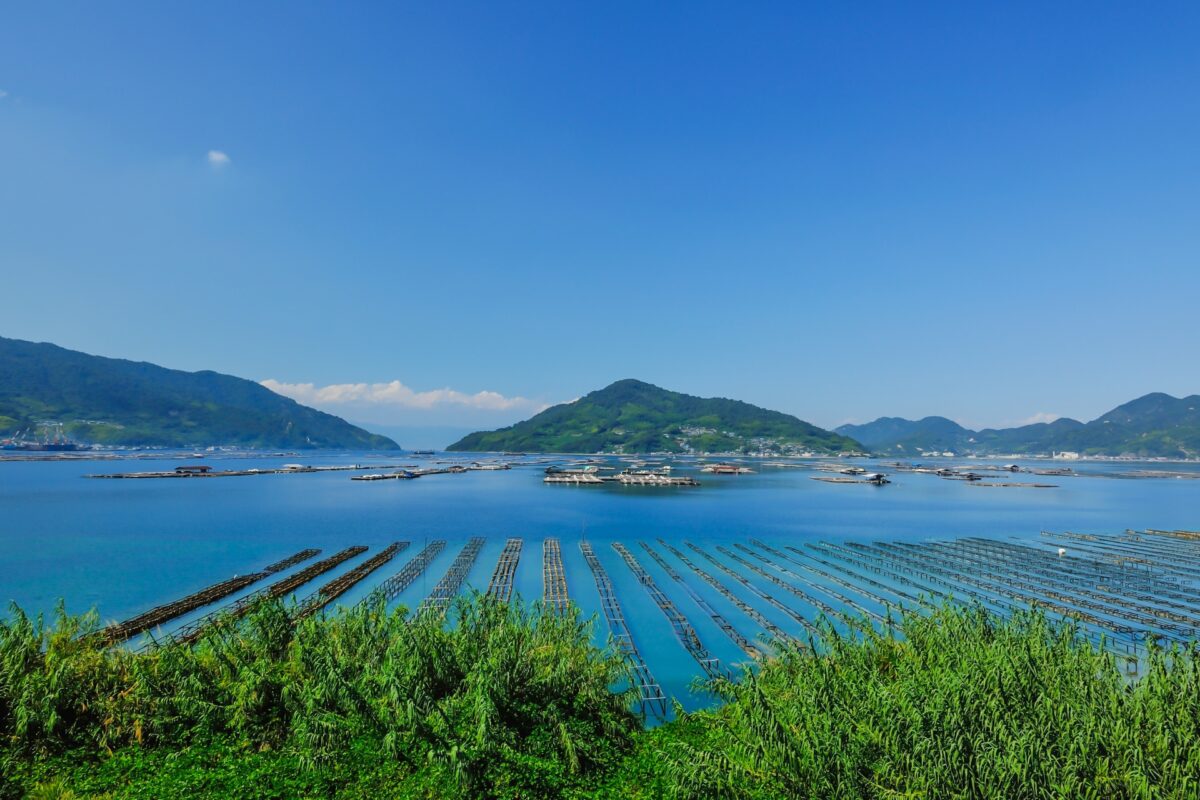
Sanriku Coast stretches from southern Aomori prefecture through Iwate prefecture in the Tohoku region . The beautiful coastline creates scenic ocean views with cliffs and rock formations. In 2011, the tragic disaster hit the area with a huge earthquake and tsunami and you can visit the memorial museums to learn about the disaster. Still many efforts will be needed to reconstruct the area but beautiful sceneries remind us of the power of nature at the same time while appreciating its beauty. Just enjoying the area is also fine, but it’ll be more meaningful if you can take some time to think of the lesson learned from the past which local people try to pass down to the next generations.
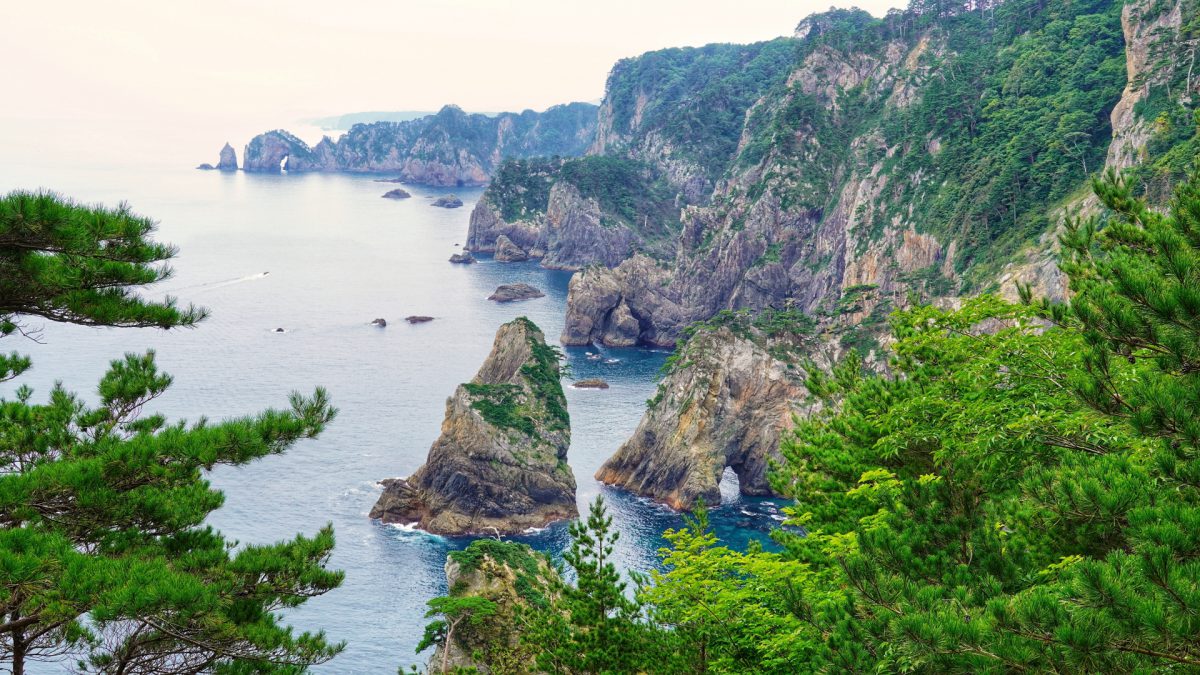
Hida Takayama is located in the mountainous area in Gifu prefecture. If you are interested in history and nature, you will love it there! Traditional merchant houses, restaurants and shops which date back to the Edo period are lined at the old Sanmachi Suji district which is one of the iconic places in the Hida Takayama area. If you have seen a Japanese animated film called Your Name , the film took place around this area. Also Hida Beef is a very known wagyu from Hida Takayama, you can easily find grilled beef skewers and beef sushi on the street. Don’t forget to try some!
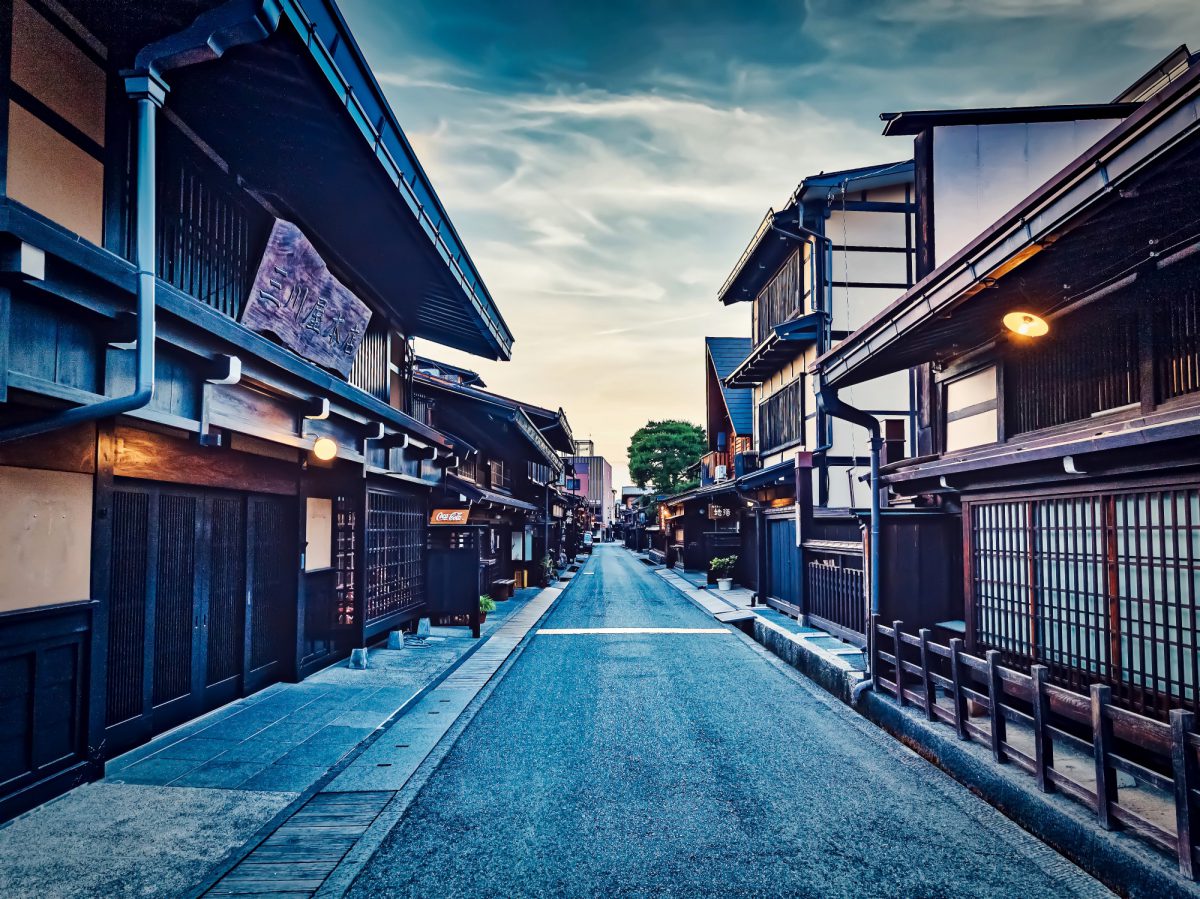
Nakasendo is an old trail which connects between Edo (old Tokyo) and Kyoto which was prosper during the Edo period. Today, it’s a popular hiking trail to enjoy traditional buildings and mountains. Magome and Tsumago are especially popular for both sightseeing and hiking spots in the Nakasendo trail. They are the old post towns situated in the mountains where still many historical houses are preserved. You can enjoy 3 to 4 hours hiking between these two towns. The route is combined with gentle slopes and sudden uphill, special hiking gears are not necessary but if you are worried, you can also take a bus or drive a car between the towns!
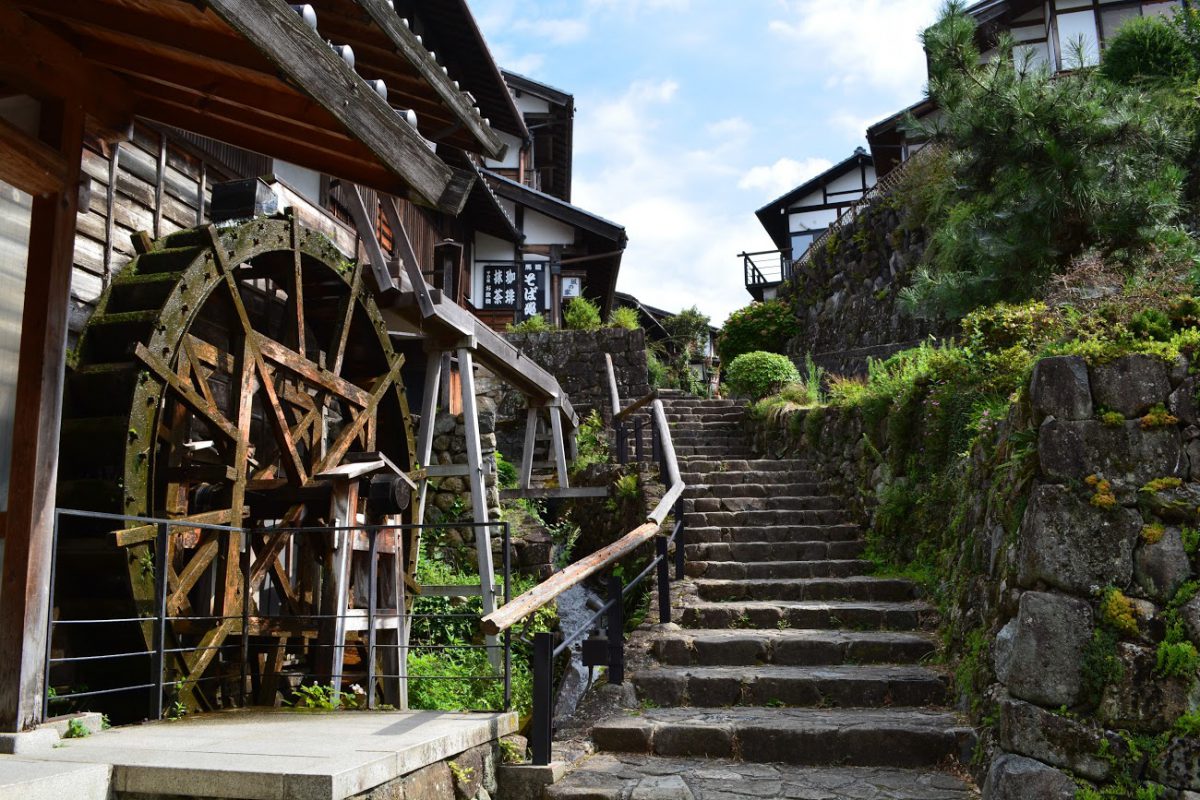
Japan used to have over 25,000 castles but as time passes with wars, natural disasters and the movement of modernization, there are only 12 original castles left. Original castles mean having a castle tower (main keep) which was built during the Edo period or earlier. Probably the most popular castle for tourists is Himeji Castle in Hyogo prefecture. This beautiful white castle is often referred to as Shirasagi-jo, meaning White Heron. It is registered as UNESCO World Heritage Sites . Of course other castles have their own unique appearance and beauty, the towns around the castles are also attractive with some historical sites and traditional shops.

Kamakura Daibutsu and Nara Daibutsu are the most famous big buddha statues in Japan, but actually there are more stunning buddha statues that you can visit. Ushiku Daibutsu in Ibaraki prefecture is the tallest Buddha statue which is twice as big as the Statue of Liberty in New York. Hill of the Buddha in Hokkaido is a photogenic spot which was designed by a popular Japanese architect Tadao Ando . But you think the Buddha statues are all the same? Actually when you look carefully, each Buddha statue has completely different faces!
Recommended: 10 Famous Buddha Statues in Japan

Not only beautiful nature and historical sites, but Japan is popular for its unique theme parks as well. Tokyo Disney Resorts and Universal Studio Japan are the top theme parks, but there are theme parks which recreated the townscape of foreign countries such as Huis Ten Bosch which is modeled after Netherland and Tokyo German Village.

Seemingly Japanese people have quite a passion toward onsen, you can enjoy onsen all year round, days and nights, with some great benefits for your body. You can’t complete your Japan trip without experiencing unique bathing culture here. Onsen spots near Tokyo are also popular tourist attractions especially Kusatsu Onsen in Gunma prefecture. Read our article about how to take a Japanese onsen since there are things to know including manners before you go!
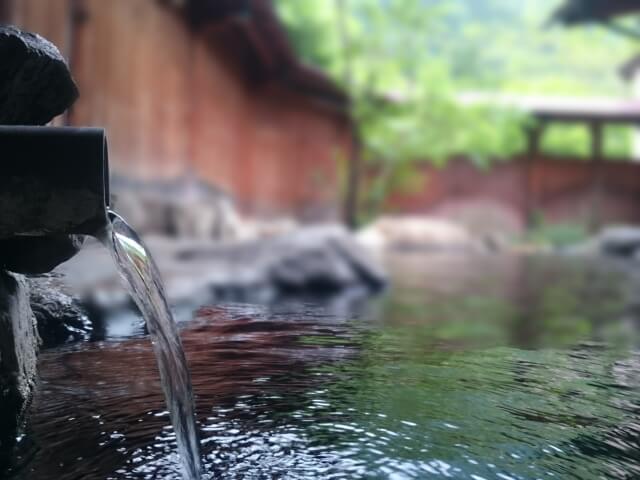
Japan Wonder Travel is a travel agency that offers guided tours throughout Japan. From private walking tours to delicious Food and Drink tours, we can help you organize the best tours just for you! If you want to explore Japan and learn more about the history and backstories of each area you are visiting, our knowledgeable and friendly English speaking guides will happily take you to the best spots! In addition, we can provide you with any assistance you may need for your upcoming trip to Japan, so please feel free to contact us if you have any questions or need some help!
▶ Tokyo Tsukiji Fish Market Food and Drink Tour Explore the most lively and popular fish market in Tokyo and try some of the local’s favorite street foods and sake with one of our friendly and knowledgeable English speaking guides!

▶ Tokyo 1–Day Highlights Private Walking Tour (8 Hours) There’s no better way to explore an area than taking a tour with a knowledgeable local guide. You will have the chance to learn about the history and interesting background stories of Tokyo, as well as discover some hidden gems which can be hard to do without a guide.

▶ Mt. Fuji Day Trip Bus Tour from Tokyo Experience the breathtaking views of Mt. Fuji by visiting the highlights of the area on our guided sightseeing bus tour! Departing from Shinjuku in central Tokyo, you can travel comfortably to all of the best spots in the area by bus.

▶ Kyoto Private Full Day Walking Tour On this full-day private tour of Kyoto, you will be able to see the highlights of Kyoto in just one day and at the same time develop a deeper understanding of both the culture of the area and Japan as a whole.

Japan awaits you with a range of memorable experiences that can be found at great tourist spots across the country. Immerse yourself in the scenic nature spots as well as historical sites surviving for centuries. It will make your once in a life time experience in Japan!
Follow us on Instagram , Facebook and Twitter for more travel inspiration. Or tag us to get featured!
Happy traveling!
Stay informed of the best travel tips to Japan, the most exciting things to do and see, and the top experiences to have with the Japan Wonder Travel Newsletter. Every week we will introduce you to our latest content.

- Popular destinations
- Hidden places in Japan
- Tours and workshop
- Food and drink in Japan
- Itinerary in Japan
- Places to visit in Tokyo
- Food and drink in Tokyo
- Seasonal events
- Tours & workshops
- Tokyo This Week
- Day trip from Tokyo
- Itinerary in Tokyo
- Places to visit in Kyoto
- Food and drink in Kyoto
- Itinerary in Kyoto
- Day trip from Kyoto
- Travel tips
- Accommodation
- Cultural tips
- Transportation
- Tokyo Tours
- Kyoto Tours
- Kimono Rental
- Fukushima Tours
- Mount Fuji Tours
- Tour Package
- Media Kit(English/日本語)

The 15 BEST Places to Visit in Japan (2024 Guide)
- Last Updated: January 27, 2024
From seeing a geisha show or walking the famous Fushimi Inari shrine in Kyoto to exploring the bustling metropolis of Tokyo or staring out at Mount Fuji, here’s our list of the best places to visit in Japan.
Japan is a close-knit island nation that is known for its beautiful cities, unique food, amusement parks, temples, shrines, hot springs, and more.
Hidden gems and beautiful palaces are scattered around the country, from tiny villages right up to the commercial areas in Japan, such as Hiroshima, Osaka or Tokyo.
Travellers flock to Japan to see the beauty of cherry blossom season, or to hike Mount Fuji, ski in the Japan Alps, eat delectable sushi, and more.
But there are lots of unexpected things to do in Japan as well.
Character or animal cafés, vending machines offering a vast array of items, and aquariums showcasing rare and unique marine life are just a few of the best and most interesting things you can view while in Japan.
Don’t travel to Japan without reading our ultimate travel guide!

Table of Contents
4) Yokohama
9) hiroshima, 12) fukuoka, 13) kanazawa, 15) okinawa, anything to add to this list of great places in japan, the best places to visit in japan.
Overall, there are so many must-see and must-experience places to visit in Japan due to the nation’s rich history, location, and culture.
If you’re planning a trip, make sure you use this list to make the most out of your travel to Japan.
Tokyo, the capitol of Japan, is obviously one of the best places to go in central Japan. While Kyoto is viewed as the spiritual center of Japan, Tokyo is seen as the most popular, busiest, and most significant city in the country, and there is no question why.
If you are wondering just what to do in Japan, it’s common knowledge that starting in Tokyo would have you covered as a perfect introduction to the country.
Of course, the city is largely commercialised and there are endless activities to do, especially if you are looking for UNESCO World Heritage Sites.
On a clear winter day it is even possible to have views of Mount Fuji in the distance!
It is important, however, to not forget the little things you can visit and explore – from simple and quiet parks to humble and interesting cafés or the occasional shrine or temple.
One unique place to visit in Tokyo would be Neko JaLaLa, a cat-themed cafe that offers more than your usual coffee destination in Tokyo.
There should be no question as to why Tokyo is famous and beloved for its several towers and overall interesting architecture. Buildings like the Tokyo Tower and the Tokyo Skytree should definitely be places on your travel list.
Both structures are known as Japan tourist spots and two of the best places to visit in Japan.
A trip to the Tokyo Tower offers a beautiful and breathtaking view.
The tower lights up beautifully and elegantly throughout the night, which is also a nice touch and a perfect photo scene.
The Tokyo Skytree offers several experiences throughout its tiers, aside from observation and obtaining a beautiful view.
If you are looking for a less-commercialised and more cultural Japan attraction that is located in Tokyo, the Kaneji Buddhist temple is one of the best things you can do.
Complete with intricately designed gardens, hallways, and statues, this temple is ideal for anyone looking for some relaxation time while in Tokyo.
Also consider taking a day trip to see Mount Fuji, the iconic symbol of Japan.
It doesn’t matter if your stay in Japan is for 48 hours or two weeks, visiting Tokyo is a Japan must-see.
READ MORE: Check out our complete guide to the best things to do in Tokyo .

Check out our Japan Vlog on going to a crazy robot restaurant in Tokyo in Japan.
Osaka is a port-based city that is full of interesting museums, attractions, and a fascinating variety of activities for any visitor to Japan.
No tour of the best places to visit in Japan would be complete without a trip to Osaka.
One thing to enjoy about this city is its versatile points of interest, and great opportunities for the Cherry Blossom season.
Whether it be the classic Osaka Castle or a fun amusement park such as Universal Studios Japan, Osaka really seems to have it all.
Dotonbori should ultimately be your first stop due to the influx of street food vendors, arcades, and shops.
After visiting the many wonderful fantasy worlds of Universal Studios Japan, you go go-karting around the streets.
Other popular attractions in Osaka are the beautiful and grand Tempozan Ferris Wheel, the peaceful Expo Commemoration Park, and the educational and intriguing Osaka Museum of History.
You haven’t completed Japan sightseeing until you’ve made your way to Osaka. And from here it is just a short train ride to the famous city of Kyoto.
READ MORE: Check out our detailed guide on the best things to do in Osaka .
If you are looking for elegant cherry blossoms, peaceful Buddhist temples or the occasional Shinto shrine, then Nara is the ideal travel location for you.
Just a short distance from either Kyoto or Osaka, Nara City is the capital of the Nara prefecture and is one of the most captivating and interesting places to visit in Japan.
Shrines surrounded by peaceful, well-kept canals and ponds are a popular sight. As are long the beautiful and friendly deer that roam freely throughout the prefecture – which are one of the most unique things to see in Japan.
It is apparent that Nara might truly be one of the most peaceful, down-to-earth cities in the world.
Nara Park is a central park located within the city that is full of deer that peacefully roam the park. They are a beautiful and adorable sight to visitors.
One staple of Nara would have to be the several palaces, temples, and Buddhist shrines. Todai-ji is a perfect example and is located right in the city of Nara.
This temple is one of the largest in the area, and plays a great role in its history.
Deer are frequently seen in surrounding areas around the temple, which is a nice touch.
By far, the greatest feature with Todai-ji, however, is the addition of the largest known bronze statue modelled after Buddha.
READ MORE: Here’s our ultimate list of things to do in Nara, Japan .

Yokohama is one of the more authentic places to visit in Japan if you would like a taste of Japanese culture, some history, and a tad bit of everything else.
One example of how Yokohama stands out against other popular cities and tourist spots in Japan would be the inclusion of Yokohama Chinatown.
Similar to Dotonbori, the Yokohama Chinatown area is ideal for those who love to experience street food as it is popularly offered and sold throughout the area.
If you are looking to take a quiet and enchanting walk, a stop at the Sankeien Garden in Yokohama couldn’t hurt as well.
A trip through this park can help relax you after a long day of exploring and visiting different streets and locations throughout the city.
The design of the garden is very traditional and reminiscent of older gardens and contains a beautiful pond surrounded by lush trees and shrubs.
One might enjoy viewing the Tempozan Ferris wheel light up at night. And Yokohama offers beautiful fireworks shows available during specific seasons.
Due to Yokohama being a port city for trading, these shows easily take place in Yokohama at the Yamashita Park, and are enjoyed greatly by both tourists and locals alike.
READ MORE: Here’s our brand new article featuring the best things to do in Yokohama .
As Okinawa is known for its glorious beaches, the small town of Hakone is known for the natural beauty of its mountainous terrain, waterways, and hot springs.
By far the most prominent and well-known attraction is Lake Ashi that makes Hakone one of the most fun places to visit in Japan.
The lake paired with other attractions makes Hakone one of the most beautiful and captivating cities to spend some time during your next vacation.
The picture-perfect and relaxing scenery also helps it make the list as one of Japan’s tourist spots. With views of Mount Fuji, Hakone is one of the best places to see and do it all.
Lake Ashi is surrounded by beautiful mountains, which help to compliment the glistening blue water.
The Hakone Open-Air Museum is also another great reason to visit Hakone, as it compliments the feel and aesthetic of the place due to the large collection of creative artwork.
READ MORE: Here’s our guide to the best things to do in Hakone !
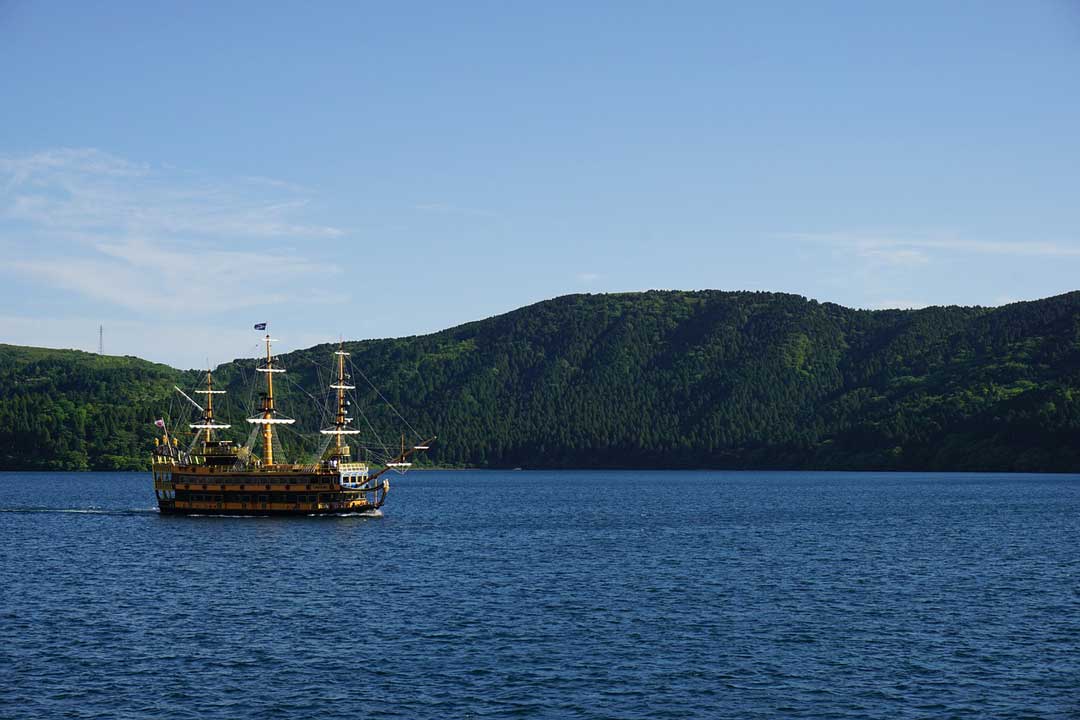
The capital city of Hokkaido, Japan’s northernmost island, is an absolute gem and one of the best cities on our list of Japanese tourist spots.
Whether it’s your first or fifth time to this fascinating country, make sure you spend some time in Sapporo, a metropolis that is buzzing with excitement and culture.
Whether you want to check out Japan’s biggest zoo or visit the marvelous winter snow festival, you’ll find no shortage of attractions here.
It’s also a great jumping-off point for exploring more of Hokkaido, so definitely use it as a base to plan your next moves.
READ MORE: Here’s our travel guide to the top things to do in Sapporo .
With destinations like the Nagoya TV Tower and the Nagoya Castle, this area can easily be compared to Osaka and Tokyo based on the famous and must-see landmarks.
There is even a museum dedicated to science: Nagoya City Science Museum.
This museum may sound a bit general. But its complex and interactive activities help engage and educate visitors and is home to what is known as the world’s biggest planetarium – making it a famous gem of Japan.
Perhaps the highlight of Nagoya and one of the best things to do is to tour the Nagoya TV Tower.
This tower consists of five floors and is a beautiful sight with its glowing appearance during the night.
The sky deck, which is at the topmost floor of the tower, offers a grand view of the city and famous mountains in the area.
The Nagoya Castle is the heart of Japan and another great symbol within the nation of Japan. You wouldn’t be able to miss this elegant structure in Nagoya.
This specific castle stems all the way from the Edo period and is lined with alluring Japanese artwork that is lit and brightened up greatly by the strategically placed windows and shading.
Be careful to not forget the entertainment halls and theatres, so you can enjoy a great concert or show while in Nagoya.
And if you’re looking for views of Mount Fuji then you can add this place to your list. Nagoya offers gorgeous views of the famous Mount Fuji!
READ MORE: Here’s our list of the best things to do in Nagoya .
While there is much to do on the island of Honshu, Kyoto is almost always at the top of the list of places to see in Japan.
Based on the prominent pagodas, the influx of cherry blossoms, and the rich history included, it is no wonder why Kyoto was once the capital of the great nation of Japan.
Due to the extravagant history Kyoto has throughout wars and harsh time periods, castles and unique Japanese structures have come to cover the region.
By exploring Kyoto , you have the choice to learn about Japan, its people and its culture in a very motivating, intriguing, and interesting way.
Geishas are also a prominent entertainment force in Kyoto, making it one of the best places in Japan to view a show.
The Sento Imperial Palace is a peaceful palace that offers a tour that is free and is a fantastic way to discover and learn about Japanese palaces and history while exploring the area.
If you are looking to buy some authentic and quality Japanese goods, Kyoto should also be in mind. Many tourists buy keepsakes or tokens from their trip here, as shopping is fantastic.
The Kitano Tenman-Gu flea market is the perfect shop for this as it offers a wide range of products such as intricately designed fans, umbrellas, and yukatas.
Of course, no trip to Kyoto is complete without visiting Fushimi Inari, an important Shinto shrine known for its temple and the thousands of brightly coloured torii gate.
READ MORE: Don’t miss our complete guide to the best things to do in Kyoto !

Recent history hasn’t been kind to Hiroshima, a city that is most famous for having the atomic bomb dropped on it during World War II, completely decimating the city.
But for such a tragic event, Hiroshima has fully rebuilt itself, and today is one of the top selections for where to go in Japan. The Hiroshima Peace Memorial Park is one of the top Japan tourist attractions.
The Hiroshima Peace Memorial Museum, the main feature of Hiroshima Peace Memorial Park, is one of the best known places in Japan. Memorializing a terrible event near the end of World War II, this UNESCO World Heritage Site is one of the more sacred places to visit in the city.
Nearby Miyajima Island is a fantastic place to spend a day and definitely worth a visit. The Hiroshima Castle is sure to wow you as well.
In terms of unique sights and tourist attractions, the Itsukushima Shrine really stands out, literally, by rising out of the water.
Don’t let the idea of a crumpled city stop you from visiting – Hiroshima is truly an incredible spot to explore.
READ MORE: Check out our complete guide to the best things to do in Hiroshima.
When visiting Kobe, on the island of Honshu, trying their world-famous beef is a must. You can even have it along with Ramen or other traditional dishes.
Kobe could perhaps be the food destination highlight of your trip finding the best places to visit in Japan, aside from Dotonbori.
Another street to visit in Kobe would be their version of Chinatown, which offers another great opportunity to try street food.
The Kobe City Museum is also a great way to explore the great city of Kobe and its history.
Kobe’s most popular harbour known as the Kobe Harborland is the best outdoor hub for entertainment and shopping alike.
The harbour even boasts a beautiful Ferris wheel that adds a nice touch. If you are searching for a more scenic addition in Kobe, you must visit Mount Rokko. Although it pales in comparison to Mount Fuji, there are great trails and scenery to enjoy.
This landmark is favoured both by tourists and locals, and is unique in its structure when compared to various other mountains scattered throughout the great nation of Japan.
Kobe is also located near Himeji Castle, which in and of itself is a top location in Japan. Take a day trip from Kobe to the famous grounds of Himeji Castle!
READ MORE: Here’s our guide to all the top things to do in Kobe !
Otaru doesn’t always make the list of places to visit in Japan. But its canal scenery is so romantic it could even rival that of Italy.
Different vendors and stores offering a vast array of Japanese goods paired with various restaurants help to make the canal a must-stop destination.
Aside from the canal, be sure to enjoy a wonderful experience and performance at the Otaru Music Box.
The Otaru Aquarium can help finish off your trip with some educational facts and a great view of various marine life.
READ MORE: Check out our complete guide to the best things to do in Otar u
Fukuoka is a fantastic city on the Kyushu island of Japan, and well worth a visit on your next trip to Japan.
With great surfing opportunities, a fascinating samurai history and plenty of sumo wrestling matches to check out, you’ll be amazed at all the great things to do in Fukuoka.
READ MORE: Here’s our guide to the top things to do in Japan
Kanazawa is located on Honshu Island and bordered by the Sea of Japan. Deriving its name from “marsh of gold” after legend claims a potato farmer dug up gold instead of potatoes in his field one year.
Kanazawa Castle is the city’s most notable feature and one of the best places to visit in the city. It stands tall among various other buildings that were surprisingly spared during bombings in WWII.
The original castle was destroyed in a fire in 1888. But the existing castle still stands after being rebuilt.
Kanazawa is also known for its Edo-period architecture, temples, geishas and cuisine. You can’t go wrong to add Kanazawa to your list of places to visit in Japan.
READ MORE: Check out our complete guide to the best things to do in Kanazawa.
Tohoku is located northeast of Tokyo on the island of Honshu. Very much off the beaten track for most travellers, Tohoku makes the list of best places to visit in Japan for its simplicity and relationship with nature.
Those who travel here know Tohoku for its spectacular coastlines, inviting natural hot springs and intricate cave systems. It is also a great place to see some of the best cherry blossoms in Japan – without all of the crowds you will find elsewhere.
And if you are into studying where modern history meets science, Tohoku is the jumping-off point for exploring the impact of the 2011 tsunami, most notable for it’s destruction of the Fukushima nuclear reactor.
No doubt if you are looking for a place where fewer travellers visit, particularly in spring, then you absolutely must add Tohoku to your list of places to visit in Japan!
Okinawa is Japan’s most tropical island and definitely one of the more unique places to visit in Japan. Surrounded by beautiful beaches and crystal blue ocean water, Okinawa City is a paradise for people of all ages.
A variety of restaurants are scattered all throughout the city, which is perfect if you plan to have dinner and see a show.
Koza Music Town is perfect for those looking for supreme entertainment and shows.
Besides Koza, Okinawa is simply just a paradise for music lovers due to the many different venues and shows that are offered, especially with the famous bars and clubs scattered about.
The Shurijo Castle is a must-see if you are visiting Okinawa. This palace was dedicated to the Ryukyu Kingdom, and boasts a bright red colour and an intricately paved red walkway leading up to the grand entrance of the castle.
If you’re looking for adventure on your next travels to Japan as well, then Okinawa is the place for you. This island is definitely where to go for surfing, scuba diving, kiteboarding and swimming with whale sharks!
READ MORE: Check out our complete guide to the best things to do in Okinawa .
In conclusion, Japan is a vast island nation that is known for its mountain scenery, unique architecture, cherry blossoms, and booming cities.
While travelling there are so many places to visit in Japan and experience on each island and in each city. But it is important to not overlook the small hidden gems in the rural Japan.
Sites and areas like small traditional villages and temples can really add to your overall experience. Whether you visit castles, Buddhist temples or Shinto shrines, enjoy a hot spring or two or come to see the natural beauty of cherry blossom season you understand why the island of Japan and its people are so special.
Aside from trying food in Dotonbori and shopping in the popular streets and stores in Tokyo, be sure to mark the small villages, historic sites, and grand areas for.
Visit the Hiroshima Peace Memorial, stroll beneath the torii gate of Fushimi Inari in Kyoto and find your favorite shrine or temple in any number of smaller villages and towns.
Do you have anywhere else you’d add to this list? Leave a comment below and let us know your favourite places to visit in Japan!
DISCLAIMER: Some of the links in this article are affiliate links, which means if you book accommodation, tours or buy a product, we will receive a small commission at no extra cost to you. These commissions help us keep creating more free travel content to help people plan their holidays and adventures. We only recommend the best accommodations, tours and products that ourselves or our fantastic editorial team have personally experienced, and regularly review these. Thanks for your support, kind friend!
Gabby Boucher
Hi, We’re Alesha and Jarryd!

We’ve been traveling the world together since 2008, searching for the planet’s best destinations and adventures.
Love Travel?
Sign up for our free weekly newsletter for the best travel tips, ideas and deals!
We respect your privacy. Unsubscribe at any time.
READ MORE...
19 BEST Things to Do in Osaka, Japan [2024 Edition]
The Perfect 3 Days in Tokyo Itinerary
The Best Day Trips from Every City in Japan [2024]
Related Posts
25 awesome things to do in tokyo, japan, the ultimate travel guide to oita, japan (2024 edition), ryokan ochiairo review – is this japan’s best ryokan, 8 reasons why you should visit tohoku, japan on your next trip, 22 thoughts on “the 15 best places to visit in japan (2024 guide)”.
Yes I have read this article and very informative article.
Glad you liked the article 🙂
My Granddaughter dream is to go to Japan since she was 11 years old, May 2022 she will be 18 and graduating High School. I want to take her there as a gift to her, because her dream has not wavered, Problem is, I am limited on income and terrified to go to another country, where I know nothing of culture or the language, I understand it is very expensive. Could you give me advice on what we could do to make this memorable for her..without it draining my bank account and where a lot of people speak English. We are country people dont know to much of the outside world, so this will be a culture shock for us. I want to respect their values as well. Any advice will be much appreciated. Food, Places to stay, Sightseeing, cherry blossom, I am leaning on traveling April 4th 2022.
Hi Connie, What an amazing gift. An experience of a lifetime. I am originally from country WA and know exactly what you mean. Japan can be expensive but it also can be reasonable on the budget side. We have an article that has a lot of information that may help you out but I will add a few more tips in. Travel Guide – https://www.nomadasaurus.com/travel-guides/travel-to-japan/ (at the bottom of this article is lots of other Japan posts) Budget – https://www.nomadasaurus.com/budget-travel-in-japan/
There are a lot of people that speck English in the major cities. But menus will be in Japanese sometimes you will find English but the prices may be more expensive. We recommend downloading Japan to English google translate. This will help you out so much. If you are connected to the internet you can hover your camera over a menu and it will translate the writing to English. You can pick up an internet dongle from the airport and have wifi where ever you go for your stay. They can be expensive. Another option is buying an international SIM card. Just check your plan and that there is no extra costs. Your phones plans may charge you international roaming and this will be very expensive. Happened to me in Ireland when I first travelled, costs nearly $1000. I had no idea. Lucky they cut it down but it was a wake up. Transport – I would look into the JR pass. This is a great way to get around the country and you can use it on local transport within the cities too. The train system is incredible and so comfortable. Stops are in English so you can read where you need to get off and at what stop. https://www.jrailpass.com/maps Getting around cities – I would recommend hopping on a city tour or do a free walking tour to get your bearings and ask advice from the guides. The guides would be able to tell you get (and cheap) local restaurants to try. We try to do this in a lot of cities when we first arrive. Getting the public trains are easy enough to get around the cities. Put some maps on your phone or print out a map before you arrive. Food – There are so many amazing stalls. These are the best local food options. They look a little questionable but if it is busy with locals then go there. We ate at a lot of machine meals. This is when you enter the restaurant and choose a meal off a machine, collect your receipt, sit down and a person will collect your receipt and then deliver your meal. These places were great. Do not miss Kyoto and Nara. We really enjoyed these places. The temples, gardens, traditional houses and the culture. When we got off the plane in Japan we went straight to Kyoto and we were so happy we did. Explore Tokyo at the end of your trip. Hope this helps. If you have anymore questions please don’t hesitate to message us. Japan is an amazing country. The people there are so welcoming and helpful.
These are great places for tourism. I must say, your post is like my tour guide now. Thank you for sharing this post with us. Thanks.
Hi Franca, glad you liked the post. Japan has so many wonderful destinations. Have a wonderful trip when you go. Take care. 🙂
Japan has been on our travel bucket list for years now but already planning to visit next year so this gave me a good idea where to go apart from Tokyo and Osaka.
You need to go Julia. I think you would love it. There is so many amazing places to see. We didn’t spend much time in Tokyo and Osaka as we are not city people. We loved Kyoto for the culture. I know it is a city but it did not feel like it. Stay in Gion District if you go. Was amazing. We would get up early and wonder around. Felt like we were the only people there sometimes. Happy planning.
I’m planning a trip to Japan and your blog has been very helpful so far! The first time I was there I mostly went from big city to city, so this time I would like to try smaller towns and your description of Shirakawa makes it sound so lovely. The problem is that Google Maps is showing me two Shirakawa towns! Did you visit the one in Fukushima or in Gifu? Thanks!
Hi Jennifer, sorry about the late reply. This is in the Gifu Prefecture. Thank you for this. I will note it in the paragraph. 🙂
We are heading to Tokyo for the Olympics in July of next year and have a little more than three weeks in Japan with 9 days at the Summer Olympics. We have been to Tokyo and Kyoto before and did most all of the sites that one would, so the timing of this article was perfect as we were looking for more to explore outside of Tokyo and Kyoto next summer after the hustle and bustle during the Olympics. Thanks for giving us a great starting point with the overview of these prefectures. Much Aloha and Kokua for the insight
Hi Dan, so sorry your comment was missed. I know your plans are obviously are cancelled as the Olympics are postponed til next year. I hope you have rescheduled and are still going. If you have time do check out Nakatsugawa. It has a traditional trail. It is beautiful and not far from Tokyo. Check out Sado Island. The coastline and hiking is so beautiful. You can catch a flight down to Oita Island and explore this off the beaten path area. Lots of onsens and great hiking. You do need to rent a car to get around as transport is very limited. Have a great time when you go to Japan.
Truly your shared all these fabulous places are the best for travelling and tourists can enjoy some time with buddies. I also enjoyed myself while I was visiting this kind of places.
So glad you enjoyed your time in Japan. Thanks for reading. 🙂
Thanks for sharing such a beautiful article. It packed of all the information required for the first time visitors and information mentioned above in the article are more than enough gain knowledge about Japan. The article has surely helped me a lot. It would be great if the images of the all places mentioned above were there. Thumbs up for the effort.
Glad we could help. All the best
Thanks for sharing this information regarding travel and tour. I really found this very interesting. And your blog is very useful for us.
Thank you so much. Glad you found the article helpful. Happy travels
I have visiting a few cities in Japan on my bucket list. I shared the blog. The pics are awesome and I enjoyed reading the brief overview of the different cities. I get excited about everything from historical areas, to scenic, and most of all the food. Thanks for the recommendations of Dotonbori and Yokohama chinatown for popular street food.
Thank you so much David. Natalia wrote a great article and made us very jealous. Japan looks like a wonderful place. We are heading there later this year. We can not wait. 🙂
I really like to share your all these adorable images which views very fabulous and cool. I also spent a really good time at ONOMICHI during my last journey and came back with great memories.
Thank you so much. Glad the article brought back good memories for you. 🙂
Leave a comment Cancel reply
Save my name, email, and website in this browser for the next time I comment.
- Things to Do
- Food & Drink
- Shopping & Style
- Coca-Cola Foodmarks
- Restaurants & Cafes
- Music & Nightlife
- Neighborhoods
- Los Angeles

24 of the most beautiful places you should visit in Japan
Aside from culture and tradition, Japan also offers some of the world's most spectacular landscapes. Here's your Japan bucket list

It’s no secret that Japan has a stunning amount of beauty. From the lavender fields of Furano in Hokkaido down to the crystal clear beaches of Okinawa , this small country is filled with gorgeous nature , contemporary museums , mountainside temples and of course, those pretty springtime cherry blossoms and colourful autumn leaves .
With so much to see, it's impossible to do Japan justice with just one visit. This explains why people miss Japan more than any other country in the world. So this extraordinary island archipelago definitely calls for repeats visits – how else are you going to see all these 24 beautiful sight in Japan?
Recommended: The most beautiful festivals in Japan

Kiyotsu Gorge and the Tunnel of Light, Niigata prefecture
Niigata prefecture’s Kiyotsu Gorge is a massive natural marvel with volcanic columns, called columnar jointing, overlooking a dramatic river view. After the walking trails were deemed unsafe and closed to the public in 1988, Ma Yansong and the MAD Architects team built the Tunnel of Light , a 750m-long tunnel leading out to the gorge, so visitors can safely view its panoramic beauty.

Kamikochi, Nagano
A lush green plateau on the Nagano prefecture side of the Northern Japanese Alps, Kamikochi offers some of Japan’s most spectacular mountain scenery with minimal hiking effort. Most visitors just hover around Kappabashi (Kappa Bridge) and for good reason. For one, the bus stop is just nearby. But more importantly, here you get to take in the grand view: a wooded riverbank surrounded by a fortress of mountains, which in autumn blushes in shades of yellow, orange and red.
Beat the crowd by starting at the quiet Taisho Pond, whose pristine surface in the early morning mirrors its gorgeous surroundings. From here, it’s an easy hour-long hike through marshlands to Kappabashi, where you can break for a meal at one of several cafés and restaurants. For day trippers, you can then go further into the forest; another 90 minutes’ walk will take you to the atmospheric Myojin Pond.

Oirase Gorge, Aomori
This picturesque gorge in the mountains of Aomori is one of Japan’s top autumn destinations. The 9km-long trail from Ishigeo to Nenokuchi at the mouth of Lake Towada is breathtaking – not that it’s a strenuous hike but because of the gorgeous scenery all along the way. The gushing Oirase Stream snakes through a blazing red and orange forest studded with moss-covered boulders, with multiple waterfalls feeding into the running water. It’s Japanese autumn at its best.
Set aside three hours for a one-way trek, and you can hop on a sightseeing ferry at the end of the trail at Nenokuchi for more autumn foliage along Lake Towada. Though you’d need some good stamina, don’t worry if you can’t do the entire nine kilometres. There are bus stops on the road running alongside the stream, where you can catch a ride to any point on the trail.

Kinkakuji Temple, Kyoto
Otherwise known as the Golden Temple, Kinkakuji is a Zen Buddhist temple covered in gold, a miraculous and shiny site in the middle of traditional Kyoto. In fact, the temple is so beautiful that a young monk attempted to burn it down in 1950, inspiring Yukio Mishima’s famous novel ‘The Temple of the Golden Pavilion’. First, you walk along a path to see the temple and its reflection before you eventually see it close up, so be prepared for multiple photo ops. Head there in the early morning or late afternoon for smaller crowds and less glinting from the gold leaf.

Mt Fuji, Yamanashi
Japan’s crown jewel and arguably the most beautiful place in the country, Mt Fuji is a must for any visitor. There are plenty of places to see the grand mountain, but the views from Arakurayama Sengen Park, which boasts the majestic Chureito Pagoda, and from Lake Kawaguchi best capture its beauty.
Lake Kawaguchi, one of the Fuji Five Lakes, has glorious views of Mt Fuji, especially in winter when the sky is mostly clear and you can see the volcano’s reflection in the water. Having said that, the near-perfect symmetry of Mt Fuji is a spectacular sight year-round, regardless of where you see it from.

Shirakawa-go, Gifu prefecture
Deep in Gifu prefecture lies Shirakawa-go, a perfectly preserved Japanese village and Unesco World Heritage Site, filled with traditional gassho-zukuri style farmhouses known for their thatched, triangular roofs that resemble praying hands. Now, most of the farmhouses have been converted into museums, restaurants and even hotels, but visitors can still explore the inside of the houses to admire the idiosyncratic architecture, held together by wooden beams. The houses are especially picturesque in winter – all covered in snow, they look like gingerbread houses.

Motonosumi Shrine, Yamaguchi
Tunnels of vermilion torii gates are a common sight in Japan. There’s Fushimi Inari in Kyoto and Nezu Shrine in Tokyo, but Motonosumi Shrine in the seaside town of Nagato is the most picturesque. A relatively new shrine, built in 1955, it consists of 123 torii gates that lead down dramatic cliffs, with spectacular ocean views to boot. Unlike most shrines where you just toss a coin into an offering box, here you’ll have to shoot your donation into a box at the top of the final torii gate, which stands six metres tall. If you make it, your wish might just come true.

Narai, Nagano
Along the historic Nakasendo, the mountainous route which connected old Edo (present-day Tokyo) with Kyoto, is Narai, a post town in the picturesque Kiso Valley. This is one of the best places to catch a glimpse of Edo-period (1603-1868) life, as most of this then-prosperous town is so well-preserved that its wooden buildings stretch for a 1km block. Many of the heritage houses have been adapted into restaurants, minshuku (Japanese bed and breakfast) and stores while two former residences – Nakamura Residence and Kamidonya Shiryokan – are preserved as they were back in the day. Narai is incredibly photogenic in autumn, when bright foliage lights up the surrounding Kiso mountain range.

Kumano Kodo, Wakayama prefecture
Unesco-designated pilgrimage trails make up the Kumano Kodo on the Kii Peninsula in Wakayama prefecture. The 70km route leads through dense, lush forest and stops by plenty of ancient shrines and temples. One of the most famous destinations is the Kumano Nachi Taisha, which boasts a three-storey vermillion pagoda and Nachi no Taki, which, at 133m, is the tallest waterfall in Japan.

Takachiho Gorge, Miyazaki
The breathtaking Takachiho Gorge in Miyazaki is best seen from the water – you can rent a small rowing boat and take a romantic cruise down the calm Gokase River. This is no paddle in the park, though: the gorge is filled with natural wonder and you’ll be surrounded by lush maple trees and the dramatic 17m-tall Minai-no-taki waterfall. Prefer to stay on dry land? The gorge is still beautiful from above – hikers can walk along the 1km Takachiho Promenade for a landscape view, best enjoyed during the summer illumination or the vermillion autumn foliage.

Himeji Castle, Hyogo prefecture
Himeji is perhaps Japan’s most famous castle. It even served as the basis for this emoji: 🏯. Also known as the White Heron, Himeji Castle is a giant, stark white structure that has miraculously survived wars and natural disasters. The castle dates back to the 17th century but was restored in 2015, allowing visitors inside to admire the refurbished architecture. If you’re planning on visiting, bookmark the official website for live queuing times.

The beaches of Ishigaki, Okinawa
Imagine a white sand beach with water so crystal clear you don’t even need snorkelling gear to see the fish. There’s no need to use your imagination in the tropical paradise of Okinawa, a string of islands between Japan and Taiwan. Of the 49 inhabited islands, Ishigaki is easily one of the most scenic, with a mix of mountains, jungles and sandy beaches to satisfy both the active and adventurous, and those who prefer lounging on the beach. Spend the day tanning and swimming at Yonehara Beach or have a look at sea critters in azure waters on Kabira Bay, where you can take a glass-bottom boat tour.

A Forest Where Gods Live at Mifuneyama Rakuen Park, Saga
The sprawling Mifuneyama Rakuen Park in Saga prefecture was created more than a century ago in 1845, but teamLab has taken it into the future with edgy, immersive digital art that changes the way we interact with nature.
As a whole, the grounds now look like an enchanted forest after dark, with different exhibits scattered across the property. There’s a surreal projection of a silent waterfall in a secluded part of a jungle. A rolling garden of azalea shrubs pulses with lights as if the plants were breathing. In the darkness of the night, trees take on an otherworldly glow, holographic carp swim across a lake, digital flowers bloom on rocks while strokes of calligraphy appear like a painting in formation across a sacred boulder. It’s magic and there’s nothing quite like it anywhere in the world.

Hill of the Buddha at Makomanai Takino Cemetery, Hokkaido
Leave it to starchitect Tadao Ando to create beauty out of loss and grieving. Ando designed Sapporo’s circular Makomanai Takino Cemetery around a giant 13.5m-tall statue of the Buddha, letting his head peak out from the top of an artificial hill. The industrial concrete, Ando’s signature material, contrasts with lavender surrounding the cemetery, and covers the Buddha’s body. The only way to see the full sculpture is by entering the hollow 40 metre ‘hill’ through a dark tunnel. When you reach the (natural) light at the end of the tunnel, you’ll see the ever graceful Buddha sitting before you. Jaw, dropped.

Yakushima, Kagoshima
Off the coast of Kagoshima prefecture is Yakushima, a nature lover’s paradise. The best way to see the small island, which inspired the setting of the Ghibli film ‘Princess Mononoke’, is through multi-day treks: you’ll forget about the absurdities of modern life as you hike the moss-covered dirt tracks and admire yakusugi, the oldest surviving trees in Japan, more than 1,000 years old. There are multiple trails catering to different experience levels, from an easy-peasy one-hour hike to an exhilarating 20-hour overnight journey. Highlights include the overnight trek to see the ancient Jomonsugi cedar tree, estimated to be between 2,000 and 7,200 years old.

Naoshima, Kagawa
Off the coast of Kanagawa prefecture, in between Okayama and Shikoku Island, the Seto Inland Sea is home to a row of small islands dedicated to contemporary art. The six ‘art islands’ are Teshima, Naoshima, Inujima, Megijima, Ogijima and Shodoshima – but if you’re short of time, Naoshima is the pick of the bunch.
A trio of Tadao Ando-designed museums on Naoshima – Chichu Art Museum, Benesse House Museum and Lee Ufan Museum – were built in an industrial style, making them surreal sights in the midst of nature. Meanwhile, the Art House Project, which showcases Japanese and international artworks in refurbished traditional homes, preserves the charmingly rural and old-school vibe of the island.
No trip to Naoshima is complete without a photo in front of Yayoi Kusama’s ‘Pumpkin’, which sits against the backdrop of a clear blue sky and sea. This beautifully framed sight has become an endearing image of the ‘art islands’.

Zao Snow Monsters, Yamagata
Zao is not only one of the best ski resorts for those hitting the slopes, it’s also home to picturesque scenery straight out of a winter fairy tale – or a horror film. The slopes are lined with trees covered in snow and warped from the wind, so they look like gigantic, mutated snowmen. The monsters are even celebrated with their own festival in January, complete with illuminations and fireworks.

Ogasawara Islands, Tokyo
Just a hop, skip and 24-hour ferry ride away from Tokyo, you’ll find the Ogasawara Islands, a group of islands sporting some of the best snorkelling, hiking and sandy beaches in Japan. Chichijima, one of the main islands, is a popular spot for dolphin and whale watching. The islands are truly remote, so you’ll get to relax, disconnect and enjoy the subtropical climate far from the bustling city. Minamijima, off the coast of Chichijima, is only accessible by tour guide, but the eccentric rock formations and white sand beach are definitely worth the extra effort.

Arashiyama Bamboo Grove, Kyoto
Sure, Arashiyama can be touristy, but there’s nothing more soothing than the sound of bamboo slowly swaying in the wind. Head to the bamboo grove early in the morning (it’s open 24 hours) to avoid the crowds. Don’t miss out on Tenryuji Temple, a Zen temple with a relaxing landscape garden, and Nonomiya Shrine, which appeared in ‘The Tale of Genji’ – both are inside the grove.

Kurokawa Onsen, Kumamoto
There are many hot spring towns in Kyushu but only Kurokawa Onsen makes you feel like you’ve stepped back in time. You won’t find large hotels or tacky advertising hoardings here; the town has retained its original atmosphere with wooden ryokan in the valley around Mt Aso.
Unlike flashy onsen towns filled with tour buses and visitor attractions, the focus at Kurokawa Onsen is simply the baths. You can enjoy nature while soaking in the steaming water at the outdoor baths, called rotenburo . Or hop through three different public and private onsen with the wooden ‘Rotemburo Meguri’ pass for ¥1,300. The town is best explored in a yukata after sunset, once all the day bathers have left, especially during the winter bamboo illumination from December to April.

Itsukushima Shrine on Miyajima Island, Hiroshima
This small island off the coast of Hiroshima is known for its deer, bright autumn leaves and Itsukushima Shrine, a large Shinto structure with a grand vermillion torii gate standing in the ocean. Spend the whole day on the island to see the torii gate in both high and low tides: at high tide, the entire shrine seems to magically float in the blue water, while at low tide, you can walk all the way up to the gate.
Long established as a place of Buddhist and Shinto worship, Itsukushima Shrine was founded in the year 593, and it is believed Miyajima is where the gods live. The island feels like a slice of paradise; you can spend the day frolicking with deer, hiking through maple leaves in the mountains or just sitting on the shore and watching the sun set behind the torii gate.

Yamadera Temple, Yamagata prefecture
A 30-minute, 1000-step uphill hike will lead you into the Yamadera Temple complex, a small collection of Buddhist halls on the side of a mountain. Climb a few storeys higher and you’ll find Godaido Hall, a small vantage point that looks out into the countryside of Yamagata. Especially picturesque in summer and autumn, you’ll see fog rolling through the hills as you gaze at one of the best hiking views in Tohoku.

Hitachi Seaside Park, Ibaraki
All flower lovers should add Ibaraki’s Hitachi Seaside Park to their bucket list. Best known for its blue sea of approximately 5.3 million nemophila in spring, and bright red kochia or summer cypress in autumn (pictured), Hitachi Seaside Park also grows California poppies, roses, daffodils and even sports a Holland-inspired tulip garden. The fun doesn’t stop with the flowers, there’s also an amusement park, a children’s adventure zone and 11km of cycling paths in the 350-hectare park.

Korakuen, Okayama
Korakuen in Okayama, along with Kenrokuen in Kanazawa and Kairakuen in Mito, is one of the Three Great Gardens of Japan, a traditional honour it has held since the 19th century. The rolling landscape, covering approximately 144,000 square metres, is a fine example of traditional Edo-period (1603-1868) beauty. While the garden was damaged by war and natural distasters in the past, it has consistently been restored based on historcal illustrated maps. As one of the larger landscape gardens in Japan, Korakuen is sprawling enough to boast large lawns, ponds, plum and cherry trees and Japanese cranes. The garden is incredibly picturesque in all four seasons, thanks to a well-curated selection of plants to make sure there are always flowers year-round. And that grand view of Okayama Castle in the background is the icing on the cake.
More about Japan

Best foodie destinations in Japan
Japanese cuisine may have conquered the world, but you should experience it at its homeland in these food cities in Japan

6 best road trips in Japan
Looking for a relaxed yet socially distanced way to travel? Hop in a car and take these scenic road trips through Japan
[image] [title]
Discover Time Out original video
By entering your email address you agree to our Terms of Use and Privacy Policy and consent to receive emails from Time Out about news, events, offers and partner promotions.
🙌 Awesome, you're subscribed!
Thanks for subscribing! Look out for your first newsletter in your inbox soon!
- Terms of use
- Work for Time Out
- Time Out Group
- Advertising
- Modern slavery statement
- Manage cookies
Time Out Tokyo
- Magazine subscription
- Digital edition
- Buy the guide to Tokyo
Time Out products
- Time Out Worldwide
The Top 15 Destinations to Visit in Japan
:max_bytes(150000):strip_icc():format(webp)/jessicaesaprofile-7bb1d24acee44aa5839ac875cb2e0bff.jpg)
There are so many fascinating cities and towns in Japan that it’s difficult to choose which one to visit. It’s a country with thousands of years of history and food culture, some of the best winter sports and diving in the world, and national parks featuring unusual and diverse landscapes. From northern Hokkaido down to the south in Okinawa, you’ve got sites worth making a trip for. Pick your base wisely and you might be able to visit more than one of these top destinations in Japan.
Matias Sanchez / Getty
An easy day trip from Osaka or Kyoto, Nara is a compact city that feels like a step back in time. It was the first permanent capital of Japan and retains many of its historical shrines and temples. It’s often associated with the famous deer of Nara Park that bow to visitors and look for a delicious biscuit in return! From the park you can access Kasuga-Taisha Shrine—one of Japan’s most sacred sites—and Todaji Temple, home to the world’s largest bronze buddha.
Shan.shihan/ Getty
Kyoto is everything you hope it’ll be and more. You can see thousands of years of history by exploring temples like the Kinkaku-ji and historic sites such as Kyoto Imperial Palace. Visit some of Kyoto’s beautiful shrines, including Fushimi Inari, before catching a maiko show in Gion, the city's geisha district. Aside from history, Kyoto is also a modern city filled with izakayas, wine bars, and art museums. There's so much to do, be sure to plan a few days here.
Matteo Colombo/ Getty
There are endless things to do in Tokyo , so get ready to dig in. The capital is as bustling, busy, and bright as you might expect—but there are also quieter neighborhoods where you can still find the Tokyo of old. Some of the highlights include Shibuya and Shinjuku, neon-soaked wards that promise nightlife, restaurants, and shops aplenty. Nearby, Tokyo’s public gardens like Shinjuku Gyo-en offer a peaceful respite. Within the city, you can enjoy theme parks like Disneyland and Disney Sea, or celebrate Japan's animated film legacy by checking out Studio Ghibli Museum.
Nikko National Park
A picture-perfect and highly spiritual destination, centuries-old Buddhist temples and Shinto shrines are surrounded by sweeping natural landscapes in Japan’s original national park. Some of the highlights include Toshu-gu, a lavish shrine and the final resting place of the first Tokugawa shogun, and the Buddhist temple Rinno-ji, founded in the eighth century. Don’t miss the Yomei-mon, also known as Sunset Gate, one of Japan’s national treasures featuring five hundred hand-carved figures. These exceptional sights are set within one hundred hectares of nature, where you’ll find waterfalls, over a dozen hot springs to sink into, and great lakes. One of the most iconic sights here is the red Shinkyo Bridge, which stretches across the Daiya-gawa River.
Amanohasidate
Westend 61/ Getty
Most people head to Kyoto city and don’t get a chance to explore the wider prefecture—but Amanohashidate is one of the most impressive sites in the area. Head over to the coast to see the famous three-kilometer sandbar, classified as one of Japan’s most scenic views. There are many viewpoints to enjoy here; for the best, meander over to the cable car and head up for a birds-eye view.
DoctorEgg / Getty
Head up to Hokkaido to visit one of Japan’s most famous ski resorts , which receives the lightest, driest snow in the region and borders the breathtaking Daisetsu-zan National Park. Not just a winter destination, Furnao is famous for its wine production; thanks to the expansive lavender fields that cover most of the region, wine infused with the herb is popular here. Combine that with beautiful, rolling hills, and you’d be forgiven for thinking you’d stepped into southern France.
Chiara Salvadori/ Getty
With over a hundred baths, this is one of Japan’s favorite onsen towns . Enjoy traditional Japanese accommodation by booking a stay at any one of the town's ryokan, some of which have been around since 1879. Each of the ryokan have their own private baths to relax in, with some offering special facilities including mud, sand, and steam baths.
But there's more to Beppu than bathing. Here, you can try unique food that’s been cooked in volcanic waters, making for interesting new flavors. Just 25 kilometers (about 16 miles) from Beppu you can reach Yufuin, a mountainous town that’s filled with boutique shops, cafés, and restaurants.
Yiming Chen/ Getty
Fukuoka is a perfect city for foodies and is considered one of the major culinary destinations in the country. Make sure to try Fukuoka’s famous Hakata ramen, a form of creamy tonkotsu ramen that has made waves locally and internationally. Head to Hakata yatai stalls where more than two hundred vendors serve up the tastiest dishes in intimate lantern-lit surroundings. This is a great city to enjoy the coast, with beaches, water sports, and nearby island adventures. Visit Shikanoshima for historic monuments and shrines, or Nokonoshima, famous for its seasonal flowers.
Thanyarat07/Getty
A convenient trip from Tokyo and Mount Fuji, Hakone has a lot to offer for those who love mountain views, hot springs, tea houses, and romantic ryokan . Yunessun and Tenzan are two of the most popular hot springs, but there are plenty of onsen to enjoy as well, including novelty baths with wine, herbs, milk, or coffee. There are more than a dozen art museums here ranging from the quaint (like the Museum of Saint-Exupéry and The Little Prince) to expansive (like the Open Air Museum). There are plenty of walking options, including routes up The Great Boiling Valley, where you can try Hakone’s signature black eggs; there’s also a gondola up for an easier ride.
Kerama Shoto National Park
Ippei Naoi/ Getty
There are about two dozen islands surrounding Okinawa, Japan's favorite vacation spot. The Kerama Islands, an archipelago of approximately 30 islands, are surrounded by healthy coral reefs and a diverse ecosystem that makes for perfect diving and snorkeling adventures. With pine forests, sheer cliffs, and mountains, the landscape offers an endless amount of photo spots and hiking options. Many of the islands are inhabited, so you’ll find hotels, restaurants, and tour agencies in this subtropical paradise.
Miyajima Island
Aladimirzakharov/Getty
Off the coast of Hiroshima, Miyajima Island has long been regarded as one of the most scenic spots in Japan. It’s often associated with images of the torii gate of the sixth century Itsukushima Shrine; during low tide, you can walk up to the gate, but when the tide is high, it appears to float. There are many places to go hiking at Mount Misen, where you can get spectacular views of the city. The Daisho-in Temple complex sits at the foot of the mountain and is just one of the spiritual sites you can see on the island. Omotesando shopping street attracts those looking for local handmade crafts as well as street food lovers.
Aladimirzakharov/Getty
There’s a lot to see in Hiroshima even though it’s often associated with the atomic bomb that fell on August 6, 1945. The Hiroshima Peace Memorial Parks is a must-visit for this reason; here you’ll find museums, various monuments honoring those that died, and the A-Bomb Dome that survived the blast.
Hiroshima is also famous for its ramen, particularly the Onomichi style; make sure you seek out some of these tasty noodles loaded with flavor. For a different side to Hiroshima’s history, pay a visit to the beautiful Hiroshima Castle and grounds, just a 15-minute walk from the peace park.
Annhfhung/Getty
Often described as "Little Kyoto," Kanazawa largely escaped the bombings and so has retained most of its historic buildings and sites. Here you can explore preserved Edo-period, geisha, and samurai districts as well as winding streets and beautiful buildings. Take some time to wander the pedestrian street between Katsurazaka and Renchimon gates for regional crafts, restaurants, and cafés. Later, take a stroll through what’s considered one of Japan’s three best landscape gardens. With its varied flowers and foliage, Kenrokuen, established in the 18 th century, is lush in any season. Follow the paths to higher ground to get views over the garden and visit nearby Kanazawa castle.
Suttipongs Sutiratanachai / Getty
Whether you see the majestic Mount Fuji from afar or climb to the top of this famous peak, there’s nothing quite like seeing one of the world’s most famous mountains for yourself. Climbing Mount Fuji was once considered a pilgrimage, and as you climb up, you can see shrines and monuments dating more than a hundred years. There are four routes you can take to the top, but the Yoshida Trail is one of the most popular.
You can even hop on a bus at Shinjuku in Tokyo to get halfway up the peak. If you just want to see the mountain, then take the bus to one of the small towns beneath it like Fuji Yoshida, or get a look at it from Lake Kawaguchiko .
Edwin Gimpel/ Getty
A UNESCO World natural heritage site, this island nature reserve features Japan’s oldest Yaku cedar trees, mossy wooden bridges, waterfalls, and streams. The Shiratani Unsuikyo Ravine inspired parts of the animated film Princess Mononoke , and it’s easy to imagine forest spirits hiding within the dense woodland. There are many hiking trails and routes to choose from of varying difficulty. For a view of the island and a bit of challenge, you can hike up Taiko rock and see the trees spread out below you.
If you're not into hiking, head to the coast of the island to enjoy the hot springs and the beaches where loggerhead turtles come to lay their eggs.
18 Best Things to Do in Japan in Summer
48 Hours in Tokyo: The Perfect Itinerary
Every Neighborhood to Know in Tokyo
Kyoto Guide: Planning Your Trip
The Best Time to Visit Japan
The Top 18 Things to Do in Tokyo
15 Must-Try Dishes in Tokyo
The Top 25 Things to Do in Japan
The Top 12 Day Trips From Osaka
The Top 15 Things to Do in Hiroshima
The Top 12 Day Trips From Kyoto
Your Trip to Hiroshima: The Complete Guide
One of the Best Ways to Visit Japan Is Through a Culinary Train Tour
The 10 Best Places to Shop in Tokyo
How to Stay at a Ryokan
The 15 Best Day Trips from Tokyo
- Things to Do
- Tourist Spots & Attractions
Best 30 Tourist Attractions to Visit in Japan According to Travelers

- Keisuke Tsunekawa
Whether it's your first or fifth time in Japan, you'll find yourself looking for the top places to visit during your travels. This article will give you the run down on the best tourist attractions in Japan as voted by international travelers on TripAdvisor, one of the world's largest tourist information sites. We hope you can use this list when planning your trip to Japan!

This post may contain affiliate links. If you buy through them, we may earn a commission at no additional cost to you.
Our Top Tips
JR Pass for Whole Japan
Explore Japan in the most convenient and economical way with a Japan Rail Pass! It is valid for the majority of railways and local buses operated by JR.
1. Fushimi Inari Taisha (Kyoto, Kyoto Prefecture)
Fushimi Inari Taisha is famous for its countless Senbon Torii gates that extend throughout the grounds. Many local and international visitors come to see this path of torii gates and to capture a photo of the mysterious scenery here. Around 2.7 million visitors on average come to the shrine for hatsumode (first shrine visit in the New Year) every year, which is almost as much as Meiji Shrine in Tokyo .
When looking at the Senbon Torii paths, you may wonder why so many of these were built. One theory is that, in the past, the custom of offering torii gates to the gods spread due to the metaphorical connection to the idea of "going through"; passing through a torii gate contained the hope that your prayer would "pass through" to the gods, or conveyed gratitude that a granted prayer had "gone through".
The grounds of the shrine are very vast, as Mt. Inari as a whole has become a site of worship. At around 4 km in length and 233 m in elevation, the course takes around 2 hours to walk. Fushimi Inari Taisha has many shrines that offer blessings, so while you walk the grounds you can visit a range of sub-shrines, including Ganriki Shrine, dedicated to the god of eyes, Oseki Shrine, dedicated to the god of throats, and Yakuriki Shrine, which is said to grant sound health. In addition to walking the Senbon Torii, visiting these shrines and exploring the mountain is a way to experience the true essence of Fushimi Inari Taisha. The shrine doesn't have any closing hours, so you can experience the scenery here any time of the day or night.
2. Hiroshima Peace Memorial Museum (Hiroshima, Hiroshima Prefecture)
Hiroshima Peace Memorial Park is a historical museum in Hiroshima that opened in 1955. This museum was built to preserve the memory of the many victims of the August 6, 1945 atomic bombing of Hiroshima for future generations. Monuments, cenotaphs, photos and belongings of the victims, and other material related to the bombing are displayed here.
There are exhibits that convey the tragedy of the atomic bombing, including doll reproductions of victims, a photo of a girl who suffered burns, and documents that explain the historical background that lead to the atomic bombing. Many visitors come to learn about the horrors wrought by atomic weapons and war and the value of peace. Entry beyond the gate that surrounds the Atomic Dome is prohibited to the general public, but you can view the dome from outside the gate at any time.
3. Itsukushima and Itsukushima Shrine (Hatsukaichi, Hiroshima Prefecture)
Located in Hatsukaichi City, Hiroshima Prefecture, Itsukushima is counted as one of the Three Views of Japan, along with Amanohashidate in Kyoto Prefecture and Matsushima in Miyagi Prefecture. Commonly known as Miyajima, this island is also registered as a World Cultural Heritage site. At around only 30 km in circumference, this small island has been worshipped as a god and considered a sacred site since ancient times.
Itsukushima Shrine (Miyajima Shrine) was built around the year 1400. It's extremely popular with tourists from all over the world, and is known for the magical sight of the torii gate that seems to float on the water at high tide. Just like Nara Park, a popular sightseeing area in Nara Prefecture, Itsukushima Shrine is also famous as a spot where you can interact with the wild deer that roam the island.

4. Todaiji Temple (Nara, Nara Prefecture)
Todaiji Temple's biggest attraction is its Daibutsuden Hall. Built of wood and reaching 15 m in height, this hall is said to be one of the biggest of its kind in the world. A giant statue of Buddha that serves as an object of worship for those of the Buddhist faith is enshrined here. Two Kongorikishi warrior statues stand guard on both sides of the 25 m high Nandaimon gate located on the path that leads to the Daibutsuen. Visitors are sure to find these magnificent statues a very impressive sight. Todaiji Temple is located in Nara Park. This large, 502 hectare park is managed by Nara Prefecture and is entirely free to visit. Another attraction at Nara Park and Todaiji Temple are the park's friendly wild deer. The approximately 1,200 deer that inhabit the park are registered as a protected species of Japan.
5. The Hakone Open-Air Museum (Hakone, Kanagawa Prefecture)
Hakone is an area where you can experience stunning natural landscapes in every season. Taking advantage of these natural surroundings, the Hakone Open-Air Museum opened in 1969 as Japan's first open air museum, and is celebrating its 50th anniversary in August 2019.
Its biggest attraction is the outdoor sculpture exhibition. The chance to enjoy works of art in these wide, open outdoor spaces is the key to why this spot charms so many tourists. The lush, 70,000 sq.m. gardens, overlooked by the Hakone mountains, has around 120 pieces of modernist and contemporary sculpture on permanent display, including works by Auguste Rodin, Antoine Bourdelle, Henry Moore, and Japanese artist Taro Okamoto.
The Hakone Open-Air Museum also has indoor exhibition spaces, including the Picasso Pavilion that exhibits its world-class collection of 319 pieces on a rotating basis. Natural hot springs and foot baths are also available here, making this a very restful and relaxing place to spend some time.
6. Shinjuku Gyoen (Shinjuku, Tokyo Prefecture)
Shinjuku Gyoen was built in 1906 as a private garden for the Imperial household. This modernist Western style garden is one of Tokyo's most popular, and the Japanese aesthetic that existed during the turn of the 20th century remains here today.
Shinjuku Gyoen, which is 58.3 hectares wide and 3.5 km in circumference, adopts a range of styles in its design, including the formal garden style developed in Italy and France in the 16th century, the landscape garden style developed in England in the 18th century, and traditional Japanese garden styles. Around 10,000 trees grow thickly in these lush gardens.
The fact that visitors can retreat from the bustling Shinjuku streets to enjoy the seasonal landscape here is a key to its popularity. Inside the park, there are also many buildings connected to the history of the Imperial household, including the Western Old Imperial Rest House, which was built as a rest area for the Imperial household, and the Taiwan Pavilion (Kyu-Goryo-Tei) that was built to celebrate the marriage of the Showa Emperor.
7. Sanjusangen-do (Kyoto, Kyoto Prefecture)
Sanjusangen-do is a Buddhist temple that was built around 1200 and today is recognized as a national treasure. Visitors are fascinated by the sight of the approximately 1,001 statues of Kannon found in the grand hall, which measures approximately 16 m high, 22 m wide, and spans 120 m from north to south. Other highlights are the sculptures of Fujin and Raijin, the gods of wind and lightning, which are the oldest of their kind in Japan. If you're interested in Japanese Buddhist sculptures, don't miss a visit to Sanjusangen-do.
8. Mt. Koya Okunoin (Koya, Wakayama Prefecture)
Okunoin Temple is located at Kongobuji Temple, the Koyasan Shingon sect's head temple in Wakayama Prefecture. This is said to be the most sacred area in the World Heritage site of Mt. Koya, and is known as a holy place where the Buddhist mausoleum for Kobo Daishi, the founder of Shingon Buddhist sect, is situated.
The path to Okunoin Temple starts from the Ichi no Hashi bridge to the mausoleum, and is just under 2 kilometers each way. The temple path takes around an hour and a half to walk both ways, and is lined with over 200,000 tombstones, stone monuments, cenotaphs, and lanterns that create a solemn atmosphere. The cenotaphs here include some dedicated to famous military commanders from the Japanese Warring States period, including Oda Nobunaga, Toyotomi Hideyoshi, Takeda Shingen, and Uesugi Kenshin. In the evenings, many enjoy the elegant scenery created by the gentle light from lanterns that faintly illuminate the path ahead. Many worshippers come each day to experience the mysterious atmosphere that surrounds this mausoleum.
9. Himeji Castle (Himeji, Hyogo Prefecture)
Himeji Castle is located in Himeji, Hyogo Prefecture. This castle is registered as a World Cultural Heritage site, and has also been selected from Japan's many castles for inclusion in Japan's Top 100 Castles list in recognition of its importance as a cultural asset. This national treasure is said to be a masterpiece of traditional Japanese fortress construction techniques, giving the castle important historical value as well. After being first constructed in 1609, the castle has been continually maintained and repaired so that its original form remains today. The elegant sight of this white plastered castle has been likened to the sight of a heron taking flight, which is the origin of Himeji Castle's nickname, Heron Castle. The beauty of the rampart and elaborate castle tower captures the hearts of those who visit.
10. Kinkakuji Temple/Rokuonji Temple (Kyoto, Kyoto Prefecture)
Built in 1397 as a residence for the shogun Ashikaga Yoshimitsu, Kinakuji Temple (officially named Rokuonji Temple), is an extremely valuable building that is listed among the Historic Monuments of Ancient Kyoto UNESCO World Heritage Sites. Of course, its attraction is the fact that this temple is covered inside and out in gold leaf.
The elegant atmosphere created by the sight of Kinkakuji Temple, which is surrounded by a pond and lush gardens, is a true highlight. Another charm of this temple is how its appearance changes each season, whether surrounded by cherry blossoms in full bloom in spring, luscious greenery in the summer, fall foliage in the fall, and covered in snow in the winter.
11. Kenrokuen Garden (Kanazawa, Ishikawa Prefecture)
Along with Korakuen Garden in Okayama and Kairakuen Garden in Mito, Kenrokuen Garden is one of the Three Great Gardens of Japan. It's also designated as an Important Cultural Property and Site of Scenic Beauty in Japan. The symbol of the garden and its biggest highlight is the two-legged stone lantern called the Kotojidoro. The surface of the pond that stretches out as though surrounding the lantern with autumn leaves overhead is a deeply elegant sight that feels almost as though the beauty of nature has been condensed into one scene.
In winter, you can also see traditional rope structures called yukizuri that are built to protect the tree branches from the weight of the snow. In spring, you can enjoy the garden scenery surrounded by cherry blossoms in full bloom. Visitors can also enjoy tea and meals unique to the gardens at the garden's tea houses.
12. Naritasan Shinshoji Temple (Narita, Chiba Prefecture)
Narita Airport, familiar to many international visitors to Japan as their gateway to Japan, is located in the city of Narita, Chiba Prefecture. It takes around 15 minutes by train from the airport to Narita Station. As you make your way from Narita Station, you'll start to catch sight of Naritasan Shinshoji Temple in around 10 minutes.
Naritasan Shinshoji Temple, said to provide good fortune and ward off evil, is worth visiting in and of itself, but the castle road further towards Shinshoji Temple is definitely worth a trip as well. Lined on both sides with quaint historical buildings, this road is so atmospheric, you may feel as though you're walking through a town as it was during the Edo period 400 years ago. There are plenty of souvenir and food stores to visit here. Enjoy a visit to Shinsoji Temple and stroll through these charming streets for an undeniably elegant way to spend the time before or after your flight.
13. Hasedera Temple (Kamakura, Kanagawa Prefecture)
Hasedera Temple enshrines a statue called the Juichimen Kannon, one of the largest wooden statues of Kannon in Japan. First opened in 736, this temple is sometimes known as the Flower Temple for its seasonally flowering plants. Its known as one of the best spots for hydrangeas in Japan, and there are around 2,500 plants from 40 varieties to admire along the scenic walkway that also offers a view of Yuigahama Beach. It's a famous location for autumn leaf viewing, too! You can enjoy the magical sight of the illuminated autumn trees during the temple's evening opening period from late November.
True to its nickname, there are a range of flowers to enjoy year round, including wisterias, peonies, and azaleas. The observation deck that gives a view over the Kamakura ocean and townscape is also a popular stop. The sight of the many hydrangea varieties in the early summer rainy season, as well as the view of Sagami Bay in the distance as you climb the scenic walkway, has earned Hasedera Temple attention as a leading scenic site in Japan.
14. Nara Park (Nara, Nara Prefecture)
Many consider Nara Park to be an unmissable part of any visit to the Kansai area. The park opened in 1880 and is one of Japan's most popular sightseeing destinations, with over 13 million visitors from Japan and overseas each year. Vibrant landscapes spread throughout the expansive 502 hectare park grounds, and it is also the site of historical structures like Todaiji Temple and Kasuga Taisha Shrine. Its most famous feature is the wild deer that inhabit the park. As of 2019, there are a total of 1,180 deer living in the park, with 256 stags, 715 doe, and 226 fawns.
The details behind why these deer inhabit the park are not known today. However, there is a legend that Takemikazuchi, the god enshrined at Kasuga Taisha Shine, rode a white deer. The Manyoshu, Japan's oldest poetry anthology that was compiled in the year 750, also mentions deer.
You can experience feeding the deer with the special "shika senbei" deer feed that is available to buy in the park. Many other animals inhabit the park, including squirrels, tanuki (raccoon dogs), wild boar, giant flying squirrels, and more, so if you're lucky you may have the chance to see some of these, too.
There are also a variety of plants to enjoy here including the protected Mt. Kasuga Primeval Forest, pine trees, cherry trees, Japanese maple, crape myrtle, Chinese tallow, lily-of-the-valley, cedar, plum, camphor, and cypress trees. You could say that a visit to Nara Park gives you an experience of Nara Prefecture's natural environment all in one place. Guide for interacting with deers at Nara Park: - Don't tease the deer by hitting or chasing them. The deer are wild animals, and may attack in response. Please take particular care to supervise small children. - Do not feed the deer anything other than the deer senbei (rice crackers) sold in the park. - Please give the deer senbei to the deer right away. Deer may grow angry if teased with food. - Don't litter: there is a risk of the deer eating it and becoming sick.
Japan Shinkansen, Narita Express (N'EX) & Express Train Tickets
Plan ahead by booking your shinkansen, airport train, and express train tickets online in English. Have the tickets sent to you by mail or collect them at the station once you're in Japan.
15. Toshogu Shrine (Nikko, Tochigi Prefecture)
Nikko Toshogu enshrines the Warring States Period military commander, Ieyasu Tokugawa. There are many historical buildings here, eight of which are designated as National Treasures, and 34 of which are classified as Important Cultural Properties. In 1999, Toshogu Shrine was registered as a World Heritage site, solidifying its position as a treasury of cultural assets and one of Japan's most important sites.
You can see a variety of structures here that give an experience of the beauty of Japanese adornment techniques. The shrine's symbolic Yomeimon Gate, with its covering of colorful carvings, is said to be a condensation of Japanese building techniques, and looks just like an art piece. Another national treasure, Karamon Gate, is decorated with gold leaf and painted with white pigment made from seashells.
Carvings with an animal motif are a characteristic of Toshogu Shrine. There are a total of eight monkey carvings here, which are said to be a satire of human life. Among them is the Shinkyusha Sanzaru, a famous carving that was the origin of the symbol of the Three Wise Monkeys and their "see no evil, hear no evil, speak no evil" proverb. There are many other unique small pieces with an animal theme, including the Sleeping Cat, which represents a guardian deity that pretends to sleep while protecting the house from danger. The sparrows on the carving represents peace, as the cat sleeping through the fluttering of sparrows nearby is a symbol of peaceful coexistence.
Another charm of Toshogu Shrine is the chance to try local foods. You can enjoy Nikko's specialty, yuba (tofu skin), at Kishino restaurant, which serves this local delicacy with soba noodles.
16. Shukkeien Garden (Hiroshima, Hiroshima Prefecture)
Shukkeien Garden is a historical park first created in 1620. While this garden is located in the center of the city, the lush scenery feels far removed from the hustle and bustle, and these gardens are visited every day by sightseers from all over the world. You can enjoy the seasonal scenery as you walk the grounds and view the traditional tearooms including Seifu-kan and Meigetsu-tei. A tea house that serves light meals such as tea and udon is located in the park, and many people choose to drop in during their stroll.
Head to the adjoining Hiroshima Prefectural Art Museum to enjoy works that have been designated Important Cultural Properties, including the "Foliate Bowl with Floral Design in the Kakiemon Style" and "Folding Screen with Itsukushima Design". There are also exhibitions of artworks related to the Hiroshima area, and pieces by artists like Salvador Dalí.
17. Daishoin Head Temple (Hatsukaichi, Hiroshima Prefecture)
Miyajima, one of the Three Views of Japan, is very famous for the red torii gate at Itsukushima Shrine, which is a World Heritage site. While some people may come all the way to Miyajima and leave after seeing Itsukushima Shrine, there is another important temple known among insiders as a hidden "power spot" on the island. This temple is gaining particular popularity among international visitors, and there a wealth of items said to grant blessings here. Among them is Henjokutsu, which is located in a cave below the Daishido Hall and said to grant great blessings to those who worship here, and Ichigan Daishi, a Jizo statue said to grant you a single wish.
Cooking-related items are also found here, including a large wooden pestle that is said to crush klesha, or polluting thoughts, if you turn it three times, and a kitchen knife mound where worshippers express thanks to their used knives and ceremonially dispose of them.
Daishoin is also known as a place to see beautiful autumn leaves, and its Daishoin Momiji Festival is held each year in November and December.
18. Lake Kawaguchiko (Fuji Kawaguchiko, Yamanashi Prefecture)
Lake Kawaguchiko is located at the north foot of the world famous Mt. Fuji and is visited year round by sightseers. Lake Kawaguchiko is one of the Five Lakes of Mt. Fuji, and is located at the lowest elevation of the five. It is a very beautiful lake that is famous for the elegant way Mt. Fuji appears reflected in reverse on its surface. It can be reached in around two hours from Tokyo, and the area has plenty of hotels and hot spring accommodations, making it a popular spot not just for day trips but for longer stays as well.
In 2013, Lake Kawaguchiko was registered as part of the Mt. Fuji group as a World Heritage site, and in 2017, there were over 4.5 million recorded visitors. This area has long flourished for its picturesque scenery, and there are many tourist attractions such as scenic hot springs, galleries, and museums in the area. Highlights include Oishi Park, with its beautiful views of the lake and Mt. Fuji beyond, Kawaguchiko Music Forest Museum, where you can see exhibits of music boxes, and the Fuji Q Highland theme park.
19. Shirakawago Thatched Roof Village (Shirakawa Village, Gifu Prefecture)
The thatched-roof villages of Shirakawa-go and Gokayama are popular sightseeing destinations. They were registered as World Heritage sites in 1995, and have also been awarded three Michelin stars.
Shirakawago's most well-known feature is the buildings made with a traditional Japanese building style called gassho-zukuri. The word "gassho" means pressing one's hands together in prayer, which the shape of the roofs here is said to resemble. The Shirakawago area is known as having some of the highest snowfall in Japan, and the steep slope of these roofs is a clever display of Japanese ingenuity that protects against damage from heavy snow. If you climb to the Tenshukaku Observatory, you can see an unbroken view of these many gassho-zukuri houses spread out along the rice fields. Another highlight is the Wada House. Built over 300 years ago and maintained in its original form, this residence is designated as an Important Cultural Property. Inside Wada House, you can see educational displays about the silk industry that supported the development of this region.
In recent years, this area has become more well known due to a range of media coverage, and improvements to the transport network has meant that many people are now visiting from all over the world. You can deeply feel the rural culture, lifestyles, and customs in this traditional Japanese "hometown" that looks just as it did in the past.
20. Shoshazan Engyoji Temple (Himeji, Hyogo Prefecture)
Shoshazan Engyoji Temple is one of the stops on the Saigoku Kannon Pilgrimage, which covers 33 sites in the surrounding Kinki region. Shoshazan Engyoji Temple is the largest of these 33 sites, and is positioned as a temple with a special statues within the Buddhist Tendai sect. This temple is also known for being a location for the Hollywood movie, The Last Samurai.
A highlight of the Engyoji Temple is the three halls that have been designated Important Cultural Properties of Japan. The first is the 2 story, 15 room Jikidou (Dining Hall), which is used by training monks. The second is Daikodo Hall, which enshrines an image of Gautama Buddha flanked by two monks. The third is the Jogyodo, a dojo used by monks during training. You can receive a goshuin temple stamp and try your hand at copying sutras on the first floor of the Jikidou.
Experience the spiritual atmosphere at Engyoji Temple as you walk along the temple road surrounded by trees that have grown here for hundreds of years.
21. Sensoji Temple (Taito, Tokyo Prefecture)
Sensoji Temple is known as the oldest temple in Tokyo. Its biggest highlight is the temple's main gate, Kaminari-mon, with its giant red lantern and the two Kongorikishi guardian statues on each side. You'll see a crowd of sightseers taking photos in front of this impressive gate every day.
On the road to the main temple building, you'll find a retro, 250 m-long shopping street called Nakamise-dori. Nakamise-dori has many long-standing shops that have operated here for many years, so you can shop here for the perfect souvenir while enjoying Asakusa street food specialties like ningyoyaki, dorayaki, and kaminari-okoshi rice crackers
When you leave the shopping street, you may catch sight of people bathing in the smoke that rises from the jokoro incense burned here, which is said to purify and heal the body. Once you've finished worshipping and taking pictures of the Kaminari-mon and the equally photogenic main temple, test your luck by buying an omikuji fortune.
22. Meiji Shrine (Shibuya, Tokyo Prefecture)
Meiji Shrine was built in 1920. It's said to grant blessings spanning many aspects of life, such as love, study, and business, and locals and foreigners alike flock to pray here. During the new year, it's known as the most popular spot in Japan for hatsumode. In 2019, 3.2 million people came to pray here during this period.
One of its biggest attractions is its location in the center of Harajuku, Japan's major trendsetting area, which is full of popular restaurants and flagship fashion stores. When you step inside the grounds, you'll feel the shrine's calm and solemn atmosphere. This is a chance to experience history and nature without leaving the city center. This shrine is known as a "city oasis" and makes the perfect spot to rest and recover from your sightseeing and shopping in the Tokyo crowds.
23. Shiratani Unsuikyo Ravine (Yakushima, Kagoshima Prefecture)
Yakushima is a world-famous island off the coast of southern Kagoshima Prefecture. Its most popular sightseeing destination is the Shiratani Unsuikyo Ravine.
The symbol of this area is the Yakusugi, which has been designated a Special National Monument of Japan. The beautiful and spiritual forest was used as the setting for the Studio Ghibli film Princess Mononoke. It attracts many sightseers who come to seek a restorative experience in this lush natural environment.
The island is 90% covered in forest, and has a number of native plants, including Yakushima bamboo and Yakushima rhododendron. Many animals also inhabit the island, including Yakushima deer, Yakushima monkeys, Yakushima thrush, and tane robin. You might say that Yakushima is like a natural garden created by Mother Nature herself.
24. Otagi Nenbutsuji Temple (Kyoto, Kyoto Prefecture)
Otagi Nenbutsuji Temple is a sightseeing destination located in Kyoto's Arashiyama, an area known for its picturesque seasonal scenery. Otagi Nenbutsuji Temple is known for the approximately 1,200 stone Buddhist statues enshrined here.
The adorable Arhat statue here looks just like a cute cartoon character, and seeing the different facial expressions on each stone statue is a highlight in and of itself. The main temple has an over 800-year history, and is registered as an Important Cultural Property of Japan. Its Senju Kannon statue is said to ward off evil. The temple's sense of history and the sight of the autumn foliage spread out over the grounds makes for an elegant scene that draws many tourists.
25. Chureito Pagoda (Fujiyoshida, Yamanashi Prefecture)
Chureito Pagoda is a five story pagoda built at Arakurayama Sengen Park in 1962 to comfort the spirits of those who died in battle. Over 650 Yoshino variety cherry trees cover the grounds here, and the sight of these trees in full bloom alongside the pagoda and in view of Mt. Fuji makes for the ultimate photo spot.
Many people visit every day to try and capture a picture of this quintessential Japanese scenery. You can also see the autumn leaves in the fall or the powerful image of Mt. Fuji and the Chureito Pagoda covered in snow in the winter.
26. Kyoto Station Building (Kyoto, Kyoto Prefecture)
Kyoto Station Building is linked with the gateway to the city, Kyoto Station. While you may not expect to find much of interest at a regular train station, there are many shops and restaurants full of Kyoto's unique charm here. Highlights include Nakamura Tokichi, a long-standing tea house first founded in 1854, and the Kyoto Ramen Alley, which features popular ramen restaurants from all over Japan. You can also enjoy Kyoto cuisine and teppanyaki in the luxury of Hotel Granvia Kyoto, take in a musical or visit the theatre at Kyoto Gekijo, or see some works of art at Museum Eki Kyoto. Particularly popular among tourists are the large flights of stairs that are considered the symbol of the Kyoto Station Building. At night, the stairs are illuminated with 15,000 LED lights, making for a gorgeous scene.
27. Byodoin Temple Phoenix Hall (Kyoto, Kyoto Prefecture)
World Heritage site Byodoin Temple was built in 1053 with the assets of the influential Fujiwara no Yorimichi. This popular sightseeing destination allows you to experience the luxurious lifestyles of the Japanese dynasties that lived 1,000 years ago. Byodoin Temple has such a high cultural value that an image of it is even used on Japanese currency. Its highlights are the buildings and artifacts that have been registered as national treasures, including the Phoenix Hall in the main building, the 2.8 m high Amida Buddha statue, the wall and door paintings in the Phoenix Hall's Cho-do Hall, and the 52 "Praying Bodhisattva on Clouds" statues.
In addition to these national treasures, the Byodoin Garden that surrounds the temple charms many viewers. The sight of the Phoenix Hall reflected on the Ajiike Pond is a scenic spot that makes many tourists stop to take a picture.
28. Eikando Temple (Kyoto, Kyoto Prefecture)
Eikando Temple is the head temple of the Jodo-shu Seizan Zenrin-ji sect. Its long history began in 853 when the Buddhist priest Shinjo, a disciple of Kobo Daishi, took over what was the former residence of Fujiwara Sekio. It has important historical value, and many cultural assets including the Mikaeri Amida (Amida Looking Back) statue, and "Yamagoshi Amida Zu", a colored silk hanging scroll. Eikando Temple is also known as a famous spot for autumn leaves.
The beauty of the autumn foliage here was also the subject of poetry included in the classic Heian period (794-1185) anthology, the Kokin Wakashu. Even 1,000 years later, Eikando is still famous for this autumn scenery. Countless autumn trees surround the pond at the center of the grounds, and in clear weather, the reflection of the red leaves on the water makes for a gorgeous sight to enjoy. If you climb the two story pagoda located at the highest point in the grounds, you can see a panoramic view of Eikando's autumn foliage. This temple has also become popular in recent years with international visitors, and it has been chosen as the best autumn leaf viewing area in Japan by travelers. The autumn leaf season falls around the end of November each year, and the nightly illumination display during this period is also recommended.
Visitors can enter the garden and a number of the precinct's halls, excluding the Gasen-do, monk's quarters, baths, and Eikando Hall. Parts of the temple may also close periodically for special events.
29. Ritsurin Garden (Takamatsu, Kagawa Prefecture)
Ritsurin Garden is a cultural asset that has been designated as a Special Place of Scenic Beauty. The large park, at around 16.2 hectares, has many highlights, including the artificial Hirahou Hill, the expansive tea house Kikugetsu-tei, and the 8 m high Neagari Goyo-Matsu Pine. The Kyu Higurashi-tei Teahouse was built around 1700, and remains an excellent example of daimyo teahouse style. You'll also find the Sanuki Folk Craft Museum, which conserves and displays folk craft and traditional tools, at this garden. Ritsurin Garden has also been awarded three Michelin stars, the guide's highest rating. The six ponds and 13 artificial hills make skillful use of the rich green Mt. Shiun scenery. With over 400 years of history, this promenade-style daimyo's garden has excellent layout, stone arrangements, and is rich in elegant rocks and trees. Blessed with natural features that change with the seasons, the flowering blossoms and the carefully maintained 1,000 pine trees here create beautiful scenes that seem to change with each step you take. Ritsurin Garden is an irreplaceable cultural asset that has been maintained by many successive generations throughout its long history.
30. Tokyo Disney Sea (Urayasu, Chiba Prefecture)
While Tokyo Disneyland is themed around fantasy and magic, Tokyo Disney Sea uses stories of the sea as a theme to create a world full of adventure, romance, and the thrill of discovery. To differentiate itself from Tokyo Disneyland, which is visited by people of all ages, Tokyo Disney Sea has many attractions targeted at a more mature audience, including thrill rides and artistic shows. There are fashionable, atmospheric restaurants that serve international cuisine and plenty of alcohol choices, too.
Popular attractions include Toy Story Mania, a shooting-game ride based on the Pixar movie Toy Story, the Journey to the Center of the Earth rollercoaster, and the freefall thrill ride, Tower of Terror.
There are so many stunning sightseeing destinations all throughout Japan that it might be difficult to plan out your trip to see them all. Luckily, this list of top rated tourist attractions in Japan will give you a good idea for which ones to fit into your schedule so that you can really experience all the best parts of the country. Feel free to use this as a guide the next time you travel to Japan!
The information in this article is accurate at the time of publication.
tsunagu Japan Newsletter
Subscribe to our free newsletter and we'll show you the best Japan has to offer!

- hiroshima peace memorial museum
- shiratani unsuikyo ravine
- kyoto station
About the author
Related Articles
Related interests.
- Otaru canal
- Umeda sky building
- Rainbow bridge
- Tokyo skytree
- Tokyo tower
- Imperial Palace
- World heritage sites
Restaurant Search
Tsunagu japan sns.
Subscribe to the tsunagu Japan Newsletter
Sign up to our free newsletter to discover the best Japan has to offer.
Connect with Japan through tsunagu Japan
Let us introduce you to the best of Japan through our free newsletter: sightseeing spots, delicious food, deep culture, best places to stay, and more!
Top Attractions in Japan
Japan is a big and beautiful country to visit with so much top tourist attractions to offer. Tokyo, Osaka, and Kyoto are three major cities that highlight Japan and are places to consider visiting with tourist sites varying from history, culture, nature, to shopping. As one of reliable Japan tour operators , here, we provide the useful information about Japan top attractions . We have more than 10 years of experience operating small tour groups in Japan for tens of thousands of travelers from the United States, Canada, Australia, Germany, the UK, Poland, Thailand and beyond. Tokyo , Japan's capital, mixes the traditional and modern from skyscrapers and museums, to the historic Imperial Palace and Meiji Shinto Shrine. Along with the popular sites, there are numerous districts to visit, like the Asakusa district, where you can get the feeling of Old Tokyo and the Shibuya district, known for the world's busiest crosswalk and is packed with shopping and dining. Osaka is Japan's second largest metropolitan area and a great place to experience a large, modern city known for their nightlife, street food, and the historical landmark, Osaka Castle. The Osaka Castle is a renowned, historic castle with a museum with varied exhibits, featuring gardens. Dotonbori is a popular district famous for its illuminated billboards and the vast variety of restaurants and bars. Kyoto is all about Japan's ancient traditions, famous for its various Buddhist temples, and gardens, imperial palaces, shrines, and traditional wooden houses. One of Kyoto's most famous attraction, The Temple of the Golden Pavilion (Kinkaku-ju), is a UNESCO World Heritage site famous for its top two floors completely covered in gold leaf overlooking reflecting over the pond.
Most Frequently Asked Questions
- What are some famous spots in Japan's Kanto region? The Imperial Palace, Senso-ji, Nakamise-Dori Street, Tokyo Skytree, the famous Mount Fuji, Oshino Hakkai in Hakone, The Great Buddha of Kamakura, Hokokuji, Enonoshima, and Tsurugaoka Hachimangu in Kamakura are some of the famous spots in the Kanto region.
- What cities in Japan's Kansai region are a must-visit? The most famous tourist cities in the Kansai region are Kyoto, Nara, Osaka, and Kobe.
- What places to see in Osaka? There is the Osaka Castle, Universal Studios, Osaka Aquarium, Shinsaibashi, and Dotonbori.
- What things to do on the way from Yokohama port to Tokyo? From the pier of Yokohama to the city, there are many attractions to visit. The best option is to visit Mount Fuji and the Five Great Lakes region. You can also choose to visit Kamakura to see the Kamakura Daibutsu and Noodle Museum, as well as Tsurugaoka Hachimangu and Nagoguji.
- Is there a list of attractions near Narita Airport? Around Narita Airport, you can visit the Naritasan Shinshoji Temple, Naritasan Omotesando Street, Sawara Town, the National Museum of Japanese History, Katori Jingu, and the Museum of Aeronautical Sciences.
- Glen Saro Travel Date:Feb. 8th 2024 Travel Route: Hakuba Bus Tour from Tokyo Japan Holiday Transport and Chauffeur. We booked several transfers within Japan, Firstly, from the Airport to our accommodation in Tokyo and then to and from Hakuba. Their buses and bus drivers were always on time and comfortable for our party of 13 people + luggage. Great experience. Driver was very safe and polite. He was professional and able to guide/explain about Hakuba. It was snowy and Safety is the upmost important. Lydia from their office was always polite and she also responded within 24 hours. Trustworthy company with local knowledge.
- Sally Smith Travel Date:October 7th 2022 Travel Route: Osaka-Kyoto Chauffeur Service Hi Japan Holiday, I want to write to you to thank you for the chauffeur service you provided. Mr Nakai was a delightful driver, and he was excellent and the vehicles were great. Thank you again for all your assistance an getting us our certificate. We are so happy to be here in Japan and without your help on ERFS we would not have made our trip to Japan. We are so appreciative. We have come back to USA. Once again thank you very much.
- Carrie Or Travel Date:Sep 18th 2023 Travel Route: Tour Around Kawaguchiko We booked a driver with Japan Holiday to tour around Kawaguchiko (2 hours from Tokyo), the driver took us to the places we wanted to go as well as suggesting places for us to tour, telling us about some interesting facts around the area. We went for the full day and then the driver dropped us off at Haneda airport. We had a lot of fun. Very professional, reliable and convenient service. Highly recommend if there are older folks, or if you want to tour areas outside of Tokyo. Had an excellent service from the beginning I contacted them until the end of the trip. Very communicative, I can ask anything with a very quick response. Very helpful by guiding me for payments and trustworthy. Even though the driver could not speak English but He tried so hard to communicate with us using translator app...we really appreciated his effort and patiently waited for us until we finished shopping. Definitely will use the service again when we get back to Japan and happily recommend it to relatives and friends.
- Lydia Cheam Travel Date:January 25th 2024 Travel Route: Hakone Day Tour My family and I took an 8/9 hours transportation/tour of Hakone with Japan Holiday, and they were amazing! Our driver was very gentle, helpful and thoughtful :) we were traveling with an infant and elderly parents, and he would inform us if the weather seemed colder and that he would wait nearby if we wanted to run back into the car quickly, or he would head over to the restaurants/tea house to check if they were open before letting us out. Really appreciated it! Also, James was very responsive and helpful when coordinating our travels prior to the trip. Thanks so much and would definitely book again when we need a tour/transport!
- May Leen Travel Date:December 20th 2023 Travel Route: Osaka to Kyoto Chauffeur Service Due to unforeseen circumstances, I had to hire a private driver at the very last minute and very grateful to James, whom is very resourceful in finding me a driver in less than 2 hours upon my contact with him. Otherwise, I would have to cancel my planned itinerary. The driver, Mr. Sun whom was assigned to us speaks Mandarin and is very helpful and a safe driver. I will definitely use their service again the next time we are back in Japan but will book in advance this time. Once again, thank you James and team!
Your browser is out of date! It looks like you are using an old version of Internet Explorer. For the best experience on the web, please update your browser.
Update now!
20 Must-Visit Places for Tourists in Japan
Steeped in history, Japan has a rich culture that everyone should experience at least once in their lifetime. With its stunning landscapes and impressive city skylines, there is so much to see and do.
As a tourist, you may only have a short time to pack in as much as possible. To help you make the most of your time and experience the very best Japan has to offer, we break down our 25+ must-visit tourist attractions in Japan .
Discover locations and prices, as well as expert tips such as how to beat the crowds!
1. Mount Fuji
Mount Fuji is one of Japan’s most famous tourist attractions and arguably one of the most impressive. The highest peak in Japan, Mount Fuji reaches 3776m above sea level. It is so tall that it can be seen from Tokyo, over 100km away!
With a relatively flat landscape on either side, Mount Fuji’s symmetrical cone shape makes it stand out in the landscape for stunning panoramas. Its beauty has inspired art and poetry for centuries, as well as being one of the three holy mountains and a religious pilgrimage for those of the Shinto and Buddhist faiths.
There are 4 trails up Mount Fuji, each with its own trailhead. Trails start at the 5th station, although the mountain is split into 10 stations overall. Open between July and September, the climbing season can be a very busy time, with around 300,000 visitors each year .
To beat the crowds, try to visit Mount Fuji during the first 3 weeks of July, or in September. This is generally the quietest time however, please note it may still be very busy.
Not a climber? Visit Lake Kawaguchiko instead for unrivalled views of the mountain, or take the Tokyo to Kyoto bullet train on a clear day!
Opening Times: Opening times often differ by trial however, the open season for climbing above the 5th station is generally between July and September.
- 1,000 yen per person to enter trials during the climbing season
- 35,000 – 45,000 yen per person to climb Mount Fuji with a guide and overnight stay in a mountain hut
- 1,000 – 1,500 yen per cylinder for oxygen cylinders
- 10,000 – 40,000 yen for equipment rental for 2 days
2. Animal Islands
Japan features a number of animal islands; the perfect tourist attraction in Japan for animal lovers . Whilst some islands are inhabited by people, as well as wild animals, others have been completely left to the animals. You can visit cat, rabbit, monkey, sheep, horse, deer and even dolphin islands!
Some of the most famous animal islands include Tashiro, Ōkunoshima and Kou Island. Tashiro Island has around 100 wild cats versus just 60 human inhabitants. Ōkunoshima has around 900 wild rabbits, whilst Kou Island has over 100 wild monkeys.
Reaching the different animal islands can generally be done so via road or ferry. Animal islands are generally enjoyable to visit year-round but for mild, pleasant weather, consider visiting in April. Can’t get to an island? Try a Japanese animal cafe !
Opening Times: Year round
Price: Ferry/travel costs vary by island
3. Naoshima (Art Island)
Located in the Seto Inland Sea (near rabbit island), Naoshima, or ‘Art Island’ as it has come to be known, is a growing tourist destination . Featuring open-air artworks, over 18 galleries and museums, as well as ocean views, Naoshima is the perfect place to spend a day or two.
Whilst art island can be seen in a day, you might find you’re a little rushed so staying overnight in one of the many hotels is recommended. The island also features interesting architecture and an abundance of small cafes and eateries.
To reach Art Island, take the ferry from Honshu. Once on the island, you can get around via local buses and electric bicycles. Exhibits are generally closed on a Monday so make sure to plan your visit accordingly.
Famous artworks on the island include the Red and Yellow Pumpkins by Yayoi Kusama. The Benesse Art site also features works from world-renowned artists including Warhol, Hockney and Basquiat.
Opening Times: Exhibits generally open from Tuesday – Sunday
Price: Fees vary by gallery
- Art House Project – 1,030 yen (opening hours: 10:00 – 16:30)
- The Benesse House – 1,030 yen (opening hours: 8:00 – last entry 20:00)
- The Lee Ufan Museum – 1,030 yen (opening hours: 10:00 – last entry 17:30)
- The Chichu Art Museum – 2,060 yen (opening hours: 10:00 – last entry 17:00)
- I Luv Yu – 510 yen
4. Osaka Castle
Built in 1586 by famous warrior and politician, Toyotomi Hideyoshi, Osaka Castle was once the largest fortress in the country . Destroyed in 1615, the castle was rebuilt in 1620 but subsequently burnt down in 1665 after being struck by lightning.
It was then not rebuilt until 1931, after which it miraculously survived city-wide air raids during the war. The current structure remains true to that rebuilt in 1931, although it was refurbished inside in 1997 and now exhibits displays relating to the history of the castle and surrounding area.
It features an impressive five-story main tower, surrounded by secondary citadels, turrets, gatehouses, castle walls and a moat. Make sure to visit the top floor for spectacular views over Osaka!
The castle is also set on beautiful grounds with many Cherry Blossom trees. Access to Nishinomaru Garden does require an admission fee, however. Osaka has a pleasant climate all year round, but we recommend visiting in the spring to witness the Cherry Blossoms in full bloom!
Opening Times: Open Tuesday – Sunday, 9:00 to 17:00 (last entry 16:30)
- Castle Tower – 600 yen
- Nishinomaru Garden – 200 yen
5. Jigokudani Yahen-Koen (Snow Monkey Park)
Sitting at an altitude of 850 meters, the Jigokudani Yahen-Koen, or simply the Snow Monkey Park, is located in the Valley of Yokoyu River. The river is sourced from Shiga-Kogen, in the northern part of the Joshinetsu-Kogen National Park.
For a third of the year, the area is covered in deep snow, with steam billowing up from natural springs dotted around the steep cliffs. It’s the bubbling steaming springs that gave the area its name, Jigokudani, meaning “Hell’s Valley”. This hostile, yet picturesque, environment of lush forest provides a haven for the Japanese macaque – one of Japan’s coolest animals !
In the daytime, hundreds of macaques descend the steep cliffs to relax, warm up, and socialise in the hot springs, and it’s this natural wonder that attracts many human visitors every year .
The park is open all year round, but, if you’d like to catch the Snow Monkeys in the snow for an Instagram picture worthy of a place in National Geographic, the best months to go are between December and March.
To access Snow Monkey Park, visitors must trek up a 2km (1.2 miles) footpath through the dense forest. Although the walk may be enough to put some people off, the experience of observing this natural wonder, up close, far outweighs the effort it takes to get there.
If you, or one of your companions, have difficulty walking, there are also bus services to Kanabayashi Onsen, just 15 minutes away from the Monkey Park.
You can catch them from:
- Yukanaka Station (310 yen, 2 buses every hour)
- Shibu Onsen (190 yen, 2 buses every hour)
- Nagano Station (1500 yen, 4-10 buses per day)
Opening times: Monday-Friday: 8:30am-5pm
6. Okinawa Churami Aquarium
Considered one of the largest and most spectacular aquariums in the world , Okinawa Churami Aquarium, part of the Ocean Expo Park, is located on the coast of Motobu Peninsula.
Opened in 1975 and rebuilt in 2002, the four-floor aquarium is home to around 680 species of marine life. It hosts tanks so big that they can display the whale shark, which can measure up to almost 9 meters in length, amongst other large and rare species.
If you want to get up close and personal with the many interesting species of sea creatures that the aquarium has to offer, make sure you’re around for feeding time. Feeding takes place three times a day, 9:30am, 3pm and 5pm, at the Kuroshio Sea tank.
Considering the size of the aquarium, you might be wondering whereabouts the Kuroshio Sea tank is, so you don’t miss out on the spectacular spectacle. The tank is the biggest in the aquarium, and the main attraction for thousands of visitors a year, home to the beautiful whale sharks. So, you can either use or map or simply follow the crowds.
Opening times: The aquarium, and surrounding park, is open Monday-Friday, 8:30am to 6pm.
Admission fees before 4pm:
- Adults – 2,180 yen
- High School Students – 1,440 yen
- Elementary/Junior School Students – 710 yen
- Children Under 6 – Free
Admission fees after 4pm:
- Adults – 1,510 yen
- High School Students – 1,000 yen
- Elementary/Junior School Students – 490 yen
7. Hiroshima Peace Memorial Park
Hiroshima Peach Memorial Park is one of the most prominent and sombre features of the Japanese city . It’s dedicated to the city of Hiroshima , the first city to suffer the consequences of nuclear weapons, at the hands of the Americans, at the end of the Second World War.
The picturesque park is built on top of the site where the bomb fell and detonated, wiping out 67% of the city’s structures, and killing 70,000 to 135,000 people. Where there was once nothing but a crater of rubble and radioactive debris, there now stands clusters of trees, lawns of kept grass, and long walking paths.
At the head of the park is the main facility, the Peace Memorial Museum. The Museum focuses on the events that unfolded as a result of the bomb, and its result on the surviving citizens of Hiroshima.
Standing to the side of the museum is what’s left of the Prefectural Industrial Promotion Hall. Now known as the A-Bomb Dome, it’s one of the few structures to withstand the blast, although a skeleton of what it once was. What’s left of the structure stands as a tangible, historical link to Japan’s difficult history with nuclear attack.
Although a sombre and, at times, distressing experience, it’s a poignant feature of Hiroshima’s history and culture that draws over a million visitors every year.
How to get there:
- The best way to get to the Peace Memorial Park and museum is by tram. Take tram line 2 or 6 from Hiroshima Station to the Genbaku-Domu Mae stop. 220 yen.
Opening hours:
- The park itself is open to the public 24 hours a day, 365 days a year.
- The Peace Memorial Museum is open from 8:30am to 6pm, with some exceptions. Until August, the closing time is 7pm, and, from December, the closing time is 5pm.
8. Tokyo Imperial Palace
Tokyo Imperial Palace (or, Koyo , meaning ‘Imperial Residence’) is the residence of Japan’s Imperial Family, located in a large park, formerly the site of Edo Castle, surrounded by large moats, stone walls and beautiful gardens.
In 1868, the imperial residence was moved from Kyoto to the current site in Tokyo, after the Tokugawa shogun was overthrown, and Edo Castle was torn down in its wake. Construction of the new Imperial Palace was completed in 1888. Although, it was completely destroyed by the Americans in World War II, and rebuilt in the same style after the war was over.
The palace was opened to the public in 1968, and, for the last 50+ years, visitors have been able to walk through the palace grounds , and absorb the history that lies there.
A particularly popular feature of the grounds is the Nijubashi, two grand stone bridges that provide entrance to the inner private palace grounds. Visible from the large plaza in front of the palace, Kokyo Gaien, the first bridge in view is called Meganebashi, meaning ‘Eyeglass Bridge’, named after its beautiful architecture and picturesque surroundings. The second bridge, Nijubashi, was formerly wooden with two levels, which gave it its name meaning ‘Double Bridge’.
75-minute guided tours of the Imperial Palace are available all year round, held in English and Japanese, at 10AM and 1:30PM.
Rare access to the private inner palace grounds on 2nd January, for New Year’s Greeting, and 23rd February for the Emperor’s Birthday. On these Japanese holiday dates , Naruhito (the current Emperor at the time of writing) and his family make exclusive public appearances on a balcony overlooking the inner grounds to greet visitors.
- The Imperial Palace is a short walk – around 10 minutes – from Tokyo Station.
- The palace grounds are open, with free admission , Tuesday-Friday in two daily time slots.
- 9-11:15AM, 1:30-2:45PM.
9. Tsukiji Jōgai Shijō (Tsukiji Outer Market)
Nestled just a short way from Tokyo Imperial Palace lies the bustling district of Tsukiji Outer Market. It’s made up of a few blocks, home to a range of wholesale, retail shops, restaurants and more.
The narrow lanes make for an immersive cultural experience, putting you right at the heart of everyday life in Japan. You can find fresh produce, used to make the fresh sushi found at a number of restaurants in the vicinity, and a range of professional Japanese kitchen knives amongst other products.
Most restaurants in the market open at 5am and close in the early afternoon, so it’s a great spot to find breakfast and lunch.
- From Tokyo station, jump on the Marunouchi Subway Line to Ginza, and then transfer to the Hibiya Subway Line, and get off at Tsukihi Station. The fare totals around 170 yen.
- From Shinjuku Station, take the Oedo Subway Line directly to Tsukiji Shijo Station. This trip costs around 280 yen.
Opening times: Typically 5am to 2pm.
10. Fushimi Inari-taisha
Located in Fushimi-ku, Kyoto, Fushimi Inari-taisha is a Shinto shrine, important to the people of southern Kyoto and famous around the world for its visually breathtaking features.
The head shrine sits at the base of a mountain, also named Inari, which has multiple trails up its 233-meter incline leading to a series of smaller sub-shrines, taking approximately 3 hours to ascend, and descend. It’s one of the best things to do in Kyoto .
Even if you don’t know of the ancient Shinto shrine by name, you will most likely have seen pictures of it. It’s famous for its stunning vermilion torii gates , thousands of which straddle the weave of trails behind the main building, turning the stone paths into bright orange tunnels.
Dotted around the grounds, you’ll see many iconic fox statues with a key in their mouths. Foxes are regarded as the messengers of Inari, and the key is a symbol of the keys to the door of the bountiful rice granary.
Fushimi Inari-taisha, one of the thousands of shrines in honour of Inari, the Shinto god of rice and agriculture, is by far the most important, and, quite possibly, the longest surviving. The origins of the shrine stretch back to 711, long before the capital’s relocation to Kyoto in 794, but was moved to its current location in 816 and the main structure was finished in 1499.
- Fushimi Inari-taisha is located just 5 minute’s train ride away from Kyoto Station.
- Take the JR Nara Line, and get off at the second stop, JR Inari Station (150 yen, one way).
Opening times: The shrine is open to the public every day, at all hours, free of charge.
11. Dotonbori
The Dotonbori district is a dazzling trip for the senses. Built around the Dotonbori Canal, the area is home to a tantalising variety of restaurants and bars, eccentric neon lights and signs (synonymous with Japan’s cities), a bustling social scene and evening entertainment.
The district is one of the principal tourist destinations in Osaka and has been a hit with the locals since its development in the 1600s. The beginnings of the area go back to 1612 when a merchant, Yasui Doton, invested heavily in a local development project to expand the Umezu Rover into a new waterway. The idea was that he wanted to link the local canal network with the Kizugawa River, to create better trading opportunities. However, Doton was killed during the Siege of Osaka in 1615, putting a temporary stop to the project.
When Doton’s cousin finished the canal, in his honour, later the same year, the new waterway did exactly as Doton had planned – the area boomed. With the canal acting as a trade route, goods became easily available. And, over the next 50 years, an increasing amount of businesses such as restaurants, tea houses, and theatres lined the banks, and brought crowds of tourists to the streets of Dotonbori for entertainment and socialising.
Now, Dotonbori is considered to be the best place to go in Osaka for food and drink – and the people of Osaka have a deep-rooted passion for food! Here are some of the most popular, and famous, restaurants to try in Dotonbori.
Covering eight stories, this restaurant was founded in 1949, and is home to a different kind of Osaka cuisine on each floor.
Opened in Dotonbori in 1948, Hariju is one of the most famous beef restaurants in Japan.
Kani Douraku
An incredibly popular crab restaurant. Kani Douraku is difficult to miss – just look for the giant robot crab above the door!
- The food and entertainment area of the Dotonbori district lies between the Daikokubashi and Nippombashi bridges, in the South district of Osaka.
- Travel to the Namba Subway Station, and your destination is only a four-minute walk away.
Opening times: Most restaurants and entertainment establishments are open from morning until late evening.
12. Chūbu-Sangaku National Park and the Japanese Alps
Chūbu-Sangaku National Park encompasses some of the most breathtaking sights in Japan . It includes the Northern Japan Alps, a volcanic mountain range of 3000-meter-high peaks, glacial rivers, hot springs and beautiful hiking trails.
The mountain range stretches across Toyama, Nagano and Gifu Prefectures, and popular locations in the Japanese national park include:
A resort located in the Nagano Prefecture, offering incredible mountain scenery along the 15-kilometer plateau in the Azusa River Valley.
Kamikochi is open from 17th April until 15th November.
Tateyama Kurobe Alpine Route
Completed in 1971, the Tateyama Kurobe Alpine Route connects Toyama City (Toyama Prefecture) with Omachi Town (Nagano Prefecture). The route is travelled by public transport including cablecars, trolley buses and ropeway, and provides a unique, beautiful traverse across the Japanese Alps.
The route is open from 15th April to 30th November but is inaccessible in the winter due to heavy, deep snow.
Hakuba is one of Japan’s most popular ski areas. It offers good snow coverage, spectacular views of the Alps, and multiple large ski resorts.
Hakuba hosted a number of competitions during the 1998 Nagan Winter Olympics, gaining worldwide recognition, and enticing tourists to visit its slopes. Some of the facilities built for the 1998 Winter Olympics are still in use, and a museum sits within walking distance from the Hakuba Ski Jumping Stadium.
There are several resorts to choose from, the majority of which are open from November/December until the end of May.
13. Hakone Open-Air Museum
The Hakone Open-Air Museum is a sculpture park that strives to create a balance of nature and art, with abstract works set against a backdrop of valleys, forests and mountains.
Although predominantly an open-air museum, it has various exhibitions and sections located indoors and outdoors. A popular, long-term exhibition is the two-story showcase of the paintings, sculptures and ceramic works of Pablo Picasso , located in the Picasso Exhibition Hall.
The museum offers several more exhibition halls dedicated to various artists, with shops, cafés and kid’s play parks integrated into the art installations.
The museum is closest to Chokoku No Mori Station on the Hakone Tozan Railway line . (Included in the Hakone Free Pass for travel and activities.)
Opening times:
- 9AM-5PM, 7 days a week
- Last entry is at 4:30PM, 7 days a week
Admission fees:
- 1600 yen, standard fee
- 1400 yen, with the Hakone Free Pass
- 1500 yen, with an online discount coupon
14. Koyasan Okunoin
Cemeteries aren’t usually at the top of a traveller’s ‘must-see’ list, but Koyasan Okunoin should be an exception among the best tourist places in Japan.
Okunion is one of the most sacred sites across the whole of Japan , and is a popular pilgrimage destination. It is the burial site of Kobo Daishi, the founder of Shingon Buddhism, and one of the most important figures in Japan’s history.
It’s believed that, instead of having died, Daishi rests in an eternal state of meditation. It’s said that he waits for Miroku Nyorai, the Buddha of the Future, and blesses visitors with relief, for those who ask.
Some of the most important people in Japan’s history are buried in the grounds, with over 20,000 monks laid to rest there. As visitors walk through the 2-kilometre cemetery, they will see a number of graves of Japanese lords, dating back to Japan’s feudal era, as well as a modern tombstone erected by a pest control company, in memory of all the termites they have exterminated.
Okunion is tranquil, powerful, beautiful, and well worth a visit.
You can reach Ichinohashi Bridge in a 10-15 minute walk from the Senjuinbashi intersection .
- Todoro (the Hall of Lanterns) is free to the public , open 7 days a week, all year round, from 6AM-5:30PM .
- Gokusho Offering Hall is free to the public , open 7 days a week, all year round, from 8:30AM-5PM .
15. Naoshima and Teshima
Offering truly unique cultural experiences, Naoshima and Teshima are Japanese islands located in the Seto Inland Sea, home to a number of contemporary art museums, architectural works and sculptures.
They belong to the Kagawa Prefecture and are part of the Benesse Art Site Naoshima. The collaborative project by Benesse Holdings Inc. and Fukutake Foundations aims to fuse contemporary art and architecture with the natural environment , and the islands’ industrial histories.
The islands offer visitors a tourism experience centred around art and community, an experience that benefits both the tourist and the locals by supporting the existing cultural identities and traditions.
- Naoshimi has two public ferry ports; Miyanoura on the West side, and Honmura on the East side of the island.
- Most tourists enter Naoshima through the Miyanoura port, from Takamatsu, Uno and Inujima. On arrival, there is an information center, lockers, bicycle rental, and other transportation hubs.
16. Matsumoto Castle
Grand in both appearance and rich history, Matsumoto Castle stands in the city of Matsumoto, in Nagano Prefecture. It’s one of Japan’s original historic castles, along with Himeji and Kumamoto, and was originally known as Fukashi Castle.
It was completed in the late 16th century and is listed as a National Treasure of Japan , with its original wooden interiors and stone exteriors still intact and in excellent condition. Due to its black exterior, it’s also known as Crow Castle.
The castle consists of its main keep, and a smaller donjon, the original features of both buildings providing a truly authentic experience of walking the floors of a castle frozen in time.
In April, visitors flock to Matsumoto-jō to enjoy the abundance of cherry blossom trees in bloom. A stroll around the spacious grounds and parks, and the blossom trees overhanging the moat that wraps around the castle, is a perfect way to welcome springtime.
- Tourists can take a 5-minute bus ride on the “Town Sneaker” from the JR Matsumoto Station .
- Alternatively, the journey from JR Matsumoto Station to Matsumoto Castle can be travelled on foot, taking 15 minutes .
- 8:30AM to 5PM , last entry at 4:30PM.
- Closed from 29th to 31st December .
Admission: 700 yen
17. Kinkaku-ji, Temple of the Golden Pavillion
A spectacular feat of architecture and landscaping, the Kinkaku-ji, commonly known as the Golden Pavillion, is, arguably, the most popular attraction in Tokyo and Kyoto .
The Golden Pavillion is a Zen temple, situated in northern Kyoto. It’s named after the stunning wrap of gold leaf covering the top two floors of the structure. It’s classified as a National Special Historical Site, as well as a National Special Landscape, and is one of only 17 sites that make up the Historic Monuments of Ancient Kyoto, making it a World Heritage Site.
Originally, it was called Rokuonji, and was used as a retirement villa for Ashikaga Yoshimitsu, but became a temple after his death in 1408. The building overlooks a large, serene pond, and lush gardens that spread out from the temple.
Nestled amongst the trees and paths of the gardens is Sekkatei Teahouse. Visitors can enjoy matcha tea and a selection of sweet treats while they sit and take in the natural surroundings. Sekkatei Teahouse marks the end of the paid temple area. Beyond the border, there are souvenir shops, and Fudo Hall, a small temple which houses the statue of Fudo Myoo, carved by one of the most important figures in Japanese history.
- From Kyoto Station, visitors can catch a bus (either 101, or 205) for 230 yen , and arrive at Kinkaku-ji in approximately 40 minutes.
- There is also the option of the Karasuma Subway Line, from Kyoto Station to Kitaoji Station , which takes 15 minutes, at 260 yen.
- 9AM-5PM, Monday-Sunday.
- Open all year round.
Admission fees: 400 yen
18. Kenroku-en Garden
There is no finer demonstration of the art of Japanese gardening than the Kenroku-en Garden. Located in Kanazawa, Kenrokuen is a garden designed to make you feel as if you’ve stepped into a painting . It’s classified as one of the three most beautiful gardens in Japan , and has been perfected down to the smallest detail – everything is deliberate.
The garden was developed from the 1620s to some time in the 1840s by the Maeda clan and was opened to the public in 1871. The name ‘Kenroku-en’ means “garden of the six sublimities”, referring to the spaciousness, seclusion, artificiality, antiquity, abundant water, and broad views. These six elements are the core attributes of landscape theory, which become clear as you stroll through the garden.
There are many viewpoints to be enjoyed, including bridges, teahouses, bridges and benches, all providing a unique perspective of the landscape architecture. Thousands of tourists and locals flock to Kenroku-en each year, with one of the most popular times of year being spring, as it’s a beautiful place to witness the first cherry blossoms .
How to get there: Visitors can catch the Kanazawa Loop Bus from Kanazawa Station , which takes about 20 minutes, for 200 yen.
- From March to October: 7AM-6PM
- From 16th October to February: 8AM-5PM
- Open all year round, 7 days a week
Admission: 320 yen, included in the Kenrokuen Plus One Ticket
19. Itsukushima Shrine
The Itsukushima Shrine is a centuries-old Shinto shrine off the coast of Itsukushima, famous for its “floating” torii gate . The island is in the western part of the Inland Island Sea of Japan, and is popularly known as Miyajima, meaning “Shrine island”.
Itsukushima Shrine is said to have been first erected in 593, during the reign of Empress Suiko. It’s dedicated to the three daughters of Susano-o no Mikoto, known collectively as the “three female deities”, goddesses of the seas and storms.
The island is a short boat ride away from Hiroshima Bay and is home to a number of temples, and stunning scenery. In the spring, cherry blossoms bloom across its hillsides, and in the autumn, the hills are coloured with burnt orange maple leaves.
Tourists can take a thirty-minute cruise to take in the picturesque Miyajima Island.
The cruise takes passengers around Hiroshima Bay and through the torii gate, when the tide is high enough. In low tide, the base of the shire, and the sand plane it’s built into become visible, and visitors have the opportunity to see the gate up close.
How to get there: The shrine is a ten-minute walk from the Miyajima ferry pier.
- March to October – 6:30AM to 6PM
- January through February, and October through November – 6:30AM to 5:30PM
- December – 6:30AM to 5PM
Admission fees: 300 yen
20. Shinjuku Gyoen National Garden
Shinjuku Gyoen National Garden is one of Tokyo’s largest and most visited parks . The district itself is a popular hotspot for Tokyo nightlife , restaurants, and shopping, but Shinjuku Gyoen steals the spotlight.
It was landscaped in the Edo Period, between 1603 and 1868, and belonged to a feudal lord who resided in Tokyo. Over the years, it’s transformed from private property to a botanical garden, to the private property of the Imperial Family in 1903, and to a public park for all to enjoy its beauty.
Shinjuku Gyoen comprises three different types of gardens.
Japanese Landscape Garden
This garden is the oldest and most traditional to the art of Japanese gardening. It features a pond, with small islands and bridges, traditionally manicured shrubbery, several pavilions and trees.
French Garden
The French garden is traditional in landscape architecture, with great care and precision taken to arrange it into a symmetrical fashion.
English Garden
Characterised by large, open lawns, surrounded by cherry trees and flowers.
Other features include forested areas, winding pathways, a restaurant, and tropical/sub-tropical greenhouse.
- There are three gates and provide access to Shinjuku Gyoen.
- Shinjuku Gate is a 10-minute walk from JR Shinjuku STation (New South Exit), or 5 minutes from Shinjukugyoenmae Station.
- Okido Gate is a 5-minute walk from Shinjukugyoenmae Station.
- Sendagaya Gate is a 5-minute walk from JR Sendagaya Station.
- March through June, and August through September – 9AM-6PM
- July through August – 9AM-7PM
- October through March – 9AM-4:30PM
Admission: 500 yen
So there you have it, 20 of the best destinations in Japan for tourists to visit ! If you’re interested in seeing some of Japan’s top attractions, why not consider working here ?
About the Author
Brian McDonough is a consultant at Interac , Japan’s largest provider of ALTs (Assistant Language Teachers). Originally from the US, Brian has lived in Japan for over 25 years, giving him a unique perspective on the cultural differences and challenges people face when moving to Japan. He has first-hand experience of working in Japan as an American.
Sign up to get the latest updates from Interac directly to your inbox
Regions of Japan
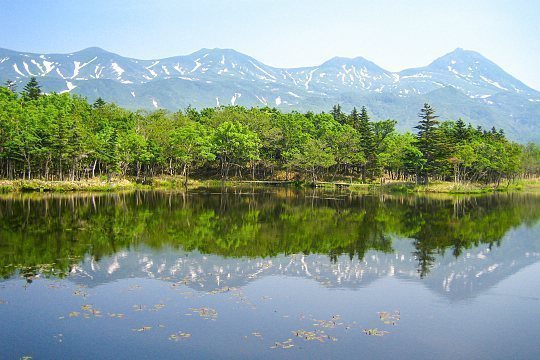
Top Destinations in Japan
By japan guide recommendation.
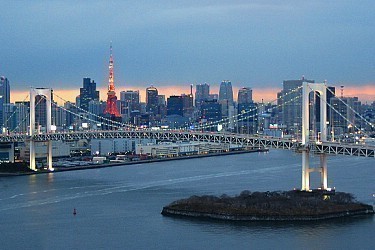

Touropia Travel
Discover the World
17 Best Places to Visit in Japan
By Becky Griswold · Last updated on June 7, 2024
Japan is quickly becoming one of the top travel destinations in the world. More and more people are traveling to the island nation every year, lured by the promise of fresh sushi, amazing train rides, safe cities, intriguing traditions, and quirky pop culture. But there’s more to Japan than cat and robot cafes; its many islands are surprisingly easy to travel around and well connected by railways, ferries and bus services.
Japan is a warm, welcoming and endlessly interesting travel destination with something for everyone. Learn about Ainu culture in the cold, snow-coated northern island of Hokkaido and discover the often forgotten Ryukyu culture in the tropical islands of Okinawa.
and the ancient wonders of the Edo capital of Kyoto. Embark on temple pilgrimages in Shikoku, explore the peaceful streets of Hiroshima or get lost in the never-ending glittering delights in the buzzing streets of Tokyo.
Map of Japan
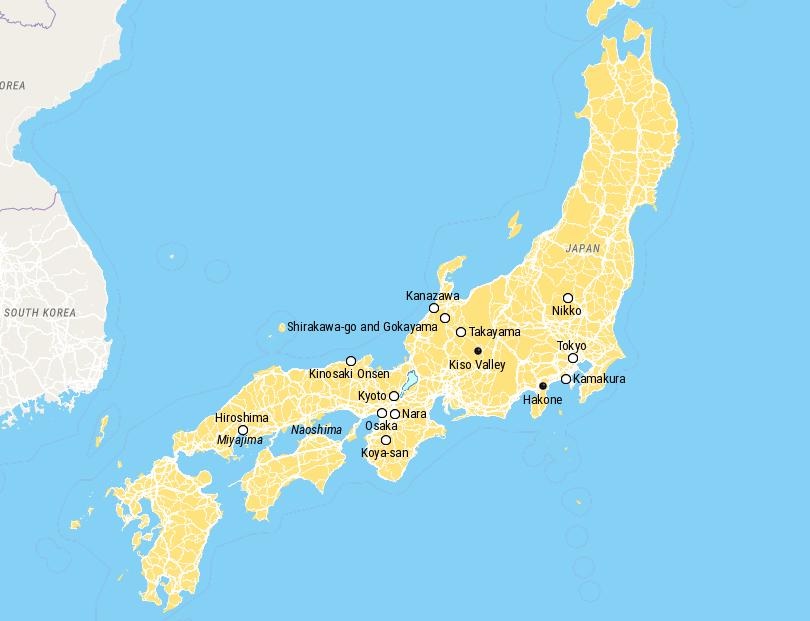
Some of the most popular places to visit in Japan can be found in the Edo capital of Kyoto with its ancient wonders. Embark on temple pilgrimages in Shikoku, explore the peaceful streets of Hiroshima or get lost in the never-ending glittering delights in the buzzing streets of Tokyo.
17. Kinosaki Onsen
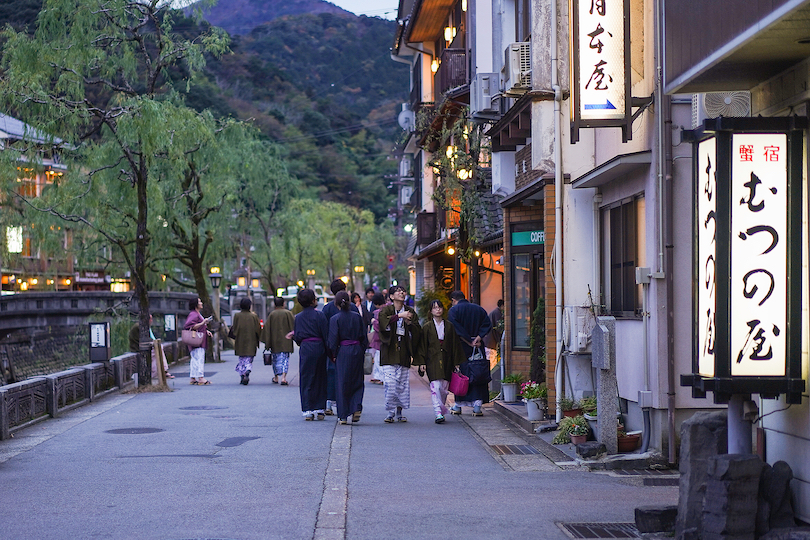
Famed for its fabulous hot springs, Kinosaki has been a popular onsen town since the eighth century. Set just inland from the Sea of Japan, its numerous bathhouses and traditional inns lie in the Kansai region of south-central Honshu.
Now considered to be part of the city of Toyooka, the small town is bisected by a lovely willow-lined canal, while the Maruyama River passes nearby on its way to the sea. In total, there are seven public onsen bathhouses for visitors to try out; their warm waters are reputed to have healing properties. With elaborate interiors, fine architecture, and pretty gardens, the hot springs are the main reason that people visit Kinosaki.
Staying in a ryokan is a quintessential part of this experience, and lots of the traditional inns can be found around town. In addition, Kinosaki also has lots of shops, cafes and restaurants that sell local handicrafts and tasty delicacies with the town being mainly known for its fresh seafood.
16. Naoshima
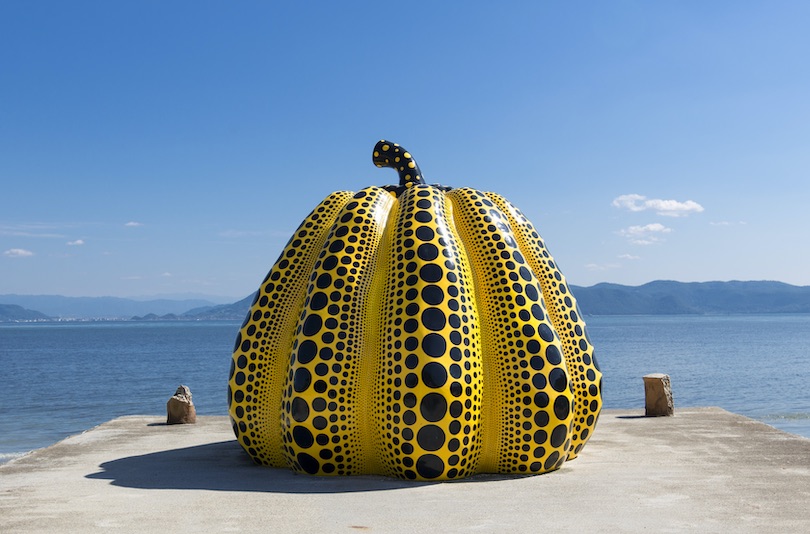
Surrounded by the sparkling waters of the Seto Inland Sea, the idyllic island of Naoshima lies between the main Japanese islands of Honshu and Shikoku. Due to its lovely scenery, fantastic contemporary art museums, and numerous outdoor sculptures , it is a very popular tourist destination.
Before being chosen as the location for the Benesse Art Site in the late 80s, Naoshima was home to a dwindling fishing community. The Benesse corporation based in nearby Okayama then set up some world-class art galleries , such as the Chichu Art Museum and Benesse House Museum. Set amid some sublime scenery, these exhibit some exquisite architecture and house important art collections, while innovative outdoor installations are also scattered around the island.
While there is not all that much to do in the town of the same name, Naoshima certainly has enough arresting art, architecture, and scenery to keep visitors entertained. Thanks to the Benesse project’s success, art museums and installations have also popped up on the other islands lying nearby.
15. Shirakawa-go and Gokayama
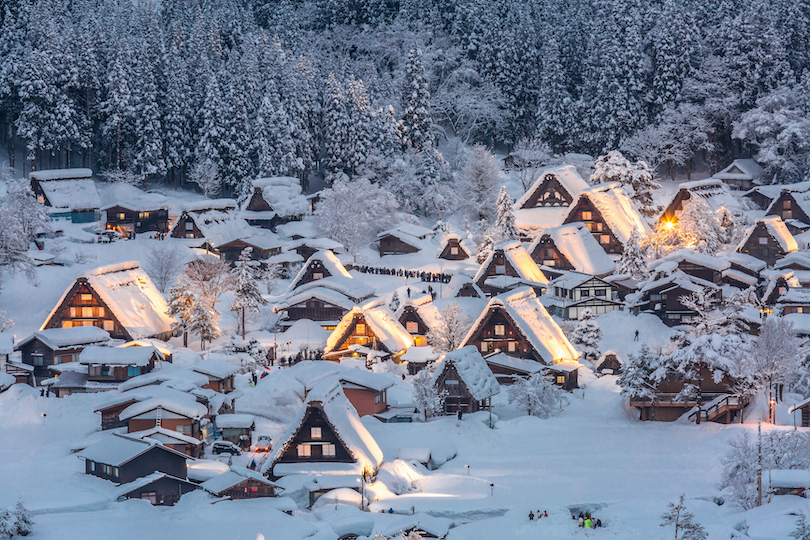
Lying amid majestic mountains with sweeping valleys and verdant forests all around, Shirakawa-gō and Gokayama are two of the prettiest villages in the whole of Japan. Famed for their spectacular settings and traditional thatched-roof farmhouses, they count among central Honshu’s most popular tourist attractions.
While this means they can get quite crowded, particularly during Golden Week and the cherry blossom season , the villages really are a treat to visit. This is because the distinctive gassho-zukuri buildings that look so stunning surrounded by fertile farmland and magnificent nature lend them a very charming, peaceful and rustic feel.
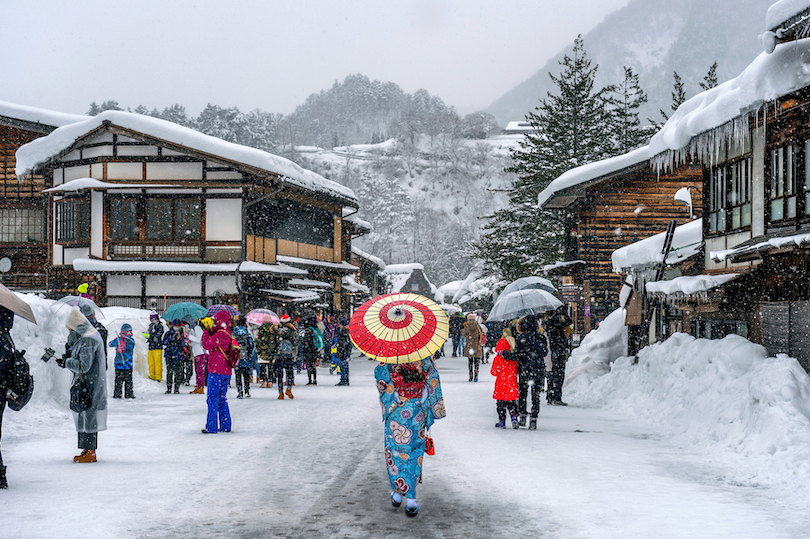
Besides taking in the incredible scenery and historic farmhouses, visitors can check out the Jim Homura Art Museum, buy some local handicrafts, and stay in a traditional ryokan inn . In addition to this, the mountains and forests surrounding Shirakawa-gō and Gokayama are home to scenic hiking trails, twinkling waterfalls, and breathtaking viewpoints.

Lying at the heart of one of the most populated metropolitan areas in the world, Osaka is set on the shores of Osaka Bay and is surrounded by more than ten satellite cities. The sprawling metropolis is the third-largest in Japan and has long been a major economic hub and important financial center.
While its endless concrete jungle is not all that pretty to look at, Osaka is considered the best place to eat, drink and party in Japan. Much of its nightlife is centered around the neon-lit Dotonbori district , which boasts plenty of restaurants, bars, and entertainment options. For shopping, Shinsaibashi is the place to go; endless department stores, boutiques, and malls line the covered shopping street.
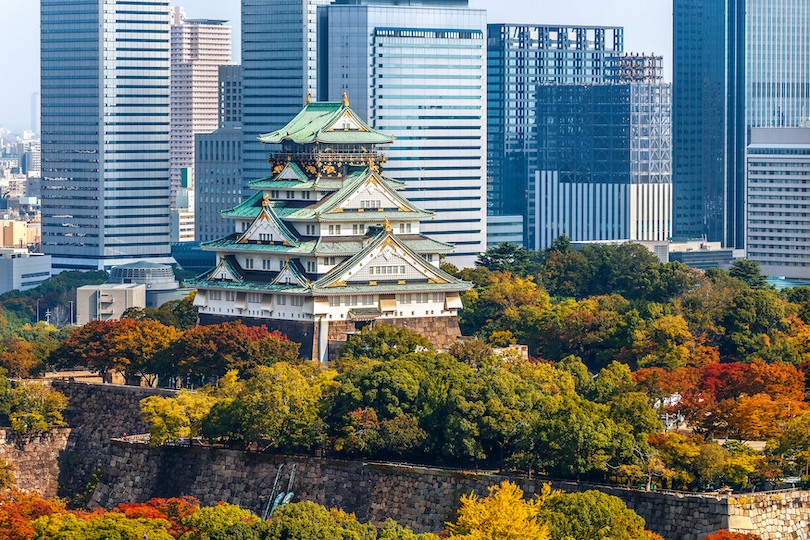
Although most people visit for its thriving culinary scene and nightlife, Osaka does have some interesting historical sights and landmarks that are worth checking out.
Its reconstructed castle , for instance, lies in a lovely park in the city center, while the Umeda Sky Building and Tsutenkaku tower count among its most recognizable sights. In addition, it boasts Sumiyoshi Shrine and Shitennoji Temple – two of the oldest religious sites in Japan.
13. Kiso Valley
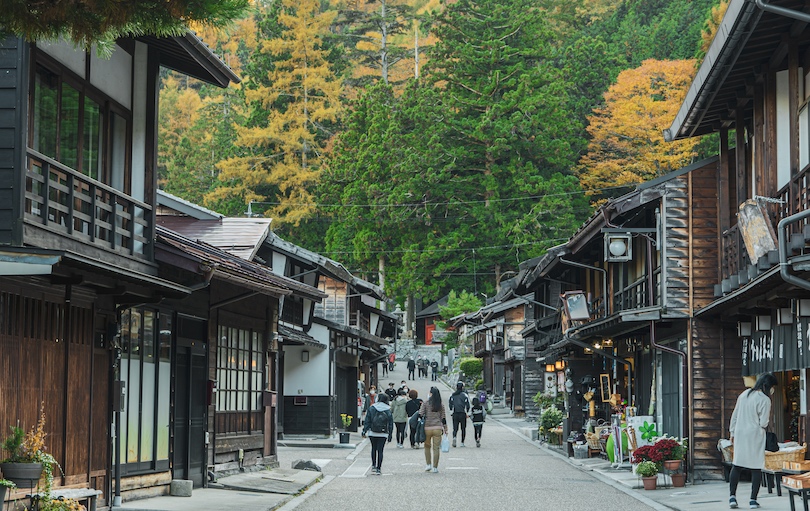
Once part of the historic Nakasendo trade route connecting Kyoto to Edo (present-day Tokyo), Kiso Valley is home to several charming old post stations as well as lovely scenery. Coated in thick forest and surrounded by steep mountains, the valley is centered around the Kiso River and lies in Nagano Prefecture in Central Japan.
Due to its well-preserved historical sights and dramatic mountain scenery , the valley is now a very popular tourist destination. One of its most famous and scenic stretches lies between the two Edo period post towns of Magome and Tsumago; many people choose to hike from one to the other. After strolling through verdant forests and crossing bubbling streams, there are plenty of atmospheric old buildings for you to take in and cozy ryokans for you to stay at.
Kiso Valley also has the charming post town of Nagai for visitors to check out, as well as delightful hiking trails that weave through the surrounding landscape.
12. Koya-san
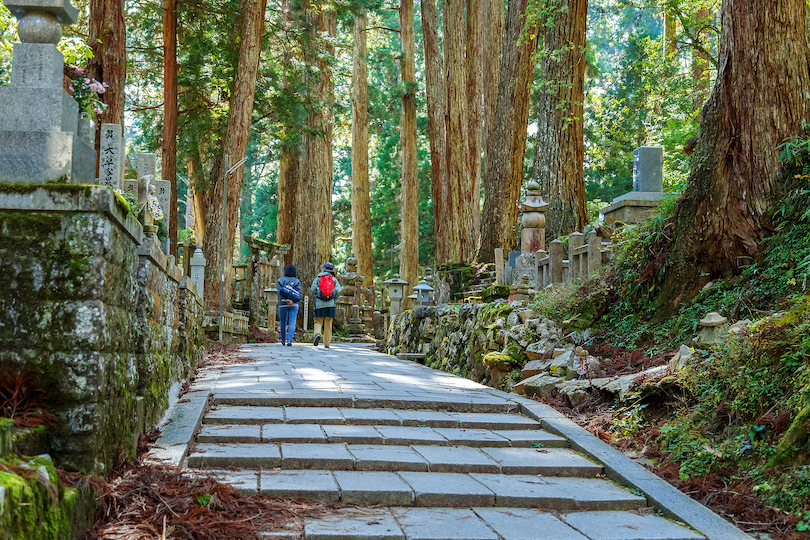
Located just to the south of Osaka in Wakayama Prefecture, Koya-san is primarily known as being the center of Shingon Buddhism . Edged by eight prominent peaks, the gorgeous mount is home to an abundance of temples, shrines and pagodas, as well as pristine nature and scenery.
First settled all the way back in 819 CE, the original monastery has since grown to include over 120 temples. Of these, Kongobu-ji , the head temple, is undoubtedly the most important and impressive with its centuries-old ceremonial halls, traditional buildings, and idyllic rock garden . Konpon Daito is also worth visiting for its lovely pagoda – as is the large and atmospheric graveyard of Okunoin.
While many people visit Koya-san as a day trip from Osaka , staying over and sleeping in one of the temples is an amazing way to experience monastic life on the mount. Besides visiting its numerous sacred sites and historic temples and shrines, there are loads of wonderful hikes you can do around the surrounding mountains and forests.
11. Ishigaki
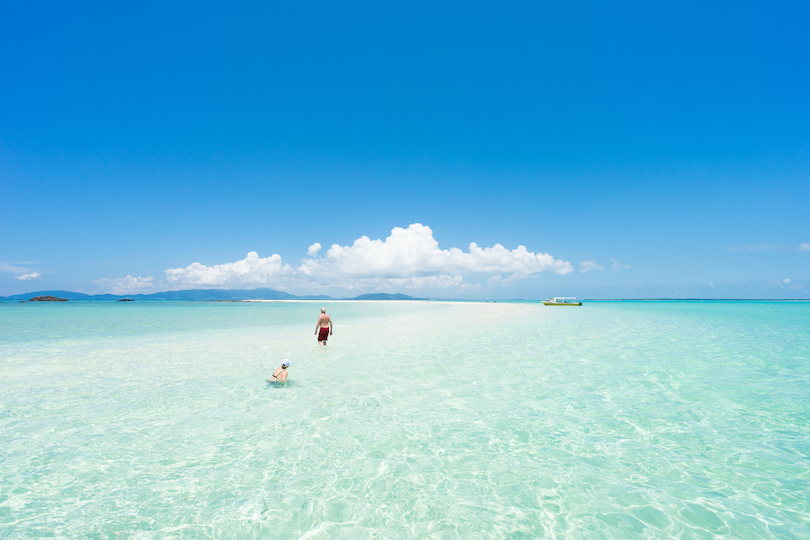
Located west of Okinawa, Ishigaki is Japan’s premier beach destination and makes a good base to explore the other islands in the Yaeyama archipelago . Blessed with Japan’s best beaches , it is particularly popular with families since the beaches at Fusaki and Maezato are net-protected.
Located 1,250 miles (2,000 kilometers) south of Tokyo, Ishigaki may not have the shrines and temples that other Japanese cities have, but it does have an exuberant nightlife for visitors who have the energy after a day of beachcombing, water sports or climbing Mount Nosoko.
10. Miyajima
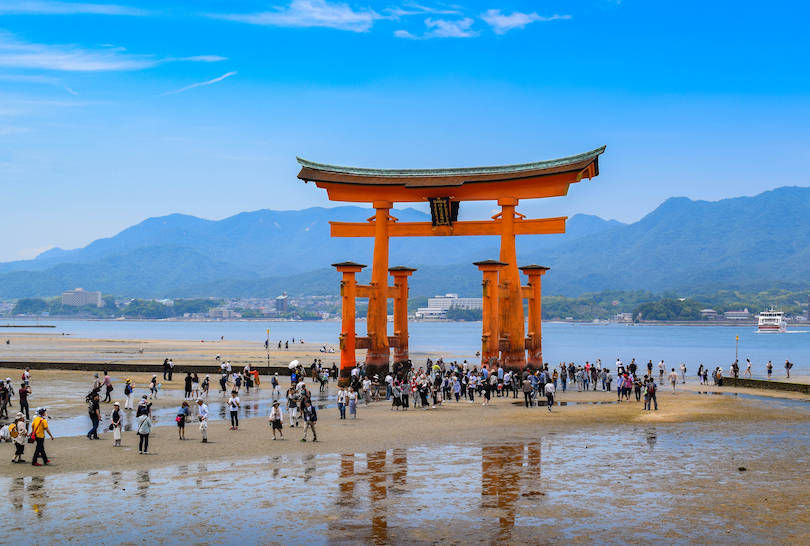
One of the most popular tourist destinations in the country, the small island of Miyajima lies in the northwest of Hiroshima Bay , surrounded by the Seto Inland Sea. Besides boasting one of the famed ‘Three Views of Japan,’ it is also home to some lovely scenery and a number of temples and shrines.
Miyajima – or ‘Shrine Island’ – is just the popular nickname for the island of Itsukushima, which has long been considered a holy place. Dominating its interior are the scenic and sacred slopes of Mount Misen , where you can find various Buddhist temples, Shinto shrines, and a fantastic five-story pagoda. Its gentle hills and lush forests make for some excellent hiking, and you’ll often come across tame deer wandering freely around the island.
Miyajima’s main attraction, however, is the ‘floating’ torii gate of Itsukushima Shrine that lies just off its shores. One of the most renowned and recognizable sights in Japan, it makes for some fabulous photos and attracts hordes of tourists every year.
9. Kanazawa
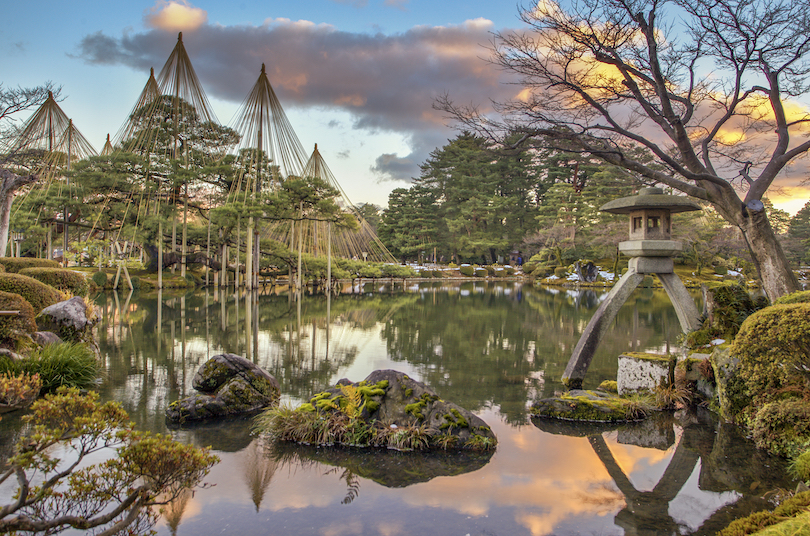
Located in the northwest of Ishikawa Prefecture, the historic city of Kanazawa lies between the wild waters of the Sea of Japan and the towering Japanese Alps. Long overlooked due to its remote setting, it is an increasingly popular destination and boasts a rich history, culture and heritage.
In the center of the city, you can find a fantastic centuries-old castle to explore, as well as charming and well-preserved samurai and geisha districts. Their narrow alleys are lined by traditional houses, cosy tea shops, and a number of atmospheric temples and shrines. Kanazawa is also home to some great museums and the busy Omicho Market, renowned for its fresh seafood.
Its most famous attraction is the lovingly landscaped Kenroku-en, which is considered to be one of the most beautiful gardens in Japan. Wonderful to visit at any time of year, it is home to a huge variety of trees and plants, with scenic ponds, bridges, and stone lanterns on display.
8. Hiroshima

Hiroshima, located on Honshu Island, is younger than many Japanese cities, less than 500 years old, but its fate was forever sealed in history on August 6, 1945, when it became the first city in the world to have an atomic bomb dropped on it.
Although more than 60 percent of the buildings in Hiroshima were destroyed, the city has managed to make an amazing recovery since that devastating blast. In fact, by 1974, the city had actually managed to double its pre-war population, and it has also become a popular tourist destination.
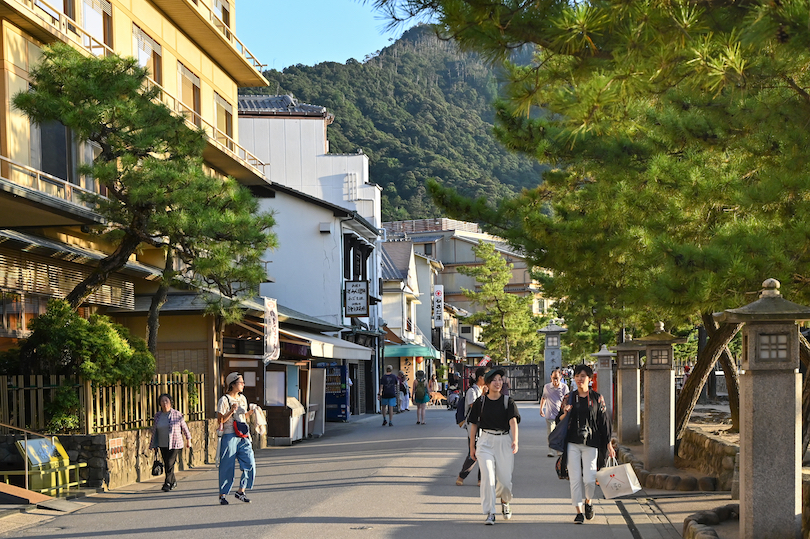
One of the most popular attractions in this city is the Hiroshima Peace Memorial Park, which was created in memory of all those who lost their lives or were injured by the atomic bomb. This large park is home to several interesting sites, including the Peace Memorial Museum where visitors can see the effect the bomb had on the citizens of Hiroshima.
Another must-see tourist site is the great Torii , a wooden shrine gateway that appears to be floating in the sea at high tide. The Torii is located on nearby Miyajima Island.
7. Kamakura
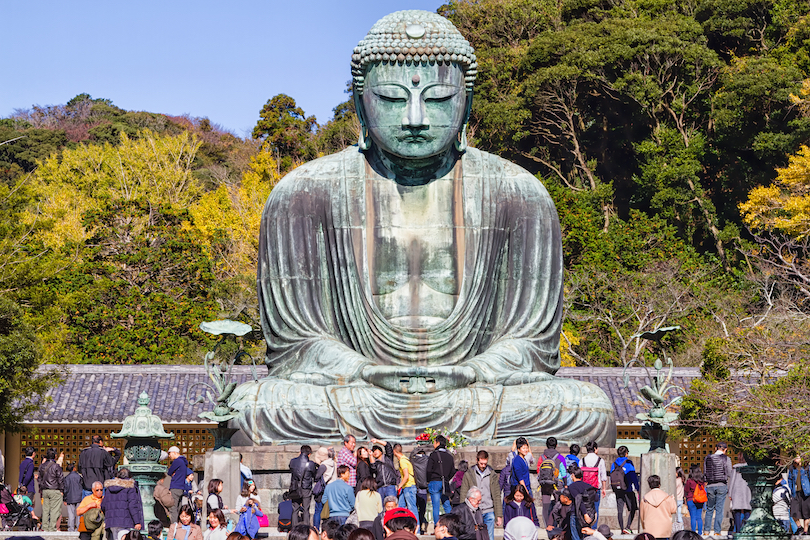
Set on the scenic shores of Sagami Bay, with forest-coated hills surrounding it, Kamakura is a top-rated destination and lies just an hour-long train ride to the south of Tokyo . As it was once the capital of Japan, the coastal city is home to many important landmarks and a plethora of beautiful temples and shrines.
Its defining symbol and most famous sight is the Great Buddha of Kamakura , which is 13.35 meters high. Made out of bronze, the mighty figure towers over its surroundings and is one of the city’s most famed and photographed attractions. The large Tsurugaoka Hachimangu Shrine also attracts crowds of visitors, as do the pretty and peaceful zen temples of Kenchoji and Engakuji.
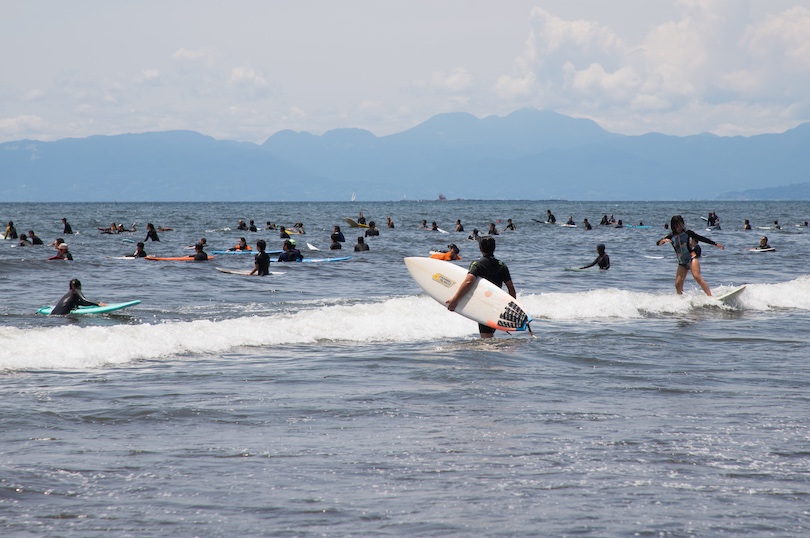
While Kamakura certainly has a lot of interesting historical and cultural sights on offer, the center of the city also boasts lots of fantastic shops and eateries. Many people also come to go hiking amidst its stunning nature or to enjoy sunbathing, swimming or surfing at one of its beautiful beaches.
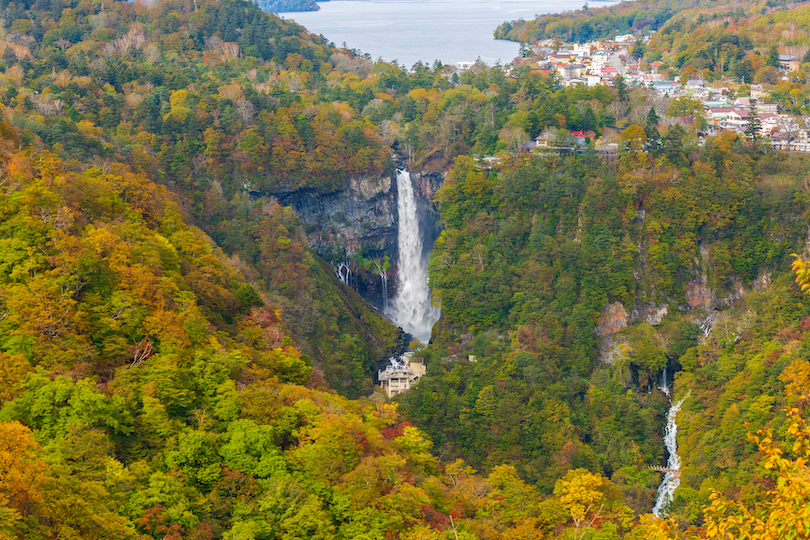
Located at the entrance to Nikko National Park , Nikko is set in a spectacular spot amid the mountains, with lush forests lying around it. Besides being famed for its scenery, the city boasts a wealth of important Shinto shrines and Buddhist temples and is located in Tochigi Prefecture.
Impressively, Nikko is home to two mausoleums of Tokugawa Shoguns ; these can be found at the extensive and extravagant Tosho-gu complex. Surrounded by towering cedars, the site showcases wonderful Edo-era architecture, with countless shrines, temples, and pagodas.
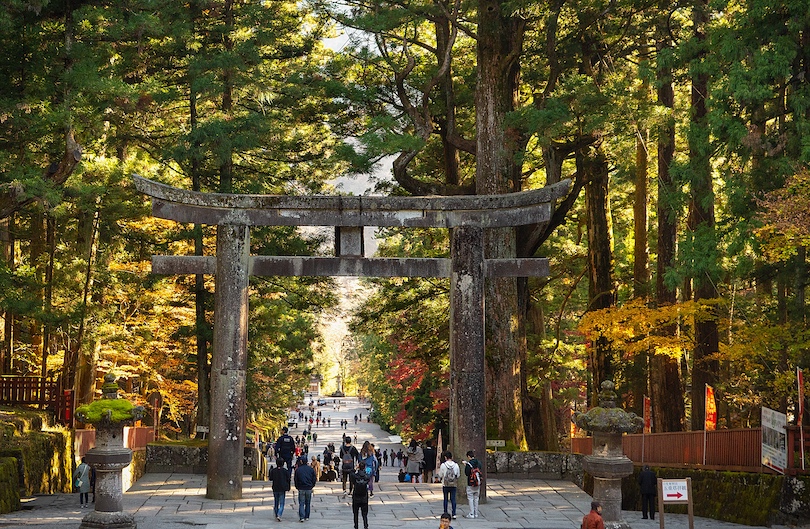
While the complex is undoubtedly Nikko’s main attraction , two of its most famous and photographed sights are the centuries-old Shinkyo Bridge and twinkling Kegon Falls, both of which are rightfully lauded for their beauty.
In addition to this, many people visit Nikko for the lovely nature and scenery surrounding it. Tucked away among its endless mountains and forests, you can find sparkling waterfalls and lakes , as well as bubbling streams and boiling hot springs. Very easy to visit from Tokyo, all of Nikko’s historical, cultural, and scenic sights lie just a two-hour train journey from the nation’s capital.
5. Takayama
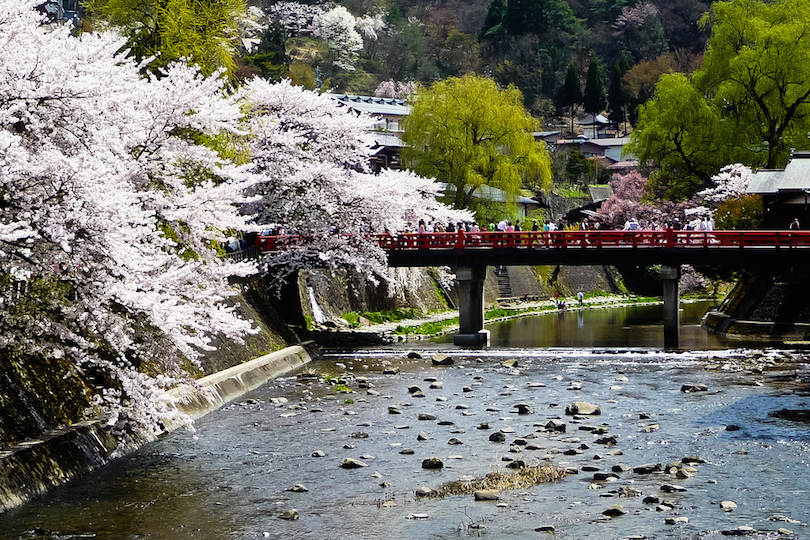
Nestled away among the northern Japanese Alps of Central Honshu, the small city of Takayama is a very picturesque place. Famed for its traditional townscape, stunning riverside setting, and unique culture and customs, it is fast becoming one of the region’s most popular attractions .
In its well-preserved historic quarter, visitors can find lots of exquisite architecture dating to the Edo period , as well as little sake breweries, boutiques, and fantastic old merchants’ homes. Shrines, temples and museums abound in Takayama, while numerous morning markets can be found near to the river.
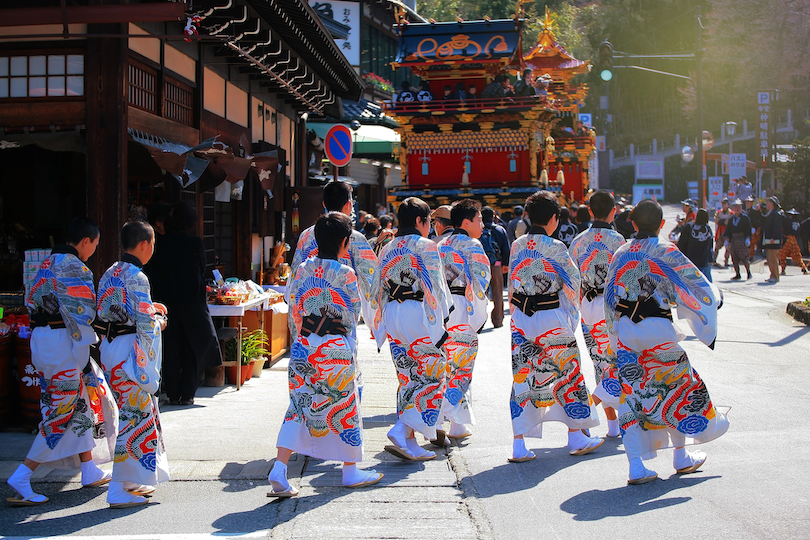
At the Hida Folk Village , you can watch artisans make local handicrafts and wander around a recreated mountain village, full of traditional thatched-roof farmhouses.
Due to its isolated setting, Takayama developed its own rich culture and traditions, as evidenced by the two famous festivals of Sanno Matsuri and Yahata Matsuri. During the festivities, large and lavishly decorated floats parade through the city, which is magically lit up by lanterns. Many people visit during the festivals for the lively ambience and atmosphere.
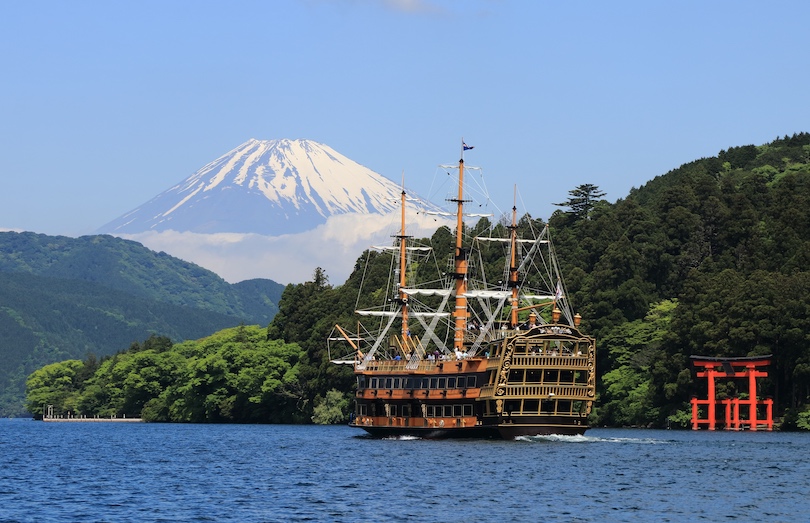
Boasting beautiful mountain scenery, relaxing hot springs, and a number of world-class art museums, Hakone is one of the most popular tourist destinations in Japan. Located just a short train ride to the southwest of Tokyo, the town lies on the shores of tranquil Lake Ashi, with the iconic Mount Fuji rising in the distance.
A pleasant and picturesque place, Hakone is home to many lonsens and ryokans, so visiting one of the bathhouses and staying in a traditional inn is a must when in town. In addition, exquisite sculptures and artworks can be found in its numerous galleries and museums, while small shops and boutiques sell locally made handicrafts.
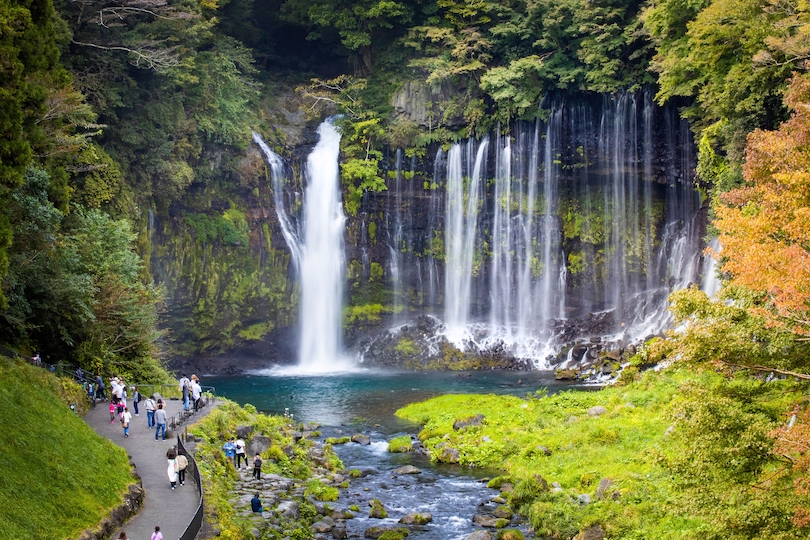
One of the most popular things to do is take a boat ride on one of the pirate ships that sail around Lake Ashi . From aboard their decks, you can enjoy breathtaking views of the lake’s stunning scenery and majestic Mount Fuji in the distance.
While Hakone can get quite crowded, especially during weekends and holidays, Fuji-Hakone-Izu National Park has loads of peaceful hiking trails for you to explore if you want to escape the crowds.
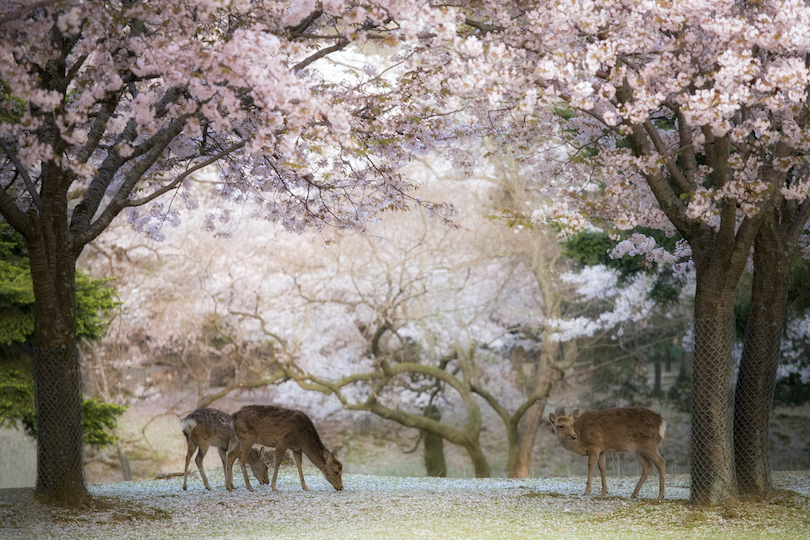
Nara, once known as Heijo, was the first permanent capital of Japan, established in 710. The capital was moved to Nagaoka in 784 when the government was threatened by powerful Buddhist monasteries. Located less than an hour from Kyoto , the city boasts a plethora of important and impressive historic sights, with countless temples and shrines.
Most of its main attractions can be found in the gorgeous, green Nara Park , also home to the city’s multitude of tame deer that amble about asking tourists for food. Here you’ll find the multi-storey pagodas of Kofuku-ji and splendid stone lanterns of Kasuga Taisha, as well as a couple of lovingly landscaped Japanese gardens.

The highlight, however, is Todai-ji Temple with its awe-inspiring architecture and enormous Great Buddha.
Besides its plethora of well-preserved historic buildings , Nara has a couple of excellent museums for visitors to check out, as well as the charming old merchant district of Naramachi. With so much history, art, and architecture on show, the former capital is certainly not to be missed out on.
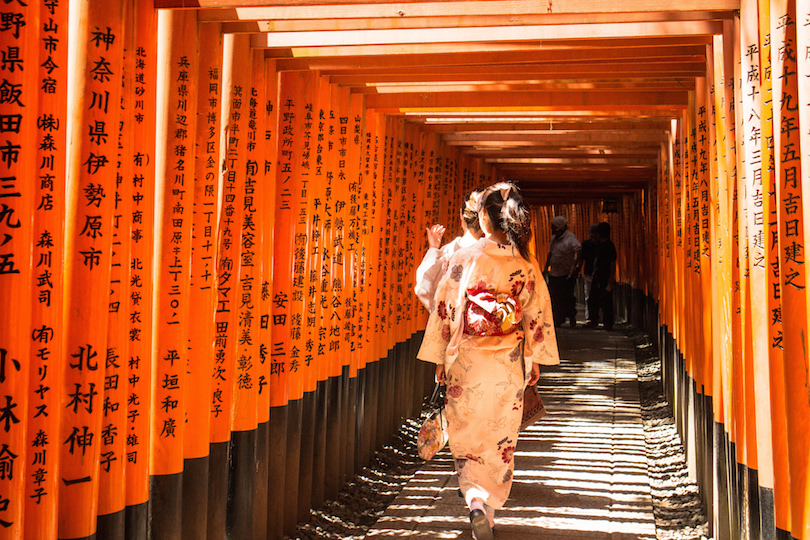
Kyoto today is the capital only of Kyoto prefecture, but it once served as the imperial capital of Japan for more than 1,000 years. If you’re interested in catching a glimpse of old Japan , Kyoto should definitely be on your itinerary.
Because of its historical significance, this city was largely spared much of the destructive bombing that occurred throughout the rest of Japan during World War II.
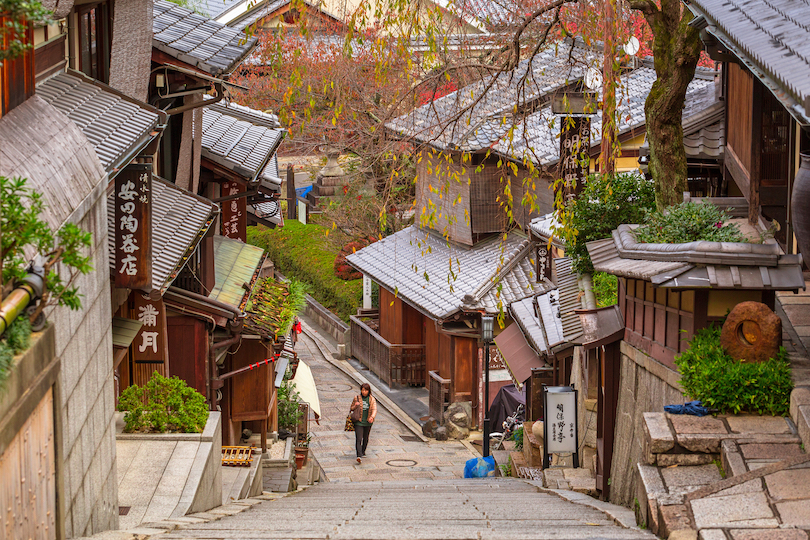
Located on central Honshu Island, this city of 1.5 million people, also boasts more than 1,000 temples and shrines, including one of the most photographed, the Golden Pavilion . In addition to the large number of religious structures, Kyoto is home to gorgeous Nijo Castle , the former residence of the Tokugawa shoguns.
Higashiyama, a well-preserved historic district and Gion, Kyoto’s famous geisha district are also must-visit attractions . But Kyoto is not just about history, this city also boasts a world-class aquarium and for fun, you can learn how to become a Japanese assassin at the Ninja Training Dojo.

Travelers who like to mingle with people will love Tokyo. The Japanese capital’s metropolitan area is the most populous in the world. From viewing spring cherry blossoms in traditional gardens to the fish market at Tuskiji. Tokyo blends the ancient with the new, from shrines to karaoke bars.
It’s hard to be bored in frenetic, fast-paced Tokyo where even a walk down the streets can be interesting. This city’s Shibuya intersection , for example, is famous for its controlled mob crossing. Another interesting neighborhood in Tokyo is Harajuku, known throughout the world for its amazing street fashion, including but definitely not limited to goth-Lolitas, punk or kawaii schoolgirls.
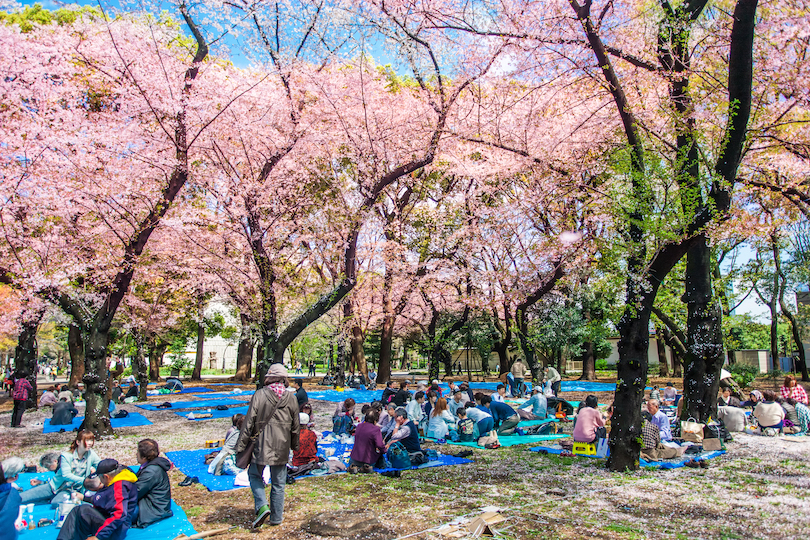
Tokyo is also home to several world-class museums and numerous shrines, including the most famous, the Meiji Shrine, and Sensoji Temple, one of its oldest.
Then there is the Tsukiji Fish Market . In most cities, a fish market wouldn’t be a tourist attraction, but this is the world’s busiest and largest, and it also happens to be on the itinerary of just about every visitor to Tokyo. Plus, it is one of the best places on the planet to get extremely fresh sushi. One caveat, because you’ll be visiting the fish market early in the morning, you’ll be having your sushi for breakfast.
Other interesting attractions in Tokyo include the Imperial Palace, the residence of the emperor, and Tokyo Tower. Fortunately, getting around Tokyo is easy as this city boasts a large and relatively easy-to-use transit system. If you have the time, you’ll definitely want to consider taking a day trip to beautiful Mount Fuji.
Japan Travel Video
Share this post:.

12 Most Beautiful Castles in Japan


9 Most Amazing Hotels in Japan

12 Most Beautiful Volcanoes in Japan

10 Most Beautiful National Parks in Japan

15 Best Cities to Visit in Japan

9 Most Beautiful Regions in Japan

10 Largest Islands in Japan
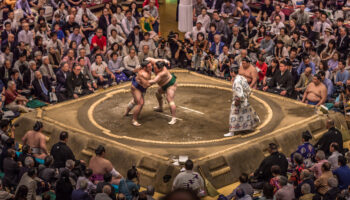
27 Top Tourist Attractions in Japan
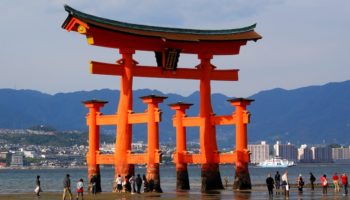
7 Best Day Trips from Kyoto
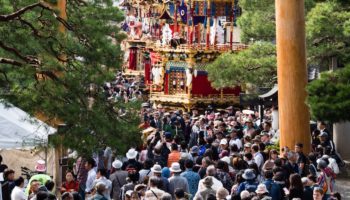
10 Best Things to do in Takayama, Japan
Reader interactions.
July 31, 2019 at 7:26 pm
The article helped me a lot to gain information about the places. The map marked with the places from article made the work easy to know about the locations. Where to stay option was unique and will surely help while visiting there. Thank you for this amazing article.
June 1, 2018 at 12:48 pm
Hiroshima, but not Miyajima?
March 20, 2017 at 7:52 am
List is really fascinating, How much time would be needed to visit all the above mentioned places. planning a visit in november this year.
June 17, 2016 at 8:29 am
Been to Kyoto, Nara, Kamakura and Tokyo in the list. Really really love how you guys have ranked the top 10 by “areas” because most other websites ranks by “attractions” which really frustrates me.
I’ve been to Japan twice and I already visited the popular ones that people usually goes to like Osaka, Mt Fuji and Nagoya. I’m planning a third trip with the intention of visiting other areas like Takayama and Kanazawa but it’s really hard to find websites introducing the less visited areas. So REALLY REALLY LIKE how the less visited places were also included.
December 11, 2015 at 5:32 am
I have only been to 3 of the places mentioned,but many many others not mentioned. For me Kyoto beats,Tokyo and Nara…but then I have spent much more time in Kyoto and find it easy to get around.
Kyoto has so many beautiful temples,shrines and gardens and it is a relaxing place to walk around. I suppose a feature here is the Gion area,in the CBD,where you will certainly see the Maiko walking around in kimono, adding that special touch of old Japan. Of course, you find Tokyo exciting and Nara is well worth a visit;especially as it is so close to Kyoto. Visit all 3 if you can.
May 16, 2015 at 8:36 am
Japan, the only asian country in G7, great country also friendly people
Leave a Reply Cancel reply
Your email address will not be published. Required fields are marked *
This site uses Akismet to reduce spam. Learn how your comment data is processed .
- The 21 Most Iconic Japanese...
Top Landmarks in Japan You Must Visit

Tokyo Writer
Explore Japan’s most iconic landmarks, both natural and man-made, from the ancient temples of Kyoto to the bright neon lights of Osaka .
Did you know you can now travel with Culture Trip? Book now and join one of our premium small-group tours to discover the world like never before.
1. Shibuya Crossing
Architectural Landmark

Often called the world’s busiest pedestrian scramble, Shibuya Crossing has become a symbol of modern Tokyo , and one of the most iconic urban landmarks on the planet.
2. Arashiyama Bamboo Forest
Natural Feature

The beauty and mystery of the Arashiyama Bamboo Grove, on the outskirts of Kyoto , has never been replicated anywhere else on Earth.
3. Itsukushima Shrine
Historical Landmark

4. Dotonbori

While the bright lights of Tokyo remain Japan’s most famous, Osaka’s downtown Dotonbori district rivals anything the capital has to offer when it comes to neon signs and thrilling nightlife. Dotonbori at night is a bright as it is in the day, and its incredible selection of restaurants attracts foodies the world over.

Become a Culture Tripper!
Sign up to our newsletter to save up to $1,656 on our unique trips..
See privacy policy .
5. Himeji Castle

Himeji Castle is Japan’s most famous castle and one of the best surviving examples of feudal Edo architecture. It was one of the country’s first Unesco World Heritage Sites, and has a storied past dating back to the 14th century, keeping a watchful eye over its namesake city.
6. Mount Fuji
Hill Station

7. Shirakawa-go

A Unesco World Heritage Site, the picturesque village of Shirakawa-go is one of Japan’s top winter destinations . With the village lit up and covered by a blanket of snow, it’s a place unlike anywhere else in Japan.
8. Ashikaga Flower Park

Ashikaga Flower Park’s stunning purple wisterias attract thousands of visitors each year. The wisteria bloom in late April to early May, and the park is easily reached from Tokyo.
9. Nara Park

Once thought to be messengers of the gods, the local sika deer now roam free in Nara Park and have become an icon of the city. Some are even friendly enough to bow when you offer them a cracker.
10. Fushimi Inari Taisha

11. Amanohashidate

Amanohashidate is a sandbar in Miyazu Bay, ranked as one of the Three Views of Japan (as chosen by 17th-century scholar Hayashi Gaho).
12. Kobe Port

Once the world’s busiest port, Kobe was decimated by the 1995 earthquake and now stands as evidence of the people’s resilience.
13. The Hells of Beppu

The Hells of Beppu are a designated Scenic Place of Beauty by the Japanese government. It’s aptly named, as the water here is way too hot to go for a dip.
14. Matsushima

The group of islands known as Matsushima in Miyagi prefecture have long been cherished for their beauty, and are also one of the Three Views of Japan.
15. Hiroshima Peace Park
Park, Architectural Landmark

16. Naoshima

17. Daibutsu
Architectural Landmark, Historical Landmark

The Daibutsu, or Great Buddha, can be found in Nara , in the Buddhist temple Todai-ji. There are many Daibutsu scattered throughout the country, but this has garnered the most fame. This National Treasure is well over 1,000 years old.
18. Kyoto's Machiya
Japan’s historic machiya are mostly concentrated in Kyoto. These traditional wooden townhouses are responsible for much of that ancient city’s charms, including the famous Gion and Pontocho geisha districts.
19. Jigokudani Monkey Park

20. Kinkaku-ji
Botanical Garden, Park

This unique golden temple has become one of Kyoto’s most famous attractions. The extravagant gold leaf tower looks over a large pond and picturesque Japanese garden.
21. Tokyo Tower

22. Lake Kawaguchiko
The Fuji Five Lakes also include Yamanakako, Saiko, Shojiko and Motosuko, but Kawaguchiko is the most easily accessible. All of the lakes boast stunning views of Fuji’s snow-capped peak, and the embellishment of springtime cherry blossom or auburn fall foliage really makes for a spectacular sight. Recommended by Gethin Morgan .
23. Tsukiji Fish Market
Market, Shop

Fish plays a huge part in Japanese cuisine, and its bustling fish markets have been a staple of Japanese life for centuries. The sprawling stalls of Tsukiji are perfect for witnessing this first hand, just be prepared to hold your nose every now and then… Recommended by Gethin Morgan .
24. Osaka Castle

25. Studio Ghibli Museum

Not many museums double up as landmarks, but this place has been designed with the same creativity and attention to detail as each of Studio Ghibli’s magical animated films. Recommended by Gethin Morgan .
26. Tokyo Skytree

27. Zenkoji Temple

Wherever you go in Japan, you’re likely to discover plenty of beautiful temples, but 7th Zenkoji is one of the most important and revered in the whole country, dating back to the 7th century, and housing the first Buddhist statue ever brought to Japan. Recommended by Gethin Morgan .
28. Nagasaki Peace Park
The tragedies wrought by the atomic bombs dropped in 1945 will never be forgotten, but the struggles of Nagasaki are often overshadowed by the horrors of Hiroshima. This park, like its contemporary further north, is a tranquil and commemorative space, designed as a quiet but powerful memorial to the city’s collective strength. Recommended by Gethin Morgan .
29. Kegon Falls

The city of Nikko and its surrounding national park are not short of epic sights, from lavishly decorated shrines to vast lakes, woodlands and mountains. It’s also home to a series of thundering waterfalls, most spectacularly Kegon, where the water drops for around 97m. This place is best seen when surrounded by colourful autumn leaves. Recommended by Gethin Morgan .
30. Sangenjaya

The lively back alleys of this district offer a glimpse into the real Tokyo. Full of character and life, the area’s tightly packed streets are full of vibrant bars and eateries – best explore in the evening, of course. Recommended by Gethin Morgan .
Want to know the difference between a ryokan, machiya and a minshuku ? Discover our guide for more information.
Culture Trips launched in 2011 with a simple yet passionate mission: to inspire people to go beyond their boundaries and experience what makes a place, its people and its culture special and meaningful. We are proud that, for more than a decade, millions like you have trusted our award-winning recommendations by people who deeply understand what makes places and communities so special.
Our immersive trips , led by Local Insiders, are once-in-a-lifetime experiences and an invitation to travel the world with like-minded explorers. Our Travel Experts are on hand to help you make perfect memories. All our Trips are suitable for both solo travelers, couples and friends who want to explore the world together.
All our travel guides are curated by the Culture Trip team working in tandem with local experts. From unique experiences to essential tips on how to make the most of your future travels, we’ve got you covered.

Guides & Tips
Top tips for travelling in japan.

Film & TV
The best japanese movies to watch on the bullet train.

How modern art revitalised the city of Towada, Japan

Tomamu: a secret skiing spot in the heart of Hokkaido

Rediscover Japan with its Borders Fully Open

The Best Solo Trips to Take in Your 30s

Introducing Culture Trip's Rail Trips

How Much Does a Trip to Japan Cost?

The Best Rail Trips to Book this Year

See & Do
The best places to visit with culture trip this autumn.

How to Experience Off-the-Beaten-Track Japan by Bullet Train

The Ultimate Guide to Getting around Japan
Culture trip spring sale, save up to $1,656 on our unique small-group trips limited spots..

- Post ID: 1617075
- Sponsored? No
- View Payload
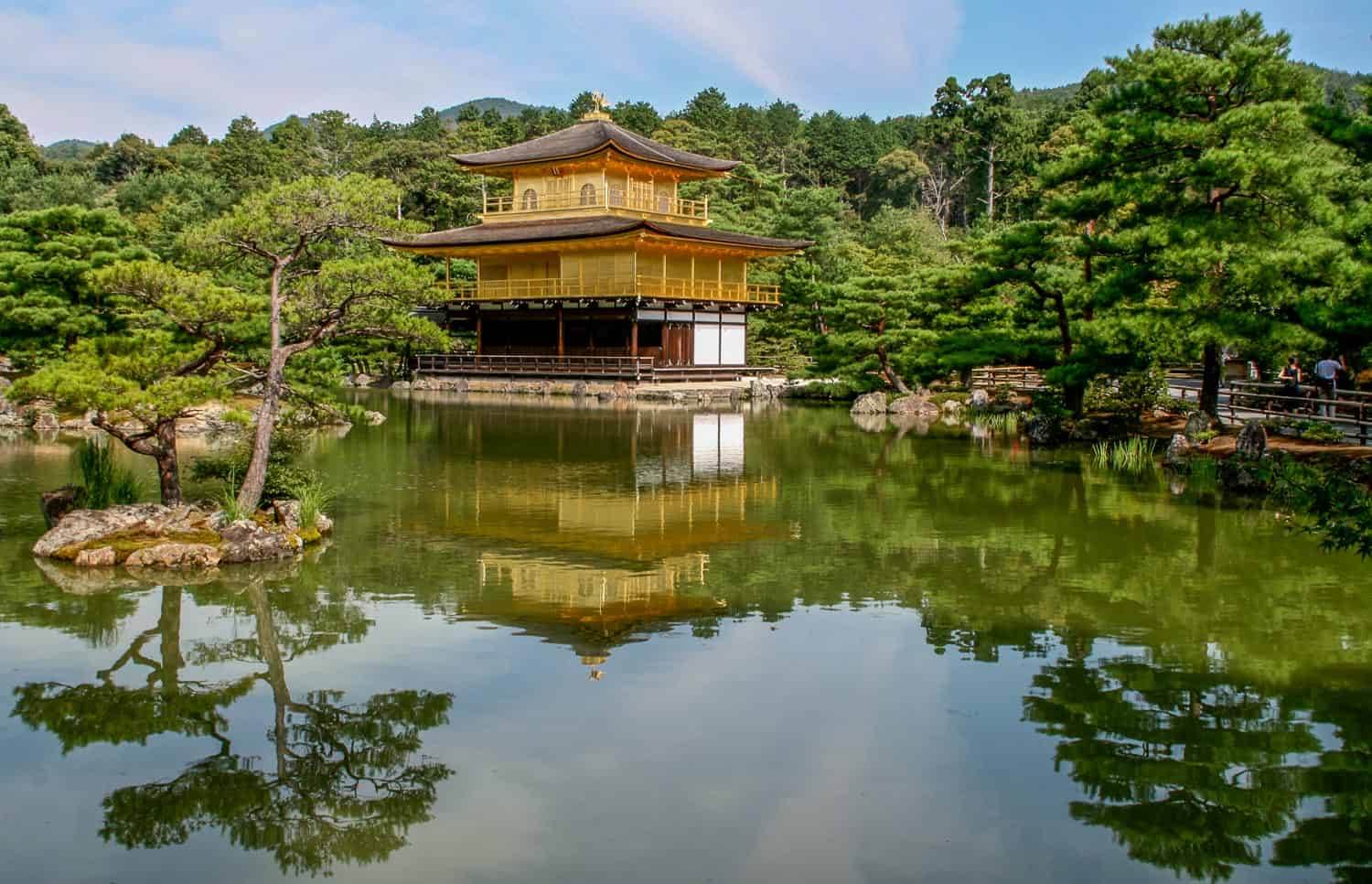
16 Unmissable Places to Visit in Japan in 2024
This page contains affiliate links. Please read our disclosure for more info.
Japan is somewhere I think everyone should visit. From futuristic skyscrapers to tranquil bamboo forests and neon arcades to serene temples, it’s like nowhere else on the planet.
The food is incredible, the people are ultra polite, and it has one of the most efficient public transport systems in the world. We love the combination of ease of travel and glorious bewilderment.
Japan has so much to offer but where should you start? These are our picks for the 10 best places to visit in Japan, perfect for your first or second trip to the country (plus extra suggestions for the repeat visits that are likely to happen!).
I’ve included our favourite things to do in each place, how long to spend there, and where we stayed. At the end of the post you’ll find a map of all these Japan destinations to start planning your route.
I recommend mixing a few of the popular cities (most people won’t want to miss Tokyo and Kyoto) with some quieter, more rural places in Japan to see a different side of the country and take a break from the crowds.
Video of Japan Must Sees
Top places to visit in japan, more amazing japan destinations, and a few more places to go in japan, best places to visit in japan map, japan travel tips.
Watch our short video for ideas on where to go in Japan for an amazing trip.
Back to Contents
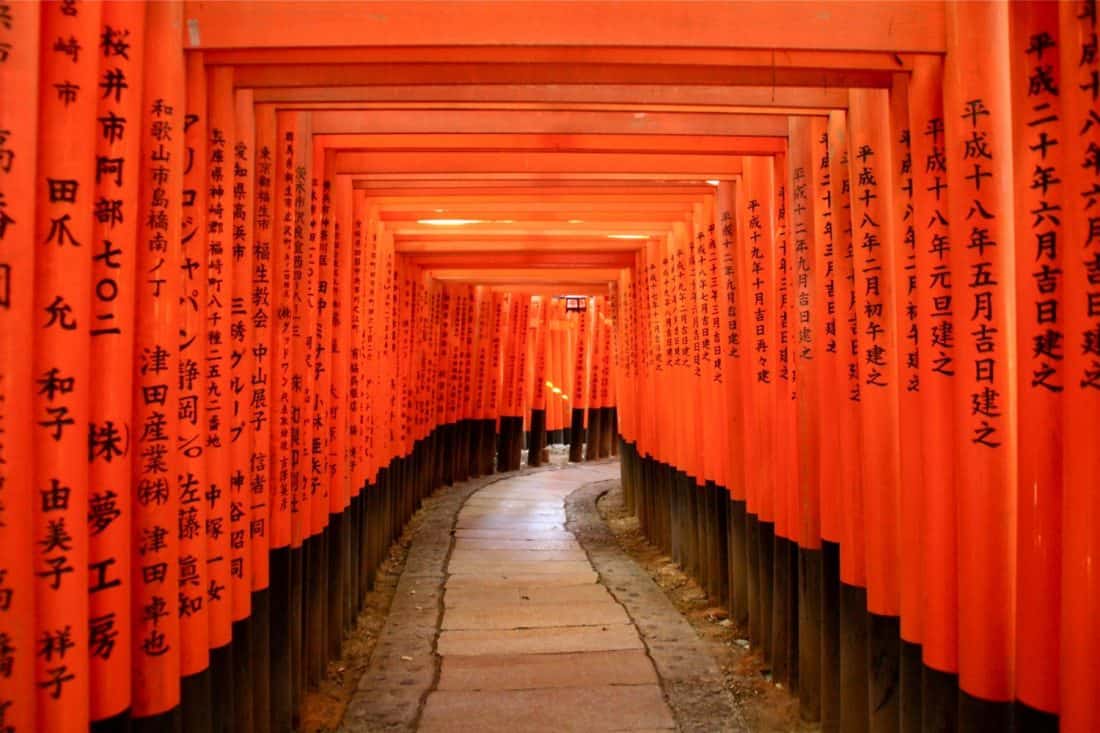
If you only have time for one Japan destination, make it Kyoto.
This is traditional Japan as you imagined it—geisha in brightly coloured kimonos emerging from wooden teahouses, forests of bamboo, temples and shrines in gold and silver and scarlet, raked gravel Zen gardens, intricate feasts served on lacquered plates, graceful tea ceremonies, and markets full of intriguing but unidentifiable ingredients.
The concrete high-rises of downtown Kyoto can be disappointing, so head out towards the mountains to the surrounding neighbourhoods where you’ll find narrow stone streets, old wooden houses, monks in flowing robes, and the sounds of chanting and gongs from the many temples and shrines.
Gion is the place to spot geisha, Higashiyama has many beautiful temples to explore, and Arashiyama, up in the western hills, is one of the most traditional neighbourhoods and home to bamboo groves, quirky temples, and monkeys.
Kyoto is one of the top Japan tourist spots, so try to visit the popular temples early in the morning as they do get crowded.
In Kyoto don’t miss:
- Wandering through the red torii gates of Fushimi Inari shrine.
- Drinking matcha in a traditional tea ceremony. We loved Tea Ceremony Ju-An at Jotokuji Temple.
- Learning to cook traditional Japanese cuisine in a Kyoto cooking class .
- Taking the train to the village of Kibune and walking across the valley to the beautiful Kurama-dera temple.
- Retreating from the busy streets of Gion to the magical Yasaka-jinja at night.
- Strolling the Philosopher’s Path.
- Experiencing Zen Buddhist cuisine at the Tenryu-ji temple.
- Getting off the beaten track at the quirky Otagi Nenbutsuji temple .
- Exploring these magical Kyoto cherry blossom spots if you visit in late-March or early-April.
- Enjoying the magnificent autumn colours if you visit in mid to late-November (Eikando and Enkoji are our favourite temples in autumn).
How Long to Spend: 3 nights minimum but 5 nights would be better. We’ve spent two months in Kyoto and still haven’t done everything! A longer stay also allows you to avoid the crowds more easily (you have more early mornings available) and take some of these wonderful day trips from Kyoto .
Read: Our post on the many amazing things to do in Kyoto (and how to avoid the crowds) and our guide to Kyoto’s temples and shrines and the best vegetarian restaurants in Kyoto
Where to stay in Kyoto: For a traditional ryokan, we loved our huge room with private bath overlooking the garden at Ryokan Yachiyo near Nanzenji temple (choose a suite not a standard room). At central Sora Niwa Terrace we enjoyed the amazing view from its onsen and rooftop bar. Or in a quiet part of Gion, Hotel The Celestine is stylish and close to temples. Find more accommodation in Kyoto here .
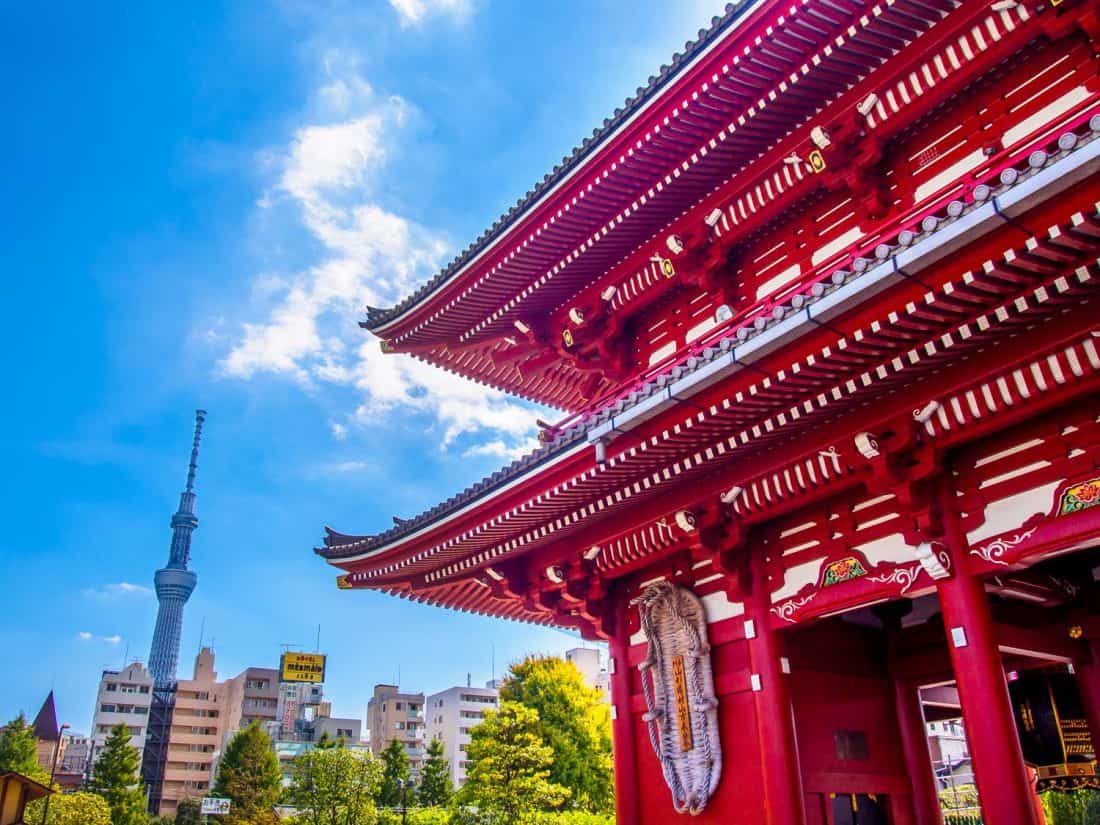
If Kyoto is the heart of traditional Japan, Tokyo is its ultramodern counterpart.
It’s here you’ll find the skyscrapers, noisy arcades, busy pedestrian crossings, quirky youth fashions, and many many incredibly delicious restaurants.
If all you do in Tokyo is eat, you’ll have an amazing time—even as vegetarians we ate so well.
Tokyo is also home to some of the weirdest activities we’ve ever done. From themed cafes (cats, owls, maids, robots, goats—you name it, Tokyo has it) to sensory-overload shows and arcades to cos-play go-karting.
On my first trip to Tokyo I was overwhelmed by the sprawling city and couldn’t help comparing it unfavourably to Kyoto.
On repeat visits I’ve grown to love the city (the food certainly helped) and while it isn’t as attractive as Kyoto, there is so much to do that you won’t want to skip it.
In Tokyo don’t miss:
- Driving a go-kart on the real roads while dressed as your favourite character. Insanity but so much fun!
- Eating in a tiny restaurant on atmospheric Memory Lane in Shinjuku .
- Gazing at the 360º skyline from the Shibuya Sky observatory (go at sunset for day and night views)
- Walking across the famous Shibuya Crossing.
- Gawping at the outrageous outfits on Takeshita Street in Harajuku.
- Visiting the brilliant DisneySea (our favourite Disney park in the world!) or neighbouring Tokyo Disneyland (or both if you have two days spare).
- Immersing yourself in the colourful digital art museum, TeamLab Planets (and don’t miss Uzu vegan ramen afterwards).
- Watching sumo wrestlers train— we did this morning sumo stable visit and it felt such an honour to see these impressive athletes close up.
- Drinking green tea at the relaxing Sakurai Japanese Tea Experience (the tea course is worth it).
- Exploring the cool neighbourhood of Shimokitazawa for cafes, vintage clothes, and record stores.
How Long to Spend: 3 – 5 nights or longer if you want to take day trips (such as to Nikko, Kawaguchiko or Hakone (for Mt Fuji), and Kamakura). We’ve spent over 6 weeks here on various trips and still find new things to do. If time is limited, I would allocate more time to Kyoto than Tokyo.
Read: 23 cool things to do in Tokyo and the best vegetarian restaurants in Tokyo .
Where to stay in Tokyo: Read why I think Shinjuku is the best area to stay in Tokyo . My top pick is Hotel Century Southern Tower next to Shinjuku Station—our panoramic king room had an incredible view and was more spacious than most Tokyo hotel rooms. Or splurge on the luxurious Hotel Park Hyatt where the film Lost in Translation was filmed. Search for hotels in Tokyo here .
Top tip: Consider buying a Japan Rail Pass in advance as it’s so easy being able to hop on and off trains all over the country. Read our Japan Rail Pass guide for full details.
More Tokyo, Direct to your Inbox!
Thank you for subscribing! You should receive an email from us very soon. Click on the link in the email to confirm your subscription.
3) Takayama

Takayama is an utterly gorgeous small town on the edge of the Japan Alps and one of the best less-visited places to go in Japan.
I loved wandering the historic centre full of traditional wooden houses, colourful shrines, neatly shaped trees, and bright red bridges over the river.
In Takayama don’t miss:
- Wandering the old town in the early morning before the crowds arrive.
- Buying delicious fruit from the morning markets.
- Snacking on mitarashi-dango (rice balls grilled in soy) from a street stall.
- Seeing the extravagant floats at the Festival Floats Exhibition Hall.
- Visiting the Hida Folk Village to see traditional thatched houses.
- Cycling through the countryside with Satoyama Experience .
How Long to Spend: 2-3 nights. We had 2 nights and wished we’d had longer because there’s lots to do in the surrounding countryside. With a longer stay you could take day trips to the traditional thatched roof houses of Shirakawa-go and go hiking in Kamikochi in the Japan Alps.
Read: 54 Best Things to do in Japan for an Unforgettable Trip
Where to stay in Takayama: We stayed at Super Hotel Hida Takayama , a good mid-range business hotel near the train station. Next time I want to stay at Oyado Koto No Yume , a ryokan with onsen which gets excellent reviews. Find more hotels in Takayama here .
Top tip: See our Japan 2 week itinerary for more details on combining these top places in Japan for an amazing trip.
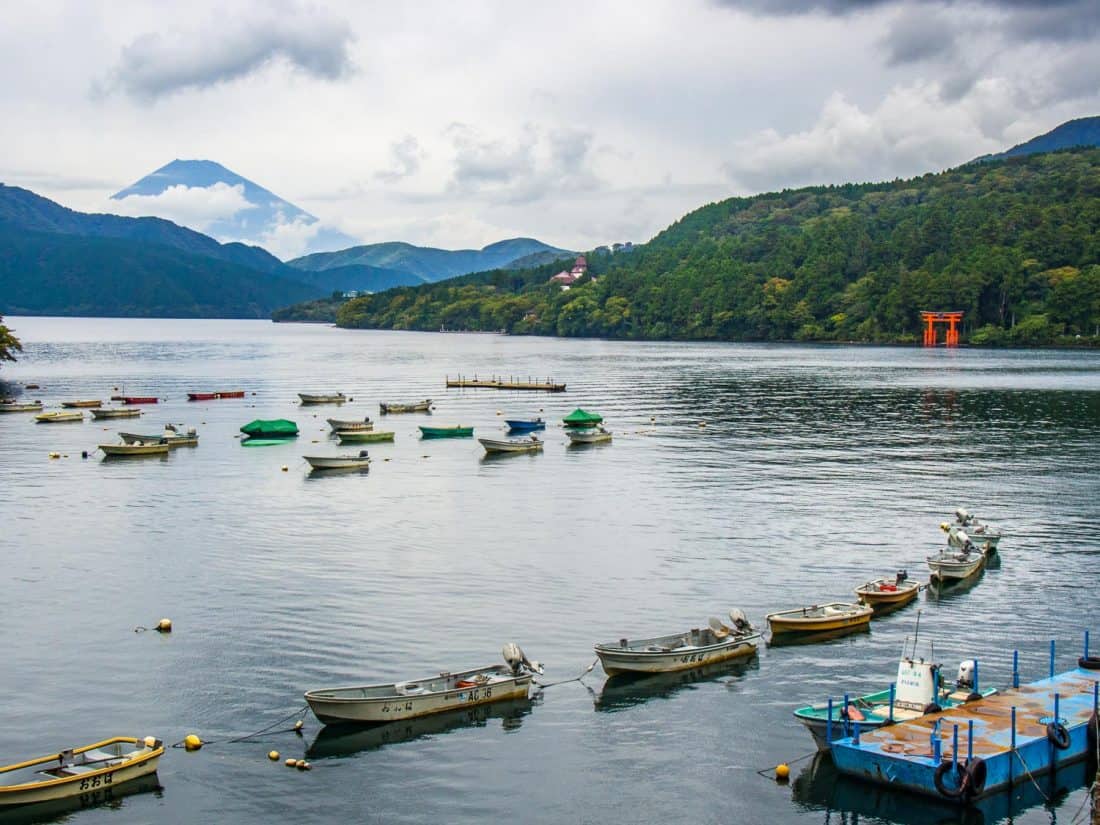
Mount Fuji is on most people’s lists of places to visit in Japan, but this must-see Japan landmark can be rather elusive and is often hidden by clouds.
There are a number of places you can see the mountain from ( Kawaguchiko is another great option), but Hakone is easy to reach from Tokyo and there are lots of other things to do in the area in case you are out of luck with a sighting.
Despite visiting on a cloudy, drizzly day, we were lucky that Mount Fuji emerged from the clouds above Lake Ashi and it was magical!
Hakone is also fun to visit because you can do a loop of the sights on different modes of transport—train, bus, pirate boat (yes, really!), and cable car.
In Hakone don’t miss:
- Buying a Hakone Free Pass so you can hop on and off all the transport options on the Hakone Loop.
- Seeing Mount Fuji from the lake or cable car.
- Eating a black egg cooked in the hot sulphur springs at volcanic Owakudani (not really, we skipped this, but the Japanese love them).
- Soaking in an onsen.
- Staying in a tatami room in a ryokan (traditional inn) and enjoying an elaborate dinner.
- Wandering the outdoor sculpture gallery at Hakone Open Air Museum .
How Long to Spend: You could visit on a day trip from Tokyo but I recommend 1-2 nights to experience a ryokan and onsen. We had one night and did part of the loop in the afternoon we arrived and the rest in the morning. While it was just enough for the main sights, we wished we’d had longer to enjoy our ryokan.
Where to stay in Hakone: I recommend staying in Moto Hakone by Lake Ashi for Mt Fuji views. A ryokan with an onsen and meals included is the perfect way to experience the area. Our ryokan has closed but Yoshimatsu looks like a beautiful alternative. Find more hotels in Hakone here .
5) Kanazawa
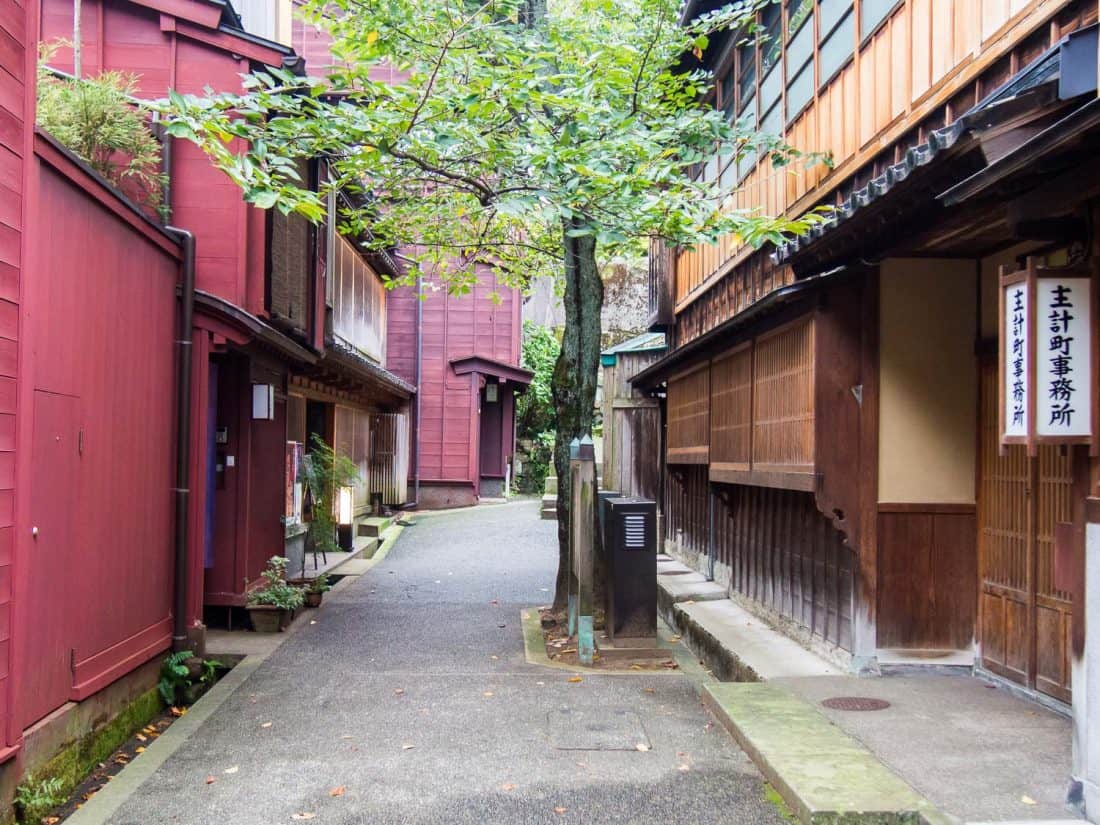
Kanazawa is one of the best cities to visit in Japan, but few foreign tourists make it here.
Consider Kanazawa as a quieter alternative to Kyoto to experience geisha districts with preserved wooden buildings.
There is also one of the most beautiful gardens in the country, a stunning castle, and many art museums to explore.
In Kanazawa don’t miss:
- Wandering Kenroku-en Garden , one of the top three gardens in Japan.
- Exploring the wooden teahouses of the geisha districts Higashi Chaya and the quieter Kazuemachi and Nishi Chaya.
- Experiencing a traditional tea ceremony at the exquisite Gyokusen-en Gardens.
How Long to Spend: 2 nights.
Where to stay in Kanazawa: We stayed in a standard business hotel in the centre—there are lots of budget options. Find hotels in Kanazawa here .

Nikko is a temple town and UNESCO world heritage site in the mountains a few hours north of Tokyo and makes a cool retreat from the city. The area is famous for its vibrant autumn colours.
The temples and shrines with their vermillion gates and moss-covered stone lanterns are scattered on the wooded hillside.
The main attraction is Toshogu Shrine, a stunning complex with more than a dozen lavishly decorated red and gold buildings amongst huge, ancient cedar trees. The crowds can be overwhelming, so afterwards head to one of the quieter shrines.
In Nikko don’t miss:
- Visiting Toshogu Shrine early to avoid the crowds
- Playing games at atmospheric Futarasan-jinja
- Exploring Taiyuinbyo
- Hiking up the mountain to the peaceful Takino shrine
- Photographing the bright red Shinkyo bridge
- Munching on dango (grilled rice balls on a stick) from a street stall
- Eating sushi at Komekichi Kozushi
How Long to Spend: You could visit Nikko as a day trip from Tokyo, but it’s worth spending a night or two to explore one of the most beautiful places in Japan including hiking trails, lakes, waterfalls, and hot springs.
We had one night and wished we’d had two so that we could have visited Toshogu Shrine early on the second day.
Where to stay in Nikko: We stayed at Nikko Park Lodge Tobu Station , a good budget option conveniently located close to the train stations. For more character, you could stay in a traditional ryokan with views and outdoor onsen baths such as Nikko Hoshino Yado . Find more hotels in Nikko here .
7) Koya-San
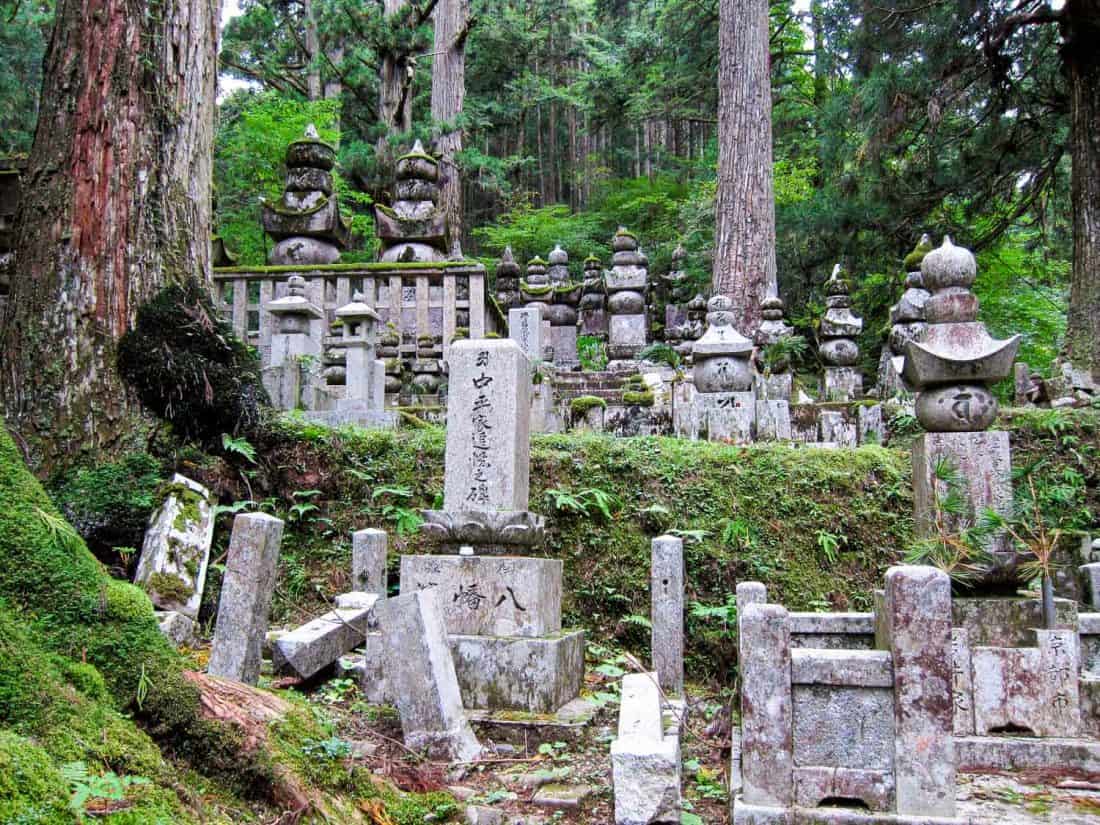
Koya-san (Mount Koya) is one of the most interesting places in Japan to experience the traditional side of the country.
This secluded and sacred temple town is located in the forest-covered mountains of Kansai and is one of the best places to get a taste of life as a monk by staying in a shukubo or temple lodging.
After wandering around the otherworldly Okunoin forest cemetery , we checked into our simple tatami room at the temple, soaked in the communal onsen bath, and enjoyed a delicious shojin ryori vegetarian Buddhist meal.
In the morning we were up early for the chanting and meditation ceremony with the monks.
A temple stay at Koya-san is a fascinating experience and well worth the detour from Osaka or Kyoto.
How Long to Spend: 1 night.
Read: Sleeping with Monks: A Night in a Japanese Temple in Koya-San
Where to stay in Koya-san: We stayed in Haryo-in, the cheapest temple accommodation, but it’s quite basic and I’d recommend paying more to stay at one of the more traditional temples like 1000-year-old Eko-in which gets superb reviews. Find more temple lodgings here .
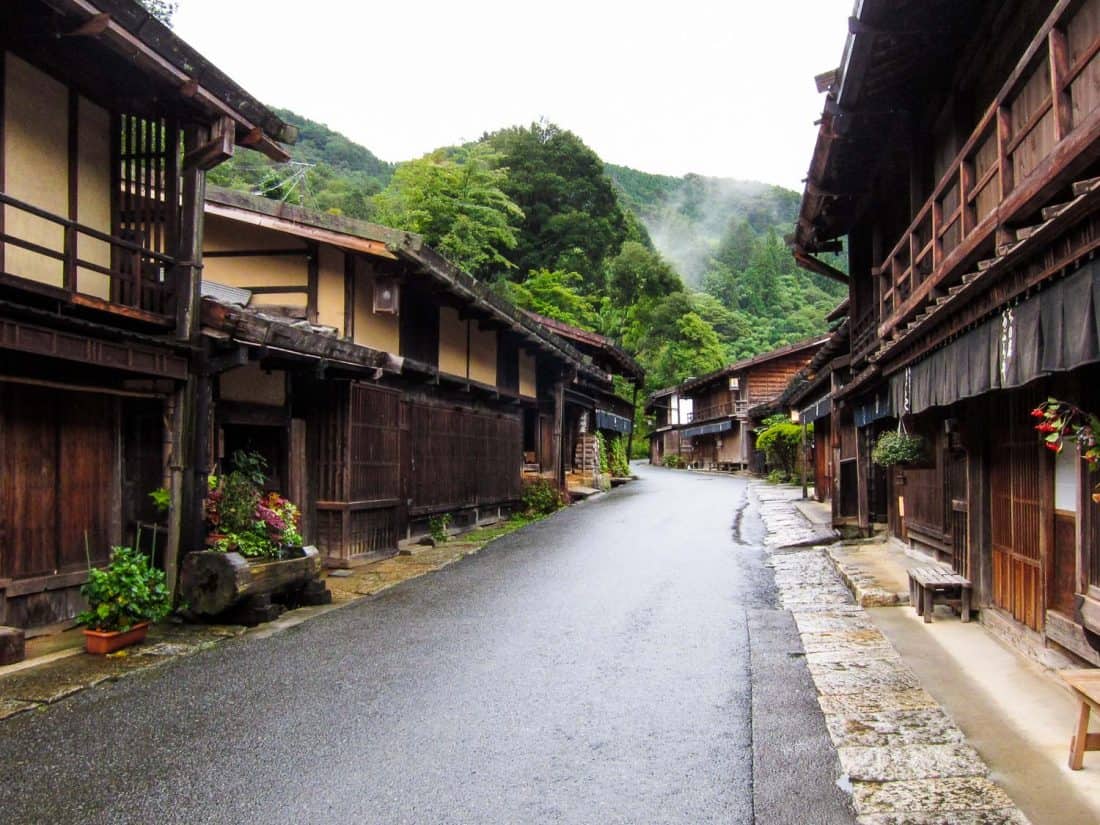
Tsumago is a picture-perfect traditional mountain village in the Kiso Valley.
It is one of the best-preserved post towns in Japan and you feel like you’ve stepped back in time on the traffic-less streets of beautifully restored wooden inns.
During the Edo period 300 years ago, Tsumago was a stop on the Nakasendo Way between Kyoto and Edo (now Tokyo).
You can hike part of this trail to the village of Magome in about two to three hours. Unfortunately, a typhoon prevented us doing this, but it’s supposed to be a scenic and easy walk.
How Long to Spend: 1-2 nights. If you can arrive early enough on the first day to hike the Nakasendo Way in the afternoon, then 1 night is enough as it’s a tiny village.
Where to stay in Tsumago: In keeping with the Edo-era atmosphere, stay in a traditional ryokan or minshuku (a simpler family-run inn). We stayed at the basic Minshuku Shimosagaya . Neighbouring Magome has more choice including the budget Chaya Hotel or historic Tajimaya .
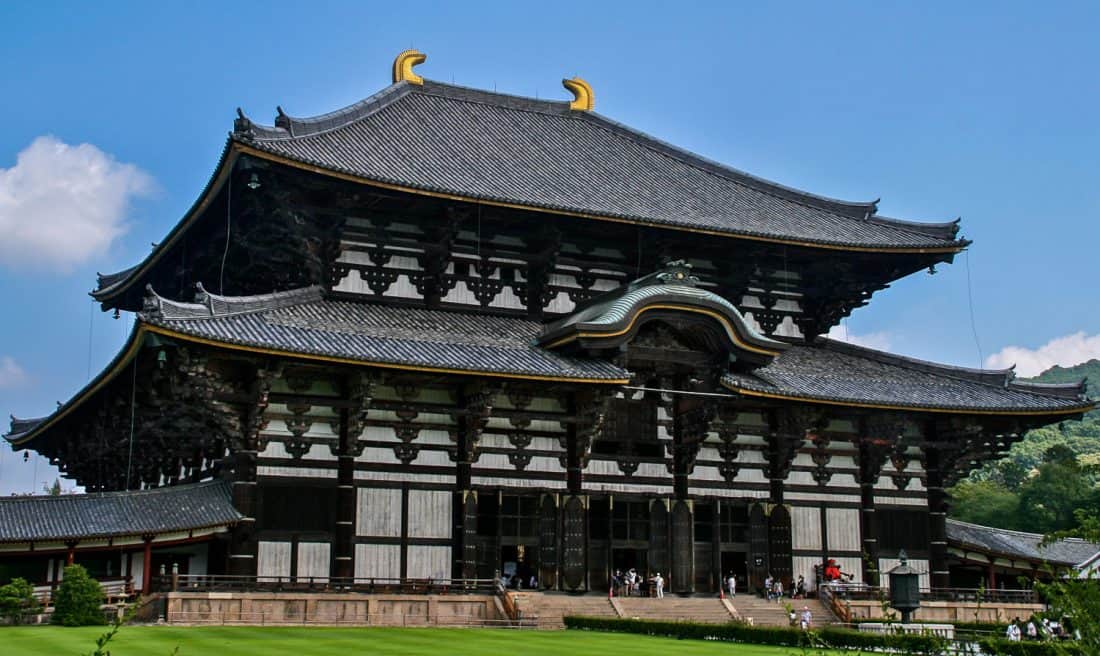
Nara was Japan’s first permanent capital and is full of historic treasures including many UNESCO world heritage sites.
It’s one of the top Japan attractions and makes a rewarding day trip from Kyoto to visit the temples and wild deer in Nara Park.
The Daibutsu-den (Hall of the Great Buddha) at Todaiji is the main sight—it’s the largest wooden building in the world and nothing prepares you for the immense sight.
Inside is the 15-metre tall gold and bronze statue of Buddha that dates back to 751.
We also love the forest shrine complex Kasuga Taisha.
How Long to Spend: Most people visit as a day trip from Kyoto or Osaka. You can see the highlights in half a day but a full day is better.
Where to stay in Nara: The advantages of staying overnight in Nara are avoiding the crowds with an early start and experiencing our favourite ryokan in Japan. Tsukihitei is a small traditional inn with a magical forest setting and delicious meals. It’s only a 15-minute walk to the Nara temples.
Sign Up for more free Japan Content!
10) hiroshima and miyajima.

Come to pay your respects to the victims of the atomic bombing at Hiroshima’s moving Peace Memorial Museum and Park and stay to explore the modern city that was almost entirely rebuilt after World War II.
Hiroshima is usually combined with a visit to the famous floating torii gate at Itsukushima shrine on nearby Miyajima Island.
You’ll also want to try the delicious local speciality okonomiyaki, a thick pancake of batter, vegetables and noodles.
How Long to Spend: 1-2 nights is enough to visit the Peace Memorial Museum and Miyajima Island or you could visit as a long day trip from Kyoto, Osaka or Okayama. We spent 1 night in Hiroshima then 1 night on Miyajima.
Read: 14 Best Day Trips from Kyoto .
Where to stay in Hiroshima: The Sheraton Grand Hiroshima was the most spacious Western-style hotel we stayed in in Japan. We really appreciated the king size bed after a few weeks of small Japanese hotels. It’s right next to the station too. Find more hotels in Hiroshima here . Where to stay in Miyajima: While you could visit the island on a day trip, we loved seeing the top sights without the crowds at night and early in the morning. Iwaso Ryokan has the perfect location (secluded but central), beautiful meals, and our room had a view of the torii gate.
There are so many incredible places to explore in Japan. Here are some more destinations that we absolutely loved (and it was hard to leave them off the top 10 list!).
If any of these appeal to you more than the ones above (or fit into your itinerary better), then they will be just as enjoyable.
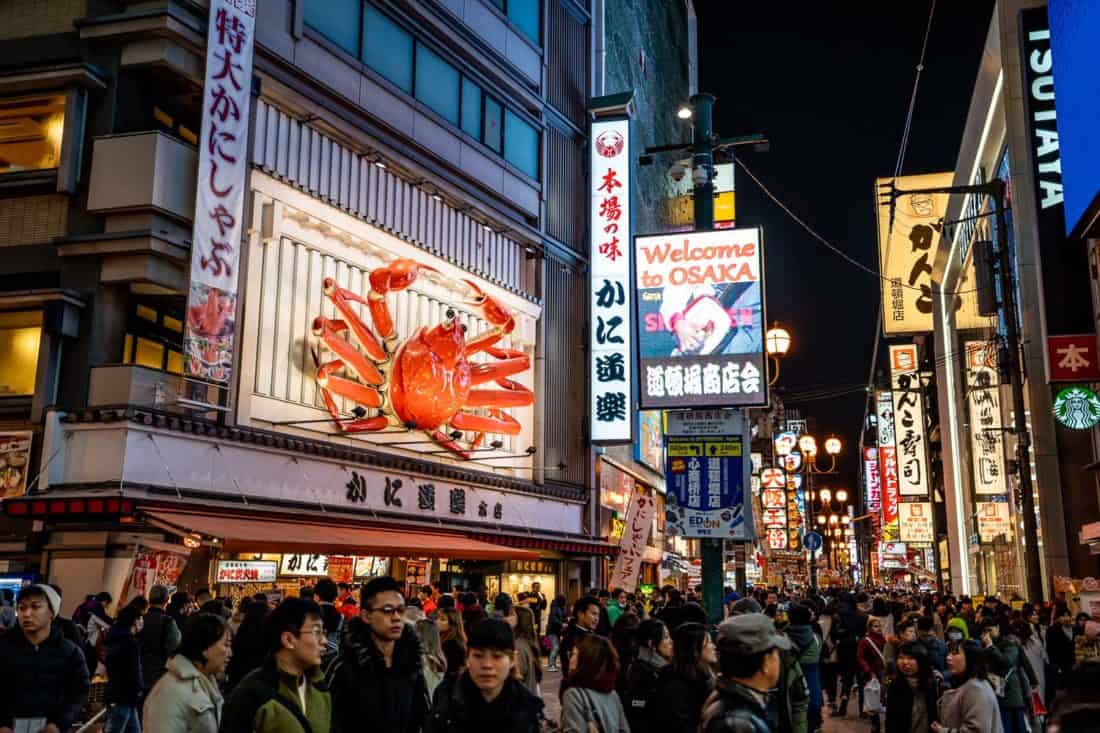
Osaka is a Japan must-see for many visitors. We love the neon craziness of Dotonburi, the amazing food ( for vegetarians too ), friendly people, affordable prices, and the scary rides and brilliant Harry Potter World at Universal Studios Japan .
But, if you have limited time on your first trip to Japan, I would probably say choose Osaka or Tokyo as they are both sprawling modern cities.
If you are flying into or out of Kansai airport then it makes sense to spend a night or two in Osaka. You could also visit as a day trip from Kyoto.
In Osaka, we loved staying in Shinsaibashi . The location is ideal—quiet but close to lots of cool shops and restaurants and within walking distance of Dotonburi. Hotel options include the stylish Hotel The Flag .
12) Kinosaki Onsen
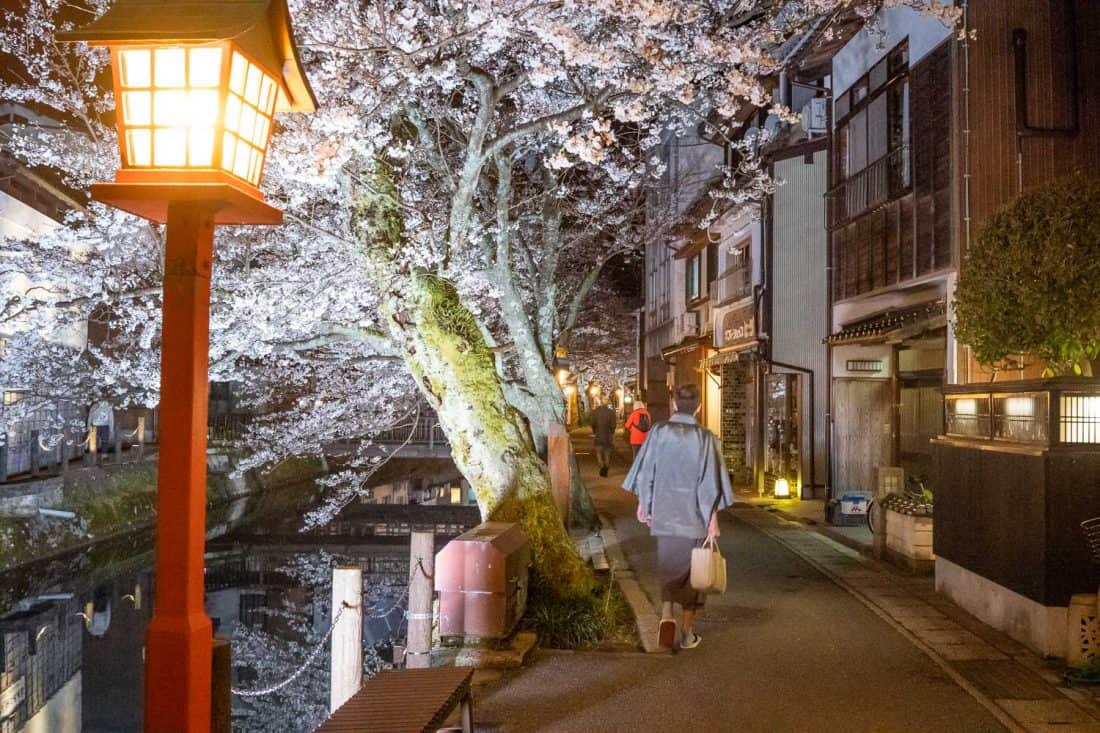
On our first Japan trip we were terrified of getting naked in onsens, but on our latest visit we were brave enough to spend a few nights in an onsen town.
Onsen hopping dressed in a kimono in a traditional hot spring resort is a classic Japanese experience. Kinosaki Onsen is a great place to experience it.
It’s only a few hours from Kyoto or Osaka and the canal-side town is very pretty, especially in cherry blossom season.
We stayed in a traditional tatami mat room at Morizuya Ryokan . It’s ideal for first-timers as they speak English and are very friendly, walking you through everything you need to know. The epic meals served in your room are delicious too.
Read our Kinosaki Onsen guide for all the details including onsen etiquette and how to get over your fears.
13) Naoshima Island
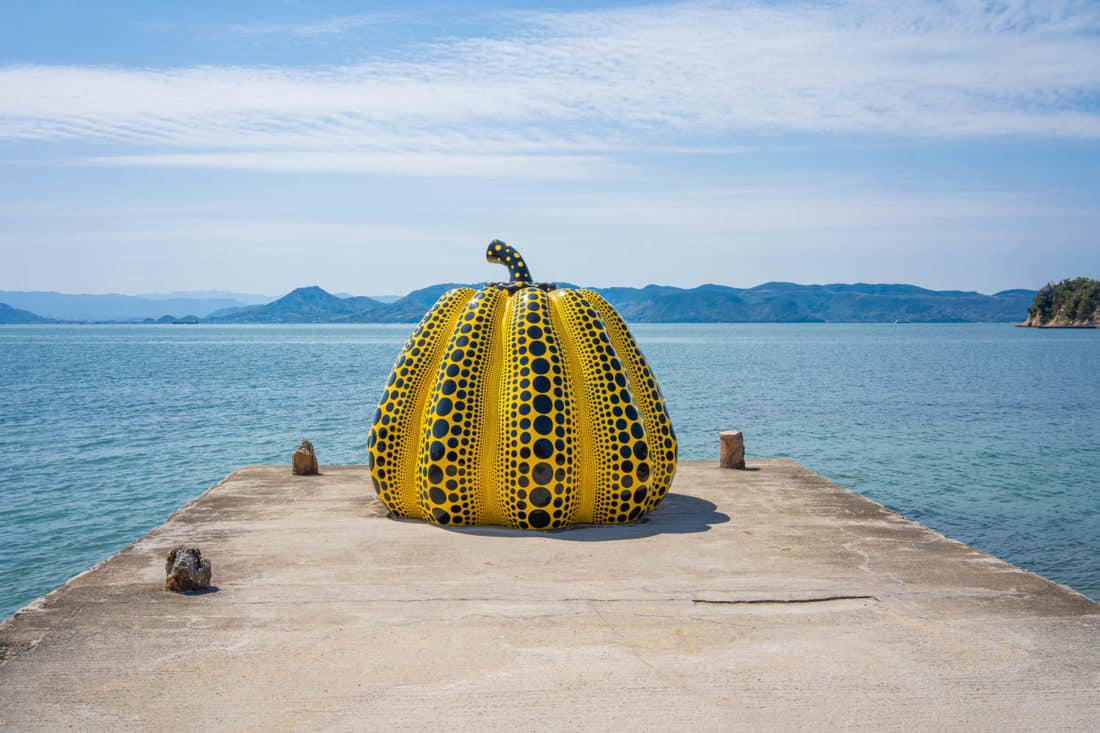
Contemporary art fans will love Naoshima, a sleepy island in the Seto Inland Sea known for its art galleries and outdoor sculptures.
We visited on a day trip from Okayama and had a wonderful day cycling around and combining art with beautiful sea views and tiny fishing villages.
Read our Naoshima Island guide for a recommended one day itinerary.
14) Okayama
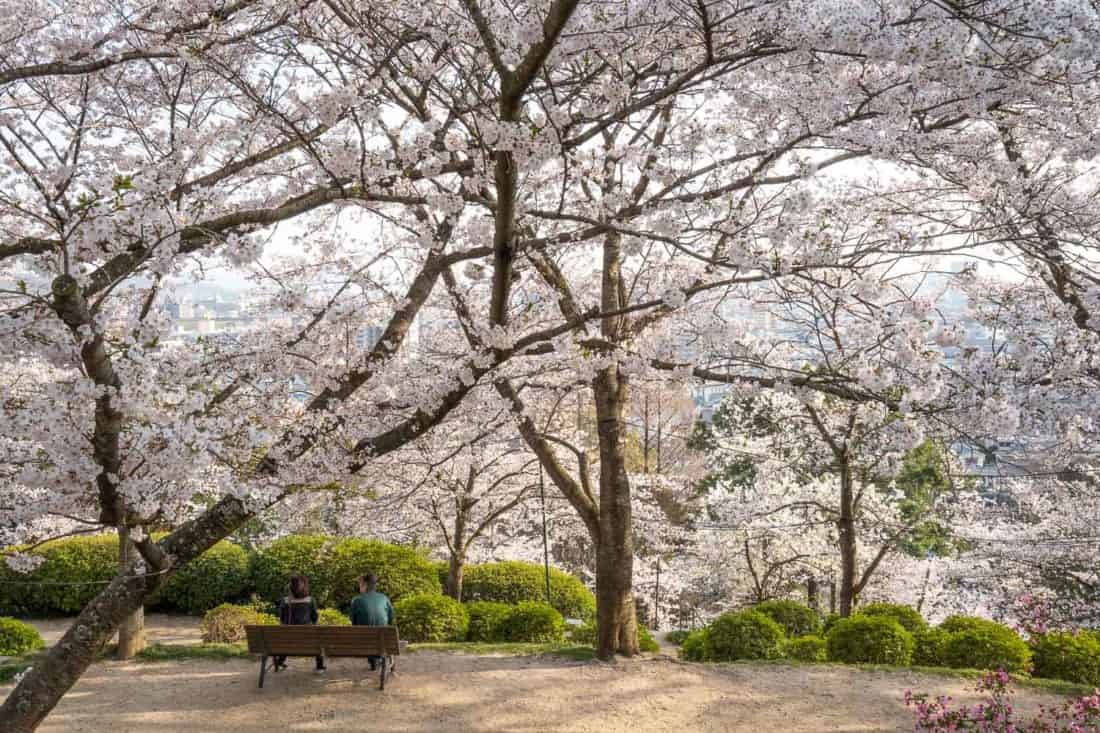
If you are interested in getting off-the-beaten-track, Okayama is a great place to visit in Japan.
This modern city is home to one of the best gardens in the country and is especially beautiful in sakura season when you can enjoy the cherry blossoms without the crowds of Kyoto or Tokyo.
As it’s on a bullet train line, it’s a convenient and affordable base for exploring the area including the historic Kurashiki, Naoshima Island, Himeji Castle, and Hiroshima.
We also did a fantastic bike trip on the Kibiji Bike Trail through rice fields to untouristy temples.
Our post on the best things to do in Okayama has all our tips.
15) Himeji Castle
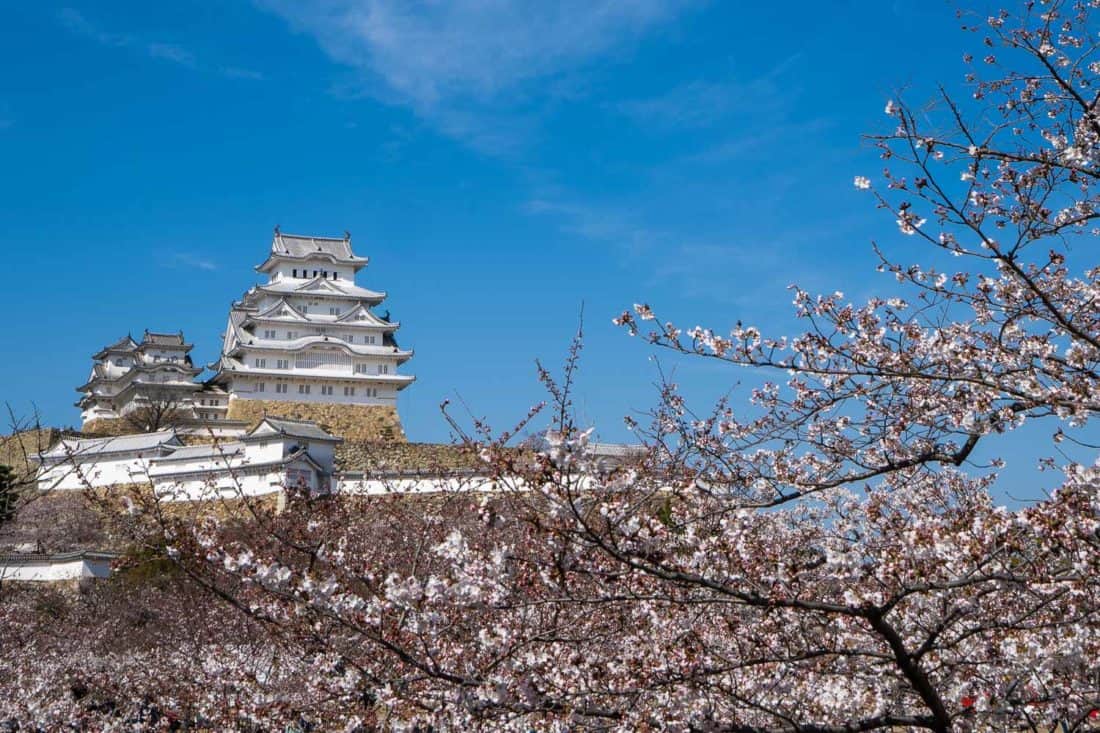
Himeji Castle is one of the few original castles in Japan (most were destroyed at some point and rebuilt). It’s well worth a visit, especially in cherry blossom season.
You can easily visit in half a day from Osaka, Kyoto, Okayama (as we did) or on the way to Hiroshima.
16) Kawaguchiko
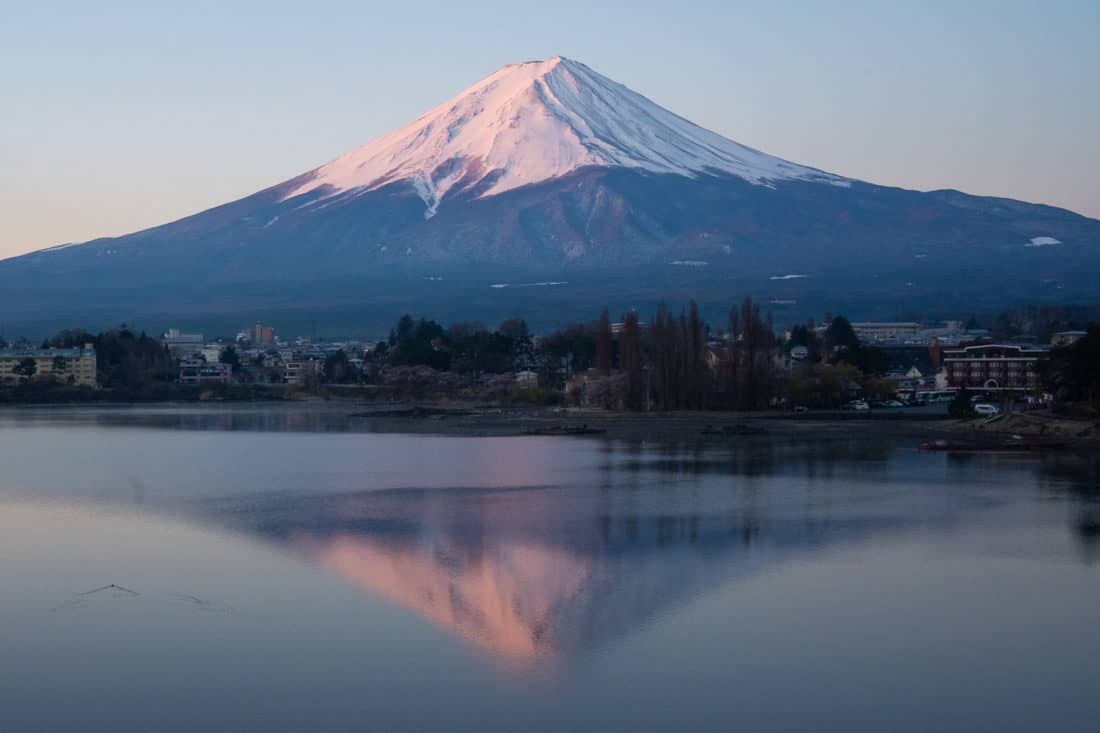
For the best views of Mount Fuji, head to Lake Kawaguchiko. It’s especially lovely in cherry blossom or autumn leaf seasons.
You can enjoy the views by walking or cycling around the lake or taking a trip on a cable car or boat (we hired a panda pedal boat!).
The lake is also home to one of my favourite museums and tea houses in Japan.
Kawaguchiko Lakeside Hotel is an excellent affordable option here. Unusually for Japan, our room was huge, and it’s close to the lake with Mt Fuji views from some rooms.
See my Lake Kawaguchiko guide for more tips.
These Japan tourist attractions and off-the-beaten-path gems are on our list for our next trip:
- Kamakura – Beaches, Buddhas, hikes and vegetarian-friendly food. You could visit as a day trip from Tokyo.
- The Izu Peninsula – Rugged coastline, mountains, and hot springs not far from Tokyo.
- Shirakawa-go – A village of traditional grass-roofed houses in a scenic setting. You could fit in a visit between Takayama and Kanazawa.
- Takaragawa Onsen – A scenic onsen resort a few hours from Tokyo. It has a large mixed-gender onsen, so unusually you don’t have to be naked.
- Hokkaido – The northernmost island of Japan known for its natural beauty and outdoor activities.
- Okinawa – A chain of tropical islands in the far south of Japan.
Read our detailed Japan guides for everything you need to know to plan a brilliant trip.
- 54 Best Things to Do in Japan for an Unforgettable Trip
- Planning a Trip to Japan: Dos and Don’ts
- Two Weeks in Japan: A Detailed Itinerary
- Is a Japan Rail Pass Worth It?
- Where to Stay in Japan: The Ultimate Guide to Accommodation
- 20 Fascinating Books to Read Before Visiting Japan
- Vegetarian Survival Guide to Japan
More Japan, Direct to your Inbox!
I hope this post has given you some ideas of where to go in Japan. Wherever you decide to visit you are sure to have an amazing trip.
What are your favourite places in Japan? Leave a comment and let us know so we can add them to our Japan bucket list.
If you enjoyed this post, pin it!
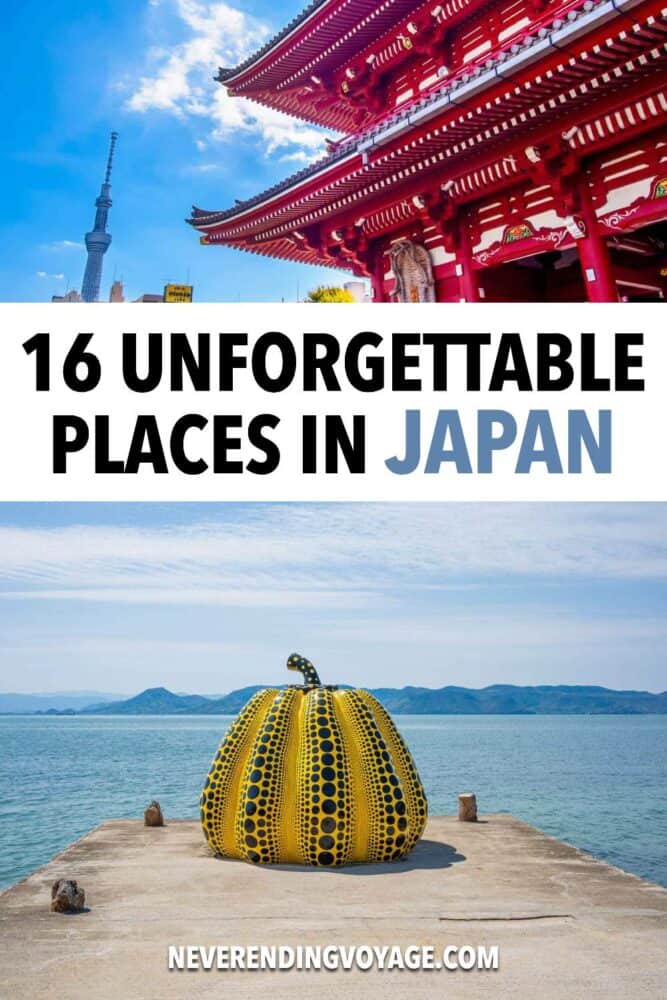
62 Comments
very informative
Reply ↓
thanks for sharing
First of all – your posts are fantastic and so full of great detail. We are planning our first trip to Japan in November. First draft is 5 days Tokyo – 2 days Hakone – 5 days Kyoto – 3 days Hiroshima – 4 days Tokyo.
I was trying to see how to fit Lake Kawaguchi or Takayama or Kanazawa into the trip but they all seem to require quite the journey time given the other places we have picked. Wondering if it would be better to add some days to the end of the trip and just visit from Tokyo. So maybe do Tokyo to Kanazawa for a couple of days. Not particular keen on 5-6 hour trip from Takayama back to Tokyo so may have to skip that.
Hi Kevin I would do Tokyo – Hakone – Takayama – Kyoto – Hiroshima – Tokyo.
We did Tokyo – Hakone – Takayama – Kanazawa on our 2 week itinerary: https://www.neverendingvoyage.com/japan-2-week-itinerary/
I prefer Takayama to Kanazawa, especially as you already have lots of big cities on your itinerary. If you really want to fit it in, do so between Takayama and Kyoto.
Lake Kawaguchi is harder to fit in. You could do it as a day trip from Tokyo at the end if you didn’t see Mt Fuji at Hakone (due to clouds) and if you have the energy.
One thing you might also consider is reducing Hiroshima to 2 nights and adding a night on Miyajima Island. We did that last October (one night in each) and really preferred the island after the day trippers had left and early in the morning. You might catch the autumn colour on the island if you are visiting later in November. Again, it changes up the pace from the cities.
If you have big suitcases, you could use a luggage delivery service from Hiroshima to Tokyo and just take a day bag for the overnight (we decided against that but only had a carry on suitcase and laptop bag each).
Good luck with the planning and enjoy Japan!
Erin – Thanks for the advice – good to hear input from someone who has actually experienced it
Apologies for posting the reply so many times – i kept picking the wrong reply option
Awesome guide. Thank you. A lot of the accommodation is around $500aud a night! Extremely expensive. Is that normal around Japan? Me and my partner were wanting to travel around Japan in July this year but if the cost of accommodation us that expensive we might not be able to do the trip. I assume we will be able to find cheap accommodation at most places?
You can definitely find much cheaper accommodation. We did our first few Japan trips on much tighter budgets, but now have the ability to choose more special places to stay.
Your best bet is to look for business hotels in the cities – rooms are usually small but clean and well equipped. Have a browse on Booking.com and you should find plenty of options.
Planning trip(first time ever in Japan) arriving afternoon of December 18th and leaving evening of December 30th. I will be traveling with my 18 and 20 year old boys (privacy should be interesting in the tiny hotel rooms). Planning to stay in Tokyo either 5 nights with day trips to Hakone and either Kamakura or Yokohama OR 4 nights with day trip to either Kamakura or Yokohama and 1 night in Hakone. Is it worth staying the night in Hakone, or just day trip from Tokyo? Then we will spend 3 nights in Kyoto and 3 nights in Osaka (does it matter which order?) with a day trip from each city. One to Nara and one to Hiroshima and Miyajima. My 18 year old wants to have Kobe beef in Kobe, but don’t think it will happen as it’s likely not worth the time away from the other places. I’d love to be able to visit both Kamakura and Yokohama, but don’t think it will work. Likely choosing to go to Kamakura. We will return to Tokyo for the last night and spend the last day (really 1/2 day) in Tokyo before heading to the airport to fly home. Thoughts on the plan? Any specific recommendations?
I think it’s worth spending the night in Hakone if you stay in a ryokan as it will be a unique experience that you won’t get in the cities.
I would probably go to Kyoto before Osaka but it doesn’t make a huge difference. Your day trip choices sound good.
Enjoy Japan!
thank you very much for all the infos and the very beautiful photos!
Hello, Have you been to Tamba-Sasayama in Hyogo? We have a lot of nature, local food, and cultures! Tamba black beans are famous local food and also you can experience a pottery making. I hope you will visit here one day;)
We haven’t but we’ll put it on our list for our next trip this autumn! Thank you for the recommendation!
Wow, this is such a great travel guide. Thanks a lot!
Odd how all of the “best places in Japan to visit” are all in central Japan near Tokyo and Kyoto. How disappointing the travels of the writers to these other parts of the country must have been.
Have you been to the Autumn Takayama Festival? 😊
We did not buy plane tickets yet, but we were going to land on Oct 22 to experience the Kurama Fire Festival in Kyoto. We heard about Takayama festival on Oct 9th and wanted to know if it’s worth changing our plans to fly in earlier for it, and if the weather will be horrible or not during that time? Thank you so mochi for your help! I’m so torn!
We haven’t been but it does look cool! I’m not sure it’s worth changing your plans for. Later in October you’ll have more of a chance of seeing fall colours in Kyoto. If you do decide to go, book your accommodation asap as it gets extremely busy during the festival.
What is the best way to get around these places? Train or car?
Train. You might find this post helpful: https://www.neverendingvoyage.com/planning-a-trip-to-japan/
very nice good work
Thanks for the detailed post with nice photographs
I forgot to include in early to mid December.
I’ve been to all the tourist sites and a few others. Where would you recommend for an overnight not far from Tokyo?
Have you been to the Izu Peninsula? We haven’t yet but our friend who lives in Tokyo recommends it. The onsens would be nice in the winter.
planning on going japan next year, getting lots of ideas from these blogs
Beppu should be on this list!
Hopefully we’ll make it there next time!
nice one thank you i learn lot of things about this web site
what about Harajuku?
I included it in the Tokyo section :)
It’s definitely worth visiting!
Hello I am relooking at your Japan highlights. I had the most amazing trip in Spring 2020 many thanks to your post which seems now to have gone and been replaced by more posts. The one thing I would like to say is that you put before Miyajama on the one i read and i have to say that this was one of my favourite spots. I totally recommend it. We also did the two walks one of which was the edo trail and the other outside of Kyoto. We stayed in Koyasan too thanks to you. Thank you again.
Hi, I’m thinking of planning a trip for me and my daughter to visit Japan but haven’t any ideas of where to start. I was thinking a two week trip but maybe more time would be needed for the things we would like to do. If staying for longer than two weeks is there visas needed ect. I haven’t a clue where to start I’ve looked at your guide which is very helpful. Would I be better of speaking to a travel agent for help and advice ??? Many thanks Paul Miller.
It depends where you are from but many nationalities (including UK and US) can stay in Japan for 90 days without a visa.
Two weeks would give you a great overview (here’s a suggested itinerary: https://www.neverendingvoyage.com/japan-2-week-itinerary/ ) but if you have more time (and the budget), there’s always more to see.
I think Japan is manageable without a travel agent. See our post on planning a trip for ideas to get started: https://www.neverendingvoyage.com/planning-a-trip-to-japan/
We used this page during our six week Japanese adventure and it was brilliantly helpful! Thank you!
I’m glad it helped, Alex. I hope you enjoyed Japan as much as we do.
This page has been very helpful! I am planning a two week trip to Japan next year and this has helped break down each city and what to not miss. Thanks again!
I hope someday, I can visit Japan for some other reasons. As pictures shown, fantastic and very interesting places and educational as well.
Japan has always been a remarkable place for me. I think I missed those places you described about. I hope I can give a shot on my future trip if possible. Btw thanks for sharing your experience with us.
Japanese pachislot, mechanical games,are different from foreign slot machine and popular recently. From 2020 smorking will be prohibited in the pachinko parlors or pachislot parlors. Terefore more and more people will have a good time during playing games. If you come to Japan, you might want to play them.
We keep meaning to try pachinko! That’s good news about the smoking ban!
Hi Great website thanks. We are looking to travel to Japan (arrive Tokyo) in late January for about 14 days. This is our first visit and we don’t mind driving. I would be interested to know what places you could recommend to get a real feel of Japan. Thanks
I don’t recommend driving in Japan. The train system is so efficient and it’ll be less stressful than driving. Here’s our 2 week itinerary: https://www.neverendingvoyage.com/japan-2-week-itinerary/
Thanks for the guidance. If you were going in November for 6 weeks what would you do with your time Cheers Walter
That’s a great amount of time and you should so some great autumn foliage. You could visit everywhere on this list so it really depends on your interests and what pace of travel you prefer.
On our latest 7 week trip we chose to base ourselves in Kyoto for a month then travel around for a couple of weeks and finish with a week in Tokyo. If you prefer to move at a faster pace you could cover a lot of ground.
Hi Guys, great site. I was wondering why you seem to spend so much time in the large cities? I’m planning my first trip and my initial thoughts were to spend just a few days in Tokyo and Kyoto? Arent the more remote sights more rewarding?
I was also wondering about a cherry blossom visit – when if the best time to see them but to avoid the worst of the crowds??
Thanks! Chris
We love the smaller places in Japan and think the ideal trip includes a mix of them with the big cities. I wouldn’t say they are more rewarding, just different. There’s just so much to see (and eat) in Tokyo and especially Kyoto that we keep returning to them.
If you’re not a big city person a few days in Tokyo would be fine. Kyoto has a lot of history, temples, and traditional architecture (and more tourists), so you’ll only cover some of the highlights in a few days.
The cherry blossom are only in full bloom for about a week so there’s no way of avoiding the crowds in popular spots then. It’ll be slightly less crowded at the beginning or end of the blooming period, but it’s hard to predict exactly when that will be (and it varies by location).
I would focus on visiting places that have cherry blossoms but fewer crowds. We were in Kyoto at the beginning of April when the blooms just started (and it was already quite busy) then moved on to Kinosaki Onsen and Okayama where we enjoyed the blossoms without many people around.
I’ve written more about it here (and will be doing an Okayama post at some point): https://www.neverendingvoyage.com/kyoto-cherry-blossoms/
hi guys really nice blog, could you itemize it, how many days you spent in each city, village? and if you would change something, where to stay maybe longer, where shorter?
regards tomek
That’s a good idea! We’re currently travelling in Japan and will update this post soon so I’ll add that info then. If you’d like to know about a specific place now just let me know. Usually we spend a week or more in Kyoto and Tokyo and only 1-3 nights in the smaller places.
My husband and I are interested in making a second trip to Japan in March with our 5 month old baby. This will be our second trip…we’ve done Tokyo, Takayama, and Kyoto previously (along with one night in Osaka). We LOVED Takayama for its food and quaintness. We liked Tokyo but got bored after a few days. Kyoto was probably our least favorite – too touristy, What should we do for our second trip??
It’s very difficult to make recommendations without having any idea of what you like to do, how long you plan to visit, or if your baby goes everywhere with you. Given that you liked Takayama, you might consider Kanazawa, Kurashiki, and Nikko. The first two are small cities of about 400,000 that have delightful walking areas and interesting sights in general. Nikko is very small but houses the shrines of Tokugawa Ieyasu and Tokugawa Iemitsu, who were the first and third shoguns of the Tokugawa Shogunate. These are UNESCO World Heritage and incredible.
You didn’t indicate when you visited Japan on your first trip. If you went to Kyoto during fall foliage you would have encountered a lot of tourists, most of whom are Japanese. Kyoto draws tourists because it is a world class city with a very large number of World Heritage sites in addition to spectacular fall color. I don’t want to sound rude regarding your Tokyo comment. I can understand not liking Tokyo because it is a bit overwhelming in size, although that is part of what makes it so enjoyable for us. However, I cannot comprehend getting bored there.
I wish you luck.
It sounds like you enjoy the smaller, more traditional places so I’d recommend Tsumago, Koya-san and Kanazawa (a bigger city but with some lovely traditional neighbourhoods). Nikko is also beautiful but we found it very crowded (it would have been quieter if we’d stayed overnight and arrived early though).
Your website is terrific. I was provided a link to a couple of regions in Italy for a major summer trip. Your comments, photos and recommendations were of such interest that my wife and I decided to completely change the first 10 days of our trip. Then I got so immersed in the various places you have gone, I decided to look at Japan. We spent a month there five years ago, and then we spent another month this December including Christmas. We have been to all but two of your 10 unmissable places in Japan and have used the trains and metros as our primary modes of transport. We would agree that Japan is a great place to visit and the people are terrific.
Since you asked for additions to your bucket list, I would like to suggest the following. Near Hiroshima is the island of Miyajima. This is the site of the great in the water torii gate, which is quite magical. The museum at the Hiroshima Peace Park provides an incredibly moving experience. Himeji Castle (White Heron Castle) is one of the original late 16th century castles and I believe the largest. It is on the route between Hiroshima and Osaka. It has been recently renovated. Osaka Station is beautifully done with some terrific surrounding buildings. The Dotonburi area is neon heaven with street food in abundance. Kyoto, as you stated, is amazing with probably more UNESCO World Heritage locations than anywhere else in the world. South of Kyoto in Uji is Byodo-in, a world heritage temple with a beautiful new museum.
I agree that Kanazawa is a really nice smaller city. Like Kyoto it was not bombed. The D.T. Suzuki Museum is an outstanding piece of architecture, although of primary interest to people steeped in Buddhism, philosophy. The Seisonkaku Villa is a 10,000 foot samurai home located at the edge of Kenrokuen Gardens and is very interesting. There are two places in Takayama you didn’t mention, each of which is very worthwhile. First, next door to the Float Museum and on the same admission ticket is the Sakurayama Nikkokan. This museum contains scale models of the shrines in Nikko. It took 33 master carpenters and 17 years to complete during the first part of the 20th century. It is incredible. Second, the Takayama Museum of Art houses an outstanding (Michelin 3 star) collection of art nouveau and art deco objects. We visited Matsumoto to see the Matsumoto Castle (Black Crow Castle). It is also one of the oldest castles in Japan.
I would also like to suggest Nagoya, which is one of Japan’s largest and most industrial cities. It is home to Toyota. Three recommendations. First, tour the Toyota Factory to get real insight into a truly sophisticated approach to assembly line manufacture. Second, the Toyota Commemorative Museum of Science and Technology is phenomenal. Many demonstrations of working textile machines and auto robotics. Third, the Nagoya Palace has been rebuilt (just opened in 2018) to exact specifications of the original palace (early 1600s) including all the screens. Even though it is a replica, it’s incredible.
You covered the shrines in Nikko. I would only add that if one did nothing else but see the Nikko shrines, a trip to Japan is warranted. Finally, Tokyo is to us the most exciting city around. Never ending pleasure of wandering around. There are just too many places to enumerate. One little side note: the Isetan Department Store in Shinjuku has a roof garden. You can buy incredible take away food in the basement food halls and take to the roof to eat, if the weather is good. Better than either Harrod’s or Selfridge’s.
Thanks so much for the tips David! We are returning to Japan in a few weeks for two months so we’ll try to visit some of these places.
Hi! Thanks, I am definitely gonna copy your ideas! One question – is it worth to go to Hiroshima instead of Takayama? My husband and I are gonna visit Japan in March 2019 for 9 days. I think it is not enough to fulfil your itinerary and we have to shorten it a bit. Thank you for your blog ;)
Honestly, we preferred Takayama. It’s just so pretty with the traditional Japanese architecture and we like small towns. Hiroshima is more of a big modern city BUT of course, the peace memorial is very moving, so if you really want to see that then choose Hiroshima instead (which is actually what we did on our first trip to Japan).
My husband is wanting to visit , the place that his father served in Japen . He is not sure exactly where that is ?
Hi..!! the blog is very informative.Me and my wife would be visiting Japan in Mar’19 for 8 days.We have opted for a package tour.Based on your recommendations Kyoto & Tokyo seem the 2 top places.Can you please recommend us the third place to visit..??
We are going there on a tour to Himazi with 3 homestays & I want to visit a friend in Miyago. Can we still see Mt Fuji & Kyoto after the tour? Thank you for your wonderful blog. Lynne
If you have time I don’t see why not. You can check train times/distances on the Hyperdia site http://www.hyperdia.com/en/ . Have an amazing trip!
Interesting blog, thank you for sharing your experiences! We will have 9 full days in Japan and hoping to see Tokyo, Mount Fuji ( want to stay two nights there ) Takayama, Kyoto and Hiroshima ( as a one day trip from Kyoto ). We are flying back home from Osaka ( our arrival is at Haneda ).. do you think it is do-able or are we overdoing it? Maybe we should leave out Takayama? but since we are going middle of October we are hoping to see some of autumn there..any recommendations? Thank you!
Hi Nath I think it will be a busy trip but it’s definitely possible to do all that in 9 days. I love Takayama so it’s hard to recommend skipping it. It all depends on your energy levels! If you are up for busy days then go for it! Enjoy! Erin
Wooooow love this post!! I have always dreamed of visiting Japan and seeing real Cherry blossoms.. Though I was able to make one dream a reality – see real cherry blossoms in Atok, Benguet, Philippines (but just a few because we were told that it will took two years for the trees to bloom). They look lovely!! :) I’m still not giving up on the bigger dream which is to go to Japan :D And once I get there, I’d definitely visit Kyoto coz I find their culture very rich.. from geishas to kimonos, to sushi and temples! :) See you soon Japaaaaaaaaan!
Who knew there were cherry blossoms in the Philippines?!
We’re planning to go back to Japan next year for the cherry blossom season, although I’m a little worried the crowds will be crazy. Kyoto is a definite highlight of Japan – I hope you make it there!
Leave a Reply Cancel reply
Required fields are marked *. Your email address will not be published. By clicking the Submit button, you give consent for us to store your information for the purposes of displaying your comment and you accept the terms of our Privacy Policy .
This site uses Akismet to reduce spam. Learn how your comment data is processed .

16 Top-Rated Tourist Attractions in Tokyo
Written by Meagan Drillinger and Bryan Dearsley Updated Mar 19, 2024 We may earn a commission from affiliate links ( )
When it comes to the greatest cities in the world, you cannot do better than Tokyo. A juxtaposition of deep tradition and fast-paced, modern energy, Tokyo, the capital city of Japan, is one of the best places to visit in Asia . It is home to the Imperial Palace and the seat of Government and Parliament, as well as luxury hotels, Michelin-starred restaurants, and fantastic shopping. Located in East-Central Honshu, the largest of Japan's main islands, this heavily populated city serves as a great base from which to explore other parts of the country.
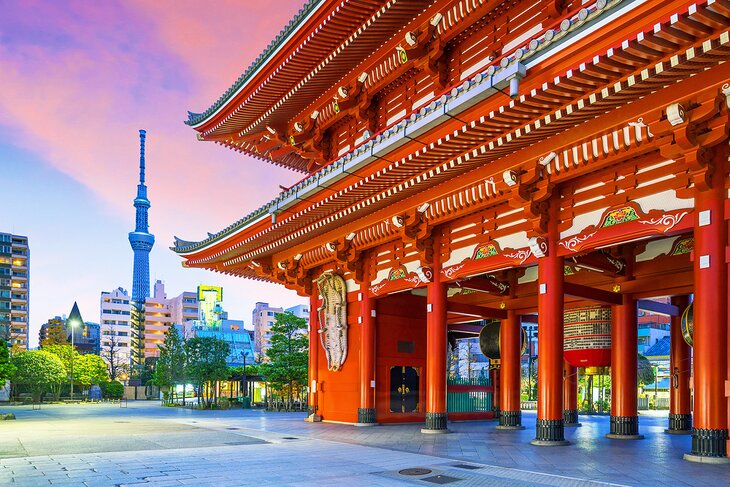
One of the world's most modern cities in terms of its infrastructure and design — due largely to the 1923 earthquake and the devastation of WWII — Tokyo also holds the title of the world's most expensive city in which to live. Fortunately, it's also one of the easiest to get around thanks to its superb rail and subway networks.
The cultural side of Tokyo is famous for its numerous things to do and top attractions, including museums; festivals; internationally noted cuisine; and professional sports clubs, including baseball, football, and traditional Japanese pursuits like sumo wrestling. It's also a city rich in music and theater, with numerous venues featuring everything from Japanese modern dramas to symphony orchestras and pop and rock concerts.
Explore the city with our list of the top things to do in Tokyo.
1. Enjoy Nature and Art at the Meiji Shrine
2. explore the shinjuku gyoen national garden, 3. enjoy nature at ueno park and ueno zoo, 4. visit the sensō-ji temple, 5. shop 'til you drop in the ginza district, 6. see the view from the tokyo skytree, 7. wander through the tokyo national museum, 8. tour the imperial palace, 9. visit the miraikan and edo-tokyo museums, 10. stop in at the national museum of nature and science, 11. spend time at the national museum of western art, 12. enjoy the collections at the national art center, 13. see a show at the kabuki-za theatre, ginza, 14. get lost at yomiuriland, 15. scope the fashion in harajuku, 16. take a walk at shibuya crossing, where to stay in tokyo for sightseeing, tips and tours: how to make the most of your visit to tokyo, map of tourist attractions & things to do in tokyo, best time to visit tokyo, japan.
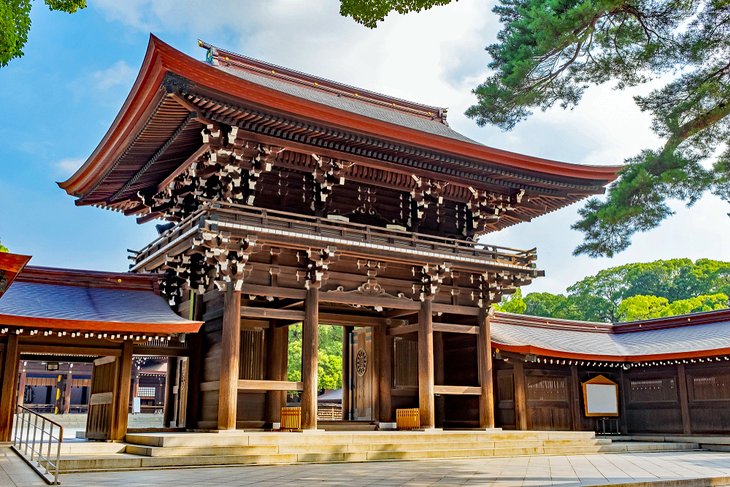
Highlights : An important religious site surrounded by 175 acres of forest
Dedicated to Emperor Meiji and his wife, Empress Shōken, the construction of the splendid Meiji Shrine (Meiji Jingū) began in 1915 and was completed in 1926. Although the original structure was destroyed during WWII, it was rebuilt in 1958 and remains one of Tokyo's most important religious sites.
Surrounded by a 175-acre evergreen forest that is home to some 120,000 trees representing species found across Japan — as well as the interesting "wishing tree," on which visitors can write and hang their deepest wishes — the shrine's highlights include its Inner Precinct (Naien) with its museum containing royal treasures, and the Outer Precinct (Gaien).
It's in the Outer Precinct that you'll find the Meiji Memorial Picture Gallery with its superb collection of murals relating to the lives of the emperor and empress. Be sure to also visit the adjacent Meiji Shrine Inner Garden (Yoyogi Gyoen), an attractive public garden complete with a teahouse, iris garden, and a pleasant arbor.
Address: 1-1 Yoyogikamizonocho, Shibuya City, Tokyo
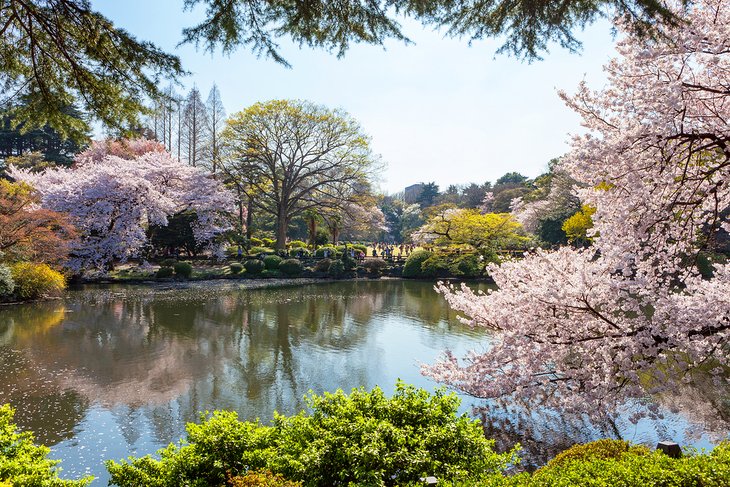
Highlights : Three types of traditional gardens in one, including 1,500 cherry trees
Walk through one of Tokyo's most historic pieces of land when you visit the Shinjuku Gyoen National Garden. Formerly the residence of the Naito family during the Edo period (17th-19th centuries), it was transferred to the Imperial Family. It is now a national garden, which opened in 1949, and is considered to be one of the most beautiful in Japan.
The garden is considered one of the best because it fuses together three types of traditional garden: French Formal, English Landscape, and Japanese traditional. It also happens to be one of the best spots in Tokyo to view the cherry blossoms , as the garden has roughly 1,500 cherry trees. You'll also find Himalayan cedars, cypresses, and tulip trees. The garden is very popular in the autumn, when the leaves start to change to crimson and gold.
Other features of the garden include a greenhouse, beautiful ponds, and several pavilions.
Address: 11 Naitomachi, Shinjuku City, Tokyo
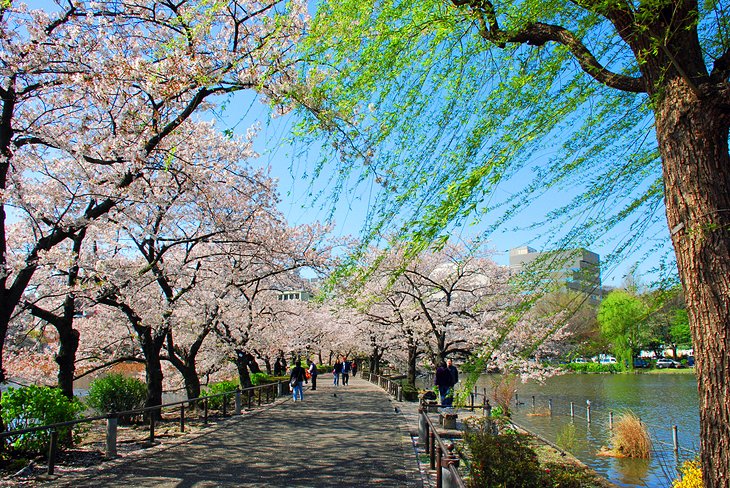
Highlights : A 212-acre park home to ponds, historic shrines, and the Ueno Zoo
A paradise-like oasis of green in the heart of busy Tokyo, Ueno Park (Ueno Kōen) is the city's largest green space and one of its most popular tourist attractions. In addition to its lovely grounds, the park also boasts numerous temples and museums to explore.
Criss-crossed by pleasant gravel paths, this 212-acre park includes highlights such as a trip on a small boat on the reed-fringed Shinobazu pond , around a little island with its Bentendo Temple. Be sure to also visit the 17th-century Toshogu Shrine (Nikkō Tōshō-gū), with its 256 bronze and stone lanterns.
Another highlight here is Ueno Zoo (Onshi Ueno Dōbutsuen). Opened in 1882, it is Japan's oldest zoo, and is famous for the pandas presented by the People's Republic of China.
While it's a large attraction and houses more than 3,00 animals representing some 400 species, having a fun monorail connecting its various components can help speed up a visit (and make it even more enjoyable).
The Aqua-Zoo , one of the largest aquariums in Asia, is also worth a visit, especially if you're traveling with kids.
Address: 9-83 Uenokoen, Taito City, Tokyo
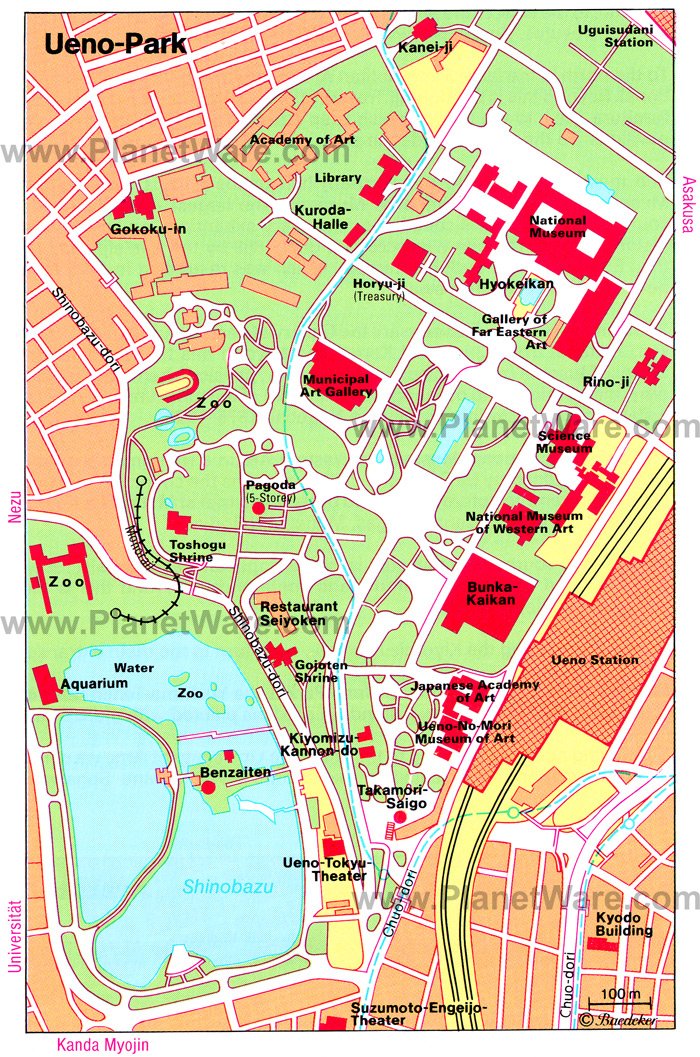
Highlights : A centuries-old temple with a 3.3-meter-high red paper lantern and incense that is said to heal ailments
In the Asakusa district of Tokyo, the exquisite Sensō-ji Temple (Kinryū-zan Sensō-ji)) – the city's most famous shrine – stands at the end of a long street market hosting vendors selling masks, carvings, combs made of ebony and wood, toys, kimonos, fabrics, and precious paper goods.
Dedicated to Kannon, the Buddhist goddess of compassion, the temple was established in AD 645 and retains its original appearance despite having been rebuilt numerous times.
Highlights of a visit include seeing the Kaminari-mon Gate with its 3.3-meter-high red paper lantern bearing the inscription "Thunder Gate," as well as the famous and much-loved Incense Vat, reputed to drive away ailments (you'll see people cupping their hands around the smoke and applying it to the part of their body needing healing).
Also of note are the fascinating temple doves, said to be Kannon's sacred messengers. Be sure to drop a coin in the Omikuji boxes near the entrance, from which you can retrieve a piece of paper that will tell your fortune.
Afterward, be sure to explore the rest of the 50-acre temple precinct with its warren of lanes. If you can, revisit the temple again at night for a completely different (and far less crowded) illuminated experience.
Address: 2 Chome-3-1 Asakusa, Taito, Tokyo 111-0032
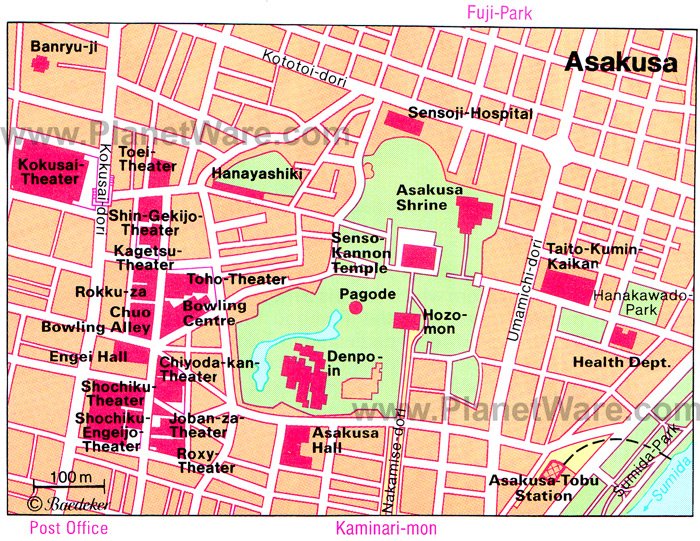
Highlights : A paradise for shoppers with hundreds of shops and restaurants in one of the world's largest pedestrian zones
Ginza is Tokyo's busiest shopping area and it's as iconic as Times Square in New York, and much older. It has in fact been the commercial center of the country for centuries and is where five ancient roads connecting Japan's major cities all met. Lined by exclusive shops and imposing palatial stores, the Ginza district is also fun to simply wander around or. Better still, sit in one of its many tea and coffee shops or restaurants while watching the world rush past.
At weekends, when everything is open, it's a shopper's paradise as traffic is barred, making it one of the world's largest pedestrian zones. Come nightfall, gigantic advertising panels on its many buildings bathe Ginza in bright neon light.
It's also where you'll find the famous Kabuki-za Theatre (see #12 below), home to traditional Kabuki performances, as well as the Shinbashi Enbujō Theatre in which Azuma-odori dances and Bunraku performances are staged.
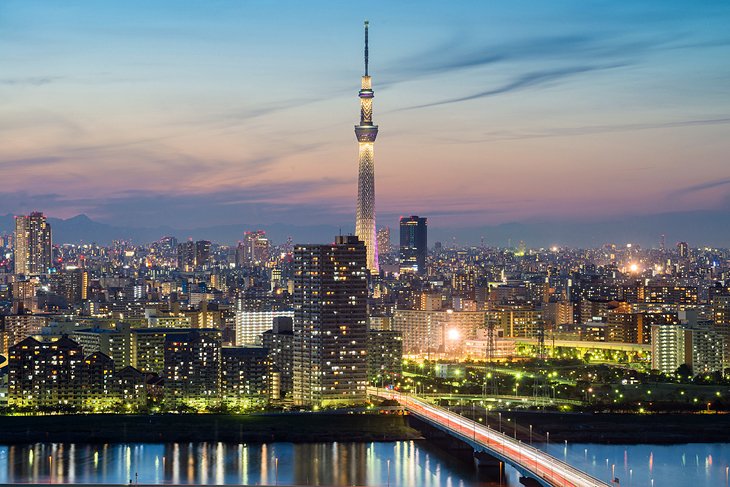
Highlights : The tallest structure in the country, featuring a restaurant and multiple observation decks
It's hard to miss the Tokyo Skytree (Tōkyō Sukaitsurī). This 634-meter-tall communications and observation tower rises out of the city's Sumida district of Minato like a huge rocket ship.
The country's tallest structure (and the world's tallest freestanding tower), the Tokyo Skytree opened in 2012 and has quickly become one of the city's most visited tourist attractions thanks to the incredible panoramic views from its restaurant and observation decks.
With a base designed in the form of a massive tripod, the tower includes a number of cylindrical observation levels, including one at the 350-meter mark, and another at the 450-meter point - the latter includes a unique glass spiral walkway to an even higher viewpoint with glass floors for those with strong stomachs.
Be sure to also check out the smaller and much older Tokyo Tower , built in 1958 and once the city's tallest structure.
Address: 1 Chome-1-2 Oshiage, Sumida City, Tokyo
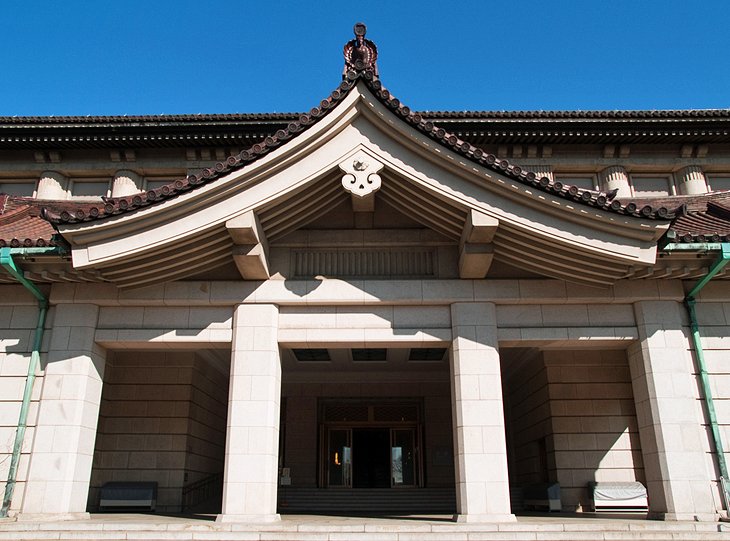
Highlights : One of the largest collections of historic Japanese clothing and pottery from across Asia
Tokyo National Museum (ōkyō Kokuritsu Hakubutsukan) houses more than 100,000 important works of Japanese, Chinese, and Indian art, including more than 100 national treasures.
Opened in 1938, the TNM, as it's usually known, includes highlights such as numerous Buddhist sculptures from Japan and China dating from the 6th century to the present, as well as fine collections of old textiles, historical weapons, and military equipment.
Also noteworthy are its large collections of historical Japanese clothing and Asian ceramics and pottery. Important artwork includes Japanese paintings from the 7th to the 14th centuries, and another must-see is the museum's exquisite collections of Japanese and Chinese masterpieces of lacquer work of various centuries, including examples of lacquer-carving, gold lacquer, and lacquer with mother of pearl. There are also many fine examples of calligraphy.
English-language guided tours are available. Also worth a visit is the museum's traditional Japanese landscape garden with its three pavilions, including the 17th-century Tein Teahouse (Rokuso-an), and the nearby Museum for East Asiatic Art with its 15 exhibition galleries.
Address: 13-9 Uenokoen, Taito City, Tokyo
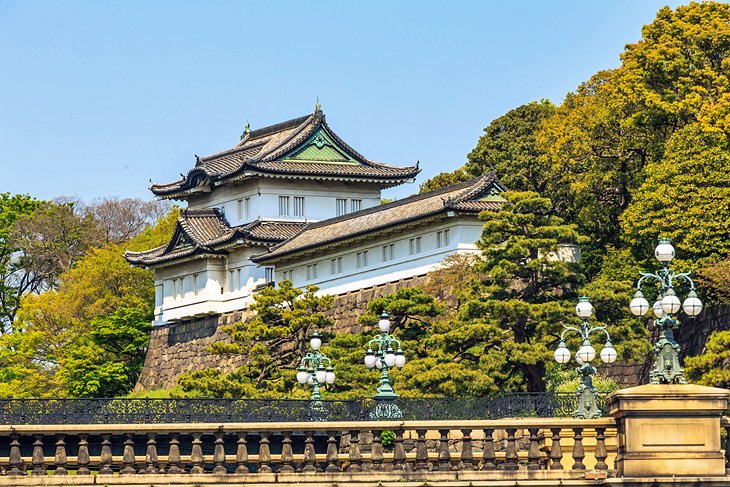
Highlights : A 17th-century palace known for its historic walls, bridge, gate, and garden
The chief attraction of Tokyo's Marunouchi district is the Imperial Palace (Kōkyo) with its beautiful 17th-century parks surrounded by walls and moats. Still in use by the Imperial family, the Imperial Palace stands on the site where, in 1457, the Feudal Lord Ota Dokan built the first fortress, the focal point from which the city of Tokyo (or Edo, as it was then) gradually spread.
As famous as the palace is the Nijubashi Bridge leading to its interior, a structure that takes its name ("double bridge") from its reflection in the water. Other notable features include the two-meter-thick wall surrounding the palace and its gates, one of which leads to the East Higashi-Gyoen Garden.
Tours of the Imperial Palace are available (pre-registration required) and include the Kikyo-mon Gate, Someikan (Visitors' House), Fujimi-yagura ("Mt. Fuji View" Keep), the East Gardens and Inner Gate, the Seimon-tetsubashi bridge, and the Imperial Household Agency Building (be sure to plan ahead).
Another fortress that can be visited is Edo Castle (Chiyoda Castle). Built in 1457, it's located in Tokyo's Chiyoda district.
Address: 1-1 Chiyoda, Chiyoda City, Tokyo 100-8111
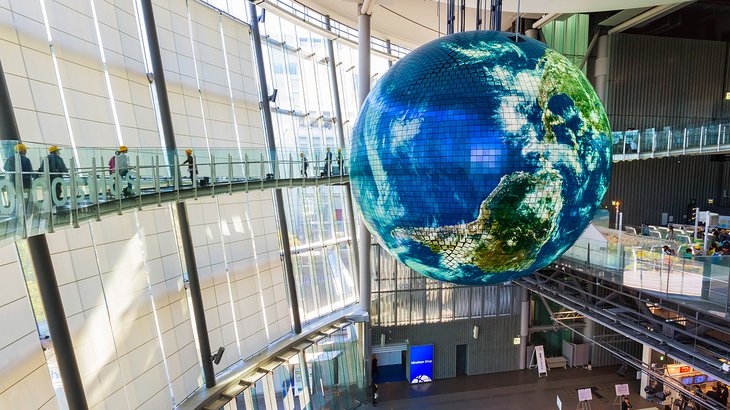
Highlights : Hands-on exhibits that teach visitors about everything from earthquakes to weather, energy, robotics, and much more
One of Tokyo's newest museums, the impressive National Museum of Emerging Science and Innovation (Nippon Kagaku Mirai-kan) – usually simply referred to as the Miraikan – offers a fascinating insight into Japan's leading role in the field of technology.
Created by Japan's Science and Technology Agency, this ultra-modern, purpose-built facility includes many hands-on interactive exhibits dealing with everything from earthquakes to weather, as well as renewable energy and robotics. Highlights include a number of displays relating to modern transportation such as a superb model of a Maglev train, as well as a robotics exhibition.
Also worth visiting is the Edo-Tokyo Museum. Completed in 1993, the museum's exhibits deal with the region's rich past, present, and future. Of particular interest is a replica bridge leading into a mock-up of dwellings in the original old city of Edo.
Address: 2-3-6 Aomi, Koto City, Tokyo
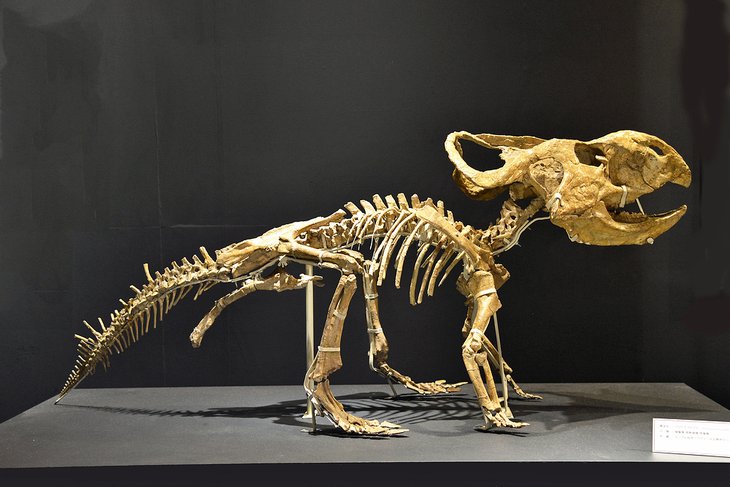
Highlights : A newly renovated museum housing 250,000 items related to natural history and science
Located in Tokyo's Ueno Park , the superb National Museum of Nature and Science (Kokuritsu Kagaku Hakubutsukan) opened in 1871 and is one of the country's oldest museums.
Now completely renovated and modernized, the museum also boasts a reputation as one of the country's busiest and largest museums, housing a vast collection of some 250,000 materials related to natural history and science.
These include many fascinating interactive displays on space development, nuclear energy, and transportation, each allowing visitors a unique insight into the latest scientific and technological advances. Highlights of the Japan Gallery (Nihonkan) include numerous exhibits of prehistoric creatures and the history of the Japanese people, including traditional customs and outfits. In the Global Gallery (Chikyūkan) you'll see many excellent scientific and technology displays, including robotics and vintage vehicles.
Address: 7-20 Uenokoen, Taito, Tokyo 110-871
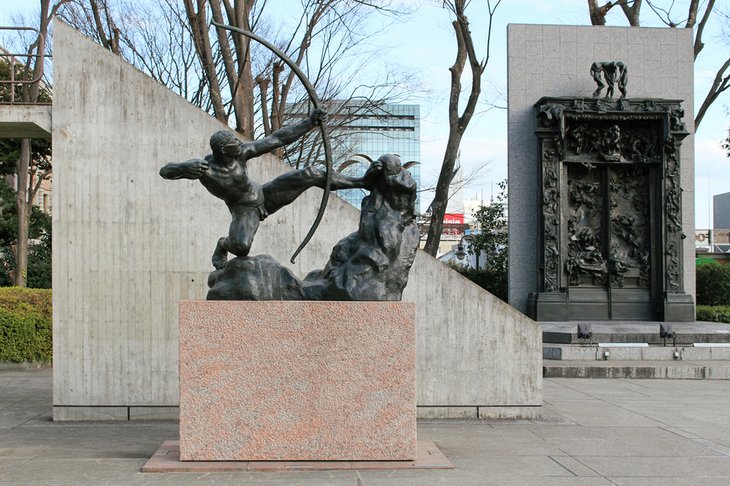
Highlights : A collection of international artists, including Rodin, Monet, Manet, Degas, and many more
Located in Ueno Park and just three minutes' walk from Ueno Station stands the National Museum of Western Art (Kokuritsu Seiyō Bijutsukan). It was built in 1959 to plans by famous Swiss architect Le Corbusier.
The exhibits, largely made up of works by important French artists, come mainly from the collections of Japanese businessman and art collector Kojiro Matsukata, bought during visits to Europe early in the 20th century.
In the courtyard are works by French sculptor Auguste Rodin, while highlights inside are canvases by Impressionists Paul Cézanne, Claude Monet, Edouard Manet, and Edgar Degas. The museum also boasts an excellent restaurant with great views over the courtyard.
Address: 7-7 Uenokoen, Taito City, Tokyo
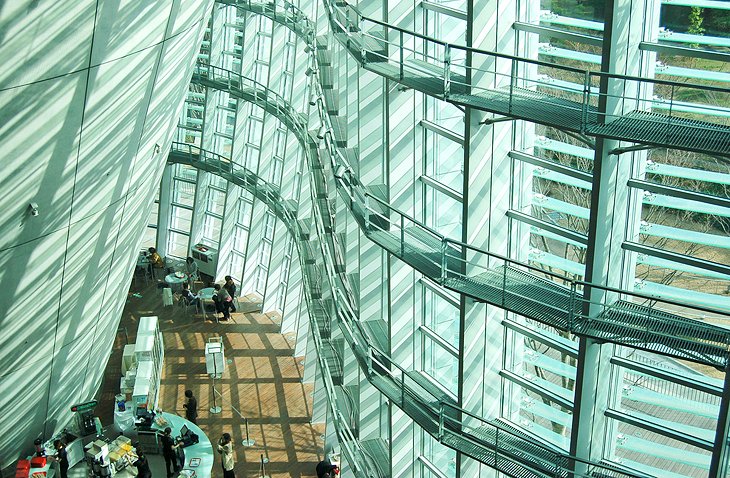
Highlights : A permanent collection of more than 600 paintings from the 20th century
Another of Tokyo's world-class museums, the excellent National Art Center (Kokuritsu Shin-Bijutsukan) is housed in a remarkable curved glass building in the city's Roppongi district. This superb facility only opened in 2007 and has since earned a well-deserved reputation for its fine permanent collection of more than 600 paintings, most from the 20th century. These include many important pieces of modern art and regular visiting exhibitions.
Also worth checking out is the Mori Art Museum (Mori Bijutsukan) on the top floors of the neighboring Roppongi Hills Mori Tower . This fine art museum is notable for its regular exhibits of contemporary artwork from around the globe.
Address: 7-22-2 Roppongi Minato City, Tokyo
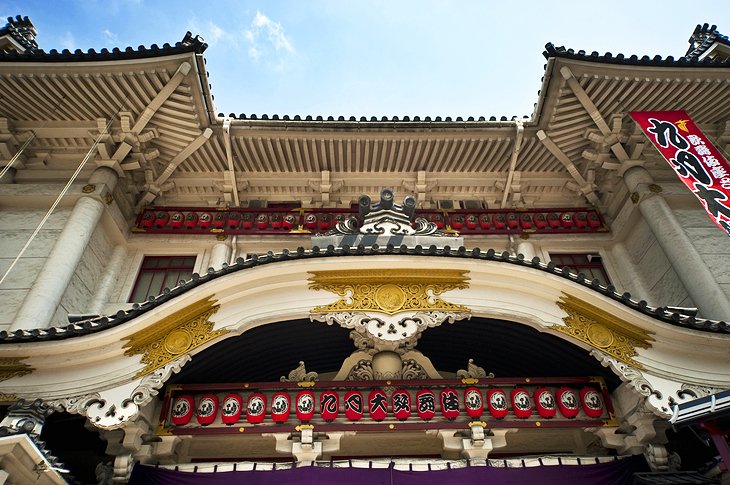
Highlights : A stunning theater showcasing a centuries-old style of performance
Tokyo is home to a number of excellent theaters, none as well known as the historic Kabuki-za Theatre in the city's busy Ginza district , home to famous traditional Kabuki performances.
Based upon a medieval, highly skilled, and often burlesque theatrical form including song and dance, the theater's performances are as popular among tourists as they are with Japanese-speaking people.
The drama and comedy are relatively easy to follow thanks to rich visuals and theatricality. The theater's interior, usually full to capacity with some 2,000 guests, is always intimate and seems more akin to an enormous family get-together than a stage show due to the fact that spectators bring their own food or purchase treats from the various restaurants spread around the auditorium (go for one of the tasty bento box meals).
Performances can last for hours, and spectators stay as long as they wish (or as long as they can bear). And no one seems to take offense at people's comings and goings, nor their loud cheering or jeering.
Address: 4 Chome-12-15 Ginza, Chuo City, Tokyo 104-0061
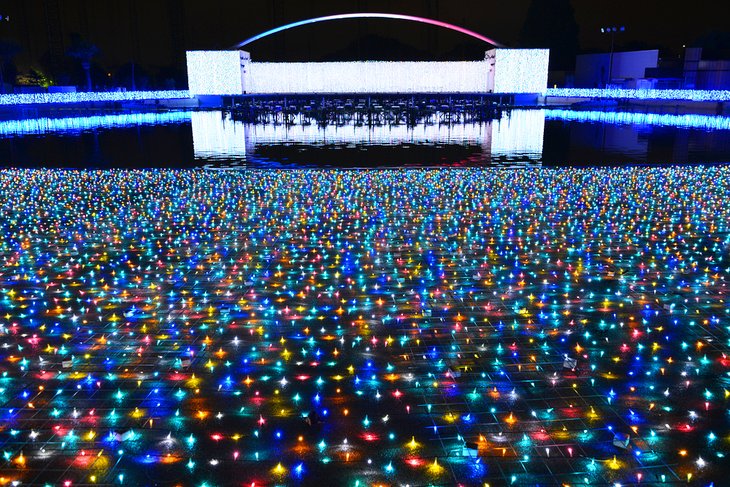
Highlights : An amusement park with hundreds of cherry trees, water attractions, and rides
Sometimes you just want a day to be a kid again, and that's exactly what Yomiuriland has given to the residents of Tokyo since 1964. This amusement park sits 30 minutes from Tokyo and is home to more than 40 attractions and seasonal activities – think roller coasters, rides, light shows, and even a bungee jump.
The park is open year-round and provides something exciting to do at each time of year. In the spring, the park's more than 1,000 cherry trees blush with a blanket of powder-soft pinks. The summer means the opening of the park's many pools and water attractions. Come winter, the landscape is transformed into a twinkling snowscape wonderland.
Most travelers come to Yomiuriland to ride the Bandit, a rollercoaster that snakes its way through the tops of the cherry trees. Of course, the summer pools and waterslides are also a major selling point for this thrill park. Visitors will also find shopping and restaurants and a stage for entertainment.
Address: 4015-1 Yanokuchi, Inagi, Tokyo 206-8566, Japan
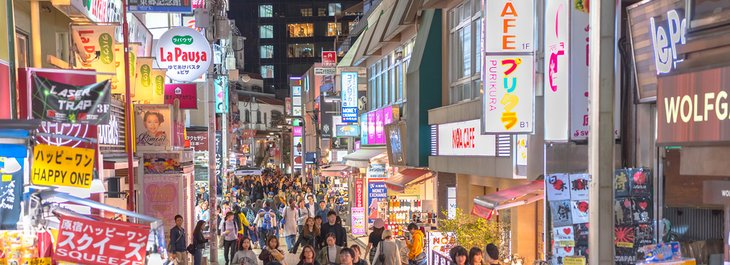
Highlights : Outrageous fashion and futuristic boutiques sit alongside historic attractions and museums.
Nothing is too outrageous when it comes to Tokyo's frenetic Harajuku District. The neighborhood refers to the area near the Harajuku Station, sandwiched between Shinjuku and Shibuya. If you're looking to bend the rules when it comes to everything cultural and fashionable, this is the spot to go.
The main artery of Harajuku (and the best place to spot the crazy teen fashions) is Takeshita Dori, which is flanked on either end by wild and wacky shops. Pink hair, tattoos, and knee-high boots are just the tip of the iceberg here. Even if your style is on the tamer side, fret not – Harajuku has plenty of more mainstream boutiques, as well.
But Harajuku is also home to several historical attractions. Meiji Jingu is located here, as is the small Ota Memorial Museum of Art. Overall, it's the perfect neighborhood to encapsulate Japan's deep-rooted traditions with its surges of futuristic styles.
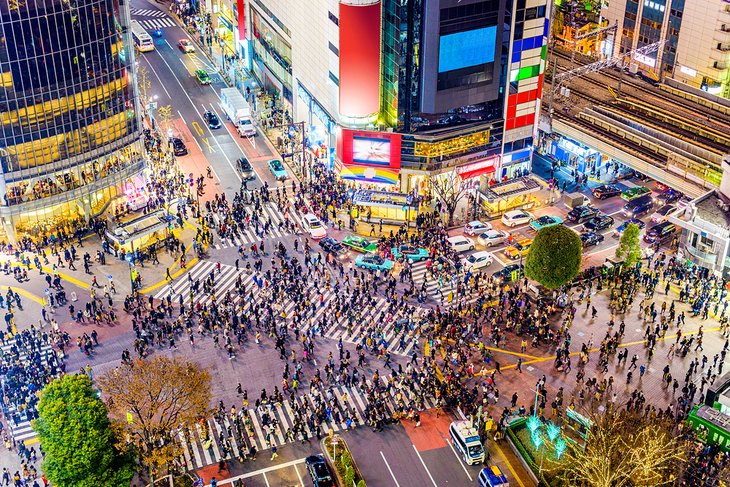
Highlight : More than 3,000 human beings cross the streets at once at this five-way intersection.
If you've never seen an image of Shibuya Crossing, you may want to take a look before you go. Think Times Square, and multiply it several times over. This intersection is one of the most famous in the world, and most definitely the busiest in Japan, flooded with hundreds of thousands of flashing lights from electronic billboards overhead.
At peak times, it is thought that somewhere around 3,000 people cross this five-way intersection at once. It is undoubtedly the mass-transit nucleus of Tokyo. But if the thought of crossing the street with 3,000 of your newest friends is overwhelming, you can always head to the rooftop of the Shibuya 109-2 department store, which has the best bird's-eye view over the organized chaos below.
And even if you aren't in Shibuya to cross the street, you will still find that this neighborhood is absolutely teeming with fabulous restaurants, shopping, and entertainment. It is certainly a neighborhood not to miss when you visit Tokyo.
The best area to stay in Tokyo is the city center within walking distance of top attractions, such as the Imperial Palace, and close to Tokyo Station with its public transit and high-speed rail connections. The following hotels are highly recommended:
Luxury Hotels:
- Perched atop an office tower on the edge of Tokyo's financial district, the high-rise Mandarin Oriental, Tokyo offers excellent views over the city. Rooms and suites are posh, with chic decor and comfy beds. There are 10 restaurants on-site. You'll also find a spa, an indoor swimming pool, and a fitness center.
- Also boasting great views, this time over Tokyo Bay, is the Conrad Tokyo . This luxury hotel is also popular for its proximity to the Ginza district, which is home to great shopping and dining. On-site amenities here include an excellent Cantonese restaurant, a Japanese restaurant with views across the bay, and a third restaurant serving upmarket European fare. You'll also find a swanky spa with an indoor pool and gym in the building.
- Some of the best views in the city are discovered at the refurbished Palace Hotel Tokyo . If you are on a romantic getaway, book one of the posh rooms with a balcony overlooking the gardens of the Imperial Palace. If you're traveling with the kids, many of the suites have kitchens along with separate living rooms. There are multiple restaurants on-site, as well as an indoor swimming pool and a workout room. Finally, treat yourself to a massage at the luxe spa.
Mid-Range Hotels:
- Close to the Imperial Palace and overlooking the magnificent red brick Renaissance-style Tokyo Station, Hotel Ryumeikan Tokyo is also near the city's best dining and shopping. This good-value option offers contemporary rooms with Nespresso machines and mini-fridges. Some have tatami mats and futons. On-site amenities include a few dining options and a traditional tearoom.
- Another good mid-range option near public transport and shopping is Hotel Niwa Tokyo . The hotel is located north of the Imperial Palace and adjacent to the Tokyo Dome baseball stadium. It offers clean and comfortable rooms – some even feature whirlpool baths. There are two restaurants on-site, as well as a gym.
- A great family hotel is the Courtyard by Marriott Tokyo Ginza , just a five-minute walk from the Ginza shopping district. The rooms here feature Japanese-inspired art and comfy beds. The suites also have separate living spaces, which is a bonus for parents. When it comes time to eat, you have three on-site restaurant options, including a Japanese restaurant with hostesses in kimonos and its own tempura counter.
Budget Hotels:
- Just minutes from the iconic Tokyo Tower and Shiba Park, Richmond Hotel Tokyo Shiba offers reasonably priced accommodations. It is especially popular for its proximity to the Haneda Express Monorail, the direct link to Tokyo's international airport. There is free Wi-Fi and a Starbucks café on-site.
- Another economy choice located just across the road from the Kanda River and a quick stroll to the nearest metro station is Hotel Mystays Asakusabashi . The property features tidy but basic rooms with free Wi-Fi. If you want to cook for yourself to save cash, book one with a kitchenette. Amenities include a convenience store on-site, as well as bike rentals.
- If you are really traveling on a tight budget then check out Hotel Yanagibashi , which offers some inexpensive hostel-style shared rooms. There are also cheaper private rooms with shared baths and slightly more expensive private rooms with en-suite baths. There is a communal kitchen so you can cook for yourself, free Wi-Fi, and laundry facilities on-site.
- Sightseeing & History in Tokyo : Tokyo is a big city, and taking a tour is a time-efficient way to see the top sites and one of the best ways to learn about what you are seeing. For a little bit of everything, the 1-Day Tokyo Bus Tour is a great option. This is a 10-hour tour taking in some of the city's top sites, like the Skytree, a cruise on Tokyo Bay, a visit to the Meiji Shrine, the Imperial Palace, and more.
- Day Trip to Nikko National Park: Get outside the steel and concrete of Tokyo and into the lush greenery of Nikko National Park with this full-day excursion. The tour takes you into the rolling countryside, past sacred shrines, and into temples. The Nikko 1-Day Bus Tour features Toshogu Shrine, which is a UNESCO World Heritage Site. You can also visit Lake Chuzenji and Kegon Falls.
- Visit Mt. Fuji : Get up close and personal with one of Japan's biggest attractions: Mount Fuji. On the Mt. Fuji, Hakone, Lake Ashi Cruise, and Bullet Train Day Trip, you'll be whisked out of the city into the countryside for a visit to Mt. Fuji and some of Japan's other top sites. This tour is approximately 12 hours and also includes Mt. Hakone.
Tokyo is a city that enjoys a temperate climate year-round. But the best time to visit Tokyo is March, April, September, October, and November , thanks to its perfect weather and beautiful blossoms and foliage.
September, October, and November are some of the best times to visit Tokyo because they have the best weather. The weather in Tokyo in the fall ranges from 27 degrees to 16 degrees Celsius. The fall is also when the leaves in Tokyo start to change, particularly in October and November. Keep in mind that this is peak time for travelers, so hotel rates may be higher, and expect crowds.
Tokyo is also fabulous during March, April, and May. Temperatures range from 13 to 22 degrees Celsius. April is when Tokyo is awash in pale pink cherry blossoms, as well.
Summers in Tokyo are also top times for tourists, particularly June, July, and August. Expect throngs of crowds during the summer months, as well as heat and humidity. Still, this is one of the top times for tourists to visit Tokyo because schools are out on summer break.
More Related Articles on PlanetWare.com
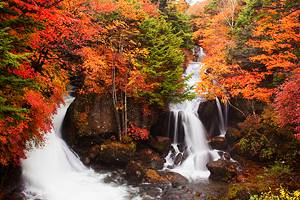
While in Tokyo : Be sure to spend time exploring the many great attractions within an easy day trip of Tokyo . Highlights include family favorites Tokyo Disneyland and Tokyo Disney Sea, as well as a great trip to majestic Mount Fuji .
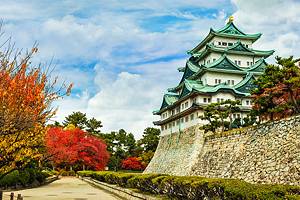
Take the Train : Thanks to Japan's superb rail system, it's possible to use Tokyo as a base to explore numerous other great cities in a day or less. Options include taking a Bullet train to experience the attractions of historic Kyoto (passing Mount Fuji along the way), or heading to Nagoya and exploring the city's many fine shrines and temples, along with its famous castle.
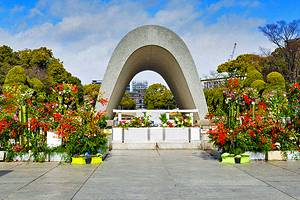
Japan Vacation Ideas : Another city that would serve equally well as a jumping-off point from which to explore Japan is Hiroshima . Here, you can enjoy the amazing Island Shrine of Itsukushima (you can spend the best part of a day here), as well as the many reminders of the city's part in WWII, including Hiroshima Peace Memorial Park and the Peace Memorial Museum. The city of Sapporo on the northernmost island of Hokkaido is also a good place to enjoy the country's rich culture, history, and traditions.

More on Japan

In order to view this website correctly, you will need to have JavaScript enabled in your browser.
Skip to main content.
- Travel Trade & Press
- School Trips
- Business Events
GO TOKYO The Official Tokyo Travel Guide
New & Now
Tokyo Area Guide
Things to Do
Plan Your Trip
- Choose Language 日本語 ENGLISH 中文(简体) 中文(繁體/正體) 한글 ภาษาไทย DEUTSCH ITALIANO ESPAÑOL FRANÇAIS
Share this page
- X (Twitter)
- My Favorites
- All New & Now options
- New & Trending
- Spring Guide
- Summer Guide
- Autumn Guide
- Winter Guide
- Places The Locals Go
- Stories & Guides
- Another Tokyo
- All Things to Do
- Attractions
- Food & Drink
- Onsen & Bathhouses
- Art & Design
- Anime & Manga
- Time Trip Tokyo
- Walks & Tours
- Tokyo Event Calendar
- All Tips to Plan Your Trip
- Accommodations
- Getting to Tokyo
- Getting Around
- Airport & Cruise Terminal Access
- How to have a smooth visit to Tokyo
- Weather & Geography
- Visa & Immigration
- Tokyo at a Discount
- Tours of Tokyo
- TOKYO Brochures
- PDF Maps & Guides
- Tourist Information Centers
- Online Tourist Guide
My Tokyo Guide
See something interesting? Click on the heart button in the article to add a page from this site to My Favorites.
Popular Keywords
- Guide Service
Advanced Search
- From open calendar
- To open calendar
- All Stories & Guides
Select Language
- ESPAÑOL
- FRANÇAIS
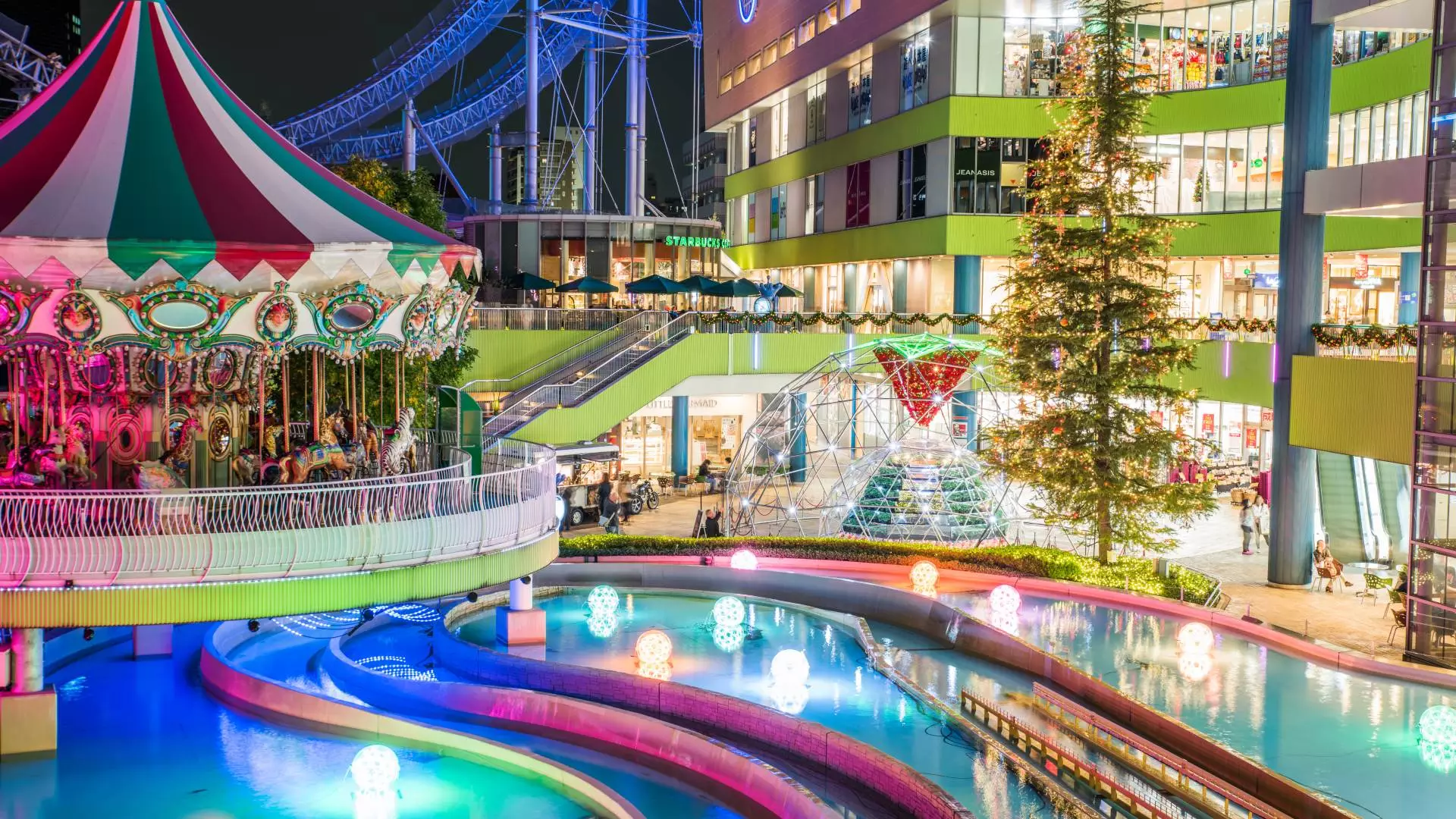
- Top tourist attractions in Tokyo: the best sightseeing spots
Main content starts here.
Explore By Interest
Tokyo tourist attractions.
Explore Tokyo’s historical sites, romantic places and some of the other unique places that make this city so special. Check out our Tokyo tourism guide, complete to find our recommendations for famous places and must-visit locations. From historical sites to the Tokyo of the future, there is lots to see and do.
Get to know the history of Edo and more at Tokyo historical sites
Amid the glittering high rises and bustling modern streets, Tokyo’s long, rich history lives on.
Sensoji Temple
Asakusa’s Sensoji Temple is a tremendously popular destination for visitors. Beyond the iconic Kaminarimon Gate is Nakamise Dori souvenir-shopping street, which leads to a complex of fascinating religious structures.
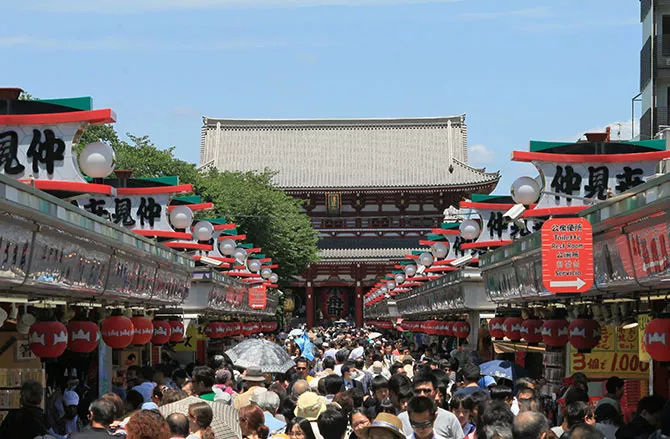
Meiji Jingu
Meiji Jingu (Shinto Shrine) is set in a soothing forest only a few minutes’ walk from JR Harajuku Station. The shrine was built to commemorate the virtues of Emperor Meiji and Empress Shoken. In 2020 the shrine marks its 100th anniversary.
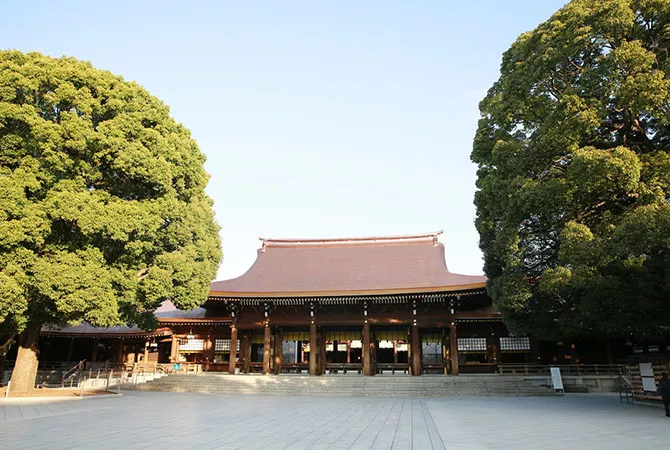
Hamarikyu Gardens
Hamarikyu Gardens is a great place to relax and to reflect on the history of Tokyo when it was still called Edo. Different feudal lords used the space for various purposes, ranging from recitals and rice cultivation to military training and falconry.
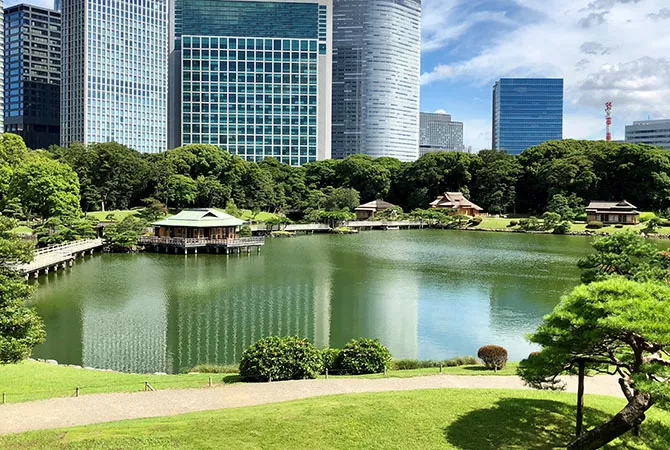
Edo-Tokyo Open Air Architectural Museum
Spend a day away from the bustling city streets exploring a museum of relocated historical buildings. Set in a beautiful park in Tokyo’s western suburbs.
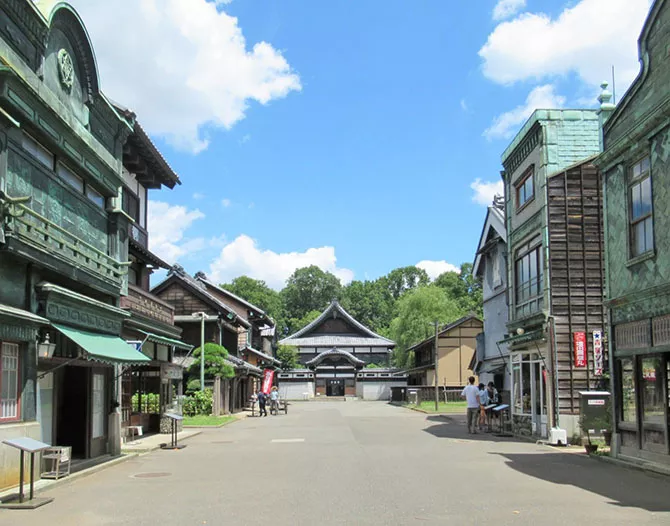
Olympic sites
For history in the making, check out the Olympic sites for the Tokyo 2020 Olympic and Paralympic Games, including the New National Stadium , the Tokyo Metropolitan Gymnasium, Nippon Budokan, and Ryogoku Kokugikan.
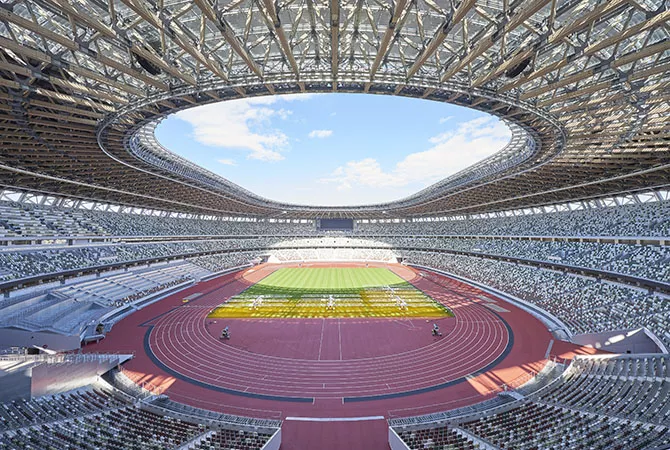
Take your date to these romantic places in Tokyo for an unforgettable experience
Met someone new? Taking a couple’s vacation? Or perhaps even enjoying your honeymoon? You won’t want to miss these romantic places in Tokyo.
TOKYO SKYTREE
On a clear day, the world’s tallest tower offers views for miles and miles in every direction. Not for the faint of heart, but great for thrill-seekers.
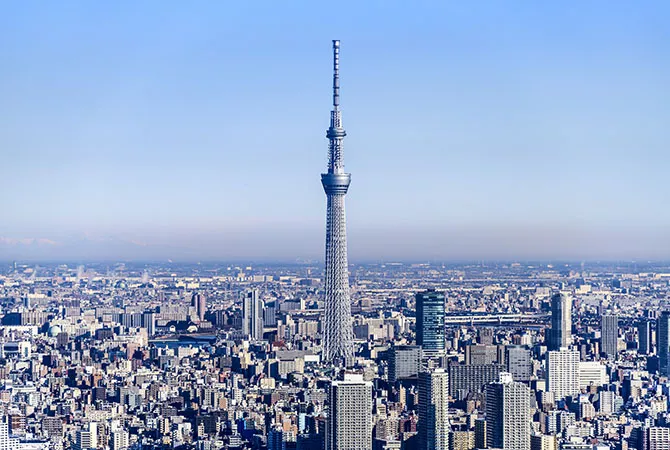
Tokyo Tower
The Beautiful Tokyo Tower was completed in 1958 and remains a very popular lookout point. Just a short distance from such well-known districts as Roppongi and Toranomon.
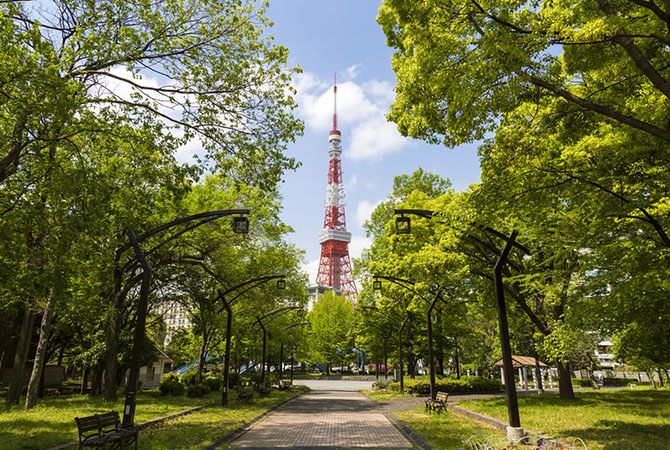
Sumida River
A smooth cruise along the Sumida River is relaxing, romantic, and full of photo opportunities, especially as many of the historic bridges spanning the river have recently been renovated. Enjoy the evening illuminations.
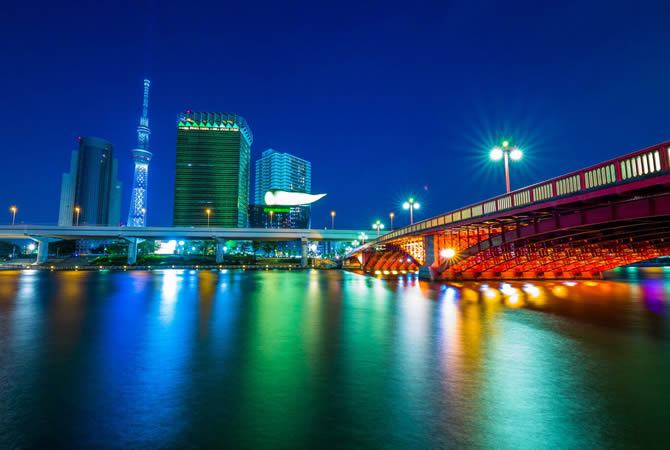
Ginza continues to present Tokyo at its most elegant and luxurious. Come here for the ultimate in shopping and delicious gourmet cuisine.
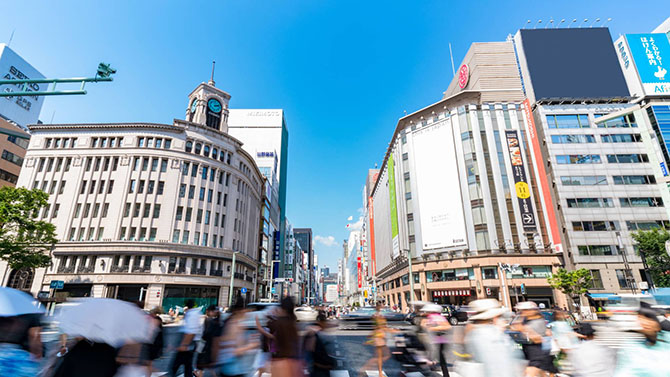
Odaiba offers fascinatingly diverse attractions on a large expanse of reclaimed land in Tokyo Bay. Recommended for lovers of all ages: an evening bayside stroll, admiring the illuminated Rainbow Bridge.
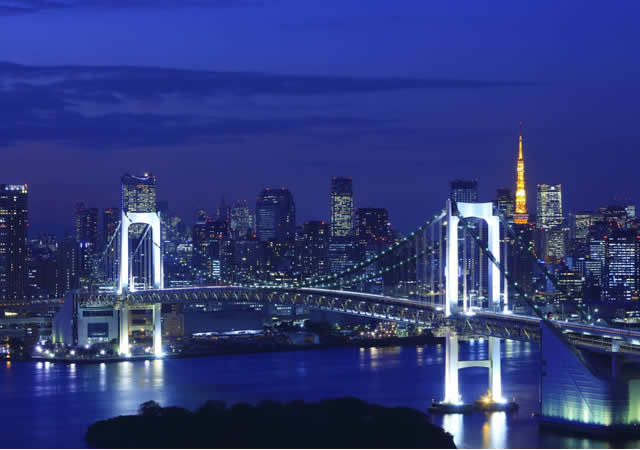
Discover the unknown: unique places and hidden spots in Tokyo
Looking for something a little more off-the-beaten-path? You’ll want to check out one or more of these unique places .
Jiyugaoka is a stylish district of lifestyle stores and appealing eateries. Get a sense of sophisticated everyday residential life in Tokyo.
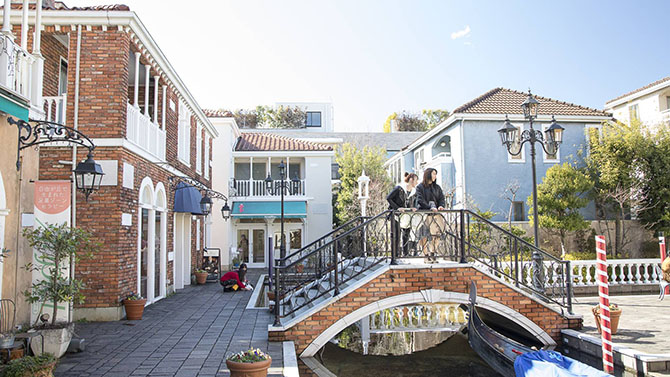
Fashion, cosmetics, cafes and striking architecture—all within a few minutes’ walk of the station. A very chic neighborhood just west of the JR Yamanote loop line.
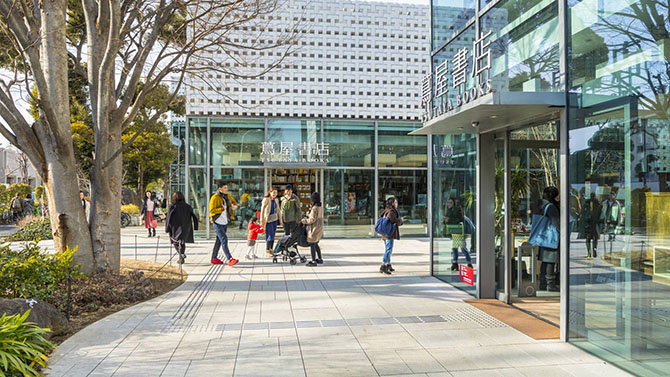
The beating heart of old-fashioned office Tokyo. Come here to find out how Japan’s corporate warriors relax after a hard day at work. Join the fun in a packed izakaya pub.
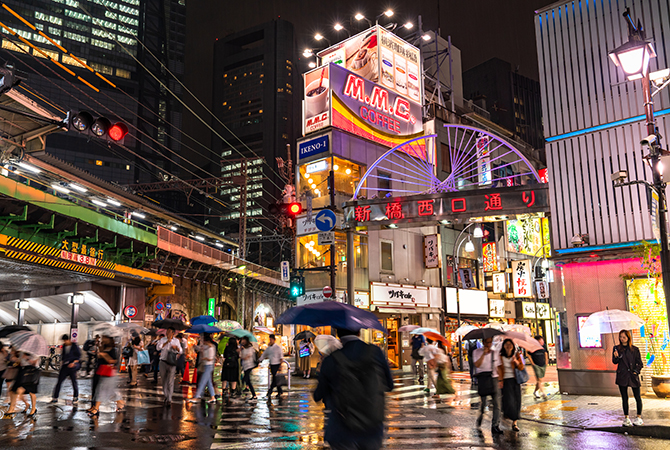
For many visitors from outside Japan, Kichijoji is a largely undiscovered gem, just a 15-minute train ride west of Shinjuku. Enjoy the contrasting pleasures of Harmonica Alley’s traditional eateries and chic department-store shopping.
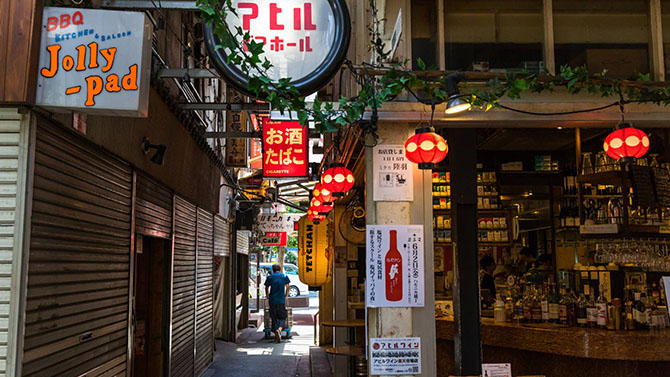
Anime attractions
Ikebukuro , Nakano and Akihabara are among the must-see locations for any fan of anime and manga. Big-name shops like Animate will have everything you need, but smaller shops also offer quirky souvenirs.
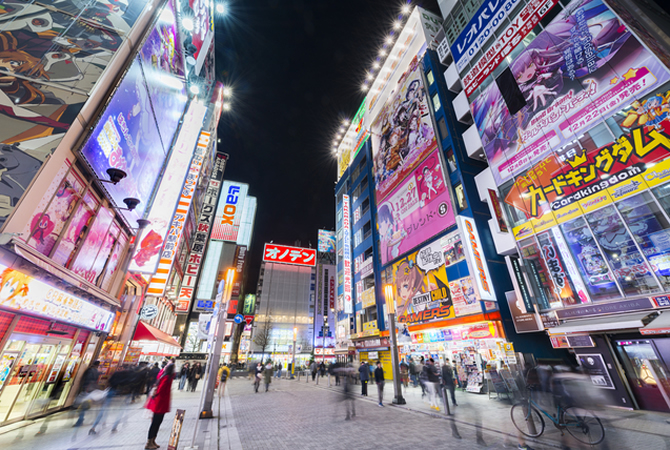
Best ways to get around: transportation for sightseeing
Tourist buses in tokyo.
You can enjoy lots of attractions using tourist buses such as Hato Bus, SKY BUS, and hop-on hop-off buses. As you enjoy the view from the roof of a double-decker bus, you can also listen to knowledgeable tour guides’ explanations. Note: Some tours offer foreign language support via electronic audio devices.
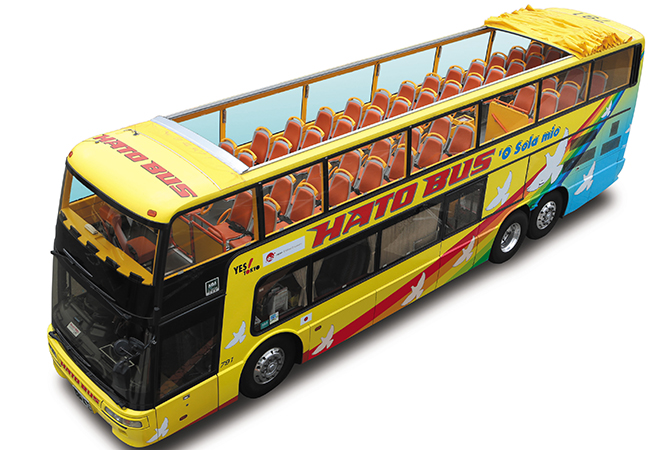
Train passes especially for tourists
Various passes enable visitors to travel around Tokyo at discount rates. Use the city’s outstanding transit system like a pro. Note that you may need to show your passport in order to access the following services.
These are prepaid and rechargeable. Anyone using Tokyo trains and buses appreciates the convenience of Suica and PASMO cards. As a visitor, you can use special versions of each card that are valid for just 28 days. These IC cards can also be used at some shops and cafes, and you can recharge your card near the station gates.
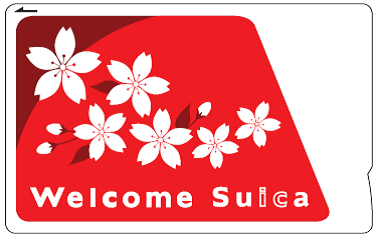
Train passes
Discount train passes for tourists make traveling around Tokyo more affordable. Tokyo Free Kippu, Toei One-Day Pass and Tokyo Metro 24-Hour Ticket are valid for one day. Each offers access to different transit services. The price of each is a guide to its scope of use.
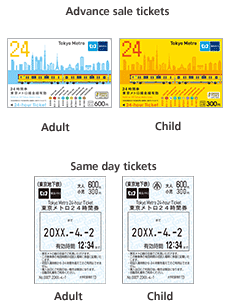
Toei Bus One-Day Pass
You can really get a sense of Tokyo and its people if you thread your way through the streets on a bus. But these are only a few of many options. For more information, see the Cheap Tickets and IC Cards page.
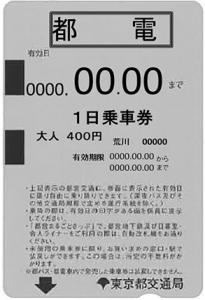
Other modes of transportation
Buses are another great way to get around Tokyo . For many, you can use an IC card. Taxis are fast, but more expensive than trains or buses. In Japan, the passenger door is operated from the driver’s seat. Just wait, and it will open. Recently popular are rentacycles, a great way to see the slow side of Tokyo.
Best places to stay near major attractions
While there is no need to stay in any specific area or tourist hotel , some parts of Tokyo may be more convenient depending on your plans. For a traditional Tokyo experience, try the Asakusa area, home to Sensoji Temple. For shopping and trends, Shinjuku is a great base. Planning to travel by Shinkansen? Tokyo , Shinagawa , or Ueno may be good bets. And for party animals looking to stay out late, dance the night away in Shibuya or Roppongi .
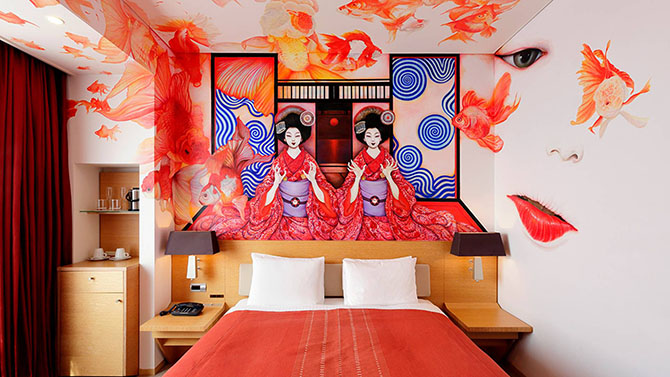
Reference Link
Tour Guide Services by Tokyo Volunteer Guides
A selection of free and low-cost guided tours operates from the Tokyo Tourist Information Center offices in the Tokyo Metropolitan Government Office Building and Shinjuku Bus Terminal.

VISIT TOKYO’S BEST ATTRACTION
Lose yourself in magical worlds, with tickets for Tokyo’s must-see attractions.
Tokyo Skyline: The Best Places for Tokyo City Views
The vast landscape of Tokyo has some of the best skyline views in the world.
- Visit Tokyo >
- Best things to do in Tokyo tailored to your preferences >
- About This Site
- Font Size and Color
Copyright © Tokyo Convention & Visitors Bureau. All rights reserved.
Plan Your Trip to Japan: Best of Japan Tourism

Essential Japan

Trending in the forums
Japan Is Great For
Art & history.
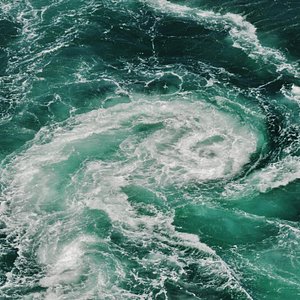
The great outdoors

Historic sites
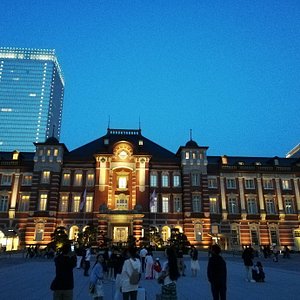
- Media & Industry
- Meetings & Events
- Select Language 简体中文 繁體中文(香港) 繁體中文(臺灣) India (English) Bahasa Indonesia 한국어 ภาษาไทย Tiếng Việt Singapore (English) Philippines (English) Malaysia (English) Australia/New Zealand (English) Français Deutsch Italiano Español United Kingdom (English) Nordic countries(English) Canada (English) Canada (Français) United States (English) Mexico (español) Português العربية Japan(日本語) Global (English)
- India (English)
- Bahasa Indonesia
- Singapore (English)
- Philippines (English)
- Malaysia (English)
- Australia/New Zealand (English)
- United Kingdom (English)
- Nordic countries(English)
- Canada (English)
- Canada (Français)
- United States (English)
- Mexico (español)
- Global (English)
- Fujiyoshida
- Shimonoseki
- Ishigaki Island
- Miyako Island
- Kerama Island
- Tokyo Island
- Koka & Shigaraki
- Hida Takayama
- Ginza, Nihonbashi
- Beppu & Yufuin (Onsen)
- Ginzan Onsen
- Nagasaki Islands

- Kumano Kodo
- Shikoku Karst
- Amami Oshima
- Hachimantai
- Omihachiman
- Aizuwakamatsu

- Diving in Japan
- Skiing in Japan
- Seasonal Flowers in Japan
- Sustainable Outdoors
- Off the Beaten Track in Japan
- Scenic Spots
- World Heritage
- Home Stays & Farm Stays

- Japanese Gardens
- Japanese Crafts
- Temple Stays
- Heritage Stays
- Festivals and Events
- Theater in Japan
- Japanese Tea Ceremony
- Cultural Experiences in Japan
- Culture in Japan

- Local Cuisine Eastern Japan
- Local Cuisine Western Japan
- Local Street Food
- Japan's Local Ekiben
- Japanese Whisky
- Vegetarian and Vegan Guide
- Sushi in Japan Guide
- Japanese Sake Breweries

- Art Museums
- Architecture
- Performing Arts
- Art Festivals
- Japanese Anime and Comics
- Japanese Ceramics
- Local Crafts

- Scenic Night Views
- Natural Wonders
- Theme Parks
- Samurai & Ninja
- Iconic Architecture

- Wellness Travel in Japan
- Japanese Ryokan Guide
- A Guide to Stargazing in Japan
- Relaxation in Japan
- Forest Bathing (Shinrin-yoku)

- Experiences in Japan
- Enjoy my Japan
- National Parks
- Japan's Local Treasures
- Japan Heritage
- Snow Like No Other
- Wonder Around Japan

- Visa Information
- Getting to Japan
- Airport Access
- COVID-19: Practical Information for Traveling to Japan
- Anime Tourism
- Countryside Stays
- Accessible Tourism
- Hokkaido Great Outdoors
- Scenic World Heritage in Tohoku
- Shikoku’s Nature and Traditions
- Southern Kyushu by Rail

- Traveling by Rail
- How to Travel by Train and Bus
- JR Rail Passes
- Scenic Railways
- Renting a Car
- Sustainable Travel in Japan
- Travel Brochures
- Useful Apps
- Online Reservation Sites
- Eco-friendly Accommodation
- Luxury Accommodations
- Traveling With a Disability
- Hands-free Travel
- How to Book a Certified Tour Guide
- Volunteer Guides
- Tourist Information Center

- Japanese Manners
- Spring in Japan
- Summer in Japan
- Autumn in Japan
- Winter in Japan
- Cherry Blossom Forecast
- Autumn Leaves Forecast

- Japan Visitor Hotline
- Travel Insurance in Japan
- Japan Safe Travel Information
- Accessibility in Japan
- Vegetarian Guide
- Muslim Travelers
- Safety Tips

- JAPAN Monthly Web Magazine
- Arts & Cultures
- Nature & Outdoor
- Festivals & Events
- Insider Blog
- Things to do
- Local Guides
- Food & drink
- Traditional
- Hokuriku Shinetsu

My Favorites
${v.desc | trunc(25)}
Planning a Trip to Japan?
Share your travel photos with us by hashtagging your images with #visitjapanjp
Kanto Tokyo High rise, fast-paced and neon-lit, Tokyo is as futuristic as it is historical
- Destinations
As Japan’s capital and the world’s most populous metropolis, Tokyo offers tradition and innovation, and unlimited opportunities to eat, shop and explore
Tokyo is located on Tokyo Bay in the Kanto region of Honshu, Japan’s largest island. The closest airport airports are Haneda officially known as Tokyo International Airport, and Narita Airport , Japan's largest international airport. Tokyo is known for its fashion and shopping, from the trendy shopping districts of Harajuku and Shibuya , to the luxury flagships of Ginza . Shinjuku is the thriving business district; a mix of gleaming skyscrapers and atmospheric back streets with tiny bars. Asakusa is the heart of Tokyo’s downtown, with ancient temples and traditional stores. Tokyo is a foodie paradise with more Michelin-starred restaurants than any other city in the world, along with hundreds of cheap and delicious ramen shops. Tokyo Weather Tokyo has mild spring weather, followed by hot and humid summers punctuated with typhoons. Autumn in Tokyo is cool and fresh, followed by cold, dry winters. Snow is rare but has been known to fall in the first few months of the year. The one week forecast for Tokyo is an accurate guide to the weather for the coming week.
How to Get There
- Exploring Tokyo's dizzying array of restaurant and dining options, from theme cafes to haute cuisine
- Checking out the latest electronics, games and gadgets at Akihabara, the home of technology and anime culture
- Experiencing vibrant youth culture in Harajuku and Shibuya, the trend capitals of Tokyo
- Visiting Tokyo' s most famous temple, Sensoji, before ferrying down the Sumida River and learning the role the city's waterways played in Edo-era Tokyo
Recommended for You
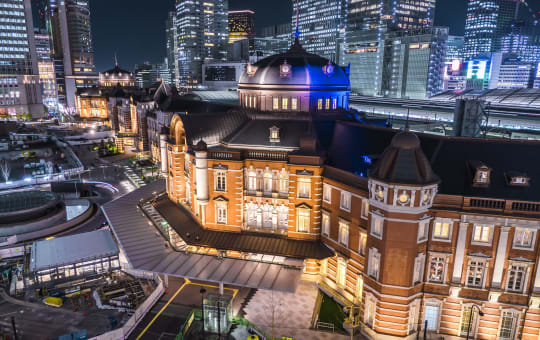
Cherry Blossoms
Forecast of first bloom
24 Mar 2024
Forecast of full bloom
30 Mar 2024
Explore Tokyo by Area

Trending Attractions in Tokyo
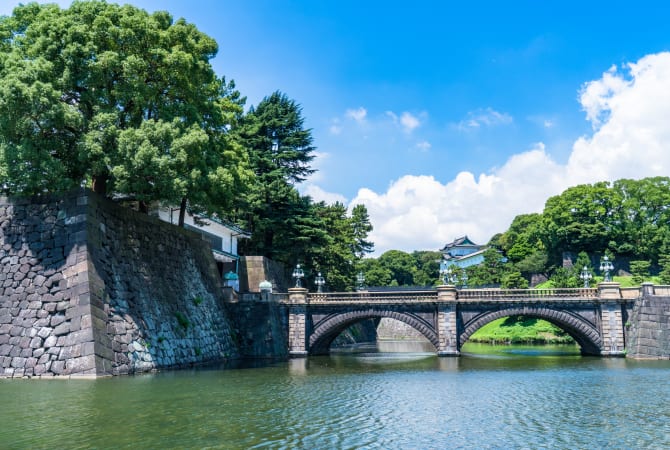
Local Specialties
Tokyo Pattern-Dyed Fabrics
The beauty of Tokyo Komon is in its subtlety. The fabric appears to be a solid color from a distance but up close a delicate pattern is revealed through repeated dots and tiny lines. Once worn by high-ranking samurai, komon is now prized for its beauty and the skills required in its production.

Tokyo Dyed Silk
Elegance and sophistication define the subtle designs of Tokyo Yuzen kimonos, still produced in the city today. This technique of dyeing and hand-painting silk dates back over 300 years, and is unique in that the entire process from design to completion is handled by a solitary artist, allowing for wonderful individuality.
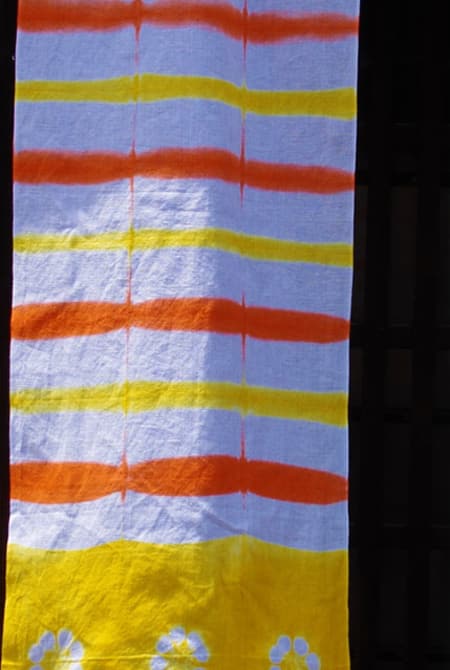
Fukagawa-Meshi
Fukagawa-meshi combines clams, miso and leeks to make a warming, flavorful soup that is poured over a bowl of rice. Clams and leeks are first boiled together to create a rich, briny broth, before miso is then added. The resulting soup and clams are then poured over a bowl of white rice. Fukagawa-meshi is typically eaten with chopsticks so don't be afraid to pick up the bowl and slurp. Outside of the Fukagawa district of Tokyo, this dish can be hard to find.
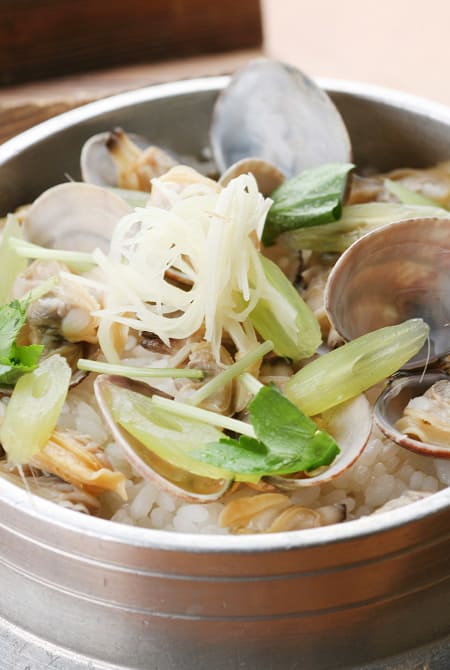
Murayama Oshima Pongee Silk
Prized for making beautiful, natural, lightweight kimonos, Musashi-Murayama Tsumugi is a blend of silk and cotton dyed in a unique process known as itajime, where the threads are bound to a wooden board and splashed with color. The result is a distinctive blurred effect in blues and browns.

Tokyo Shamo
A breed of chicken imported to Japan from Thailand as gamecocks. As a delicacy, Tokyo shamo yield an oil-rich cut of chicken that is perfect for grilling yakitori style.
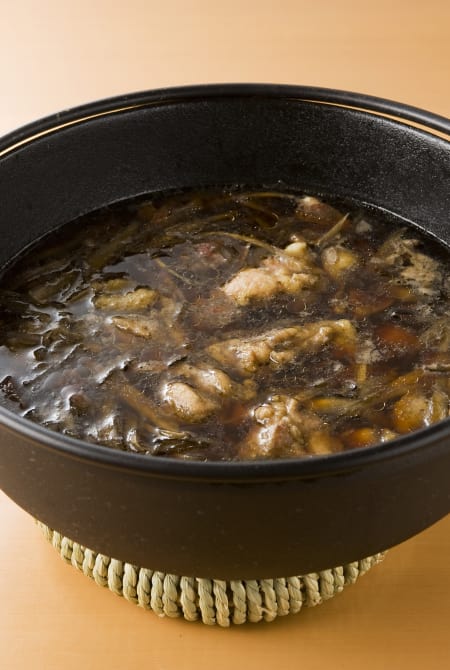
A savory pancake made of finely chopped cabbage, flour, egg and dashi. Other ingredients such as pork, shrimp and octopus are added according to your tastes. Monjayaki has more dashi in its batter than its Kansai cousin, okonomiyaki, giving it a melted cheese texture.
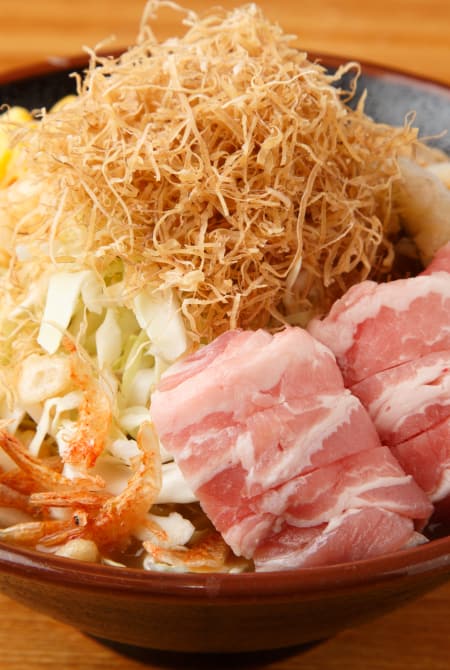
Edomae Sushi
The style of sushi most familiar worldwide. As Edo, which is now Tokyo, became wealthier, sushi became a less formal, faster style of dining. Busy Tokyoites simply sat down at the counter and called out their orders to the nearest itamae—the chefs.
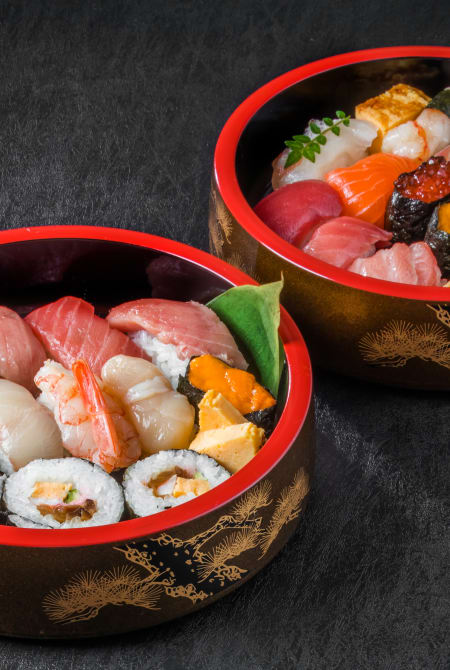
Japanese Swords
Japanese swords are revered for the strength and beauty of their blades as well as the “spirit of the samurai” history they represent. Regarded as works of art more than as weapons, superb examples of these swords can be viewed at the Japanese Sword Museum in Sumida, Tokyo.
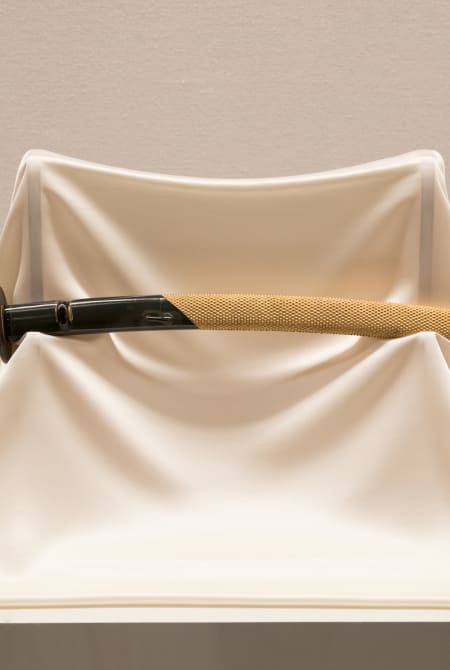
Edo Cut Glass
Originally made in Edo—present-day Tokyo—kiriko is decorated entirely with precision cuts. Exquisite patterns characterize these statement pieces, making this cut glassware a perfect addition to any bar set.
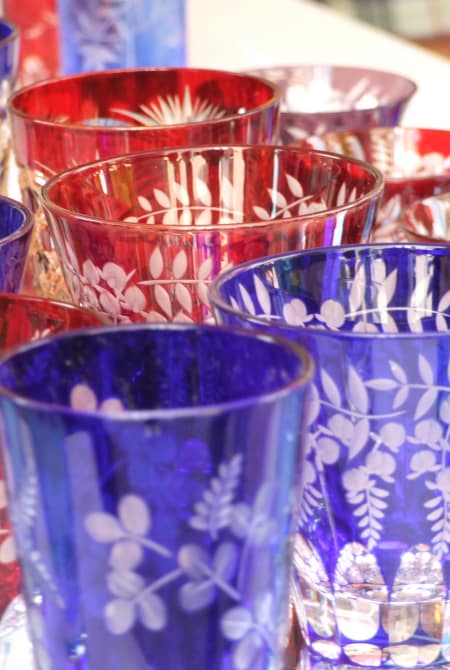
Seasonal Highlights
See the city take on a gentler appearance as the plum blossoms and cherry blossoms flower. Stretch out on a mat, drink sake and eat Japanese dumplings under the blooms at Shinjuku Gyoen, Yoyogi, Ueno or Inokashira parks. Parks have different rules and regulations so make sure to check before visiting.
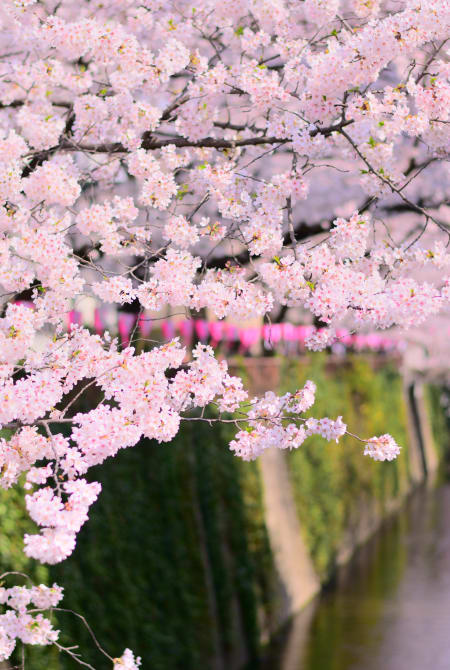
Enjoy one of Japan's largest fireworks displays at the Sumida River. Head for Mt. Takao for its seasonal beer garden and to see some fireflies.
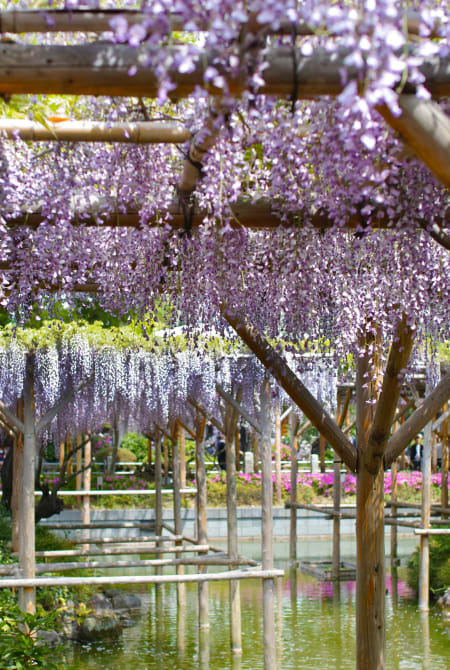
Visit gardens such as Koishikawa Korakuen, or hike the Okutama mountains for fantastic fall foliage. Temperatures cool but the event calendar heats up with the Tokyo Game Show and Tokyo International Film Festival.
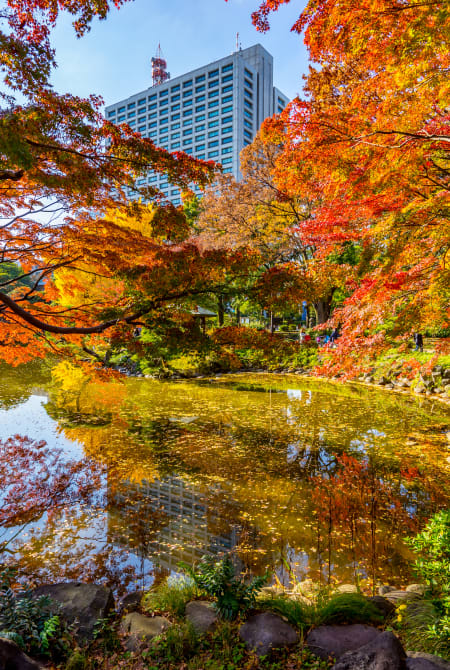
Winter illuminations appear throughout the city, ice-skating rinks open and revelers crowd shrines and temples such as Sensoji Temple and Meiji-jingu Shrine for New Year pilgrimages and festivities.
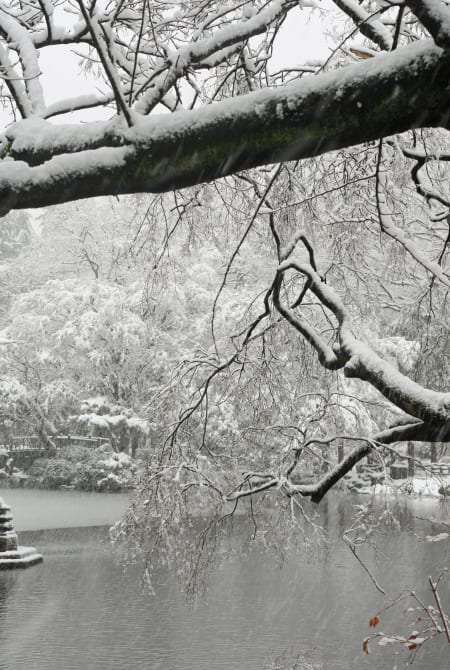
Related Links
Search for accommodation in Tokyo
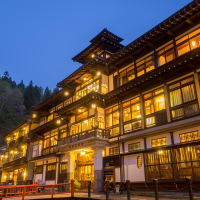
How to get to Haneda Airport

BONDS HOUSE and Sakura Cross Hotel take in those stranded by COVID-19, provide you a place to feel safe for free
Explore Nearby Prefectures
Please Choose Your Language
Browse the JNTO site in one of multiple languages
Rising sun: Back to the best of Japan
Sponsored by

Feb 23, 2023 • 7 min read
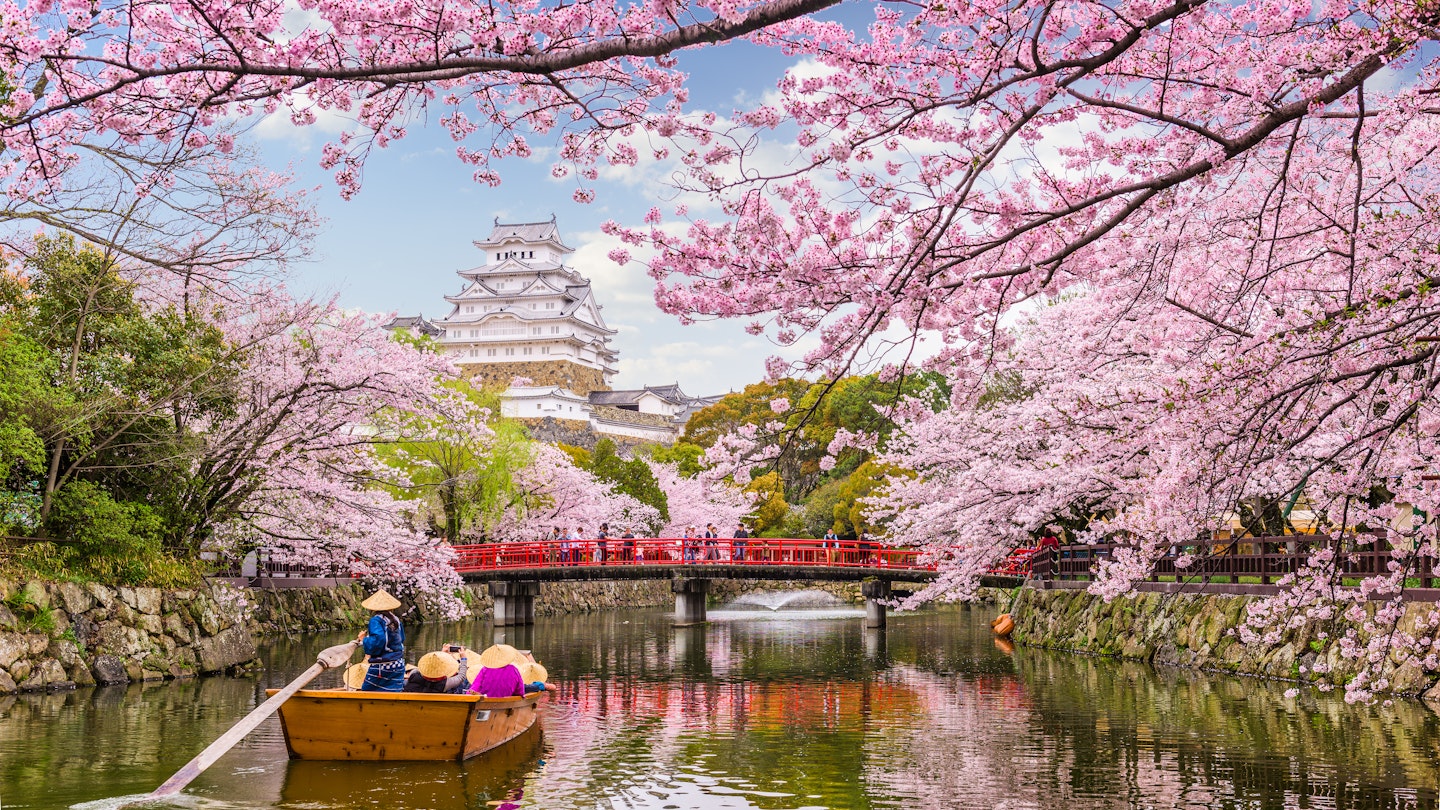
What makes Japan such a breathtaking destination hasn’t gone anywhere © Sean Pavone / Shutterstock
The uncertainty of the pandemic years was challenging if you were hoping to travel to Japan . With the country closed to tourism for years, it was hard to know when you’d be able to go back, and what the country would be like when you could.
Luckily, what makes Japan such a breathtaking destination hasn’t gone anywhere. Truly timeless in its appeal, this incredible country has a long list of greatest hits to beckon both first-timers and repeat visitors.
Now that the country is open again, we’ll revisit the best of Japan – the traditional culture, the exquisite cuisine and amazing outdoor adventures, and highlight why the country should be at the top of your bucket list yet again.
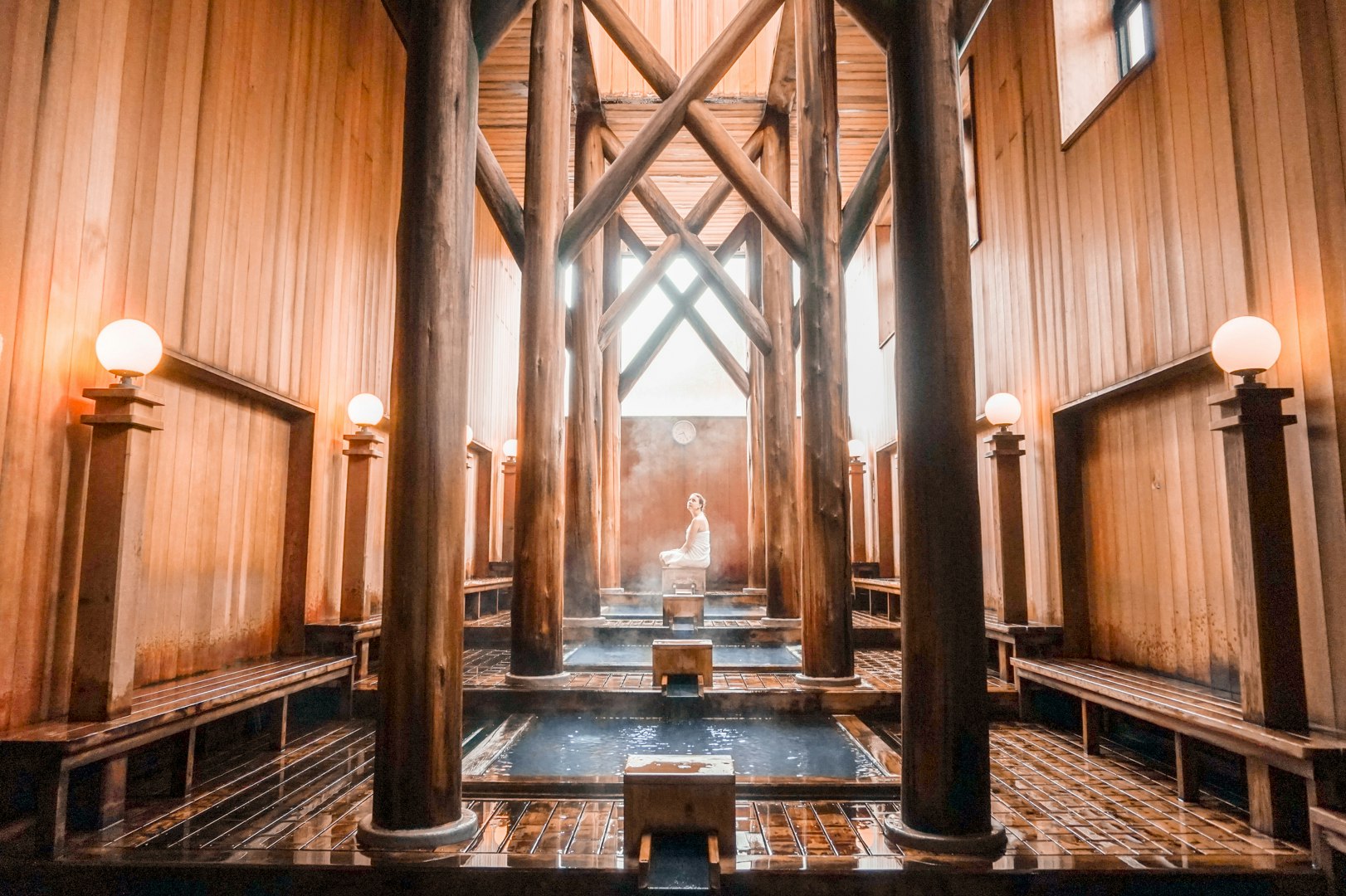
Staying in a Ryokan and Relaxation at Japanese Onsen
Stepping into a ryokan feels like you have truly arrived in Japan. The welcoming smell of tatami, the shuffle of slippers down the halls, and traditional yukata robes to look the part. If you want quintessential Japan all in one package, a stay at a ryokan is hard to beat.
Here you can experience Japanese omotenashi (hospitality) at its finest. Think being served tea in your room upon arrival, having your futon magically made for you while you’re away at dinner, to multi-course kaiseki meals, a taste of what gives washoku (traditional Japanese cuisine) its place on the UNESCO list of Intangible Cultural Heritage of Humanity.
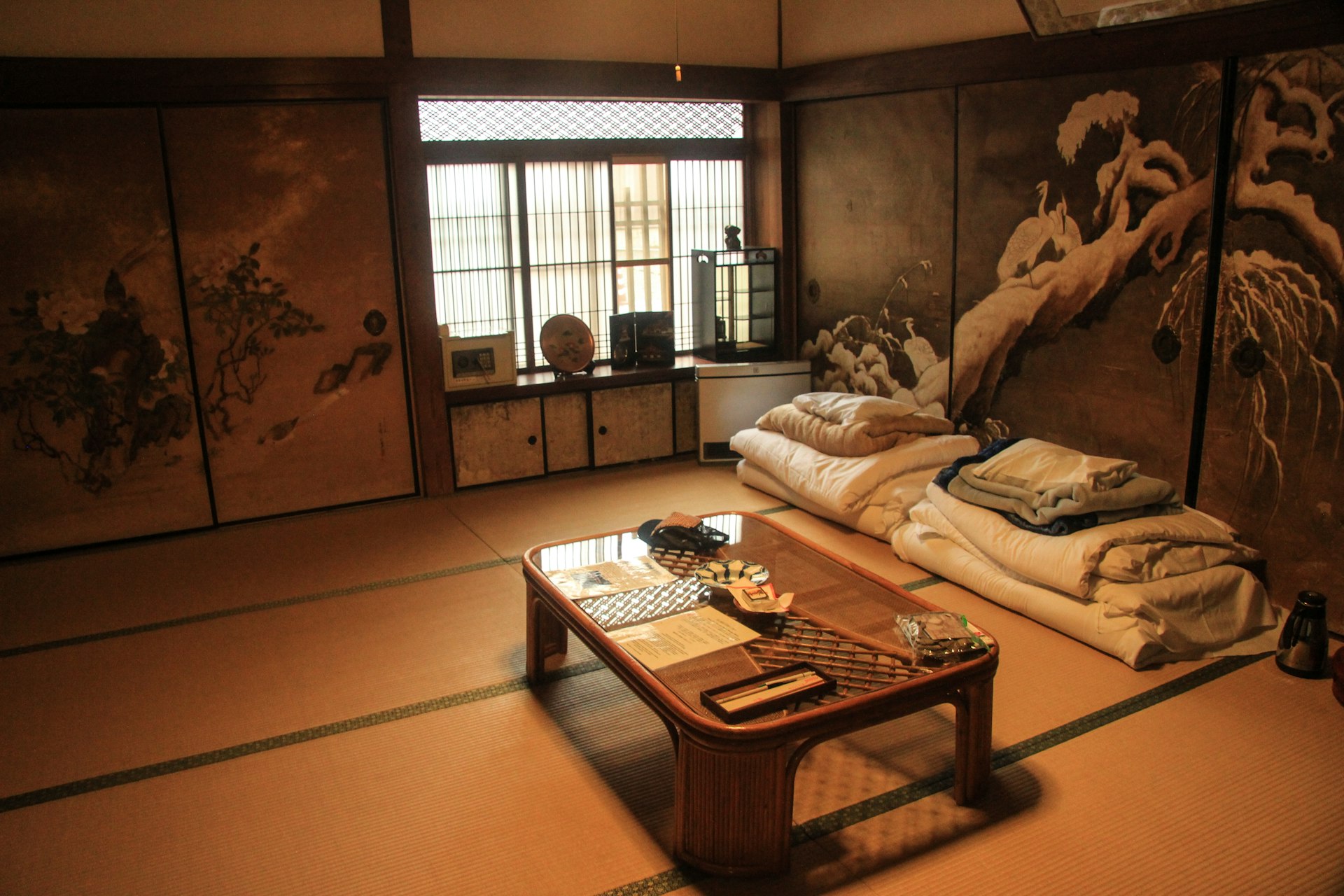
To top it off, many ryokan feature shared onsen or sento facilities included as part of the room charge, with some even offering private bathing options that may be reserved by guests for set time periods or in-room private baths for use at your leisure. For the ultimate in relaxation, book a ryokan in an onsen town and hop from one glorious hot spring to the next.

Modern, exciting Tokyo and traditional Kyoto
The juxtaposition of Japan’s modern and ancient capitals is by now such classic imagery that it would be difficult to imagine the highlights of Japan without them.
While both Tokyo and Kyoto have perfected a fusion of traditional culture and the conveniences of modern-day living, there’s no doubt that these two cities lean into their conventional stereotypes.

On a trip to Tokyo, you can be guaranteed the exhilaration of the neon lights and busy crossings of the biggest metropolis on earth, while Kyoto’s vast network of historic temples and shrines, alongside immaculate gardens, is the very image of traditional Japan.
Well-connected via rail, the jaunt between Tokyo and Kyoto is an easy one, with the fastest option the shinkansen bullet train (2-3 hours). Other bullet trains easily connect to other parts of the country as well, making these two cities the perfect springboard to get off the beaten track.
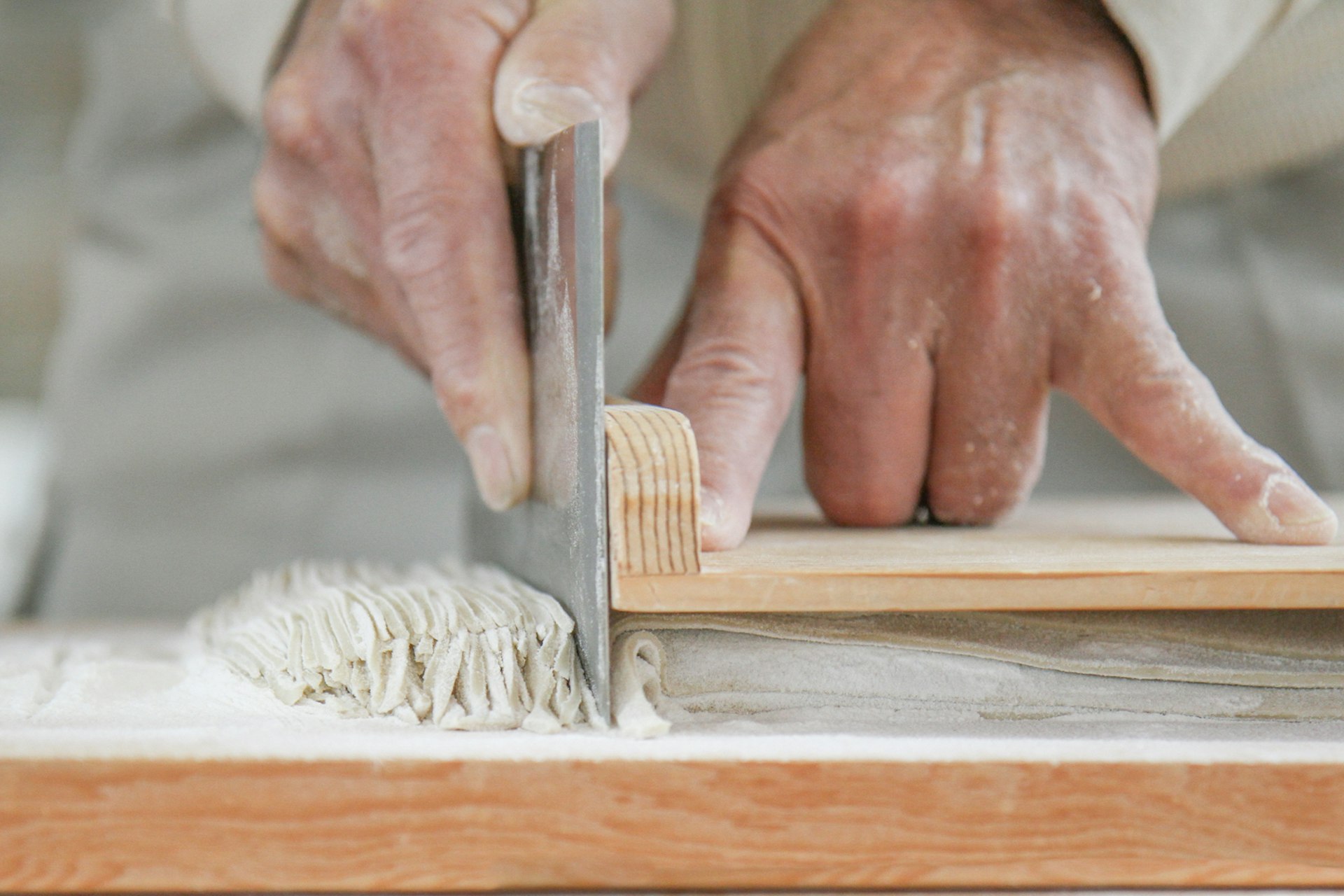
Japanese cuisine and its delectable noodles
It’s safe to say that Japanese cuisine would look very different today without its wide range of noodle dishes. Many visitors know of popular noodle types – like ramen, udon, soba and sōmen – but few know how truly versatile they can be.
In addition to the steaming bowls of ramen and curry udon that are perfect winter-warmers in the cooler seasons, the simplicity of cold noodles like zaru soba or tsukemen with their separate dipping sauces, or shiru-nashi “brothless” ramen where the broth-infused noodles carry all the taste without the hot soup, make for refreshing alternatives in the warmer months. Throw in the countless regional varieties, and you could easily spend your time exploring the country through its noodle culture.

For instance, rich Sapporo miso ramen comes from the northern island of Hokkaido , where it is often topped with seafood from the region’s ports. Thin, straight noodles and hearty broth are the calling cards of Hakata ramen, from Fukuoka in southern Japan. And Kitakata ramen from its namesake city in Fukushima is based on soy sauce and thick, wavy noodles.
For those who like to get more hands-on, seeking out a noodle-making class is a great guided window into Japanese cooking. If visiting in summer, a nagashi-somen experience, where sōmen noodles flow down a bamboo slide in ice water while you “catch” them with chopsticks, is a fun and exciting way to enjoy these thin Japanese noodles.

Cherry-blossom viewing
If you can time your trip for it, there’s nothing quite like seeing Japan shrouded in pink-white sakura blooms during spring. The blooming season is short-lived but celebrated intensely. From first bloom to the final scattering of fallen blossoms disappearing with the breeze, the Japanese have more than 70 terms to precisely describe the different stages and cultural phenomena associated with the season.
Cherry blossom viewing, known as hanami, is a chance to picnic under the blooms, experience light-up events in the evenings, and even take in the seasonal glory from a rowboat.

The cherry blossom forecast released in January each year will give you a relatively accurate estimate of blooming times (typically around late March-early April in the Osaka , Kyoto and Tokyo areas). Giving yourself a wider window and flexibility in schedule – and getting off the beaten path, avoiding the crowds at the most popular destinations – are your best bets for increasing your chances of catching peak bloom.
Since sakura flower earliest in warmer climates, you can “chase” the blossoms from Okinawa in the south as early as January all the way through the Tohoku region to Hokkaido in the north, from late April and extending through May.
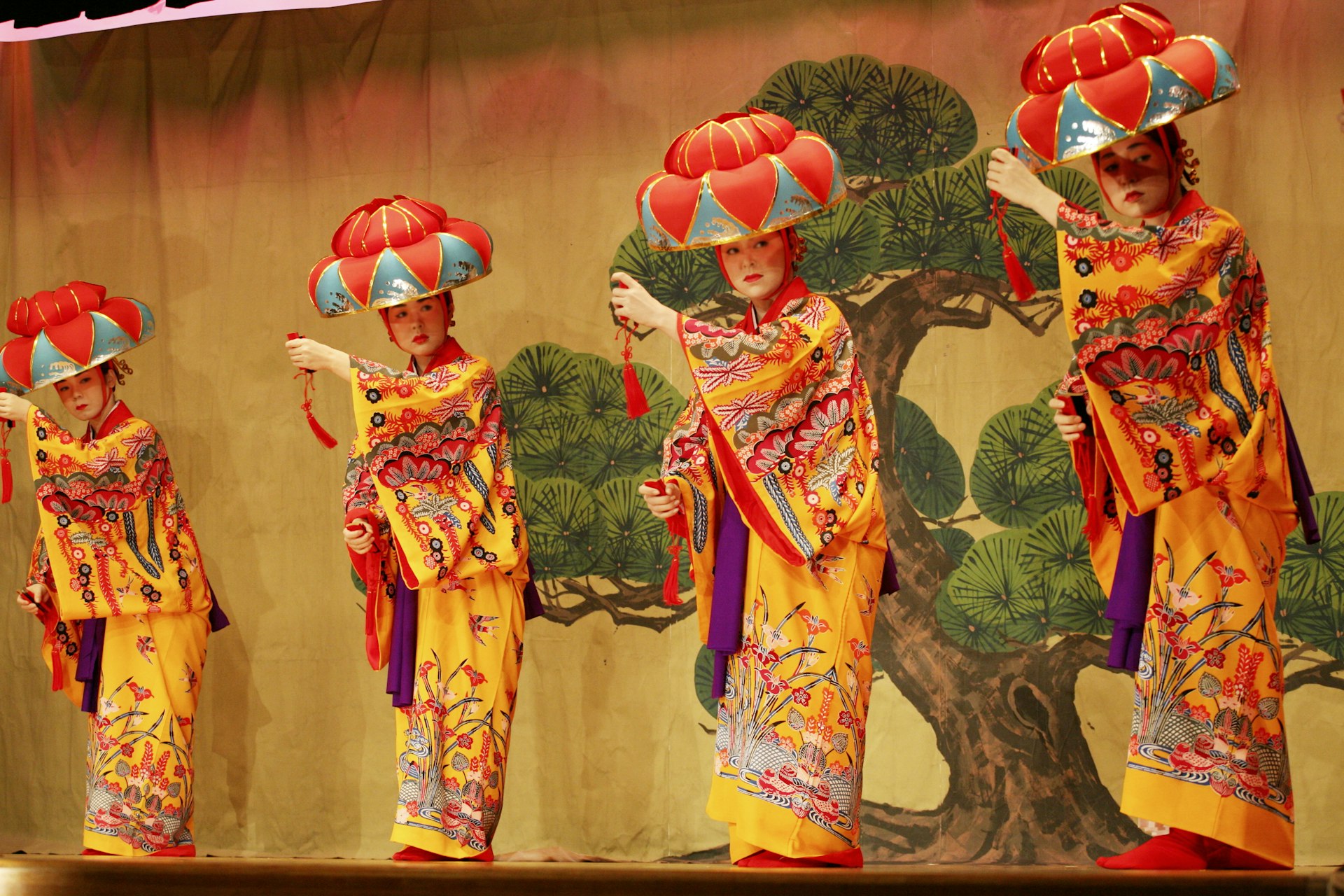
Okinawa cultural traditions
Okinawa, a popular sub-tropical getaway spanning more than 160 islands and 2,000 miles, has long been a draw for both domestic and foreign visitors alike for one reason in particular: it doesn’t feel like the rest of Japan.
Balmy weather and pristine beaches aside, this picture-perfect archipelago boasts a rich heritage of distinct performing art forms born out of the autonomous Ryūkyū Kingdom which ruled Okinawa for 450 years from the 15th to the 19th centuries and was further influenced by other cultures through trade.
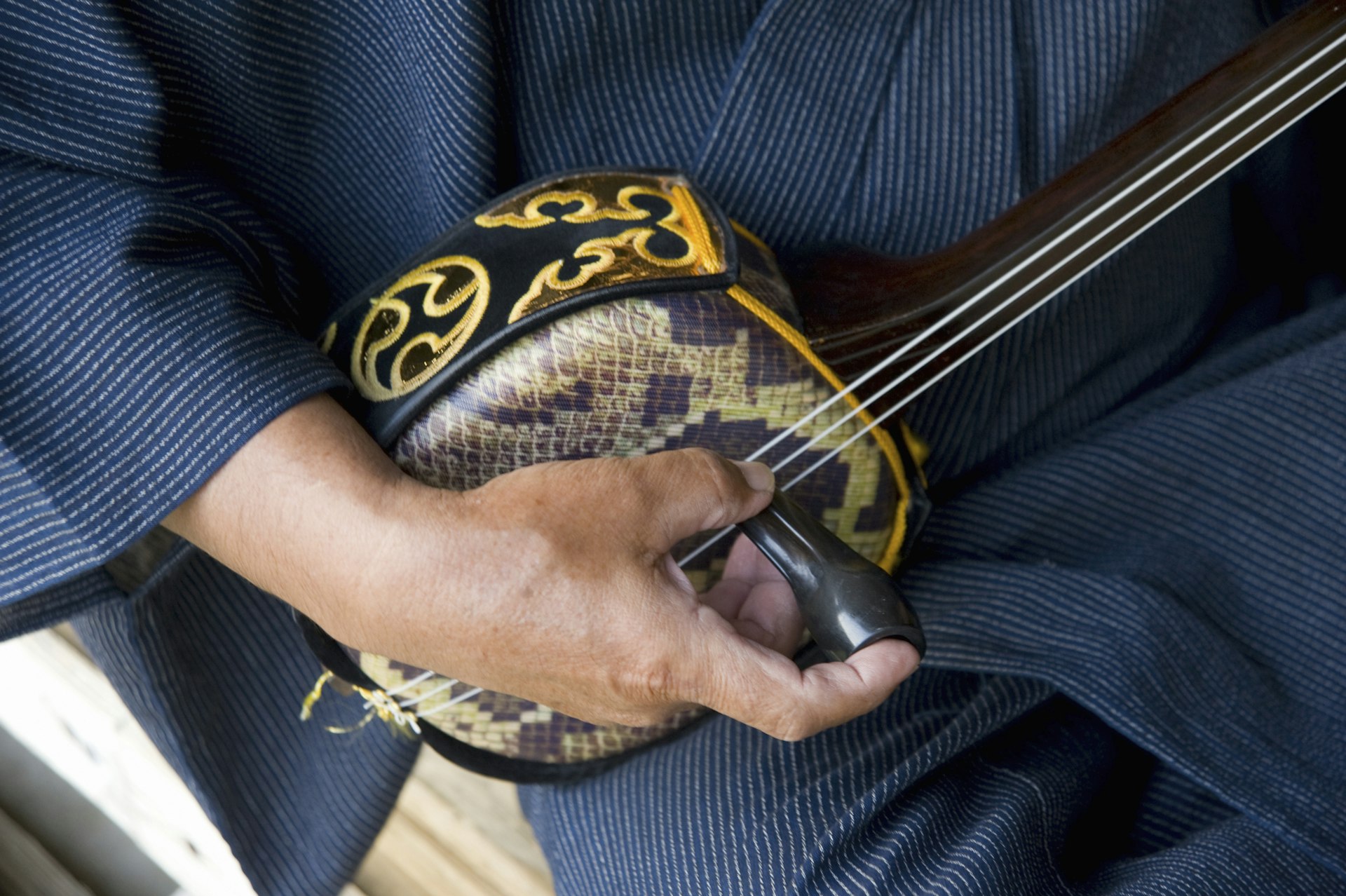
There are many performing arts to enjoy on a trip to this unique part of Japan, including the UNESCO Intangible Cultural Heritage-listed Kumiodori, a blend of spoken storytelling with classic Ryūkyūan music, song and dance in a refined stage art that was first created to entertain visiting envoys, and Ryūkyūan dance, a designated National Important Intangible Cultural Property that covers various traditional and creative Okinawan dances.
An instrument that features heavily in these performances is the sanshin . This Okinawan long-neck stringed instrument was used for entertainment in the royal court and has since become a mainstay of local folk songs.
A convenient place to take in a performance of Okinawa’s traditional arts is at the National Theatre Okinawa , which can pre-book tickets online in English.

Shiretoko National Park
From Japan’s far south to extreme north, Shiretoko National Park on Hokkaido’s northernmost promontory takes its name from the indigenous Ainu word for “Land’s End”.
This wild, pristine landscape and UNESCO World Natural Heritage site is home to dozens of land and marine mammals, such as brown bears (Ursus arctos yezoensis), spotted seals and orcas, as well as hundreds of bird species that find refuge in the dramatic cliffs, some up to 100m high, overlooking the Sea of Okhotsk.

The perfect destination for the adventure-seeking outdoor enthusiast, Shiretoko National Park offers drift ice walking on the west coast in winter, guided snowshoeing and hiking, picturesque waterfalls and lakes, and sightseeing and wildlife spotting cruises, including whale watching off the east coast and brown bear spotting along the rocky shoreline in one of the most densely populated habitats of brown bears in the world.
Intersperse your intrepid wanderings with visits to the peninsula’s plentiful hot springs. Kamuiwakka Hot Falls is a natural waterfall with hot spring water pools that increase in temperature the further you climb (be aware of falling rocks and pay attention to signage for areas that are off limits). For an end-of-day soak, Utoro Onsen is the largest onsen resort in Shiretoko with many accommodation options and open-air onsen with an ocean view.
Sponsored by Japan National Tourism Organization
As a travel entertainment and inspirational media outlet, we sometimes incorporate brand sponsors into our efforts. This activity is clearly labeled across our platforms.
This story was crafted collaboratively between Japan National Tourism Organization and Lonely Planet. Both parties provided research and curated content to produce this story. We disclose when information isn’t ours.
With sponsored content, both Lonely Planet and our brand partners have specific responsibilities:
Brand partner
Determines the concept, provides briefing, research material, and may provide feedback.
Lonely Planet
We provide expertise, firsthand insights, and verify with third-party sources when needed.
Explore related stories

May 17, 2024 • 14 min read
All around the world, flowers add a magical new layer to our favorite travel destinations. Here are the best places to see the most beautiful blooms.

May 1, 2024 • 9 min read

Apr 20, 2024 • 9 min read

Apr 14, 2024 • 6 min read

Apr 2, 2024 • 10 min read
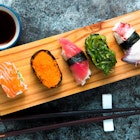
Apr 1, 2024 • 10 min read

Mar 26, 2024 • 8 min read

Mar 25, 2024 • 6 min read

Mar 25, 2024 • 10 min read

IMAGES
VIDEO
COMMENTS
8. Chūbu-Sangaku National Park and the Japanese Alps. Chūbu-Sangaku National Park and the Japanese Alps. Japan boasts a number of outstanding areas of natural beauty, many of them designated as national parks or, in some cases, UNESCO World Heritage Sites.
Nikko. #3 in Best Places to Visit in Japan. Nikko is the place to go to see lavish architecture surrounded by nature. Head to Nikko National Park, one of Japan's oldest national parks, to enjoy an ...
14. Naoshima, the Art Island. Naoshima, located in the Seto Inland Sea which is also known as the art island, is getting popular among the tourists. With beautiful ocean views and colorful artworks displayed open-air around the island, Naoshima became the center of Japan's showcase of contemporary arts.
Here's our pick of the 10 best places to visit in Japan. 1. Tokyo. Best for contemporary culture. Tokyo is a city forever reaching into the future, pushing the boundaries of what's possible on densely populated, earthquake-prone land, and building ever taller, sleeker structures. It's Japan's top spot for contemporary art and architecture ...
1. Golden Pavilion, Kyoto. The Golden Pavilion is one of Japan's most popular tourist attractions, and it is not difficult to see why. Also known as Kinkaku-ji, this Zen Buddhist temple is situated in Kyoto. It is highly regarded for its stunning architecture.
2023. 4. Hiroshima Peace Memorial Museum. 7,137. Speciality Museums. Museum dedicated to the human impact of nuclear weapons, presenting personal artifacts and survivor stories in a thought-provoking exhibition that advocates for peace and non-proliferation. See ways to experience (32) 2023. 5.
5) Hakone. As Okinawa is known for its glorious beaches, the small town of Hakone is known for the natural beauty of its mountainous terrain, waterways, and hot springs. By far the most prominent and well-known attraction is Lake Ashi that makes Hakone one of the most fun places to visit in Japan.
Japan's crown jewel and arguably the most beautiful place in the country, Mt Fuji is a must for any visitor. There are plenty of places to see the grand mountain, but the views from Arakurayama ...
Local tip: A teishoku (set menu) lets you try a bit of everything (rice and miso soup included) and is a popular choice for lunch or a casual dinner. 2. Chase cherry blossoms and festivals. Japan loves a festival. There are plenty of matsuri (festivals) to celebrate snow, summer, music or any subject you can dream up.
Kinkakuji Temple. One of Kyoto's most famous attractions, this temple was originally built in 1397 as a residence for shogun Ashikaga Yoshimitsu. The structure was completely covered in gold leaf, earning it the name…. 3. Kiyomizu-dera Temple. This most-visited temple in Kyoto was built to honor Kannon, the goddess of mercy.
4. Kinkaku-ji (Kyoto) Kinkaku-ji, or the Temple of the Golden Pavilion, is perhaps one of the most well-known temples in the world. It is a Zen Buddhist temple that is mostly covered in gold leaf and is surrounded by a garden from the Muromachi era, which is when Japanese garden designs flourished.
Aladimirzakharov/Getty. Off the coast of Hiroshima, Miyajima Island has long been regarded as one of the most scenic spots in Japan. It's often associated with images of the torii gate of the sixth century Itsukushima Shrine; during low tide, you can walk up to the gate, but when the tide is high, it appears to float.
The park opened in 1880 and is one of Japan's most popular sightseeing destinations, with over 13 million visitors from Japan and overseas each year. Vibrant landscapes spread throughout the expansive 502 hectare park grounds, and it is also the site of historical structures like Todaiji Temple and Kasuga Taisha Shrine.
Japan is a big and beautiful country to visit with so much top tourist attractions to offer. Tokyo, Osaka, and Kyoto are three major cities that highlight Japan and are places to consider visiting with tourist sites varying from history, culture, nature, to shopping.
The Lee Ufan Museum - 1,030 yen (opening hours: 10:00 - last entry 17:30) The Chichu Art Museum - 2,060 yen (opening hours: 10:00 - last entry 17:00) I Luv Yu - 510 yen. 4. Osaka Castle. Built in 1586 by famous warrior and politician, Toyotomi Hideyoshi, Osaka Castle was once the largest fortress in the country.
Sightseeing guide for Japan. Mount Fuji The country's most iconic landmark. •• Alpine Route Spectacular route through the Northern Alps. •• Shirakawago & Gokayama Mountainous region, known for its farmhouses. •• Kamikochi Popular mountain resort in the Japanese Alps. •• Kiso Valley Valley with nicely preserved post towns. •• Takayama Preserves one of Japan's nicest old towns.
Lake Kussharo, Hokkaido. Hokkaido, Japan. 15 Best Hotels in Savannah. CNT Editors. How Music Helps Us Form Travel Memories. The 10 Best Places to Travel in August. Caitlin Morton. Pinterest.
Arita: The best place to visit in Japan for porcelain. Kamakura: One of the most spiritual places to visit. Osaka: One of the best places in Japan for foodies. Hiroshima: One of the humbling places to go in Japan. Kanazawa: An alternative capital of culture. Hakone (Mount Fuji): One of the best for onsen.
11. Ishigaki. Located west of Okinawa, Ishigaki is Japan's premier beach destination and makes a good base to explore the other islands in the Yaeyama archipelago. Blessed with Japan's best beaches, it is particularly popular with families since the beaches at Fusaki and Maezato are net-protected.
Himeji Castle is Japan's most famous castle and one of the best surviving examples of feudal Edo architecture. It was one of the country's first Unesco World Heritage Sites, and has a storied past dating back to the 14th century, keeping a watchful eye over its namesake city. 6. Mount Fuji. Hill Station.
Kyoto is one of the top Japan tourist spots, so try to visit the popular temples early in the morning as they do get crowded. In Kyoto don't miss: Wandering through the red torii gates of Fushimi Inari shrine. Drinking matcha in a traditional tea ceremony. We loved Tea Ceremony Ju-An at Jotokuji Temple.
Nihon Minka-en Japan Open-air Folk House Museum. Though only 20 minutes by train from central Tokyo, the Nihon Minka-En Japan Open-Air Folk House Museum, located in a suburb of neighboring ...
3. Enjoy Nature at Ueno Park and Ueno Zoo Ueno Park and Ueno Zoo . Highlights: A 212-acre park home to ponds, historic shrines, and the Ueno Zoo. A paradise-like oasis of green in the heart of busy Tokyo, Ueno Park (Ueno Kōen) is the city's largest green space and one of its most popular tourist attractions. In addition to its lovely grounds, the park also boasts numerous temples and museums ...
Tokyo tourist attractions. Explore Tokyo's historical sites, romantic places and some of the other unique places that make this city so special. Check out our Tokyo tourism guide, complete to find our recommendations for famous places and must-visit locations. From historical sites to the Tokyo of the future, there is lots to see and do.
2,250. Japan. A land where natural splendours and timeless traditions meet neon sci-fi cities and a frenetic buzz, Japan invites discovery at every turn. Be inspired by authentic experiences, invigorating nature breaks and offbeat adventures doubling as refreshing escapes. Once you're tapped out exploring, relive the day's highlights in a ...
As Japan's capital and the world's most populous metropolis, Tokyo offers tradition and innovation, and unlimited opportunities to eat, shop and explore. Tokyo is located on Tokyo Bay in the Kanto region of Honshu, Japan's largest island. The closest airport airports are Haneda officially known as Tokyo International Airport, and Narita ...
Staying in a Ryokan and Relaxation at Japanese Onsen. Stepping into a ryokan feels like you have truly arrived in Japan. The welcoming smell of tatami, the shuffle of slippers down the halls, and traditional yukata robes to look the part. If you want quintessential Japan all in one package, a stay at a ryokan is hard to beat.
Saudi Arabia's Red Sea has both untouched desert and vibrant coral reefs—both of which will be part of ambitious sustainable tourism development in the destination.Sixteen hotels are already ...